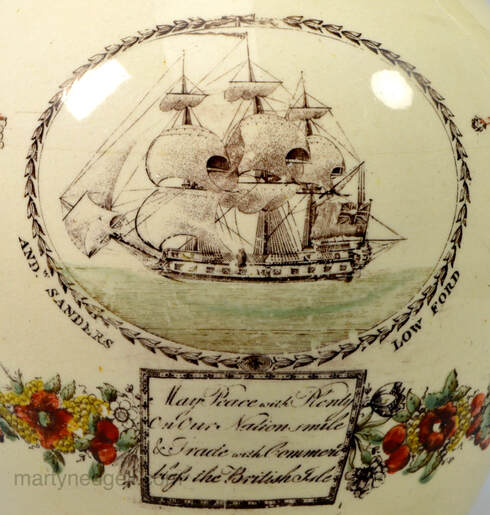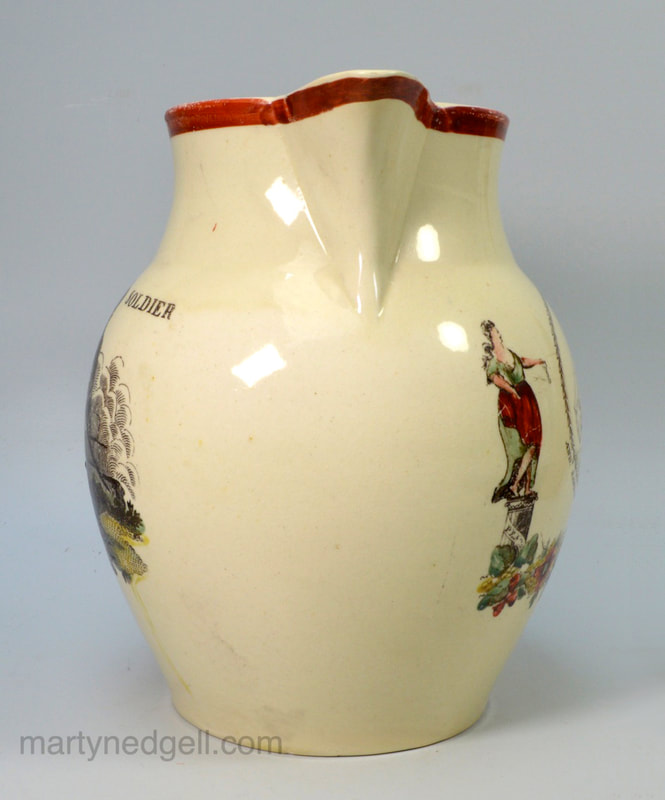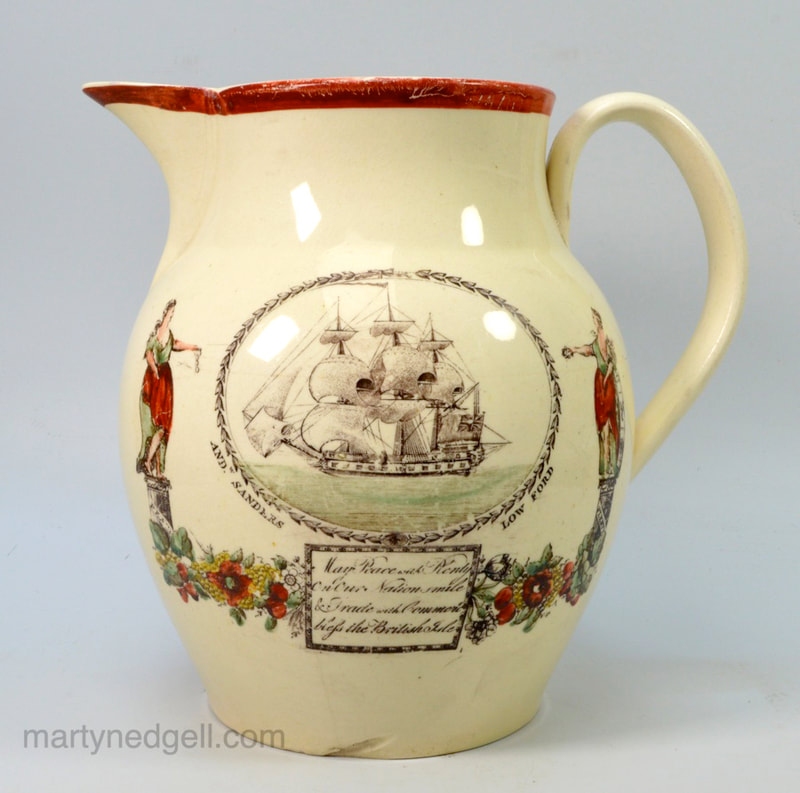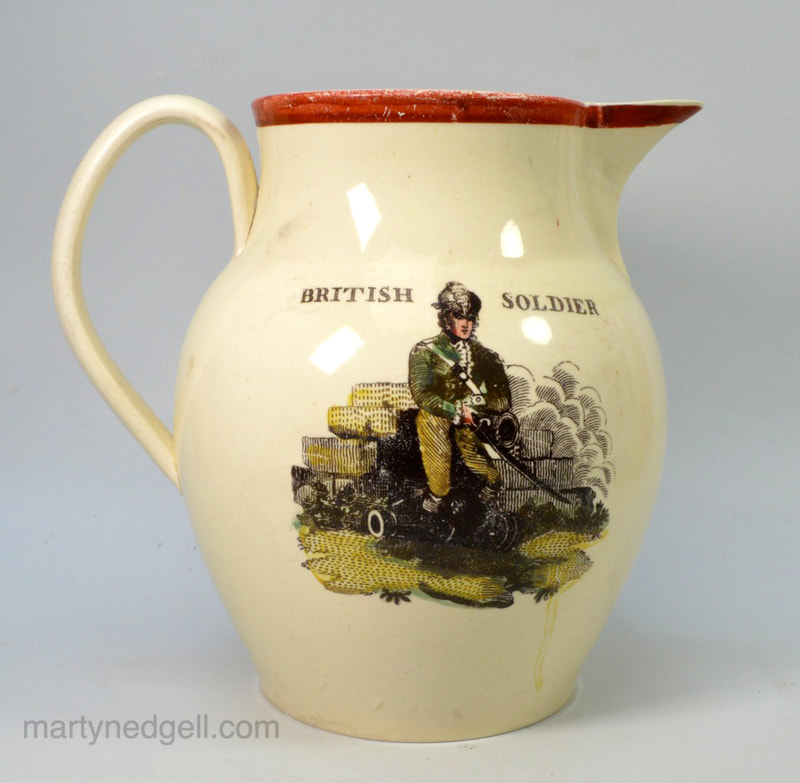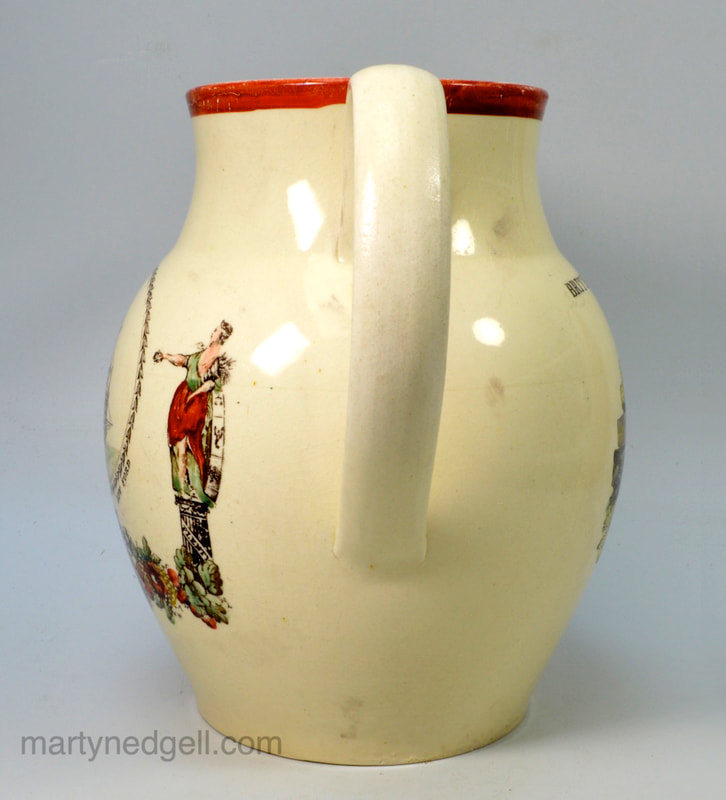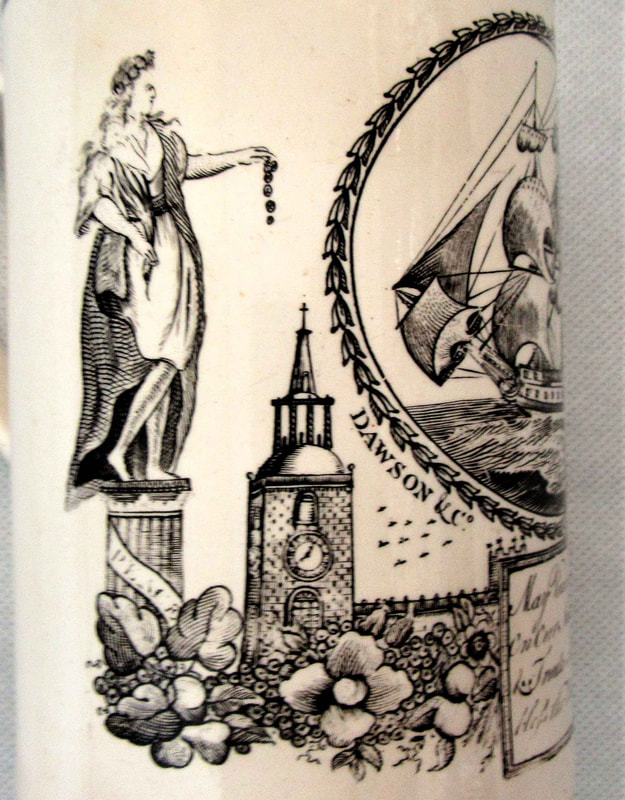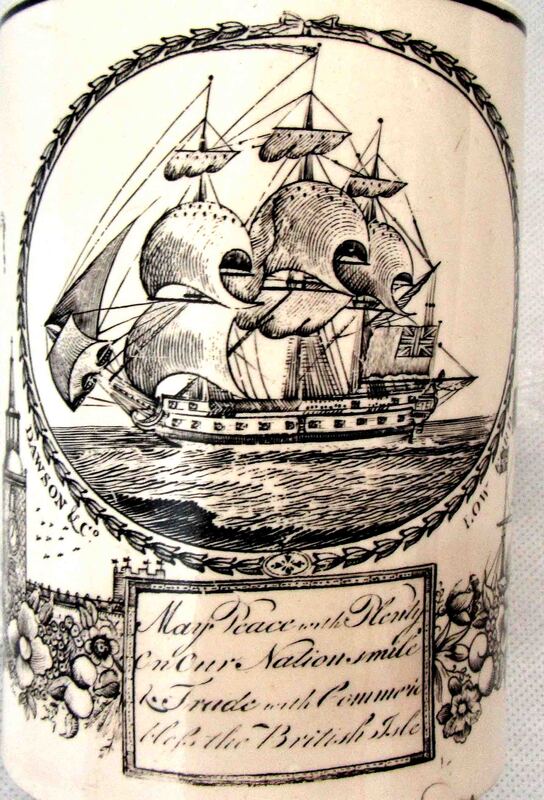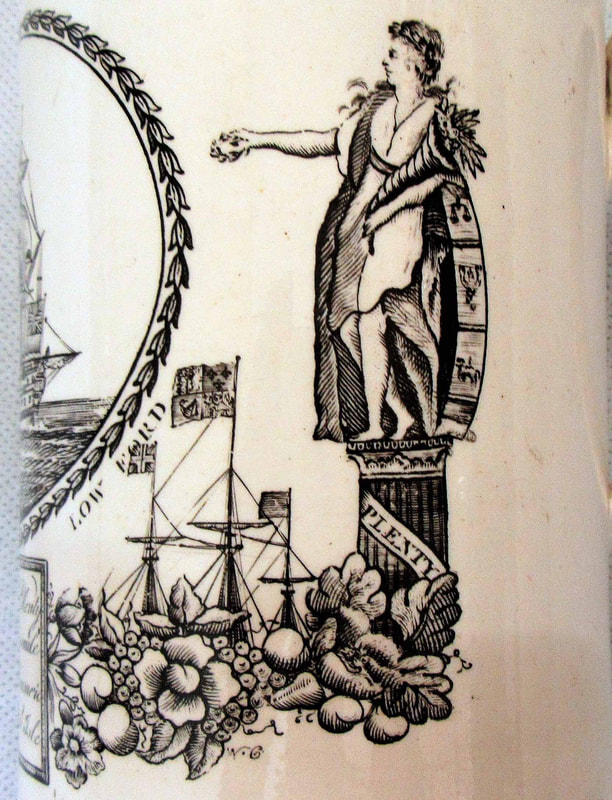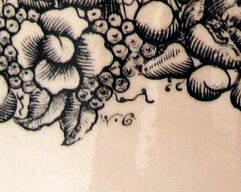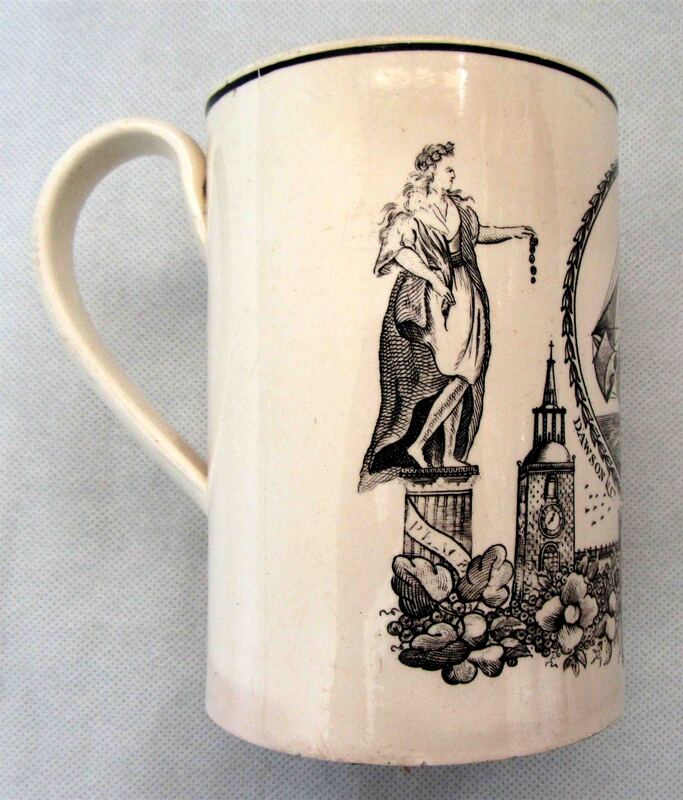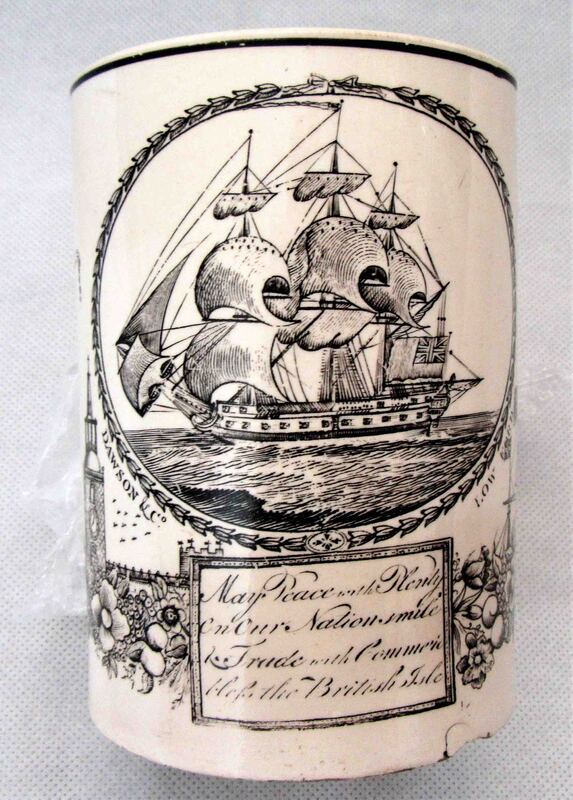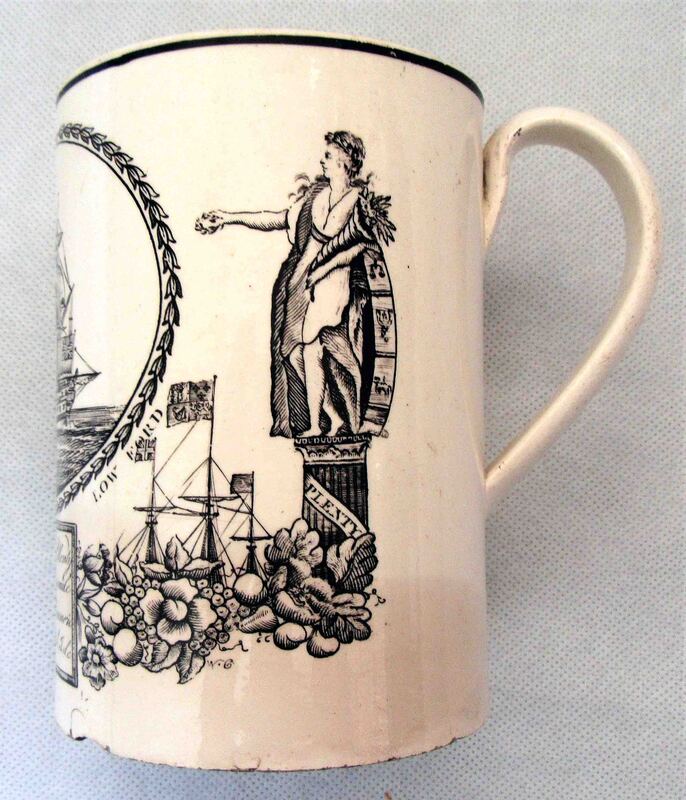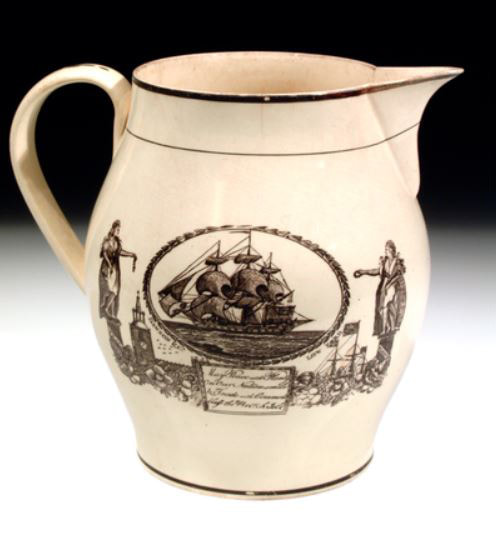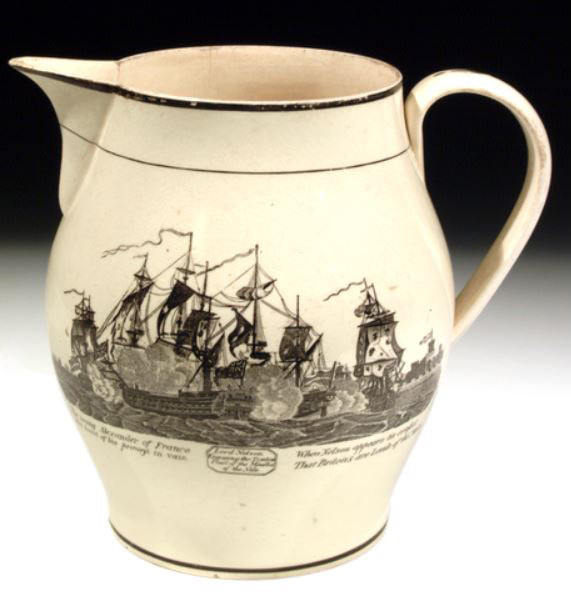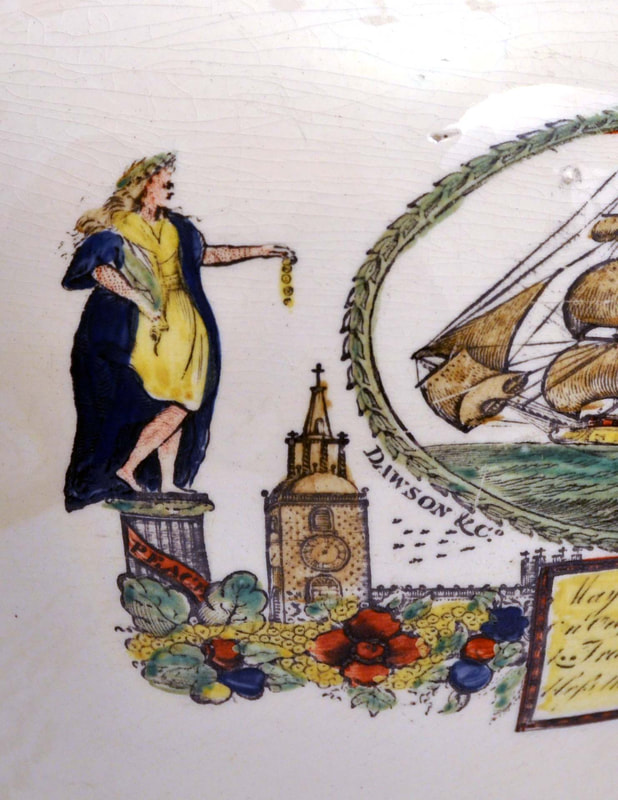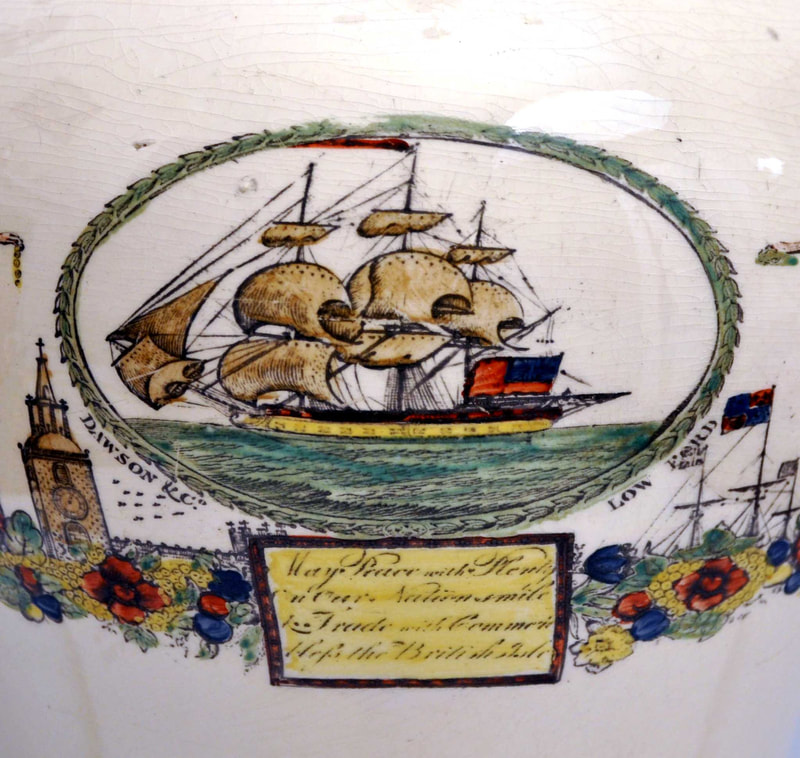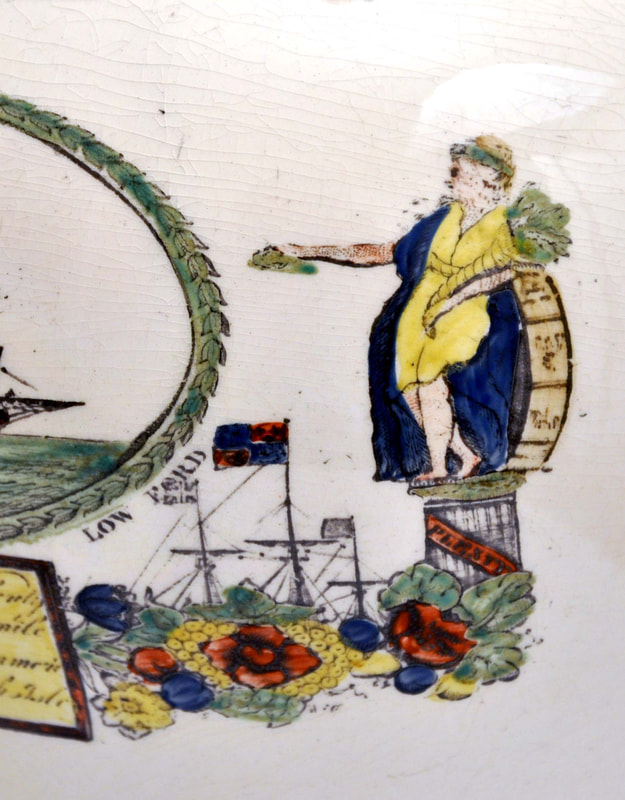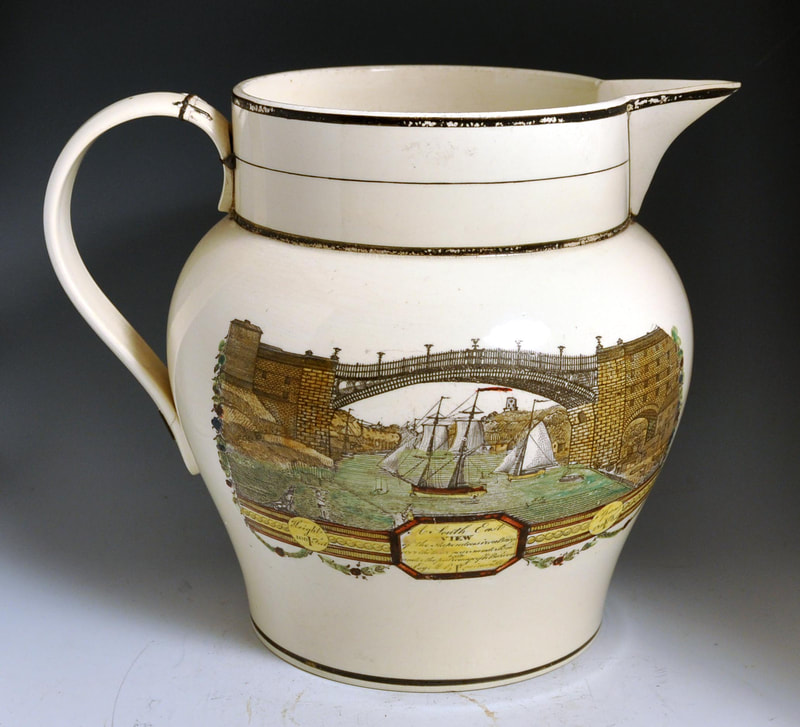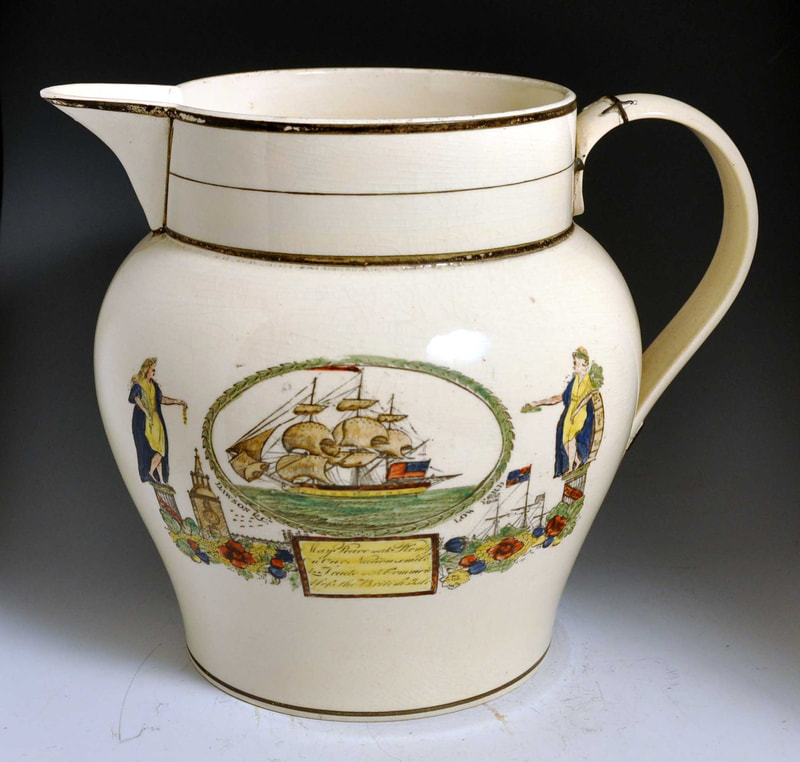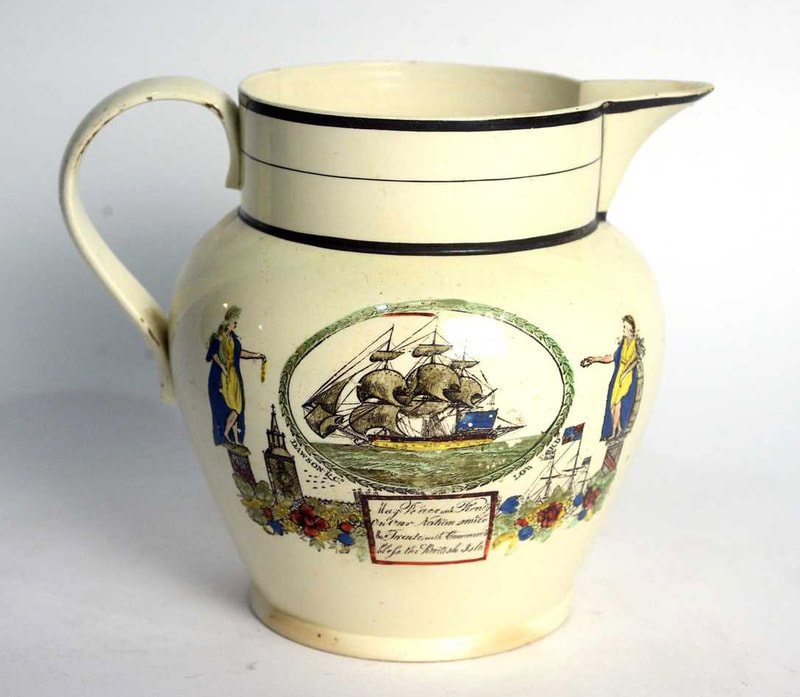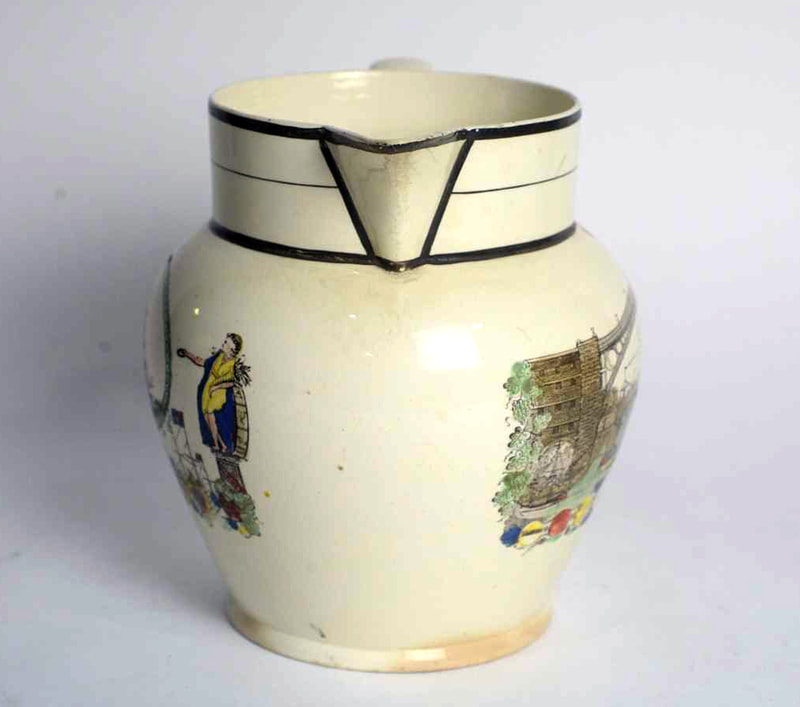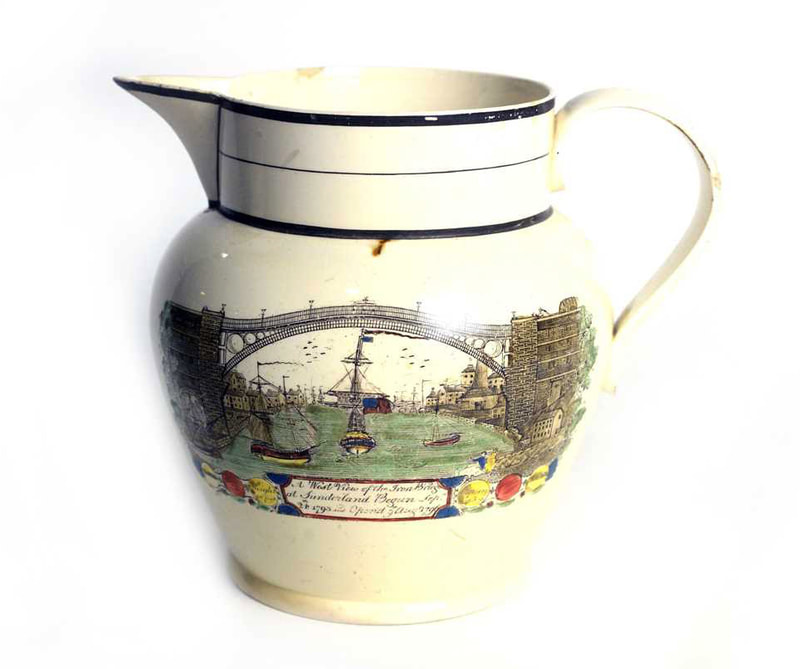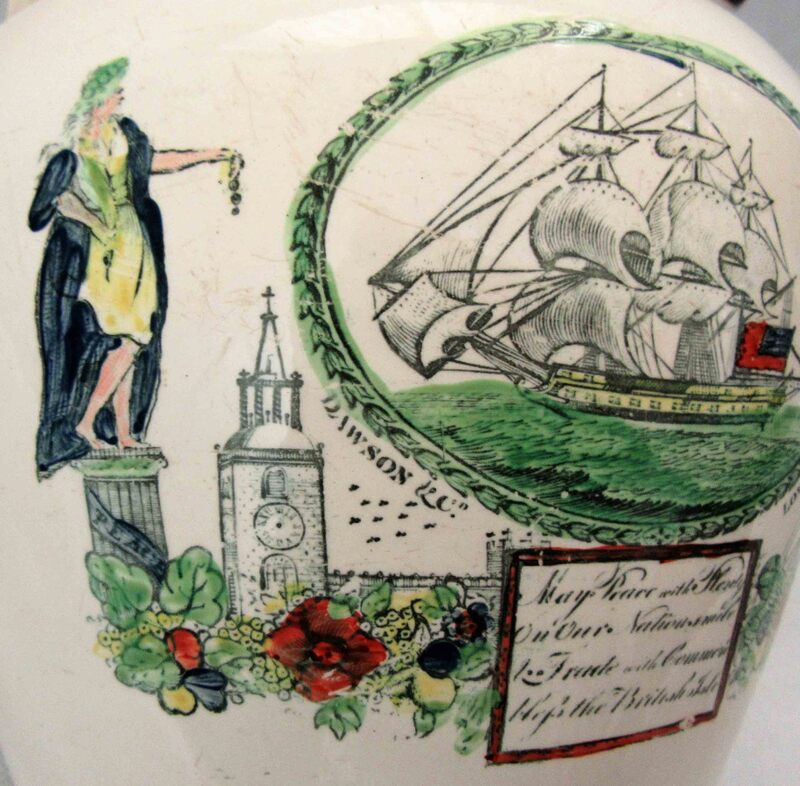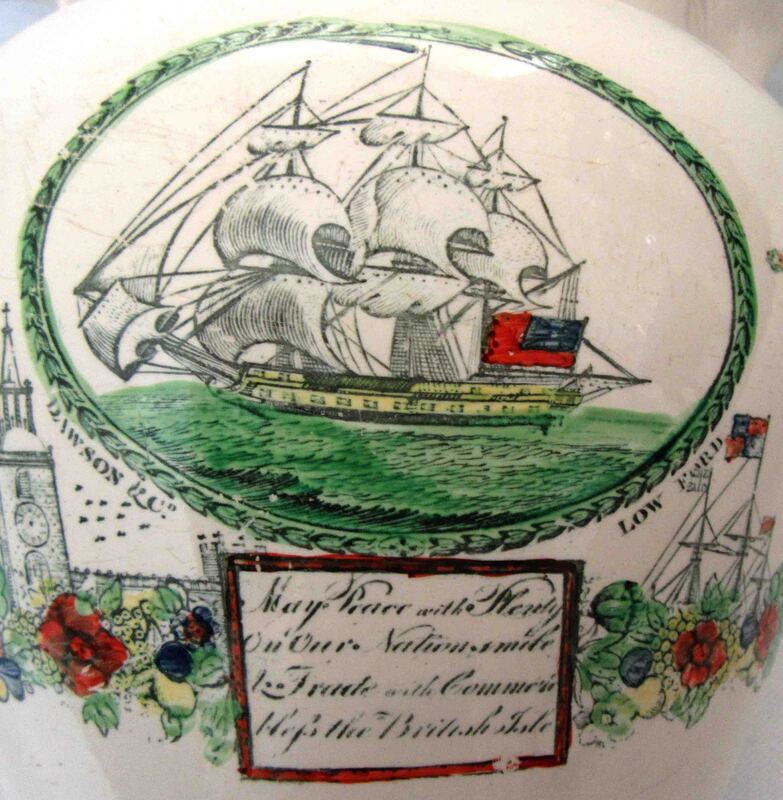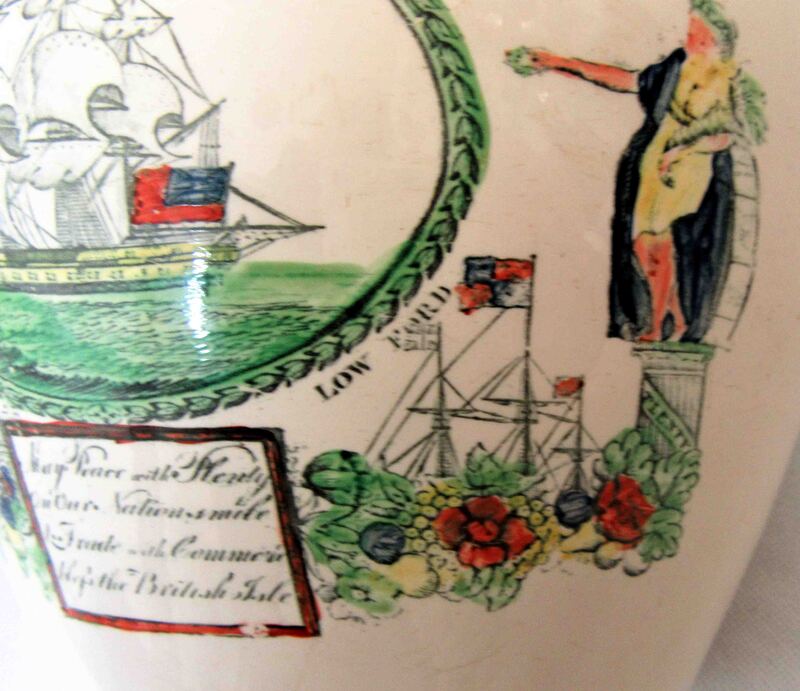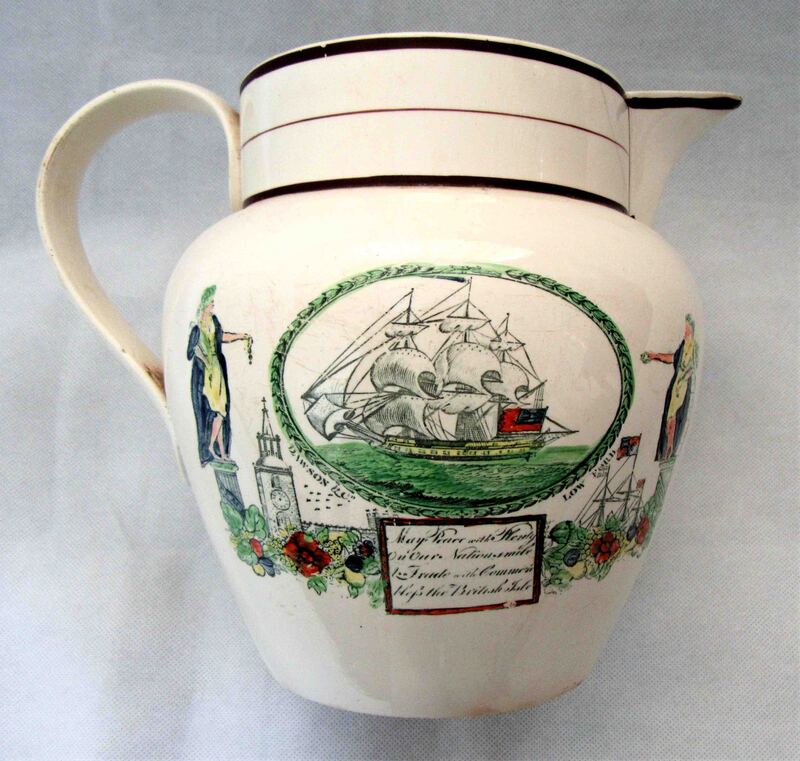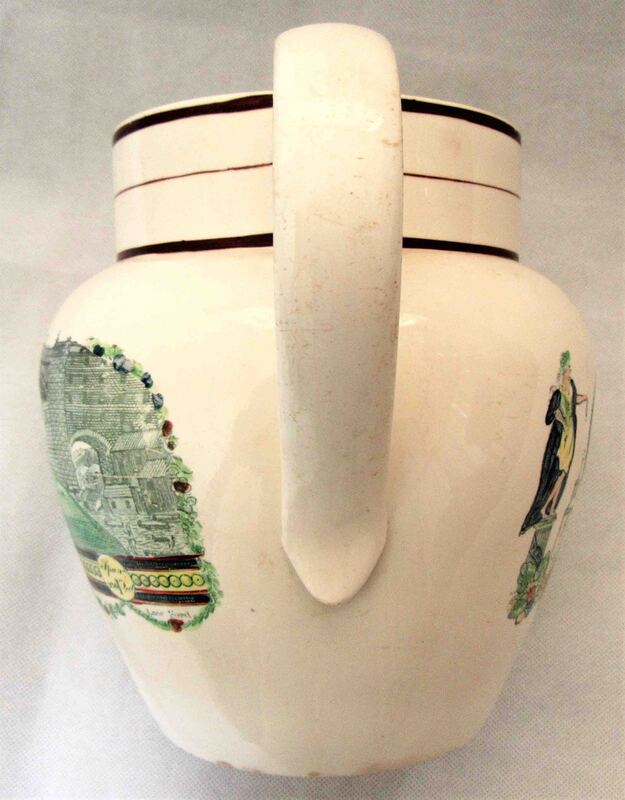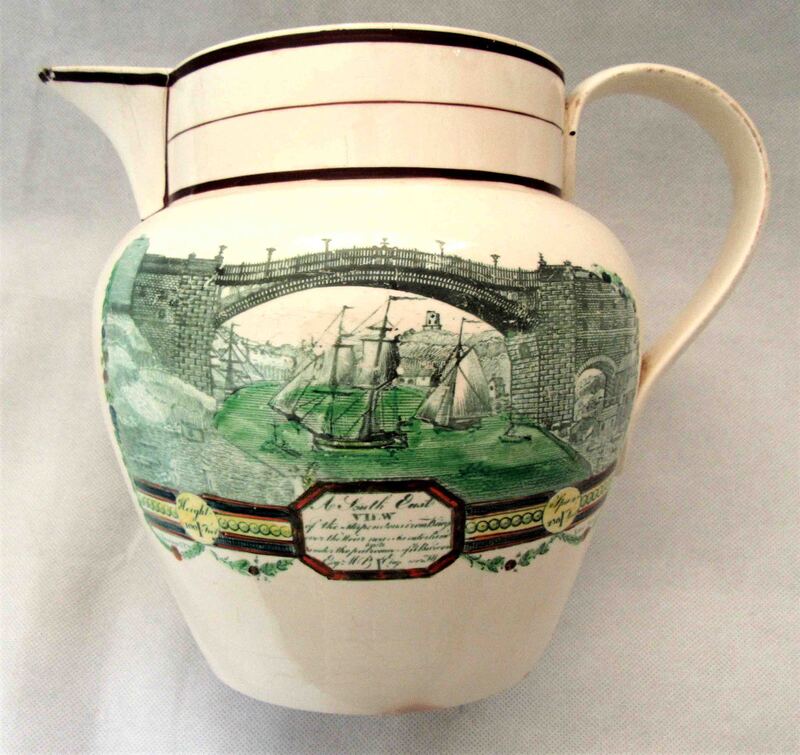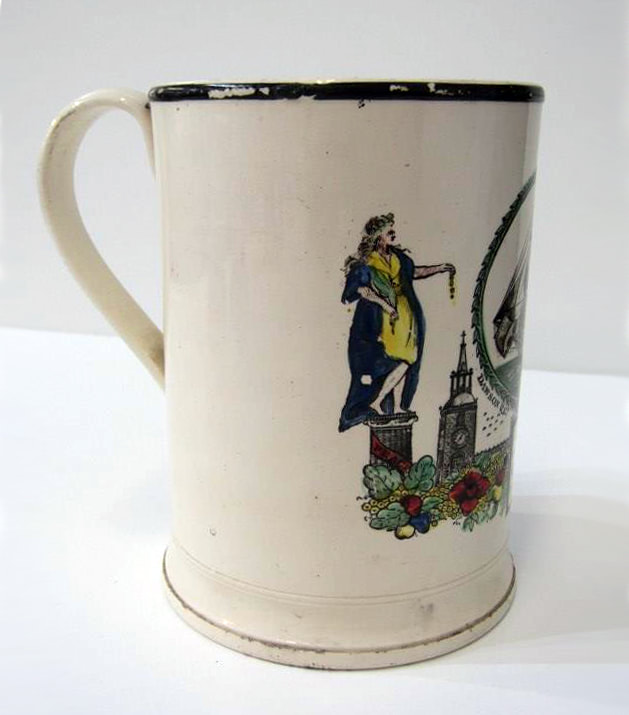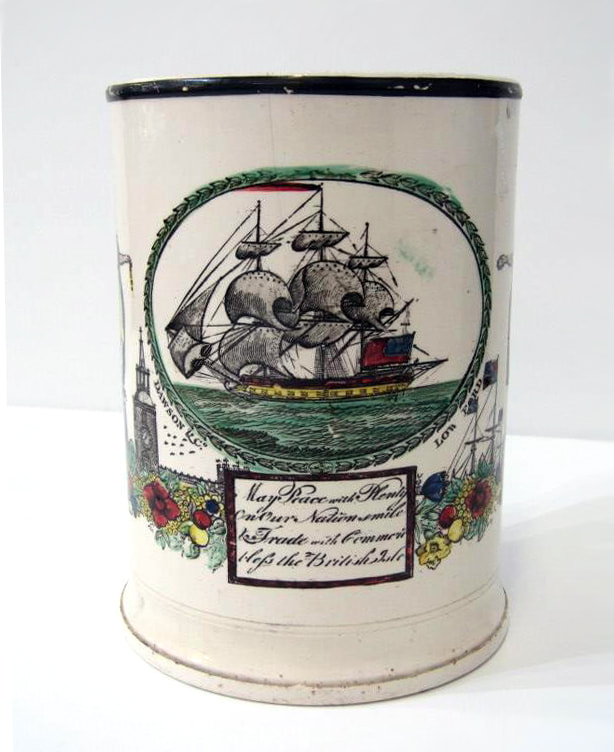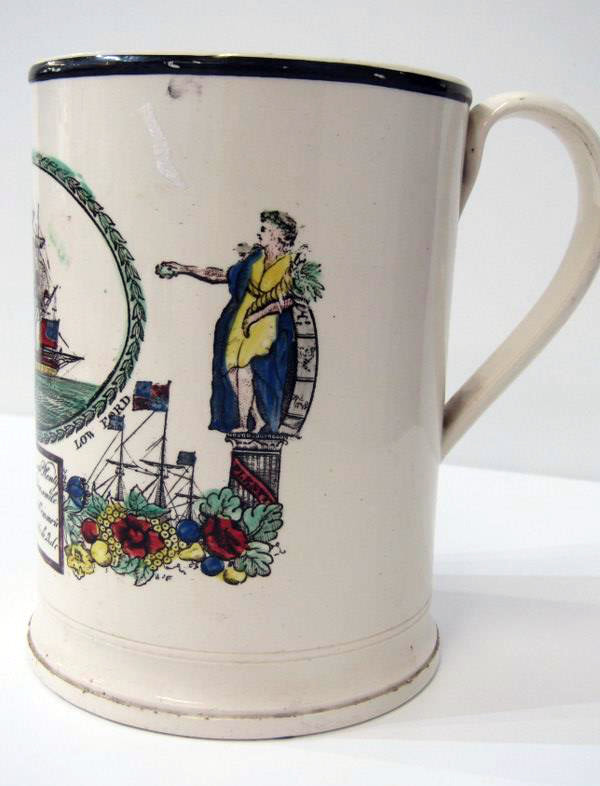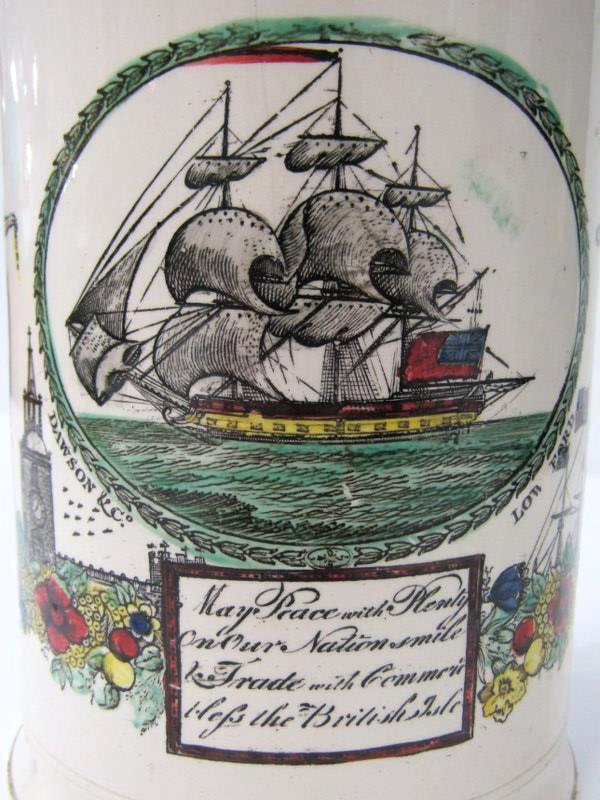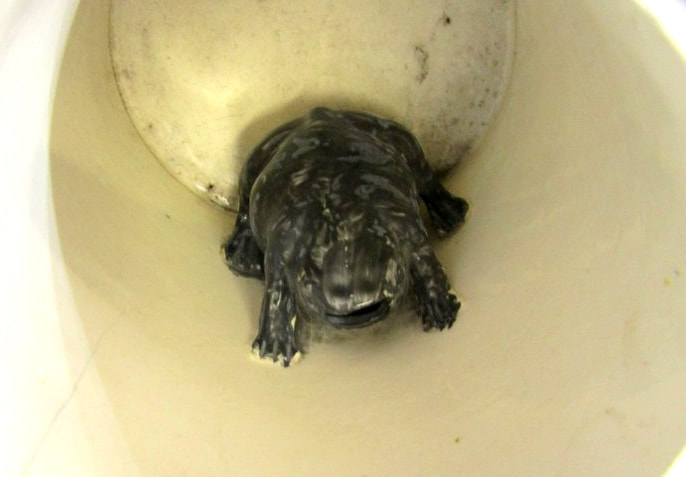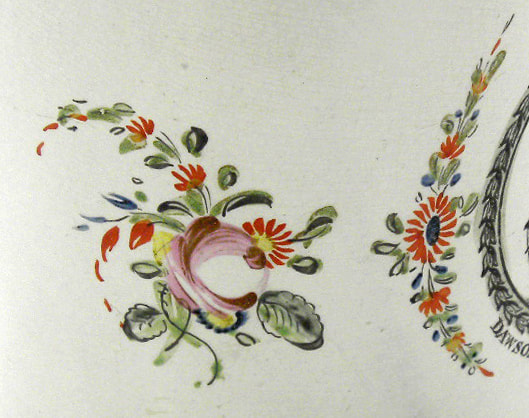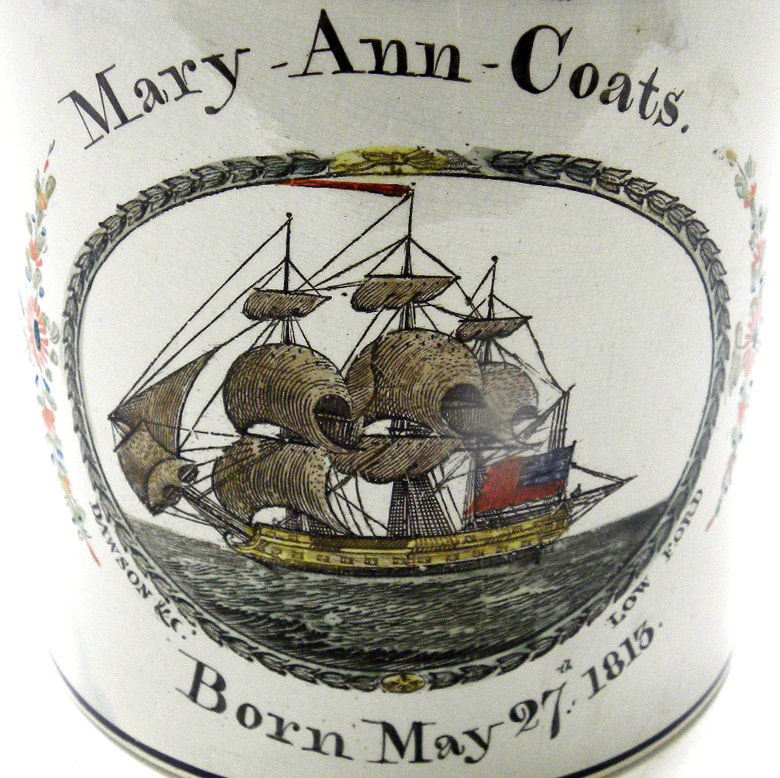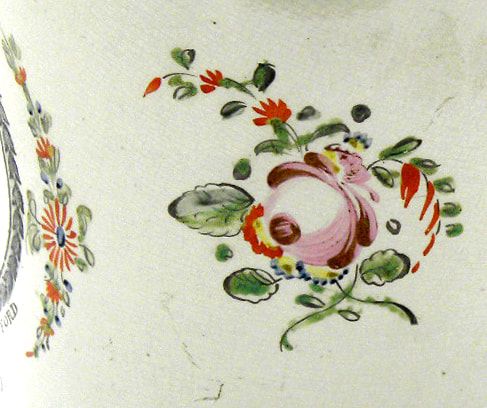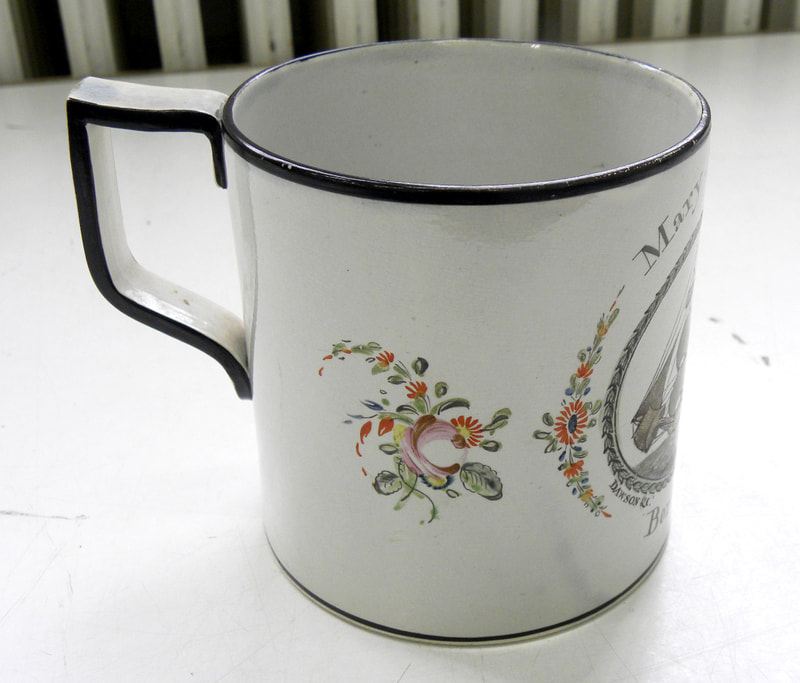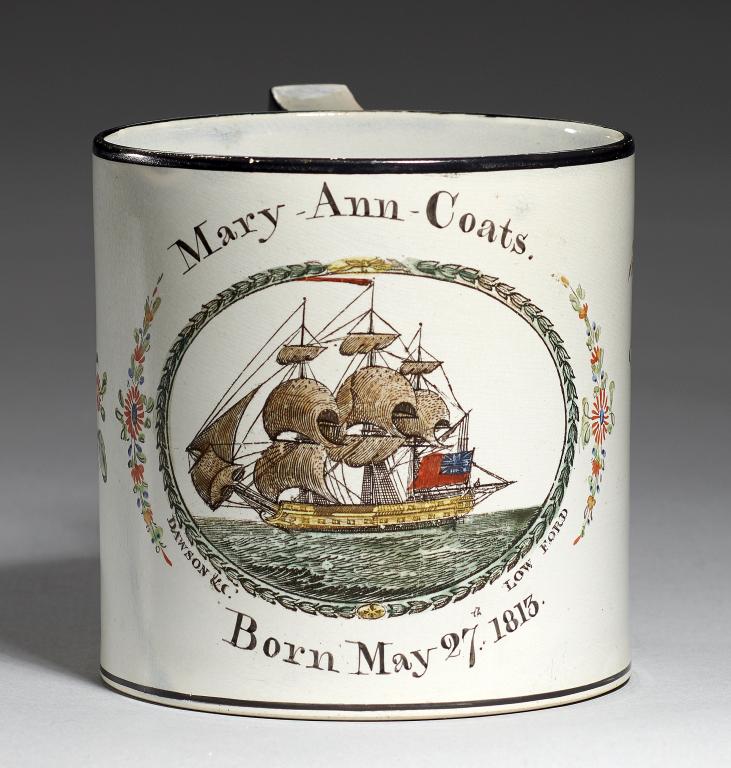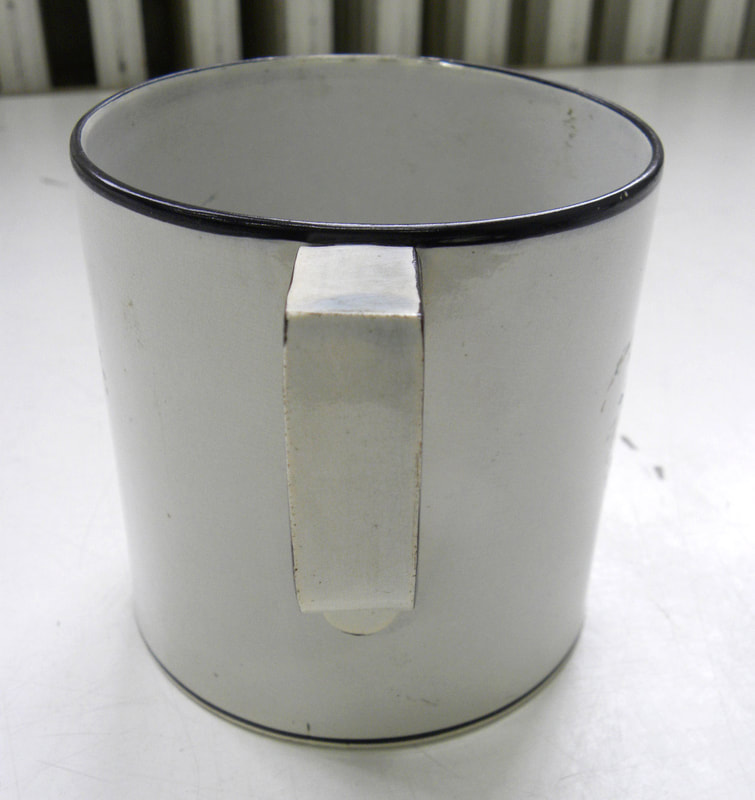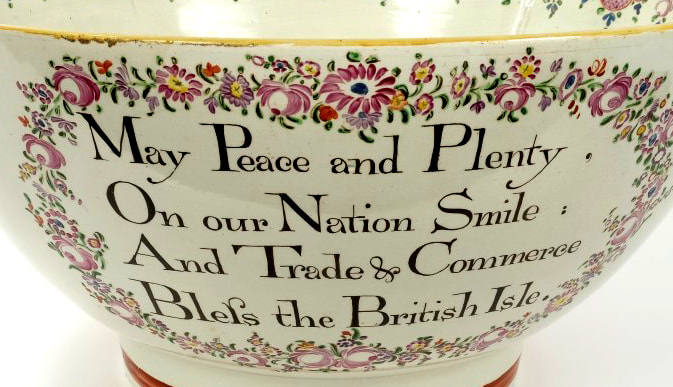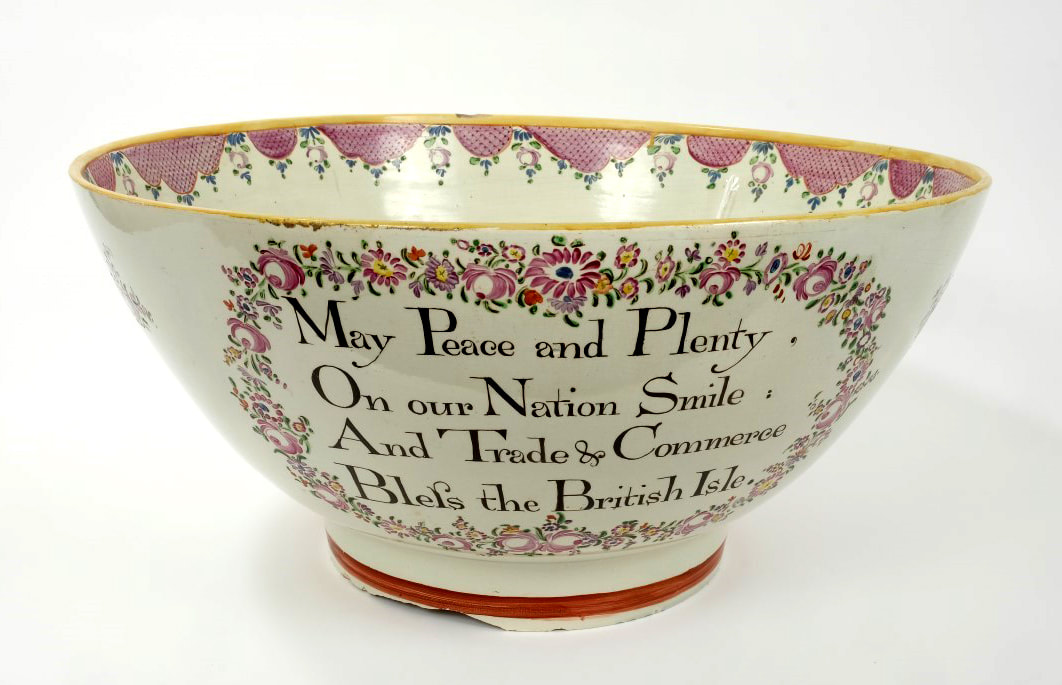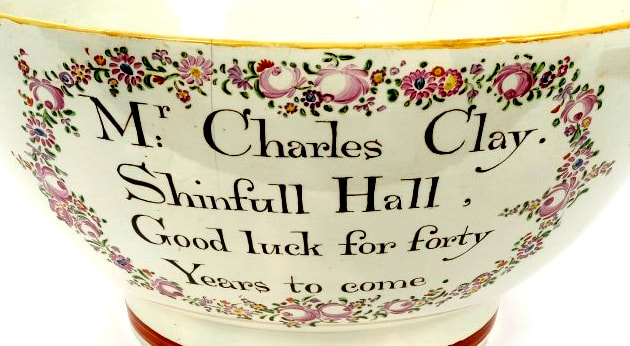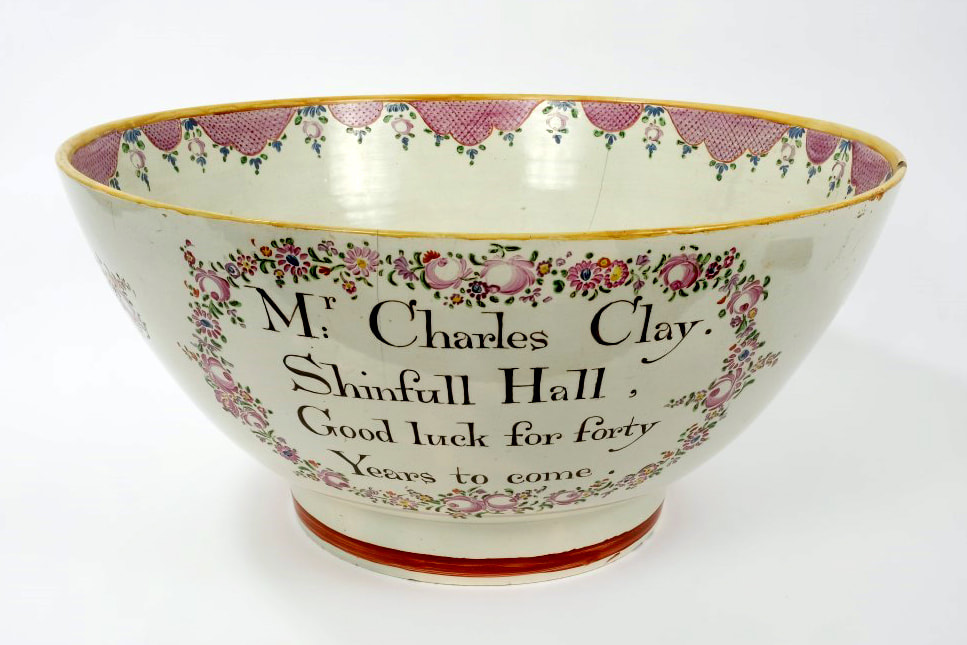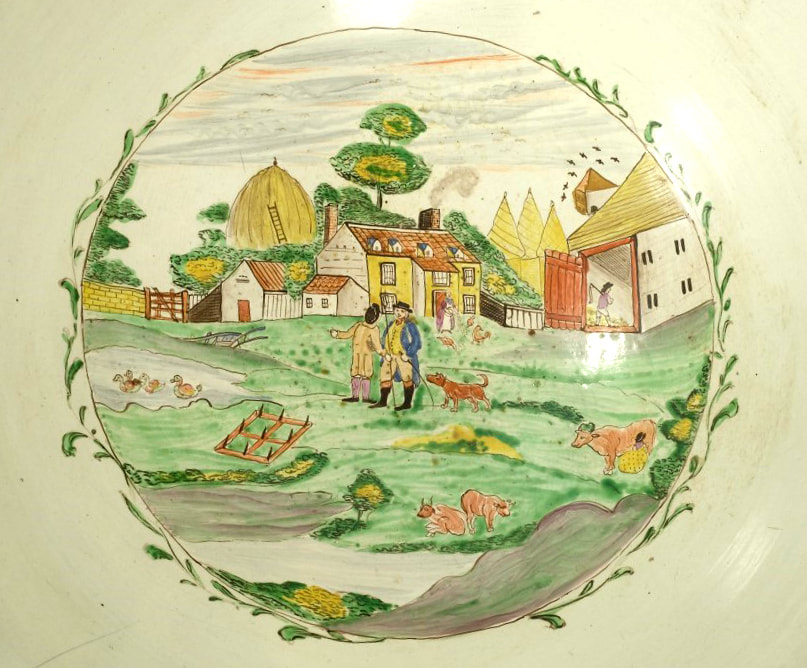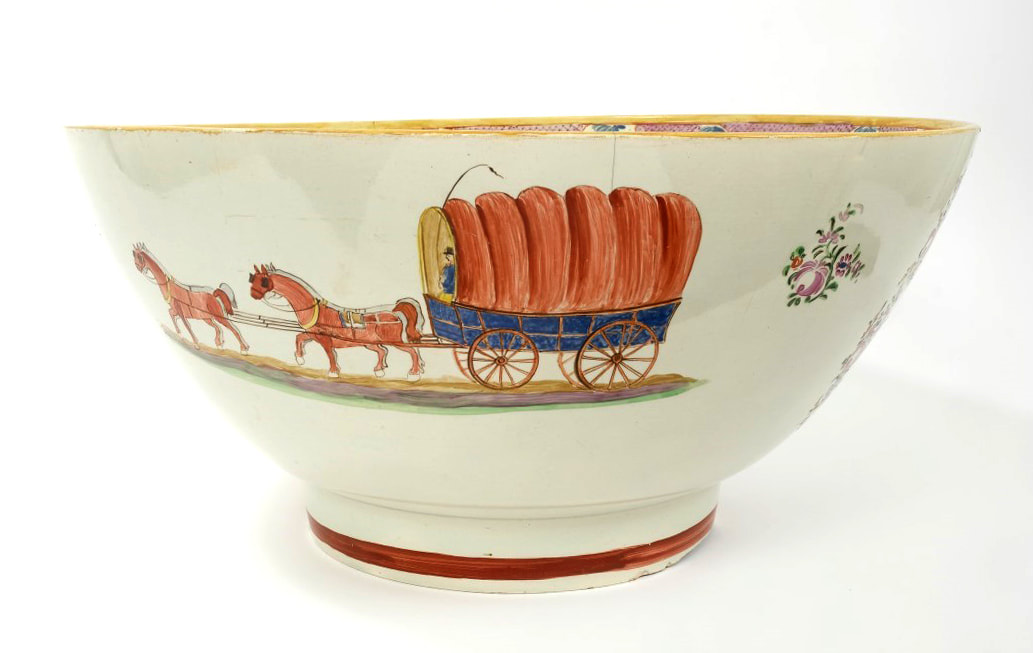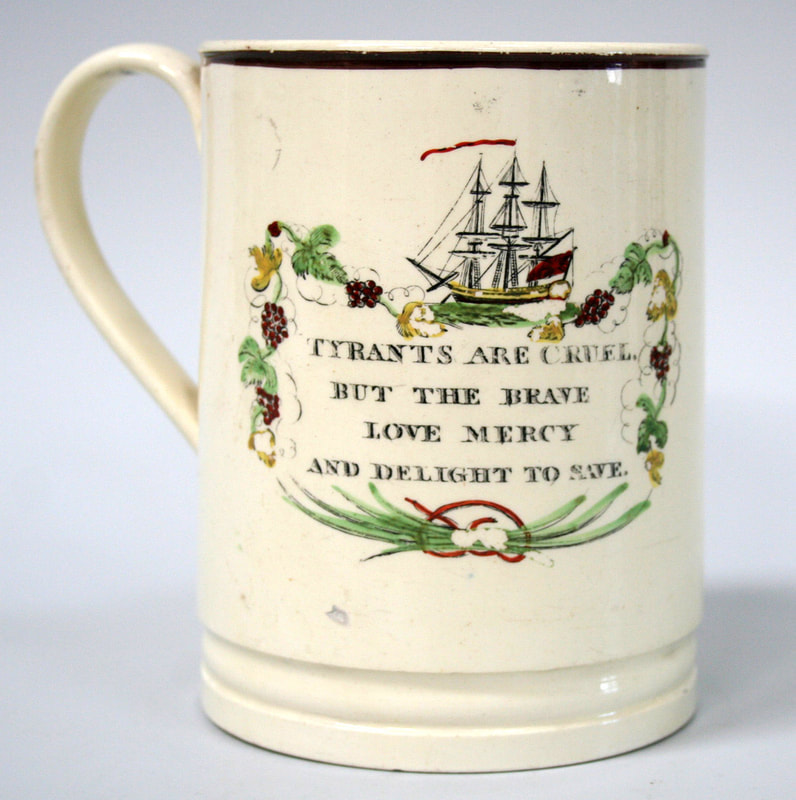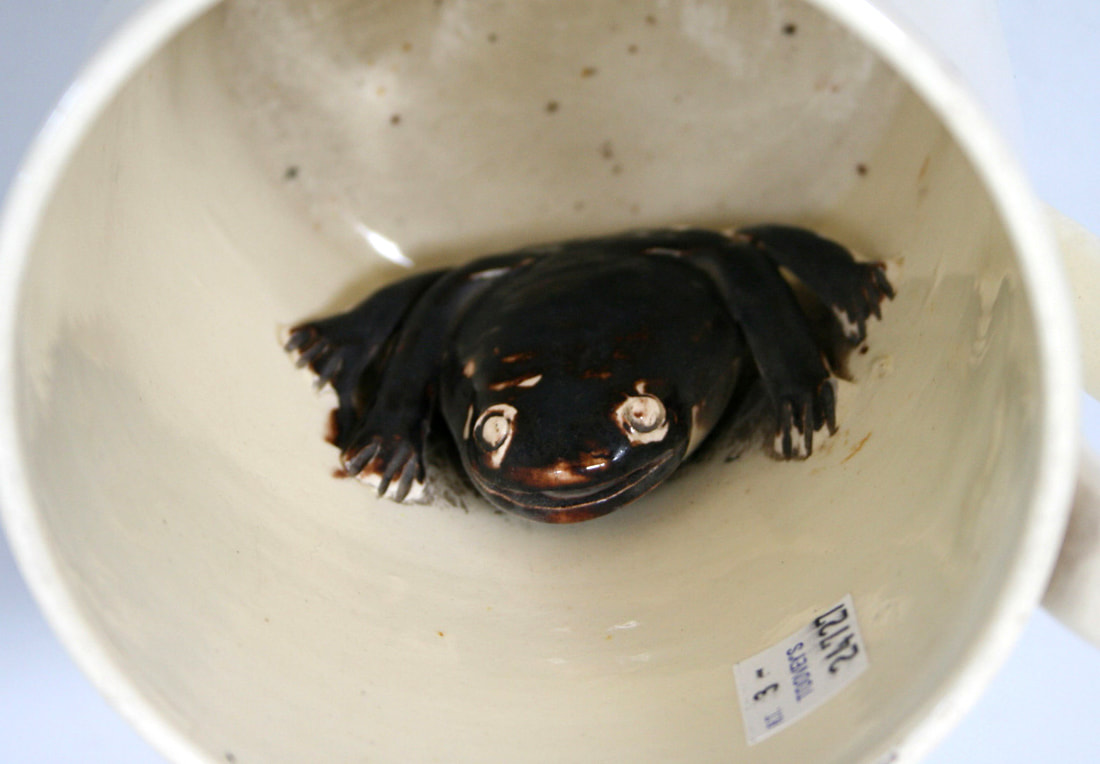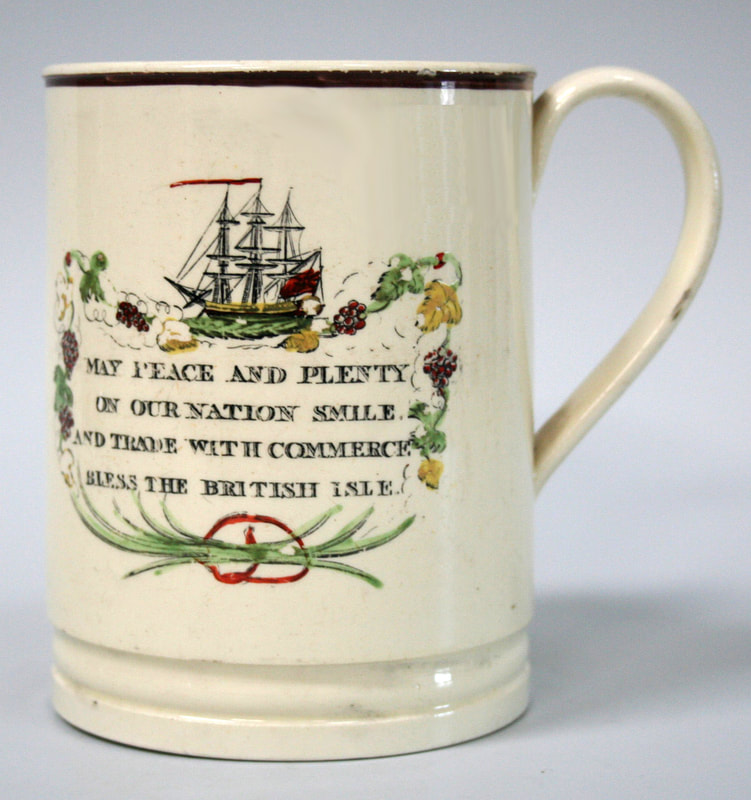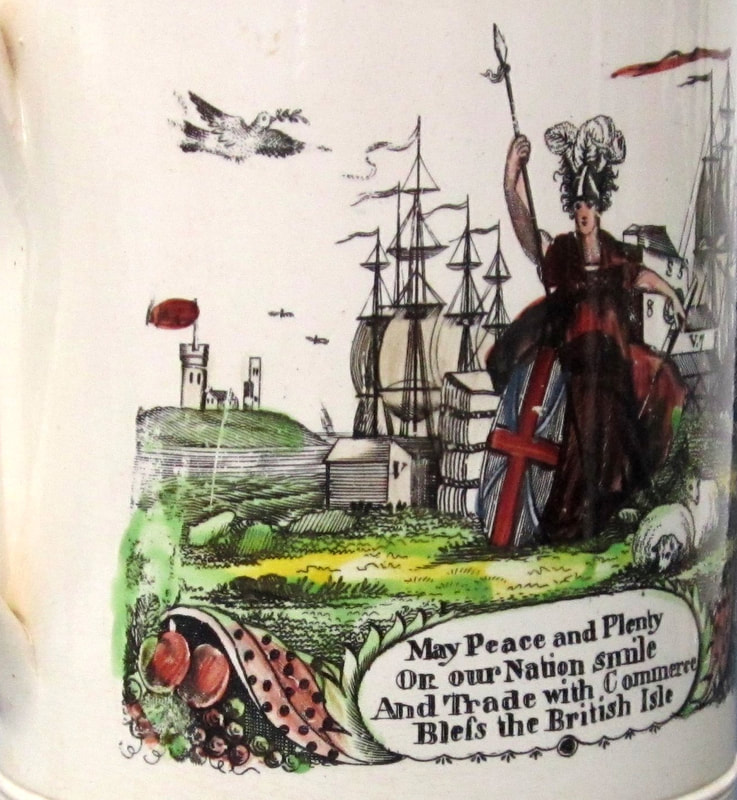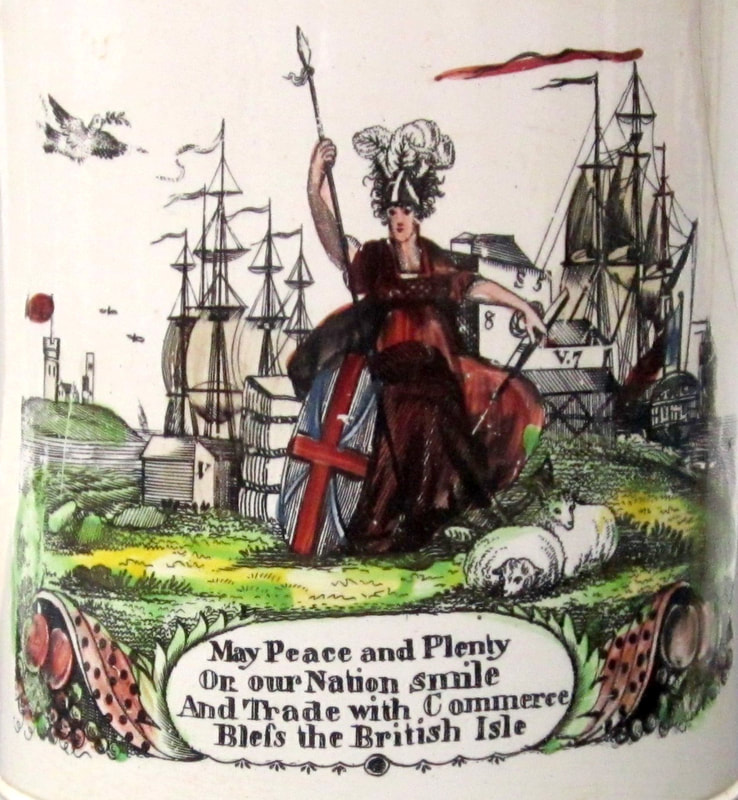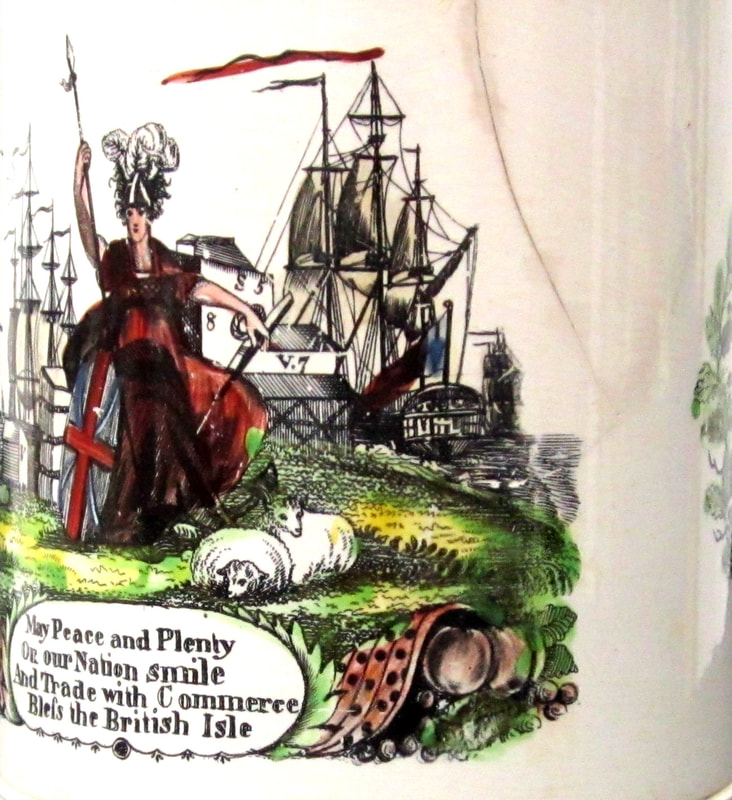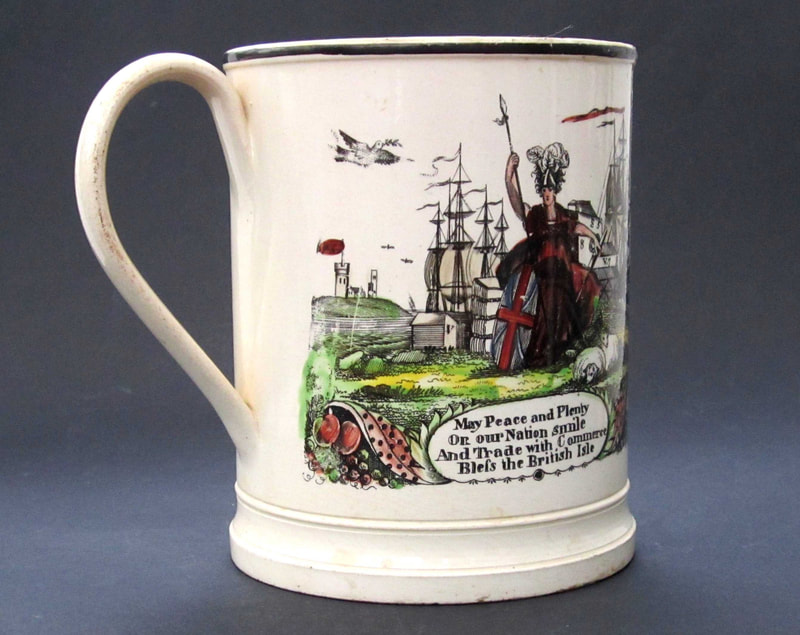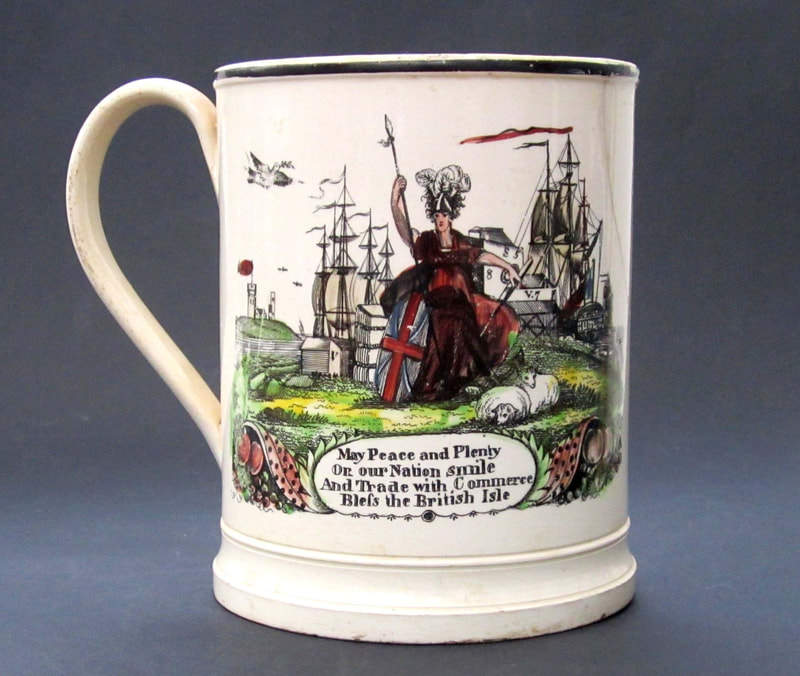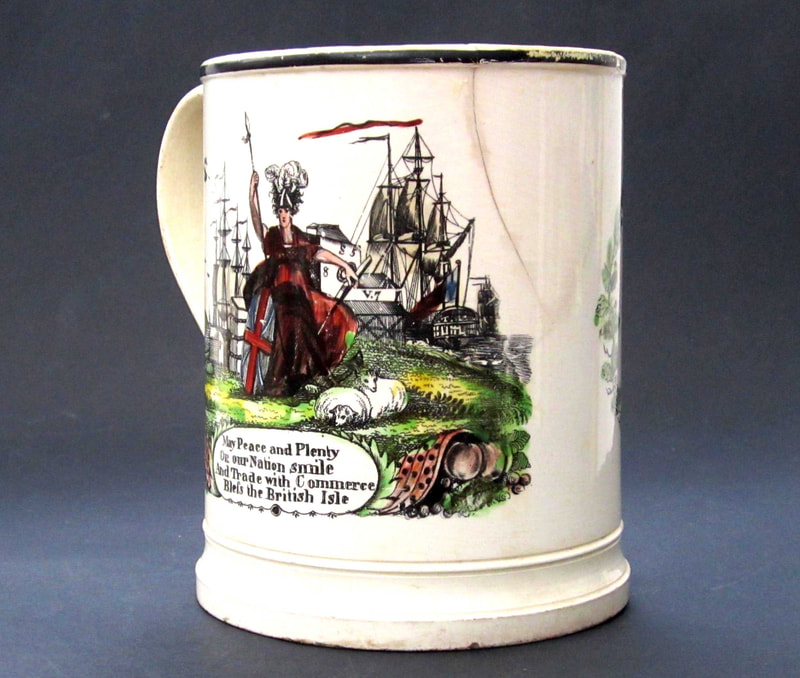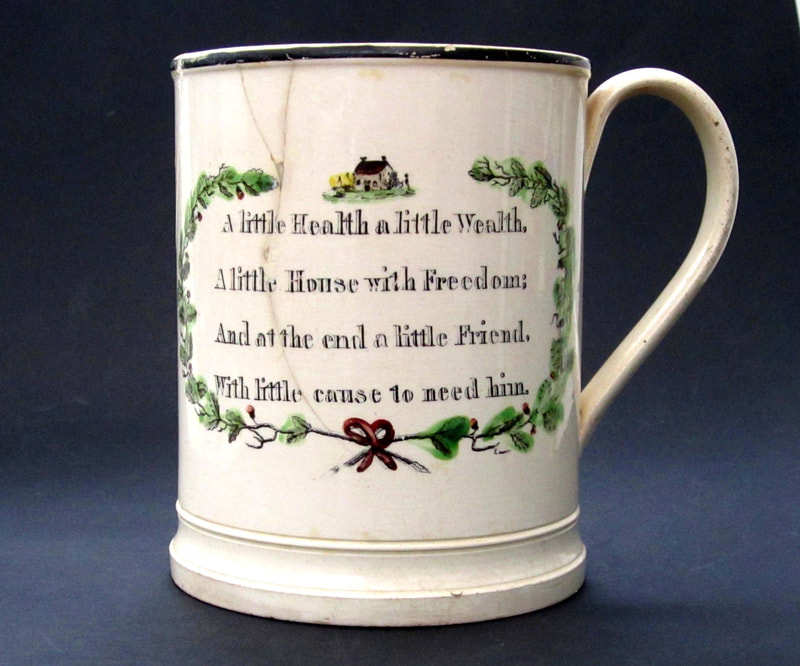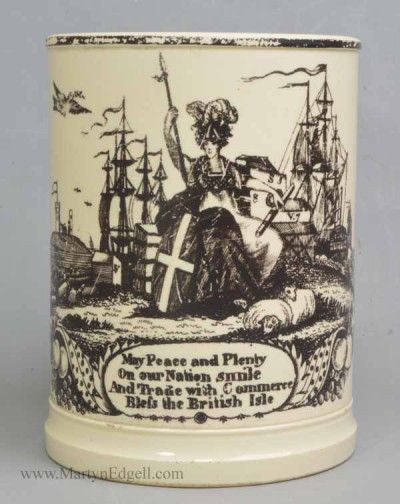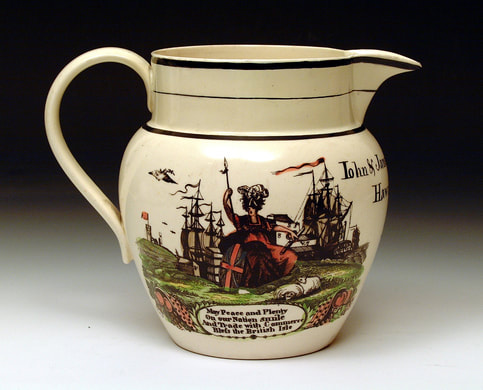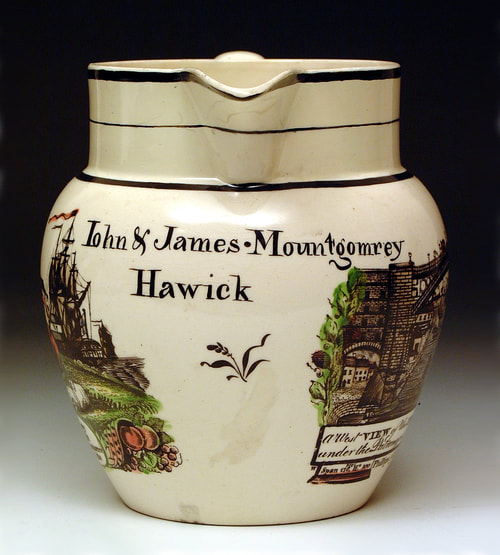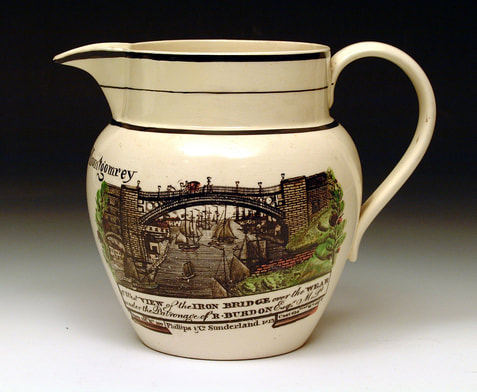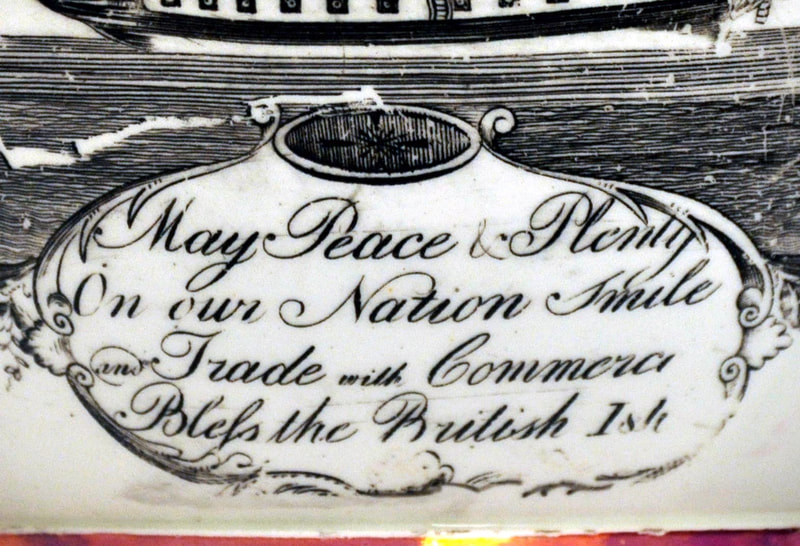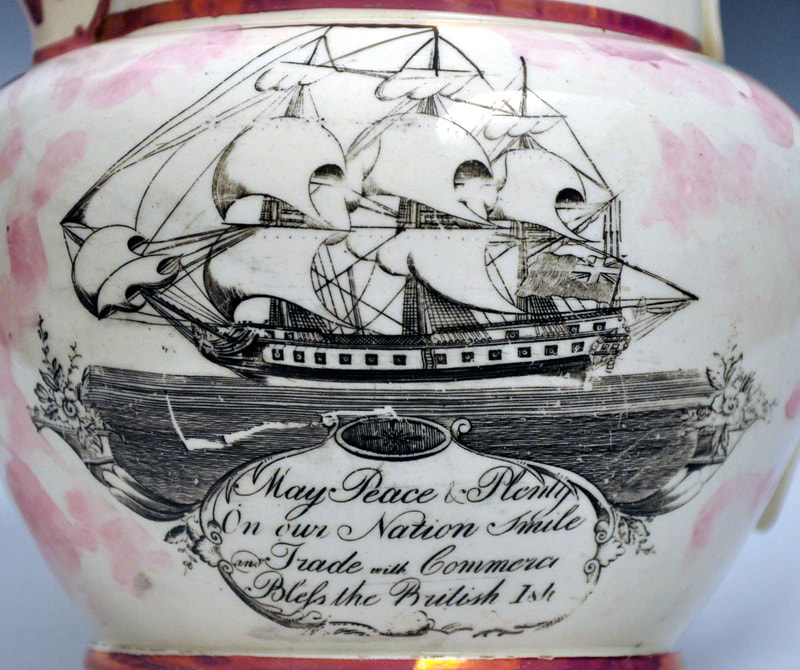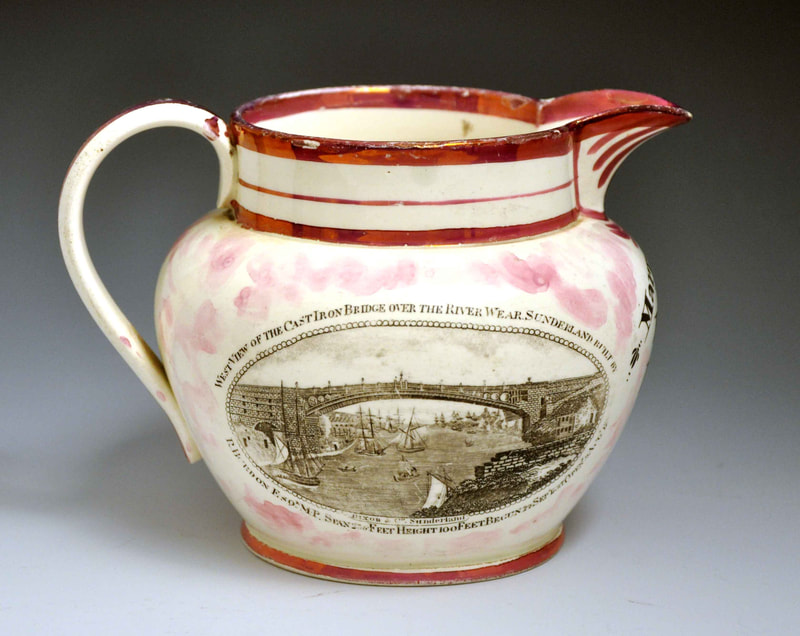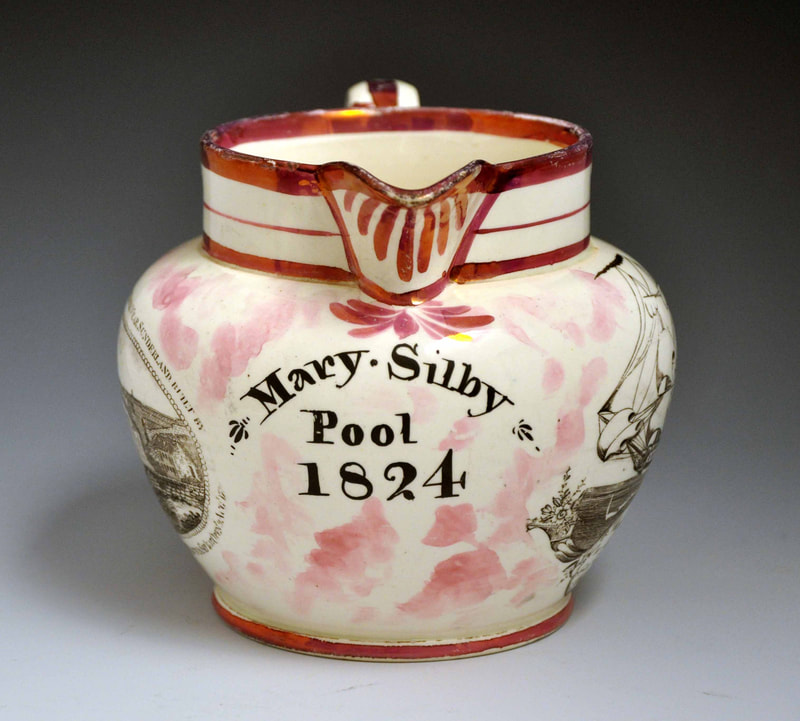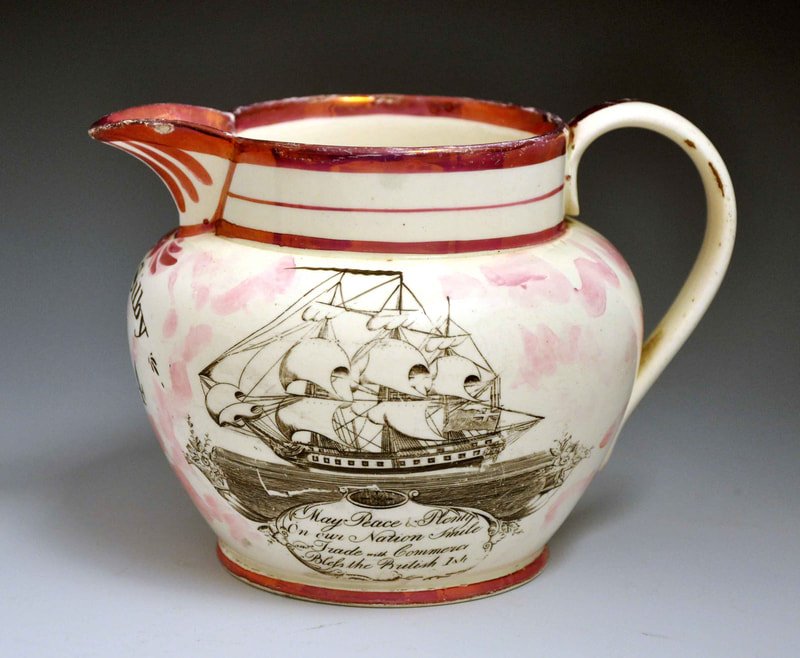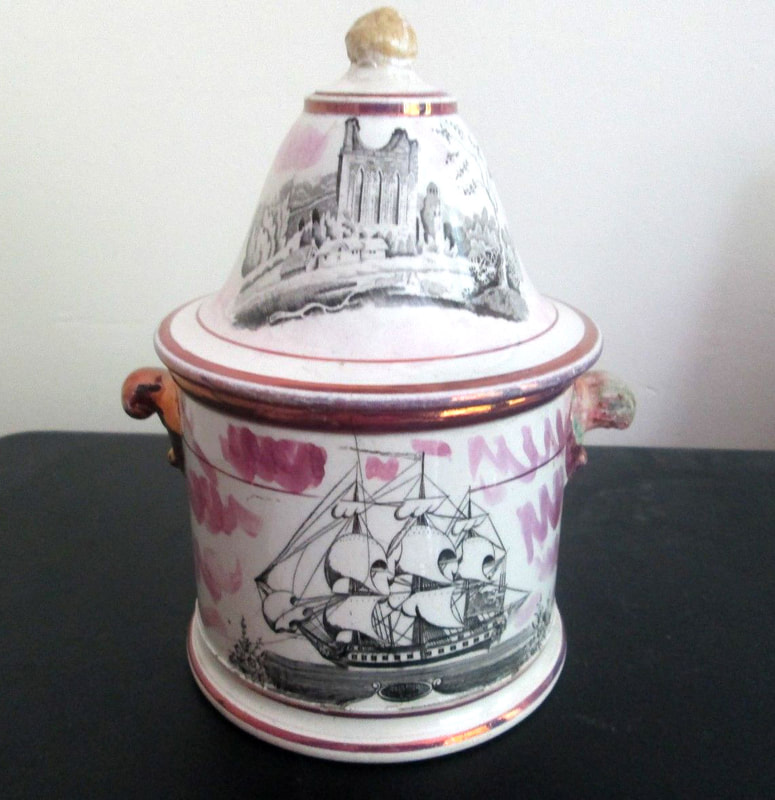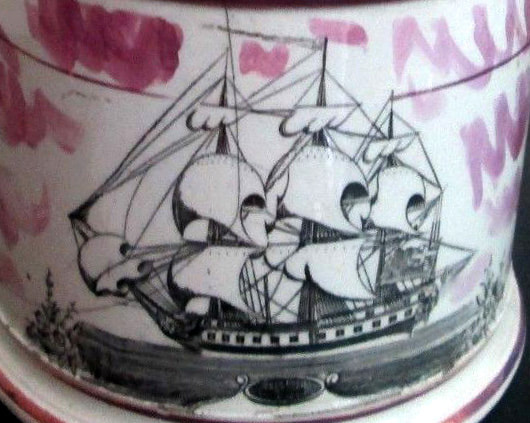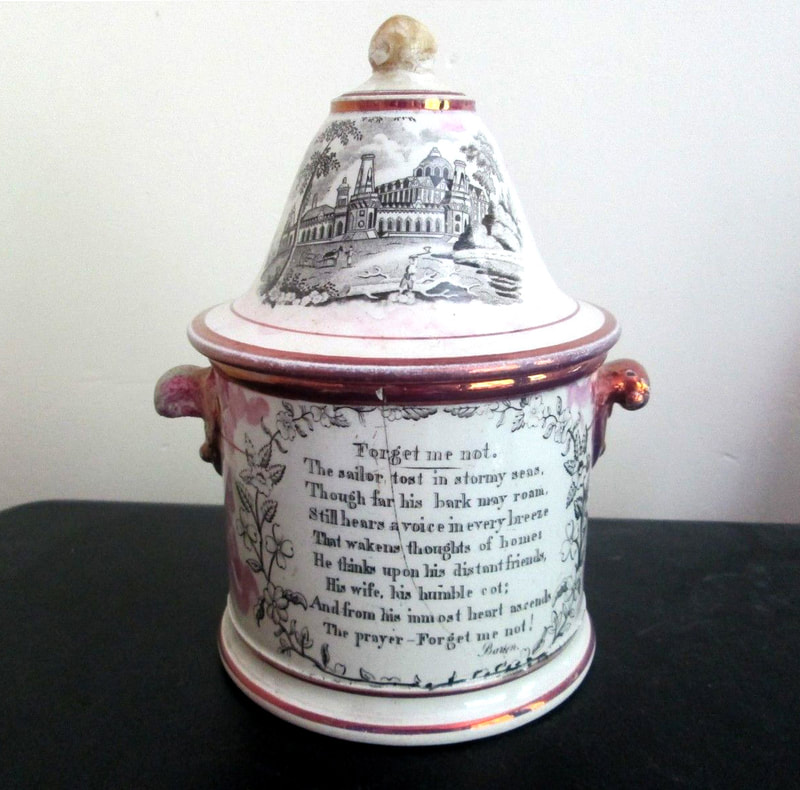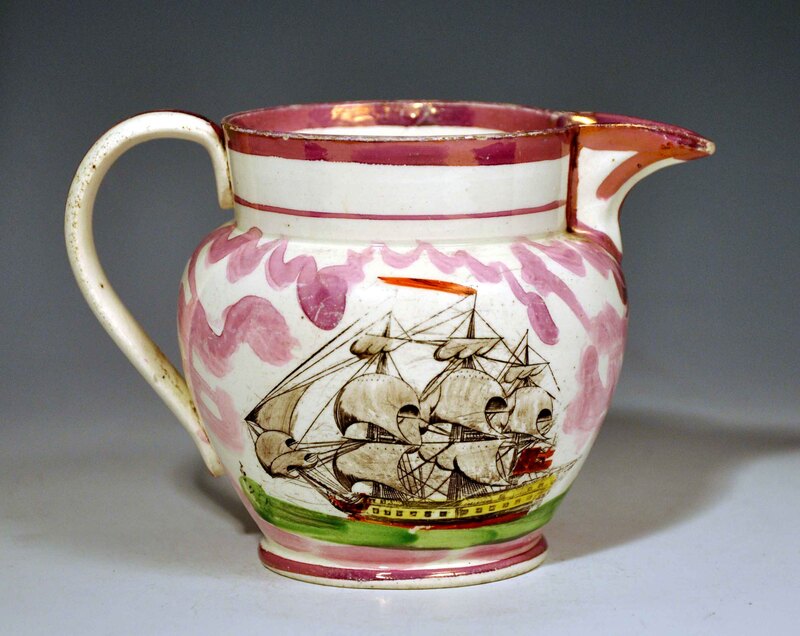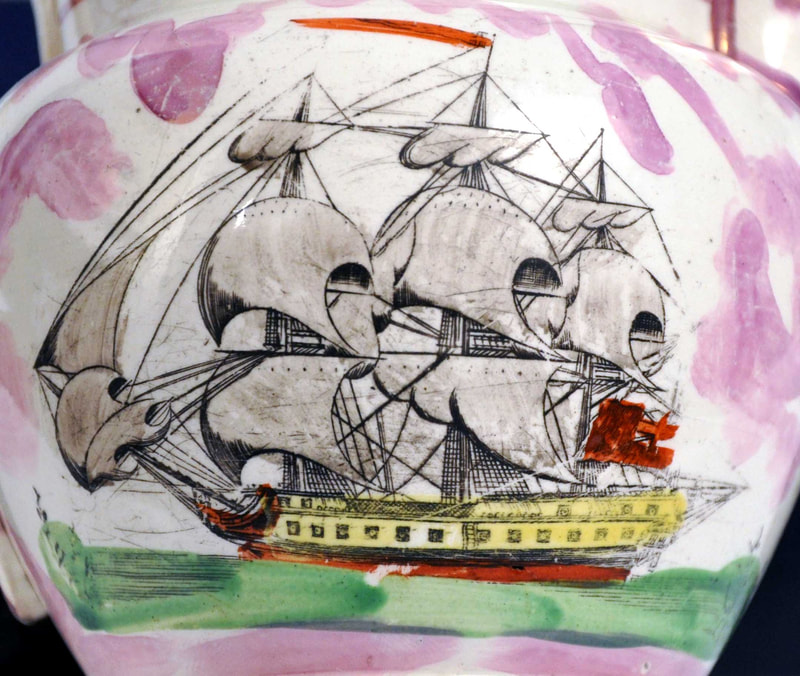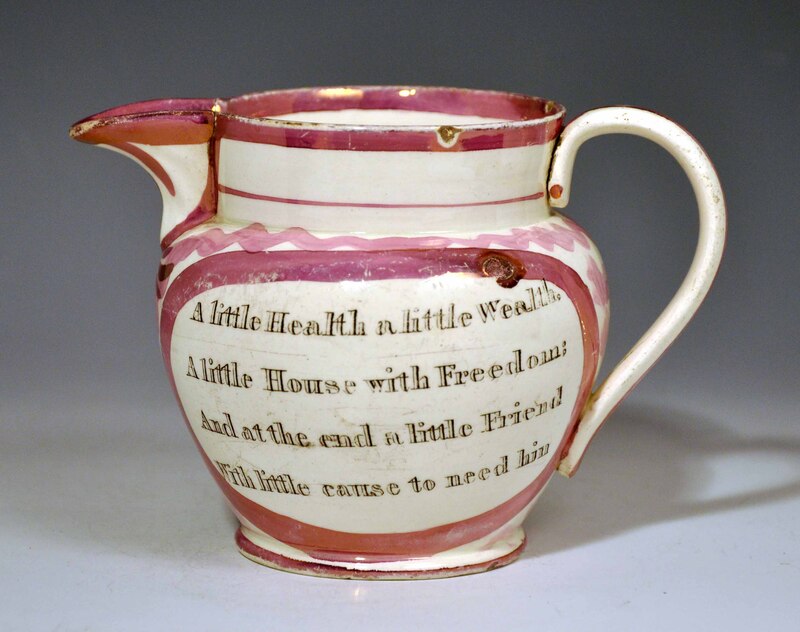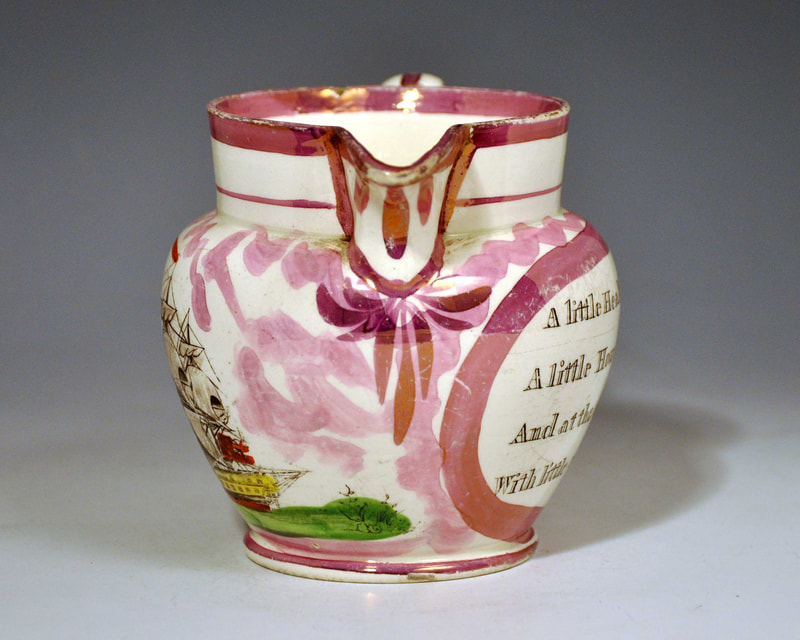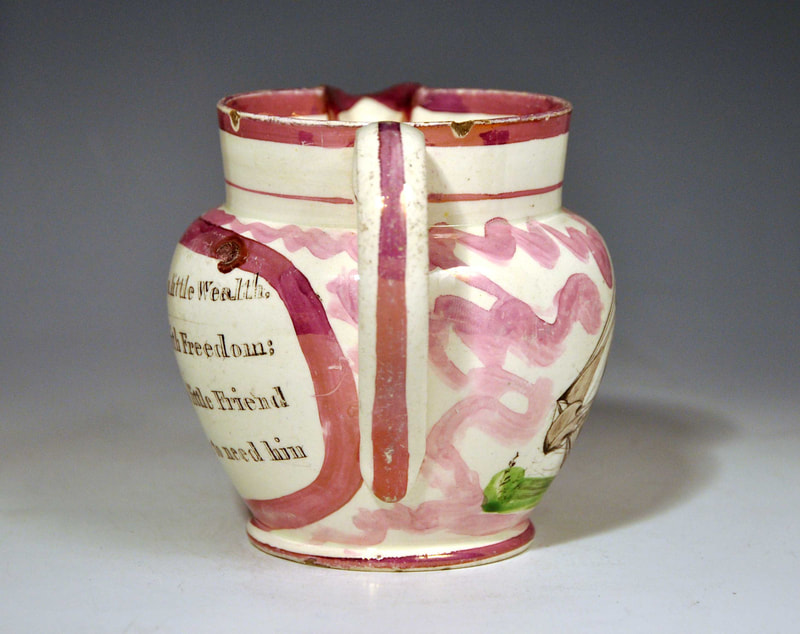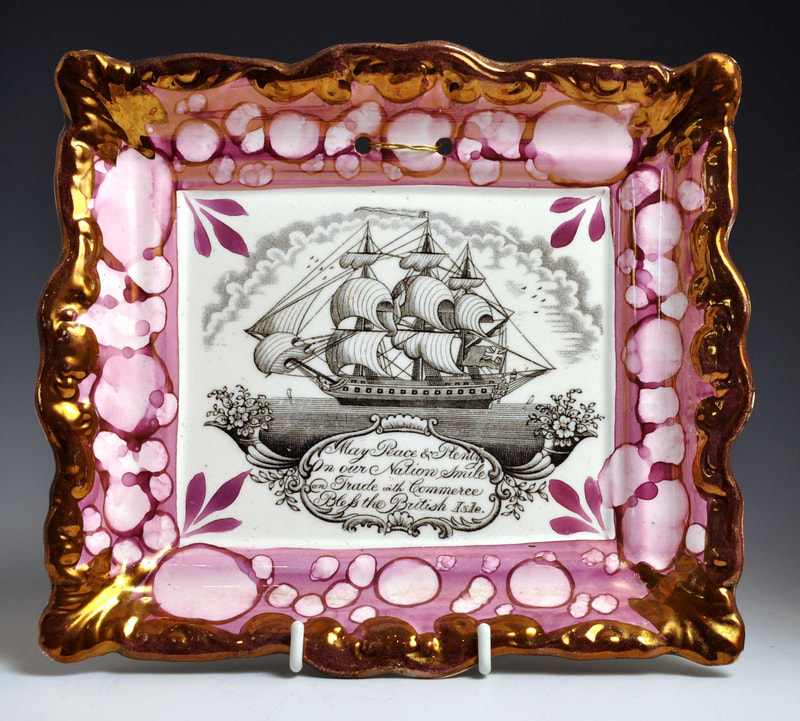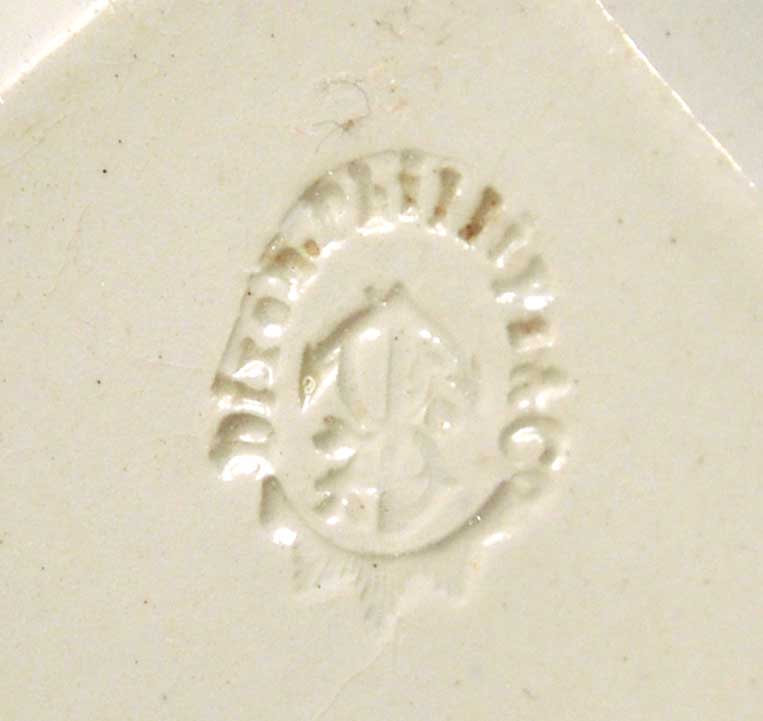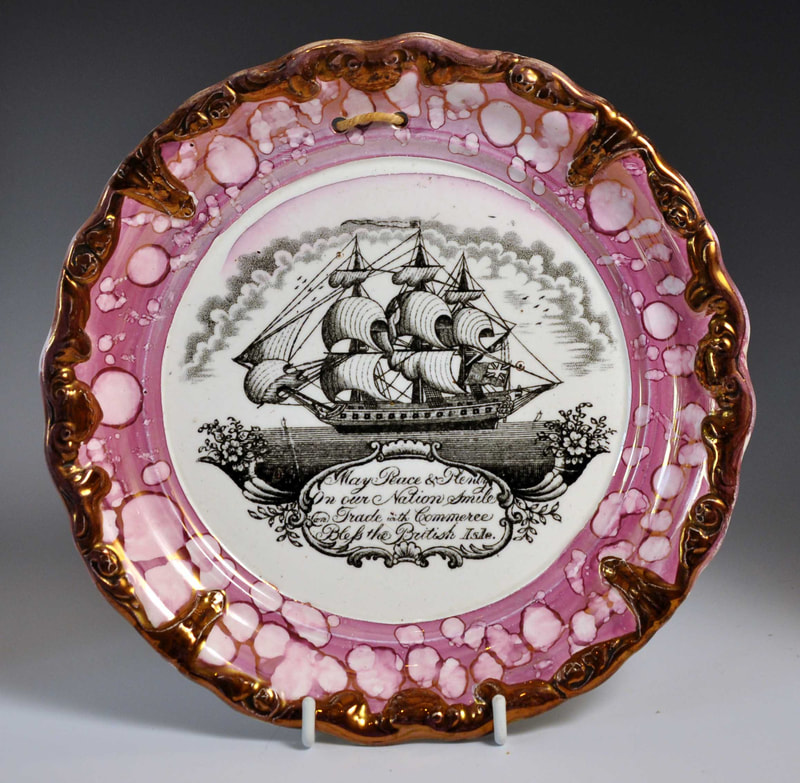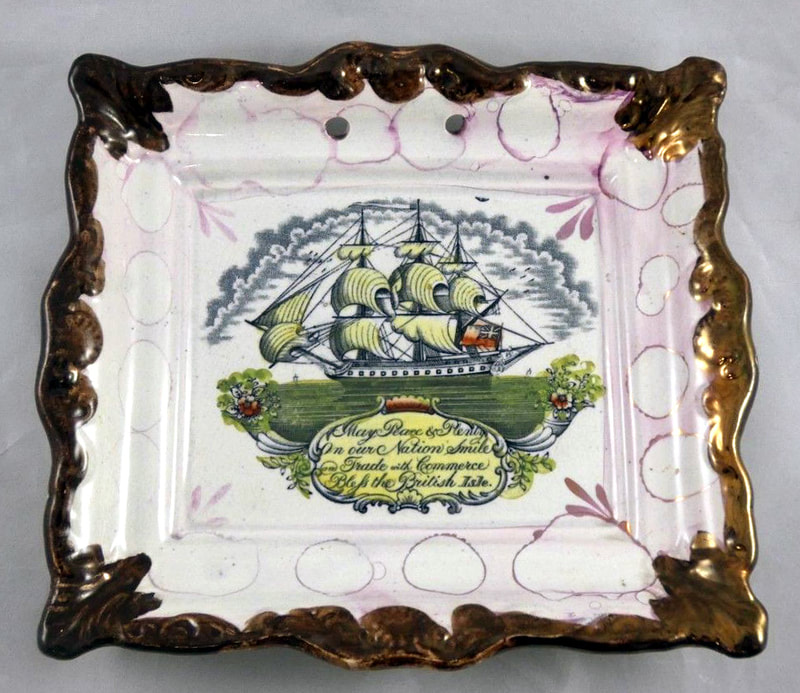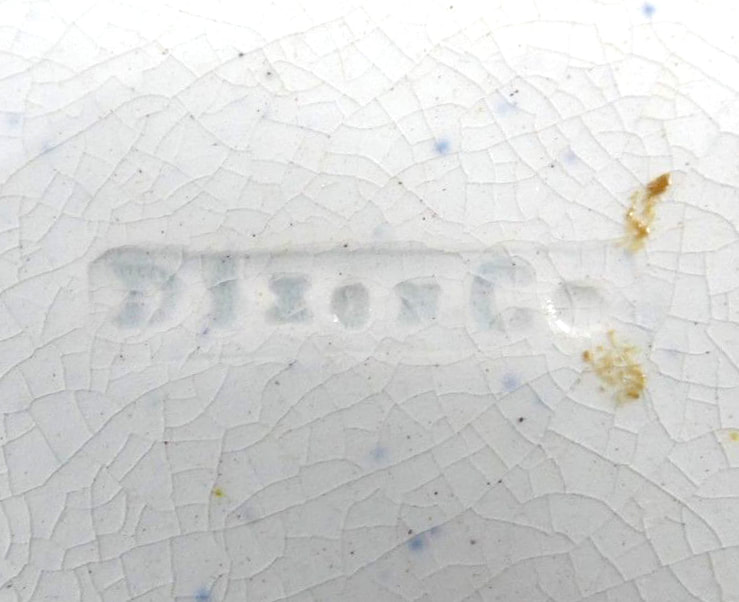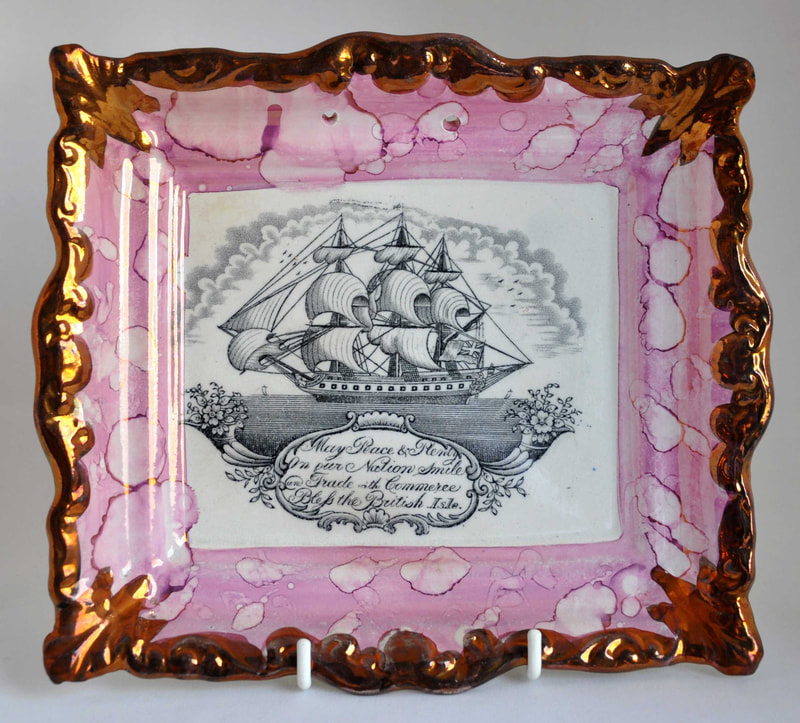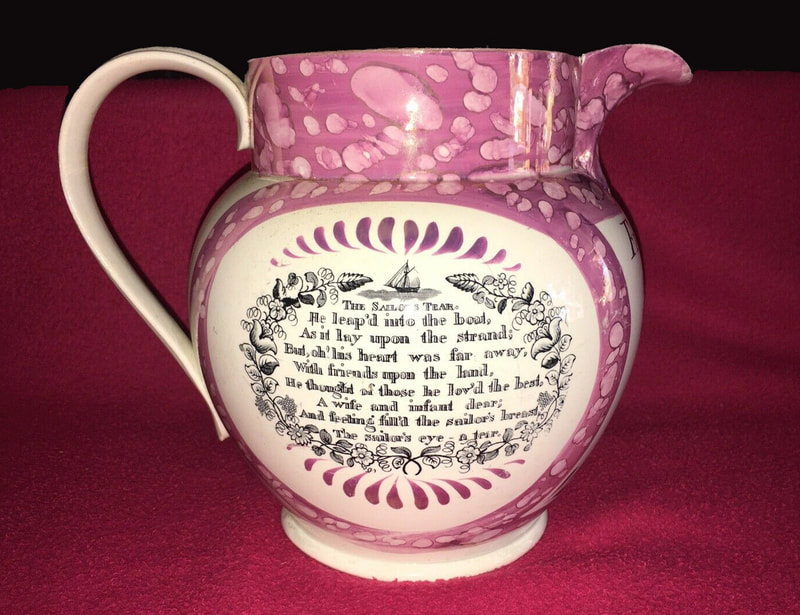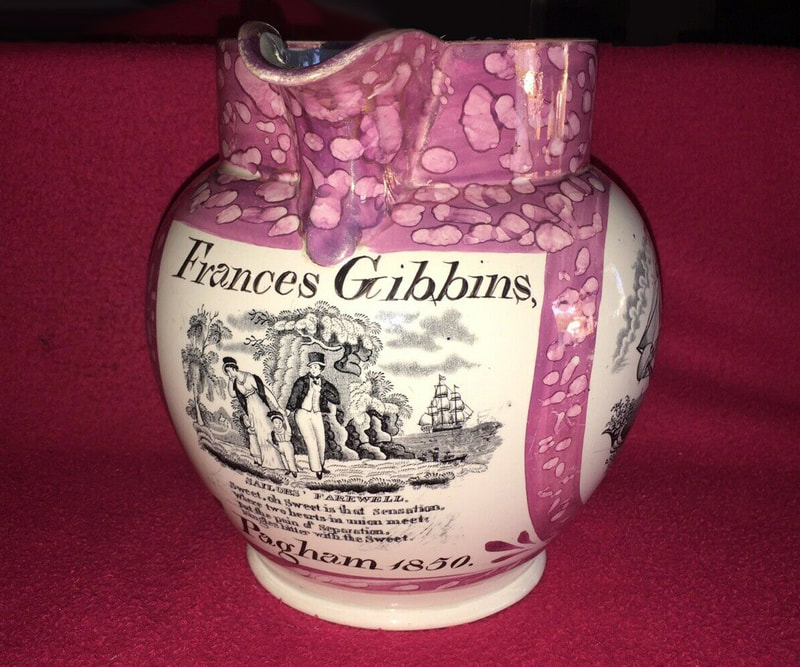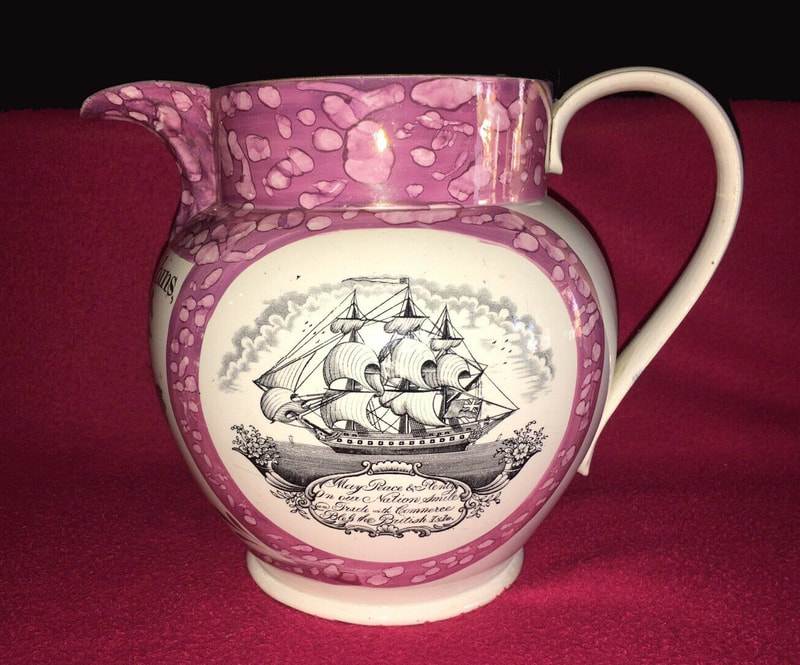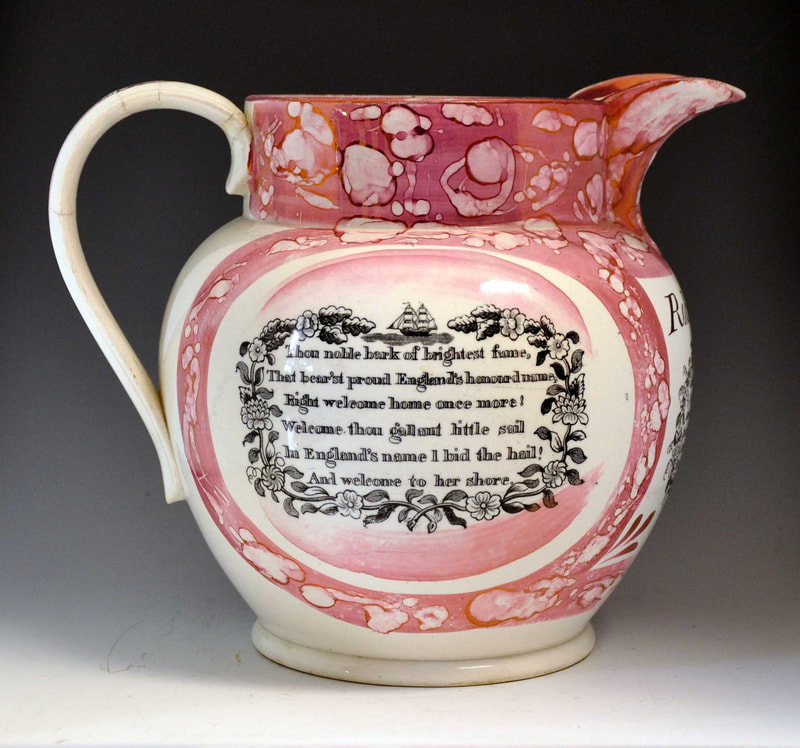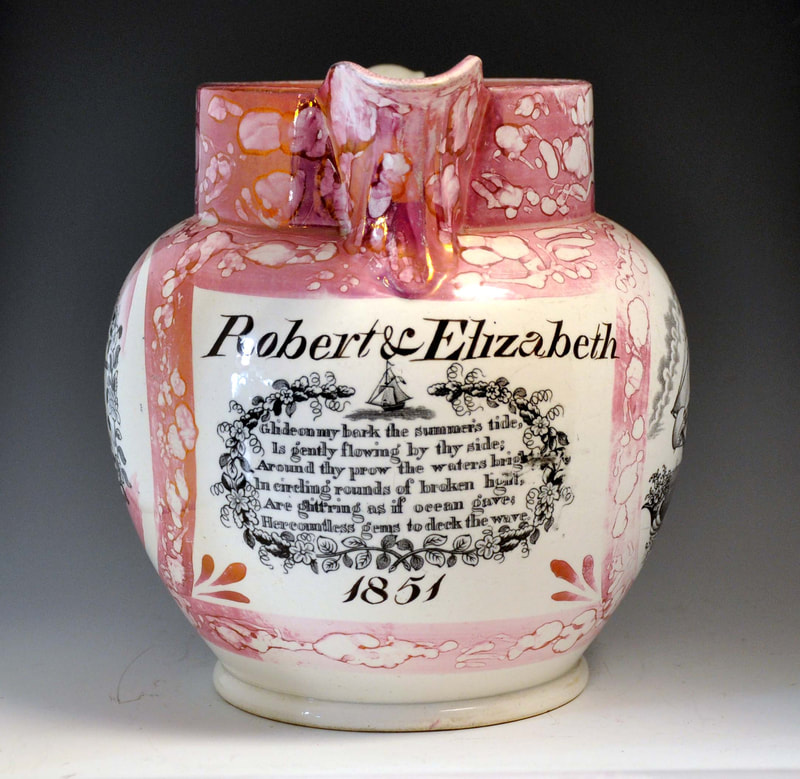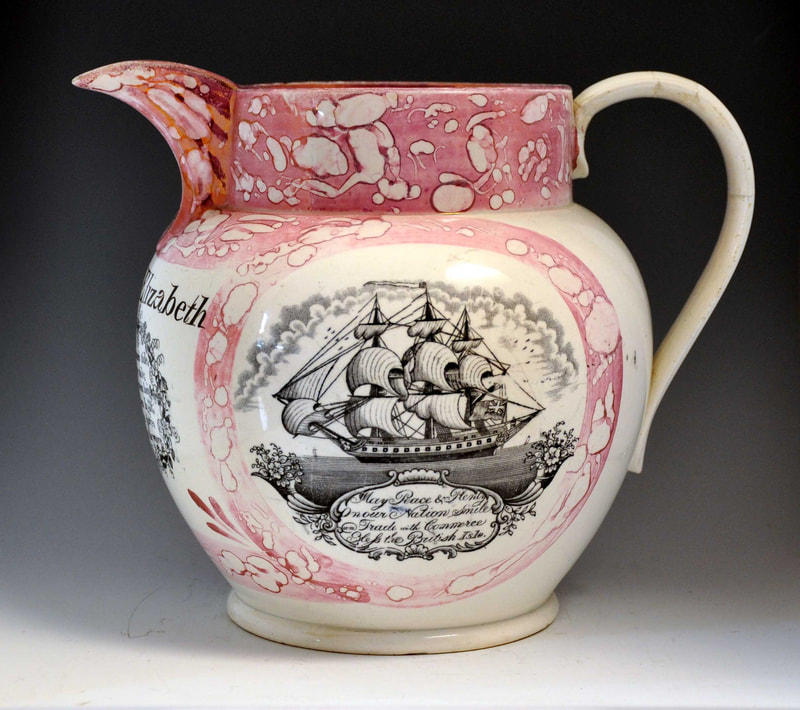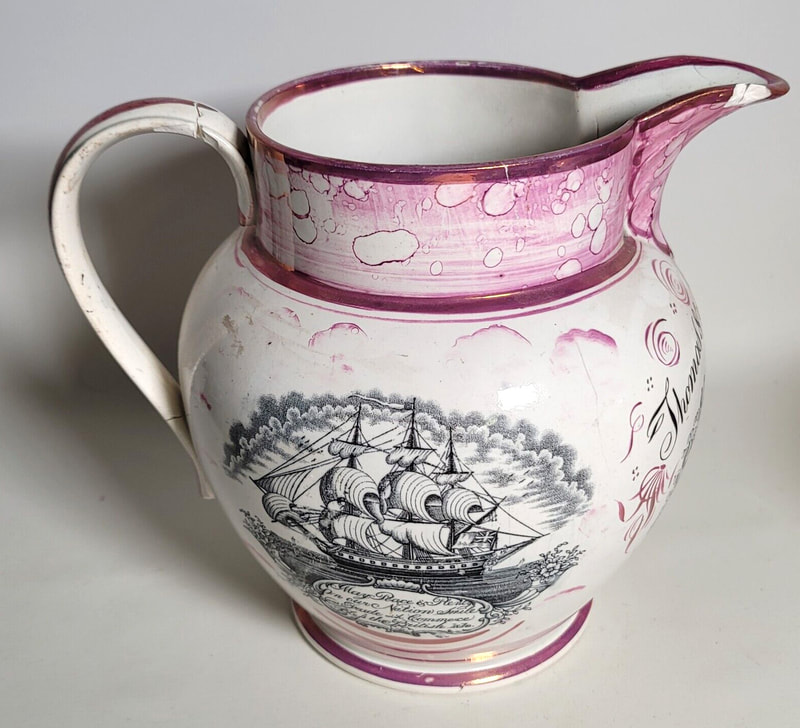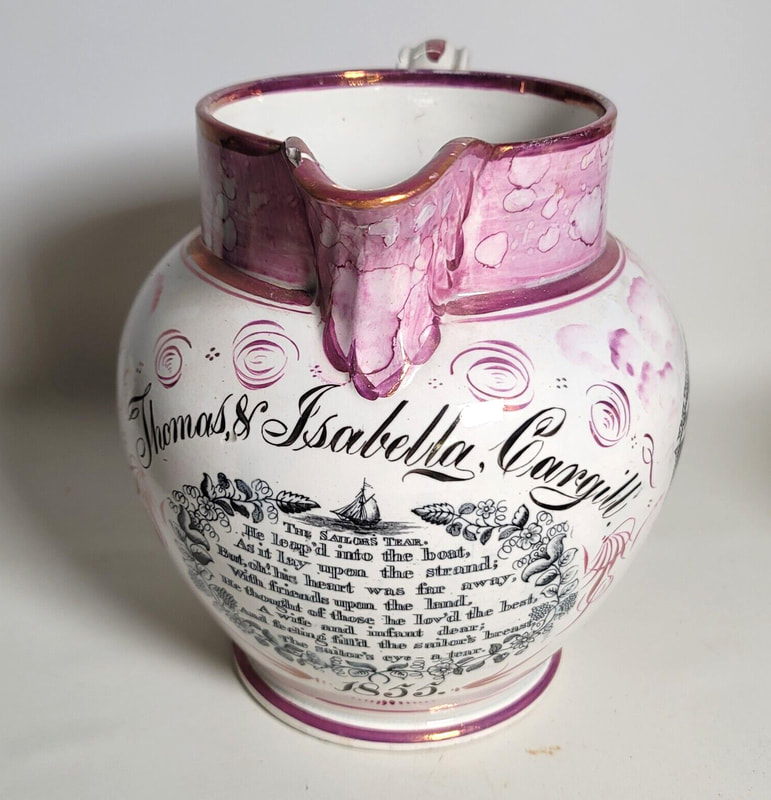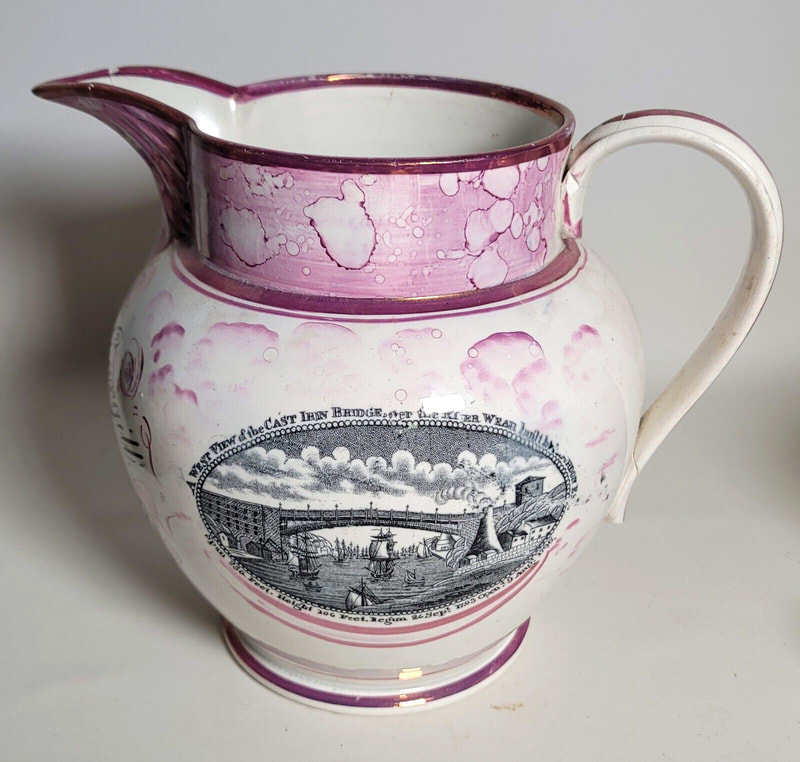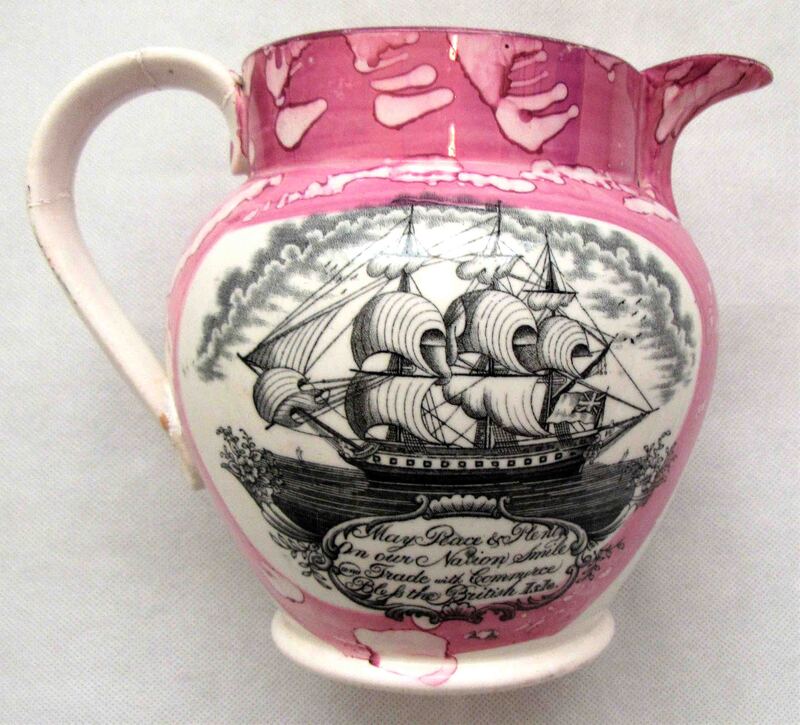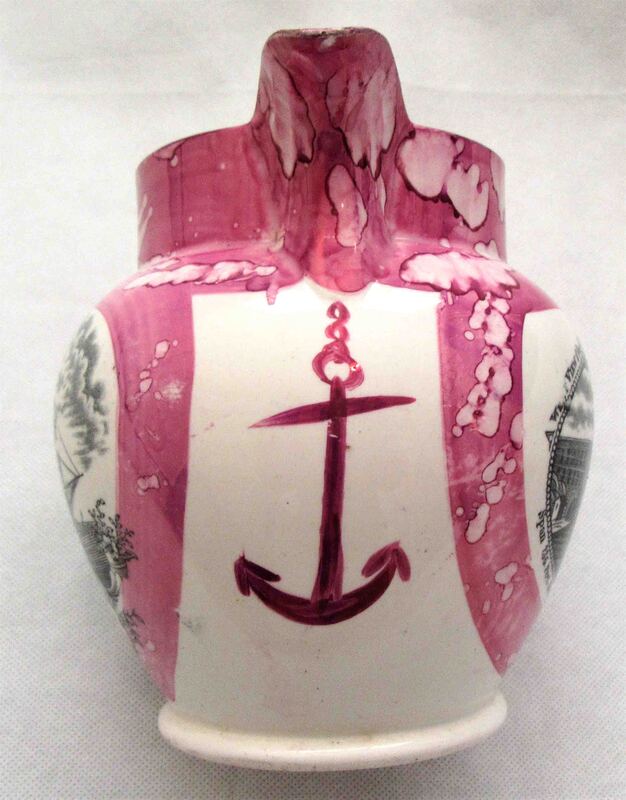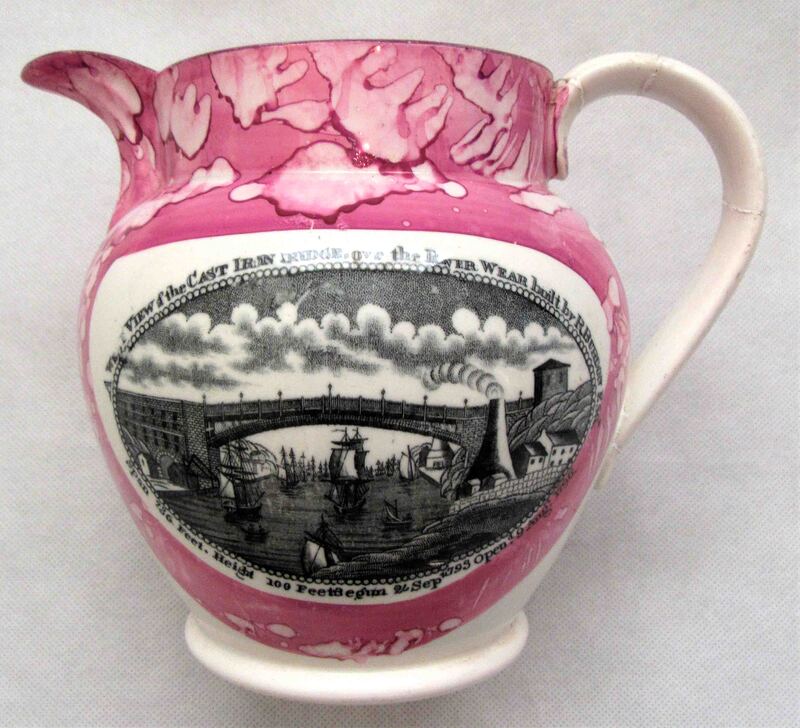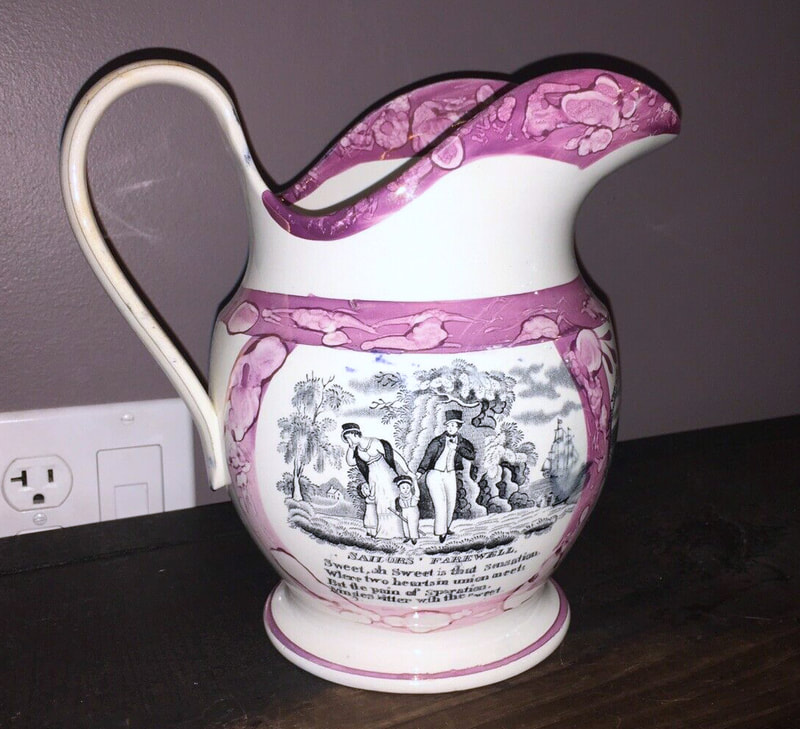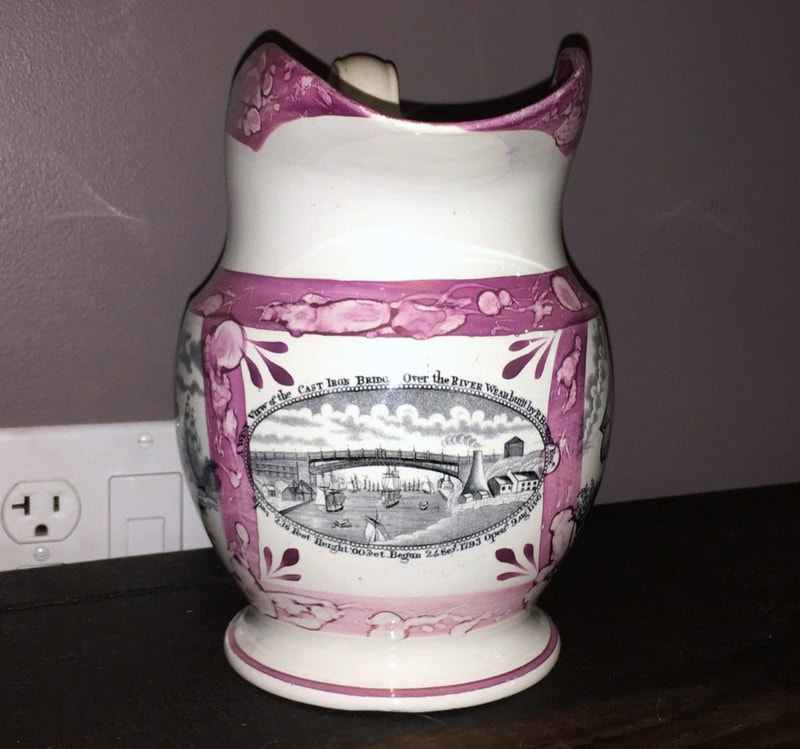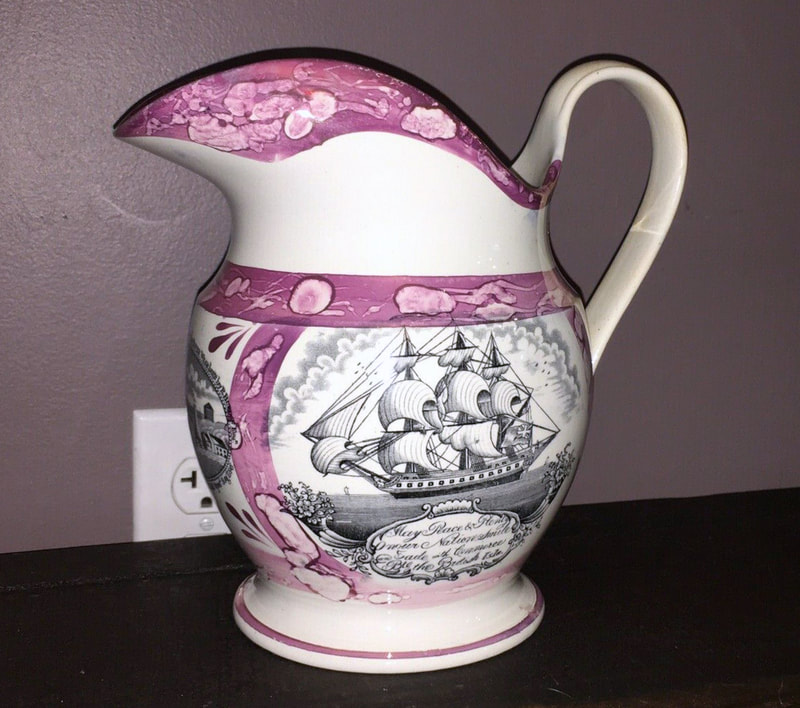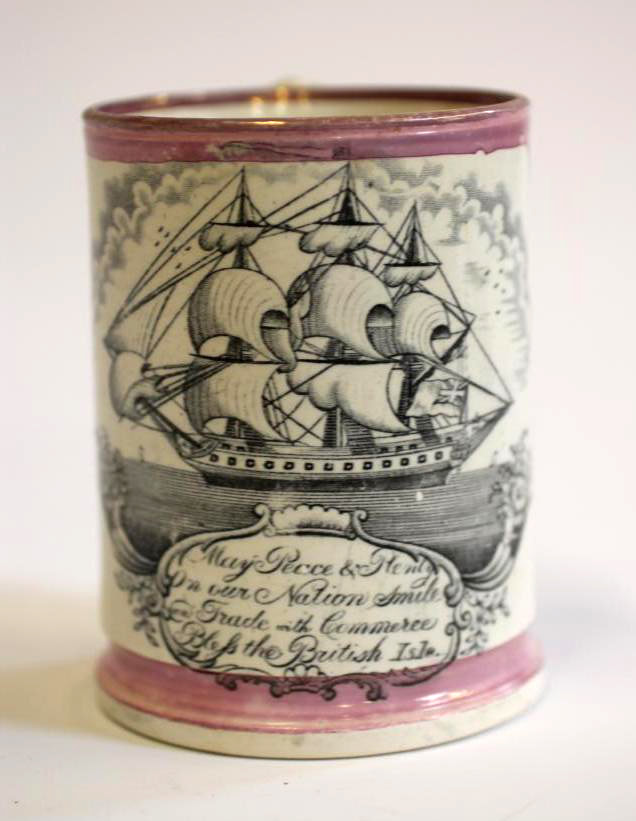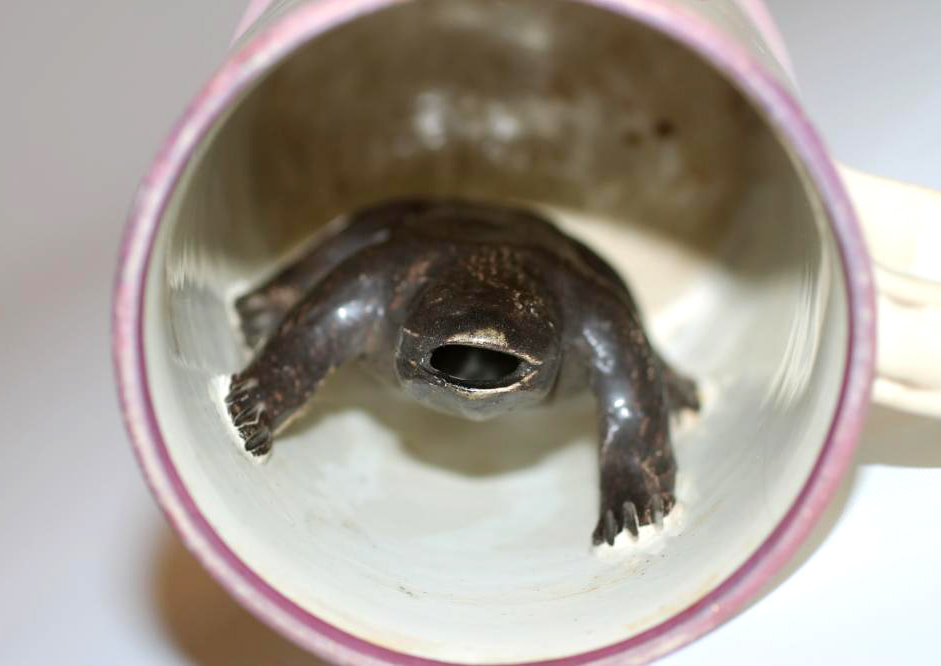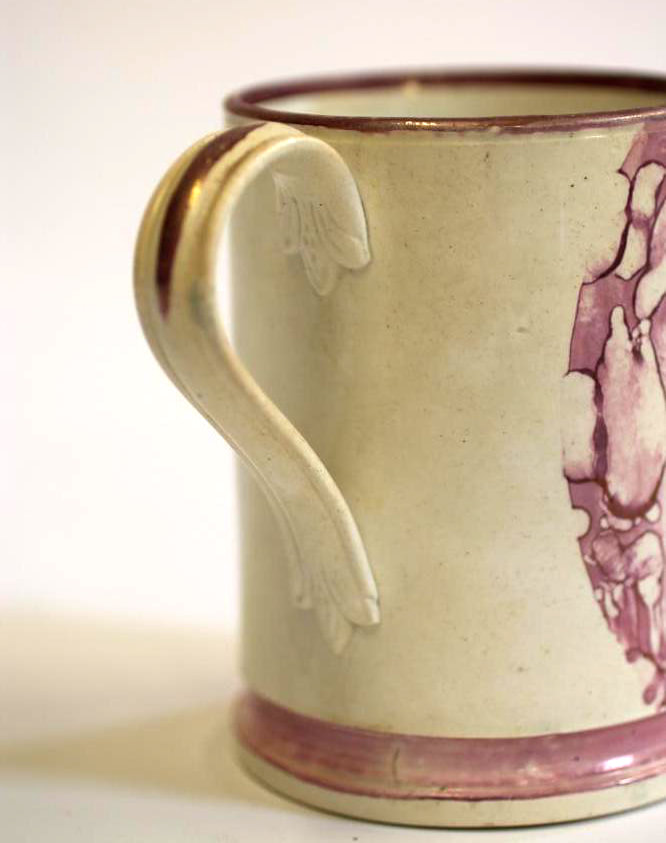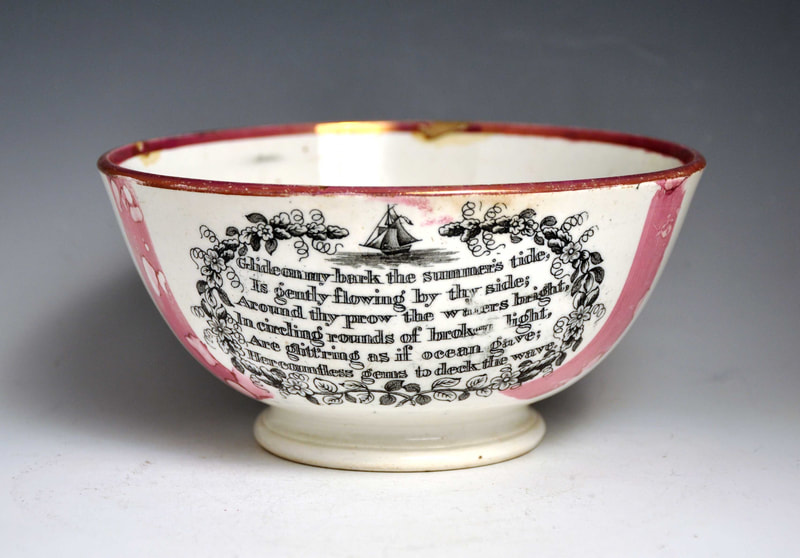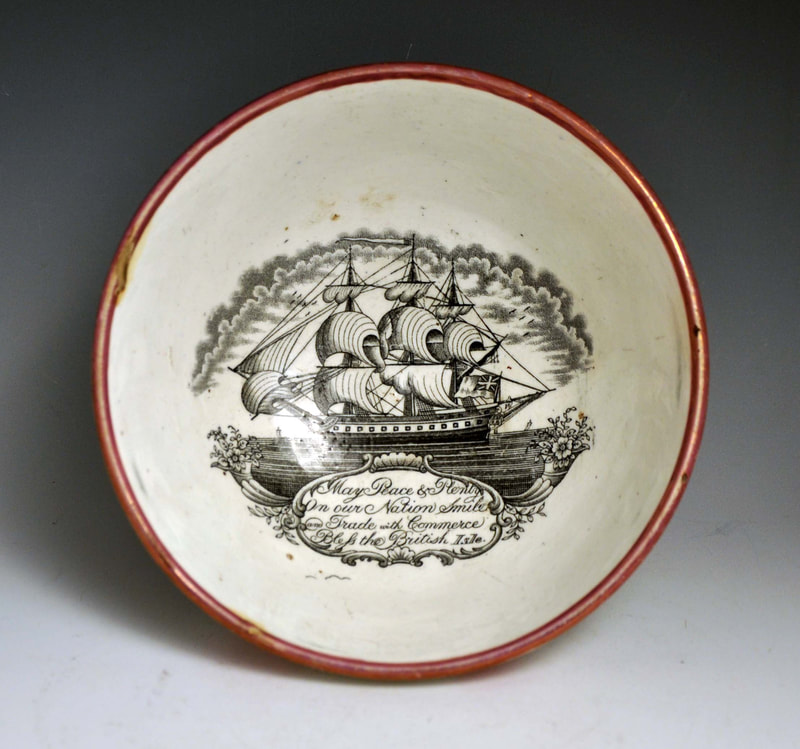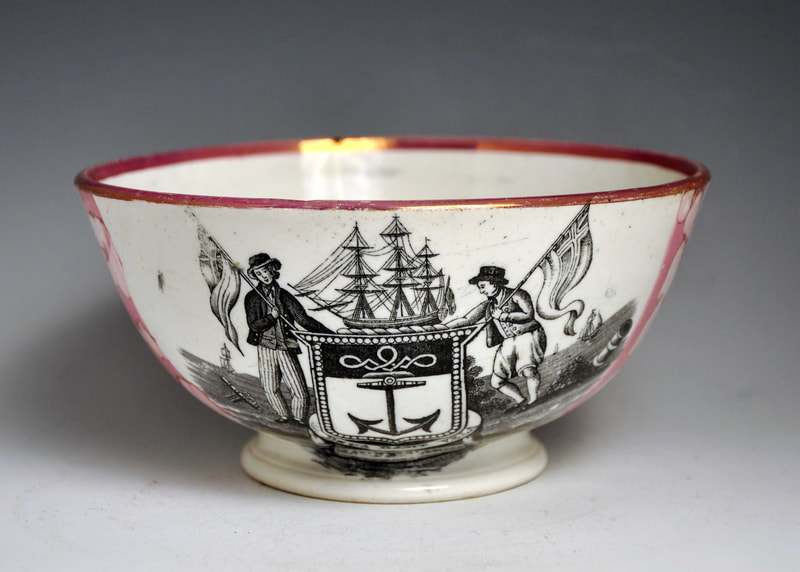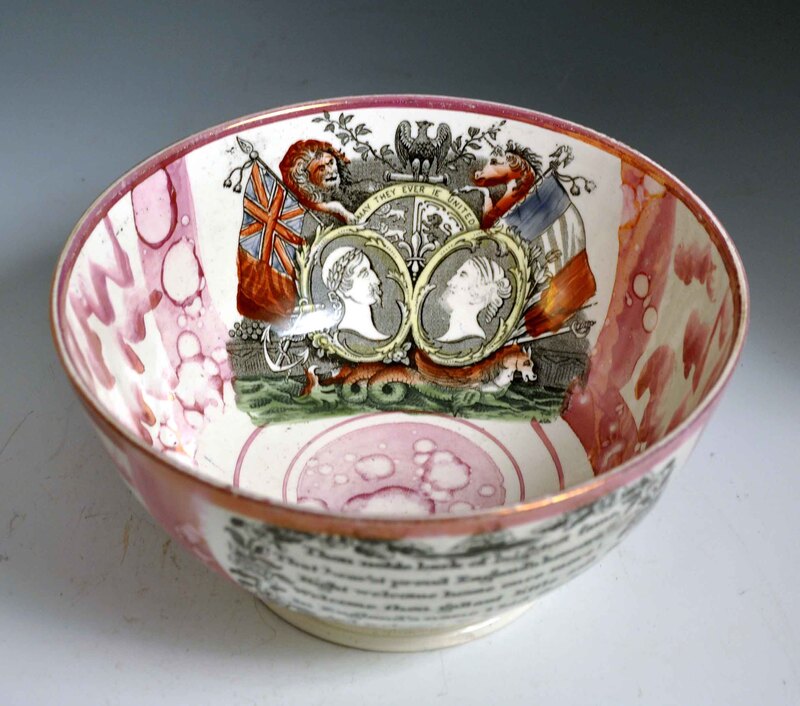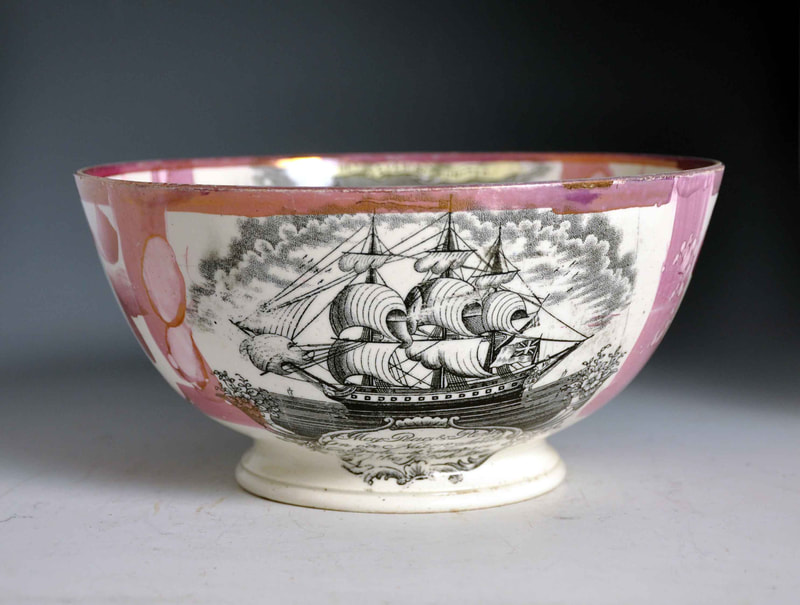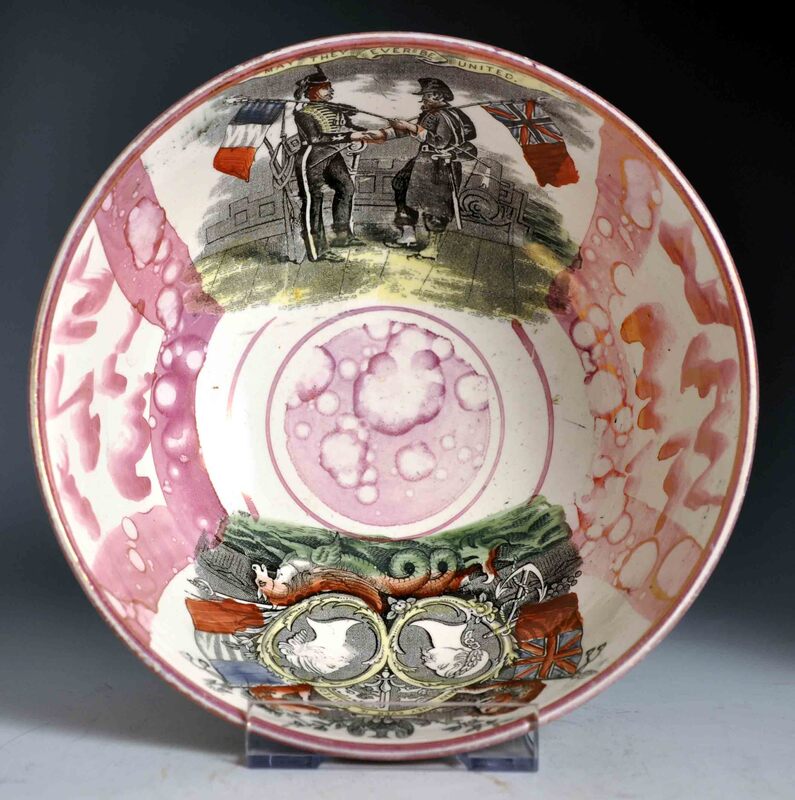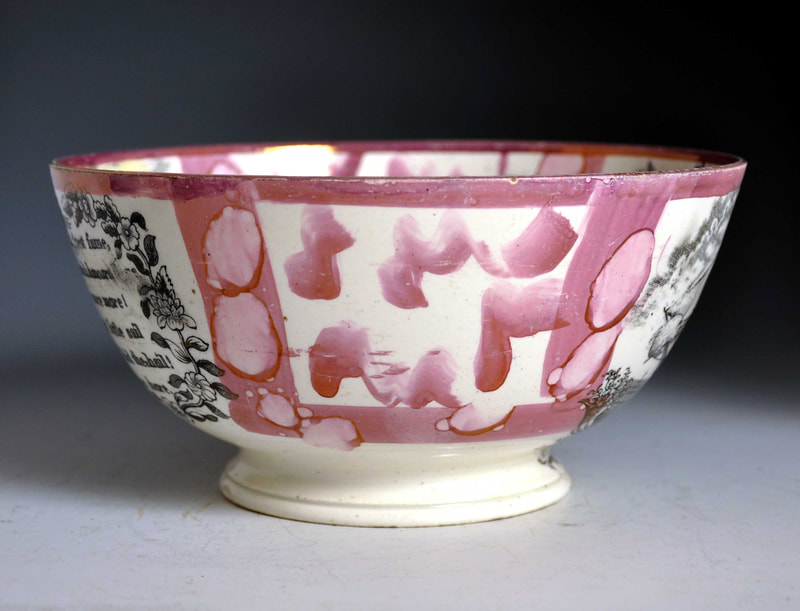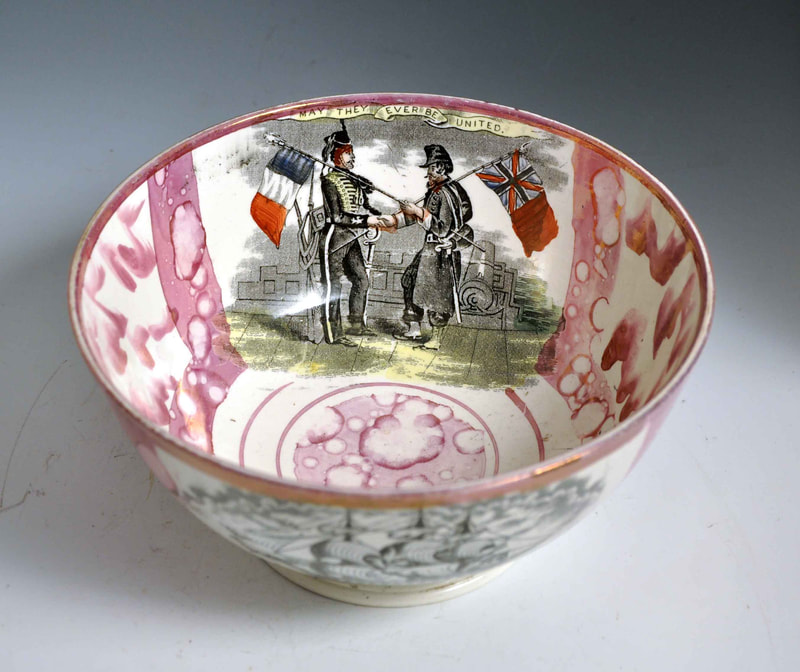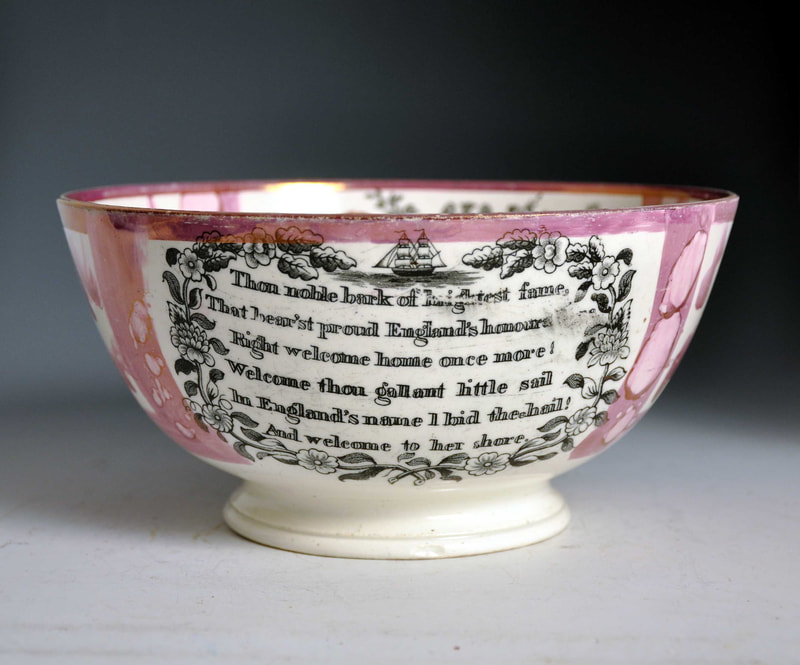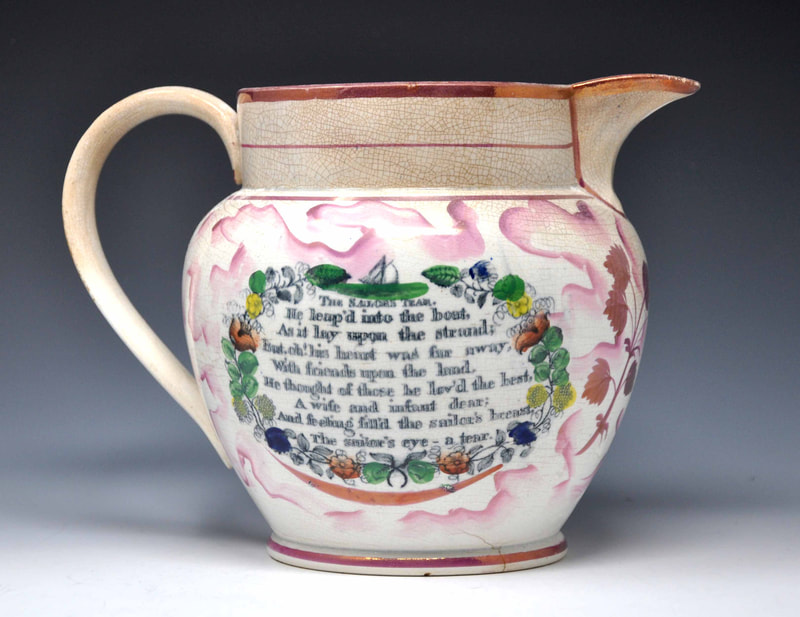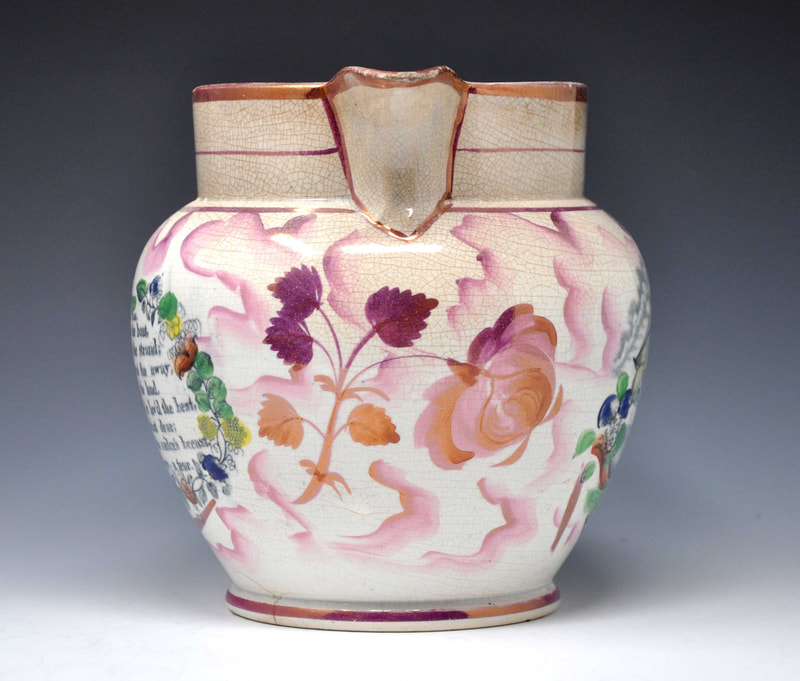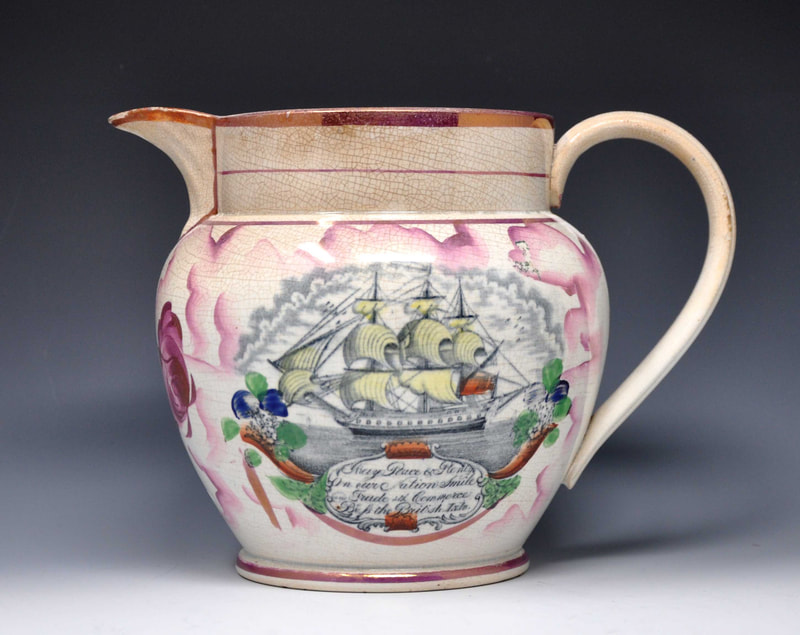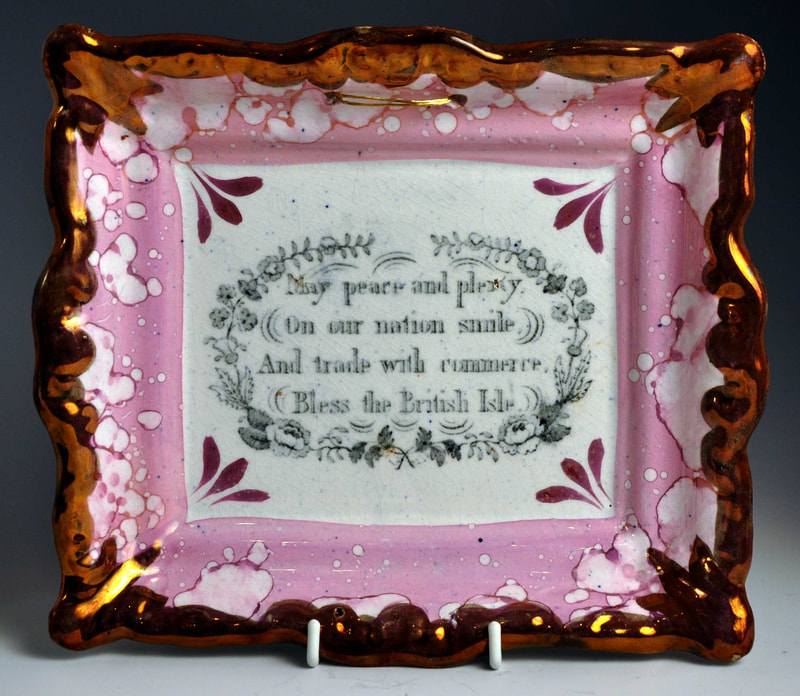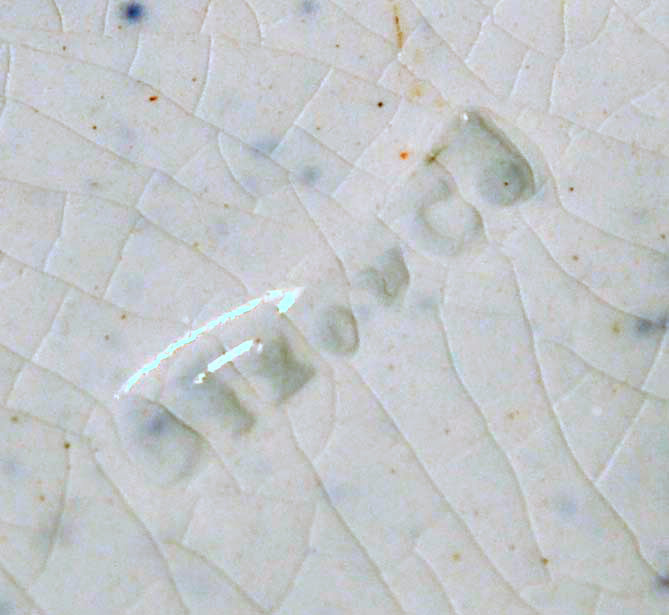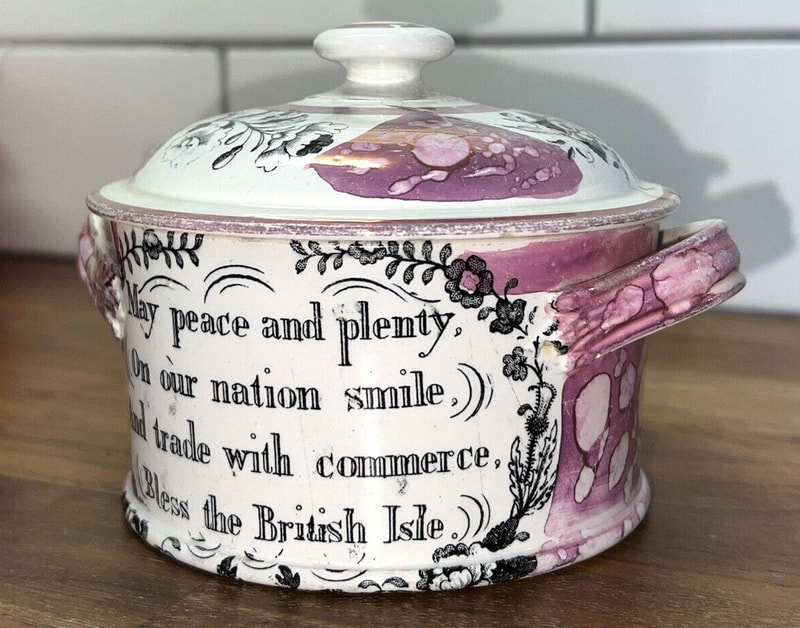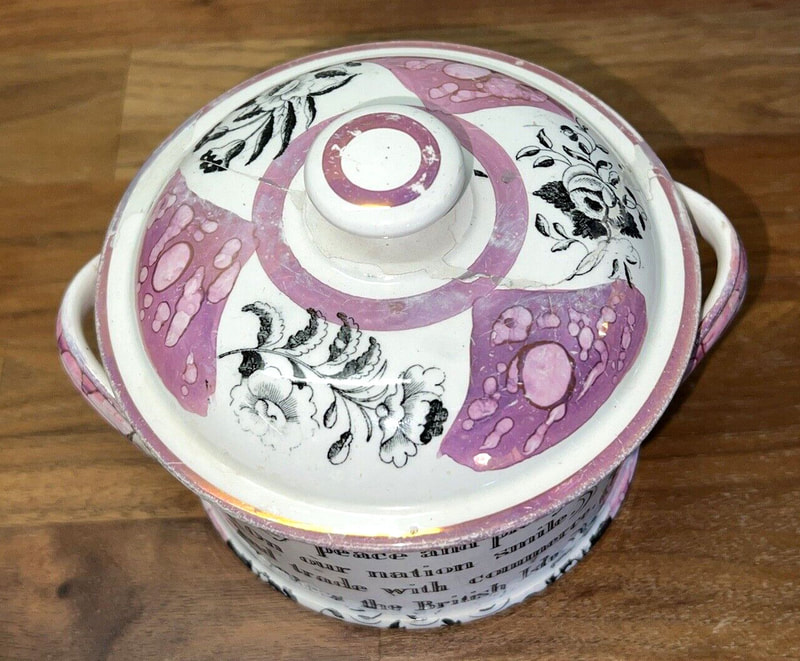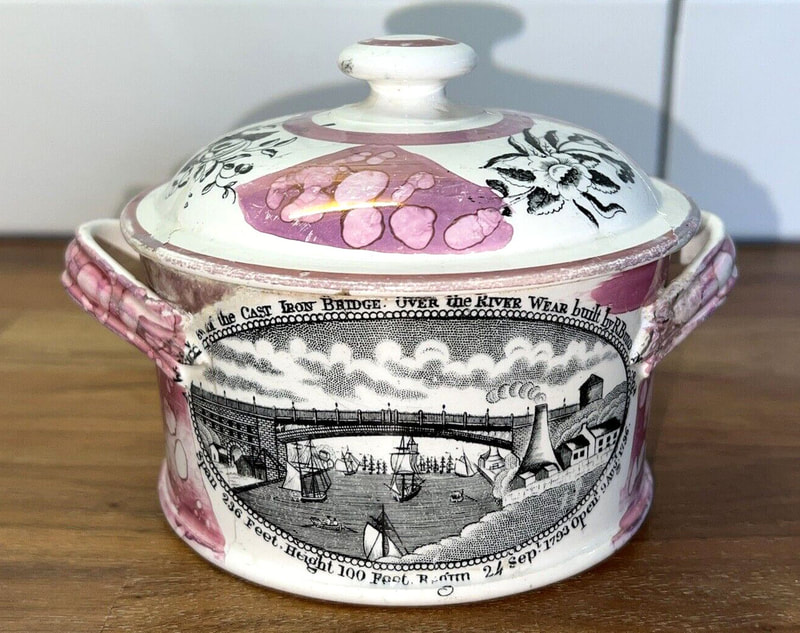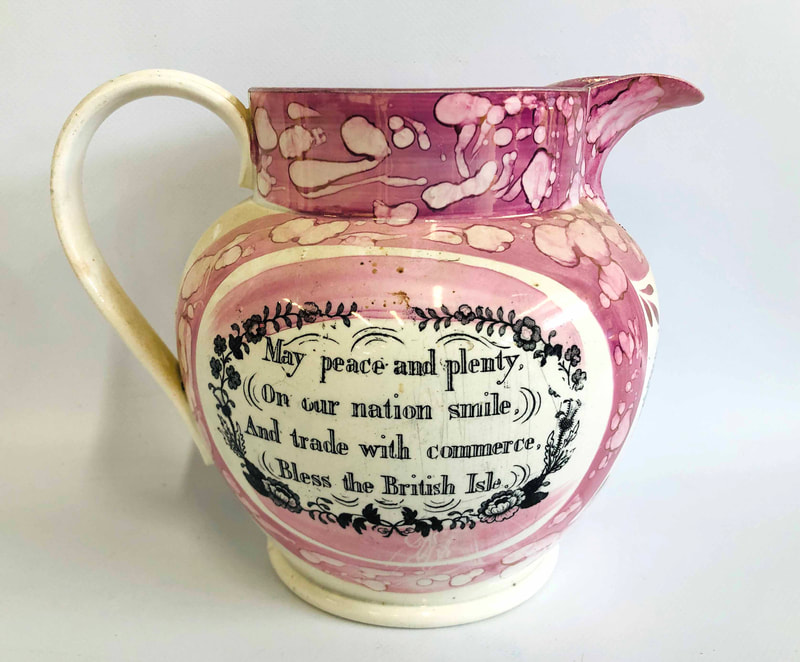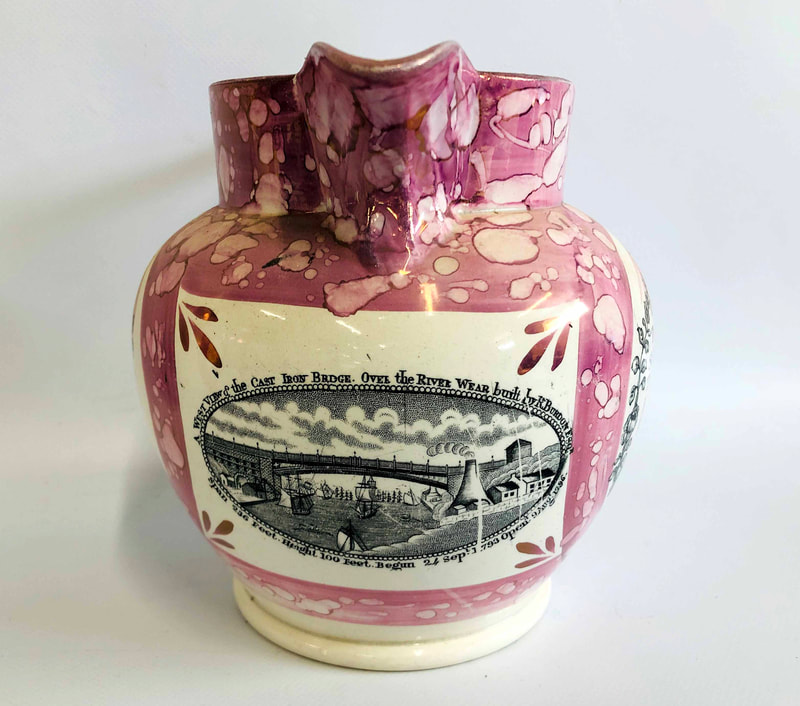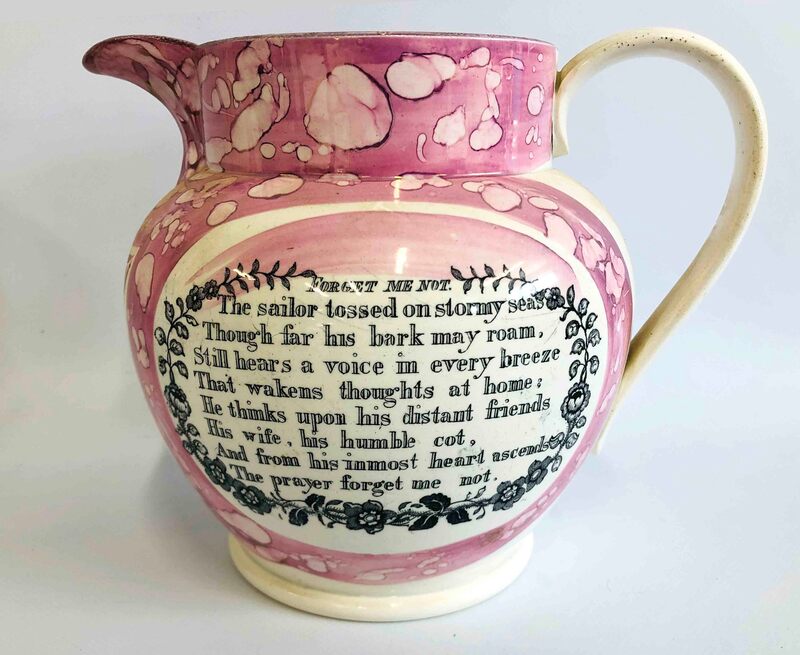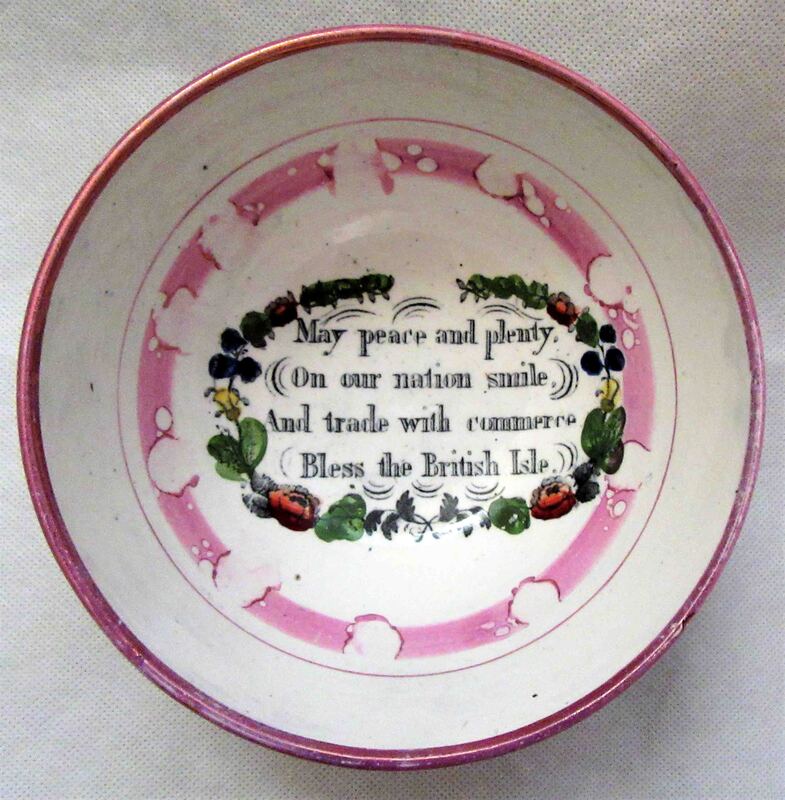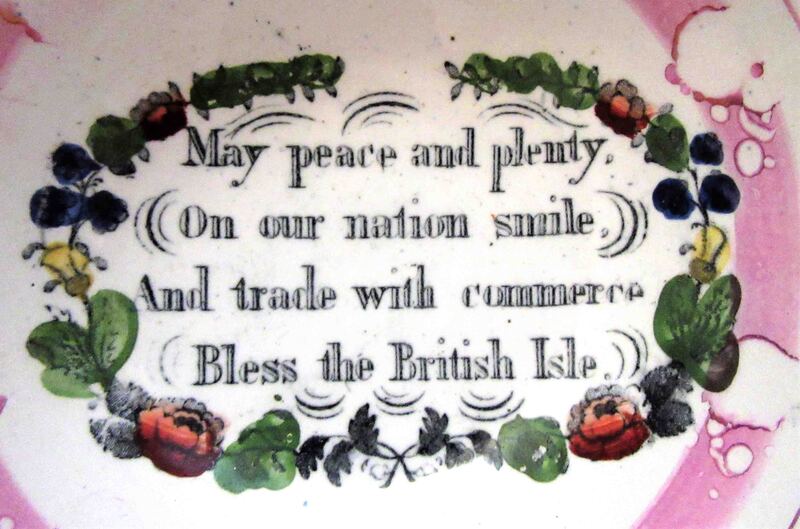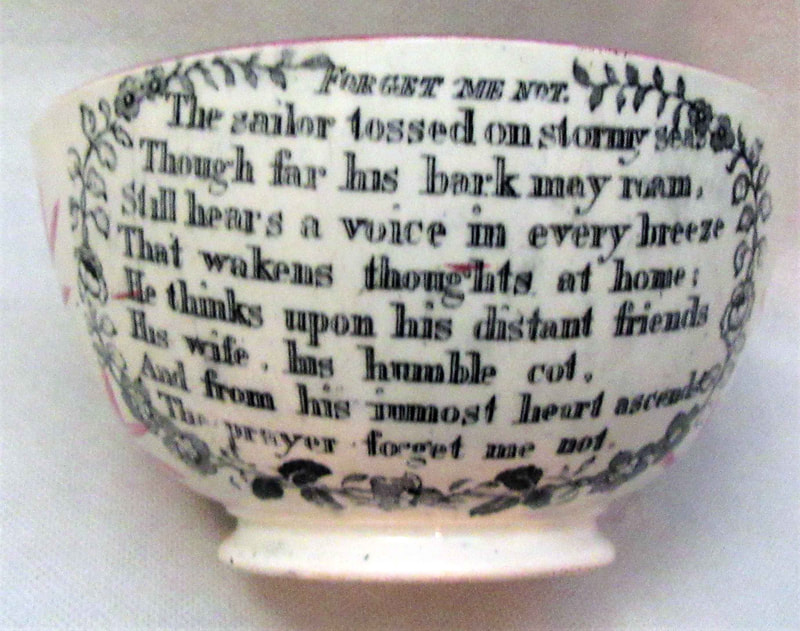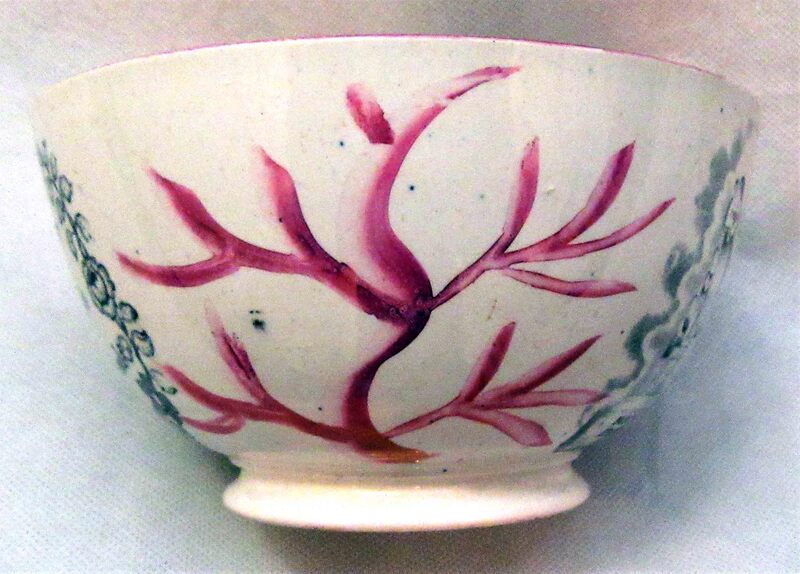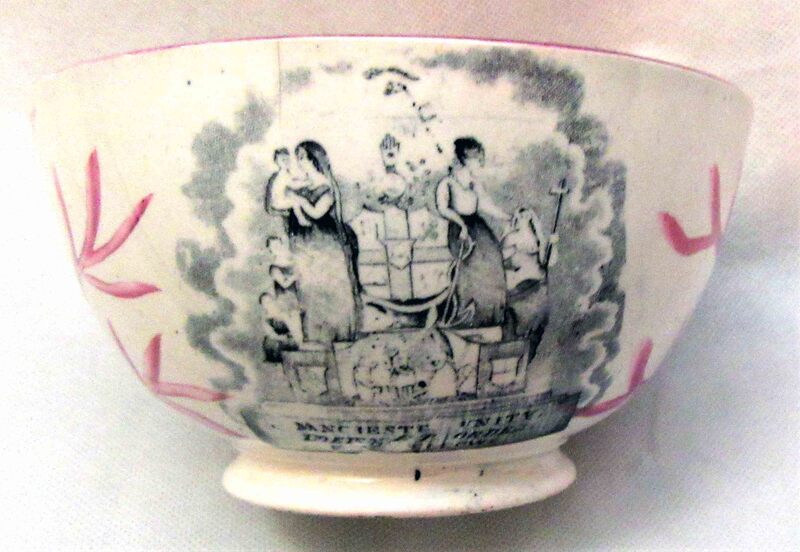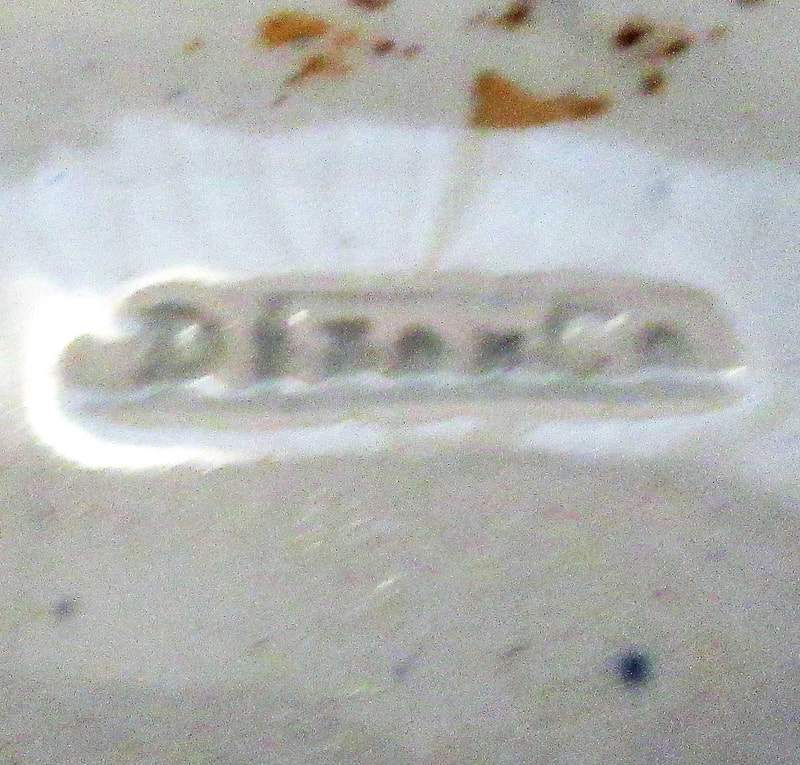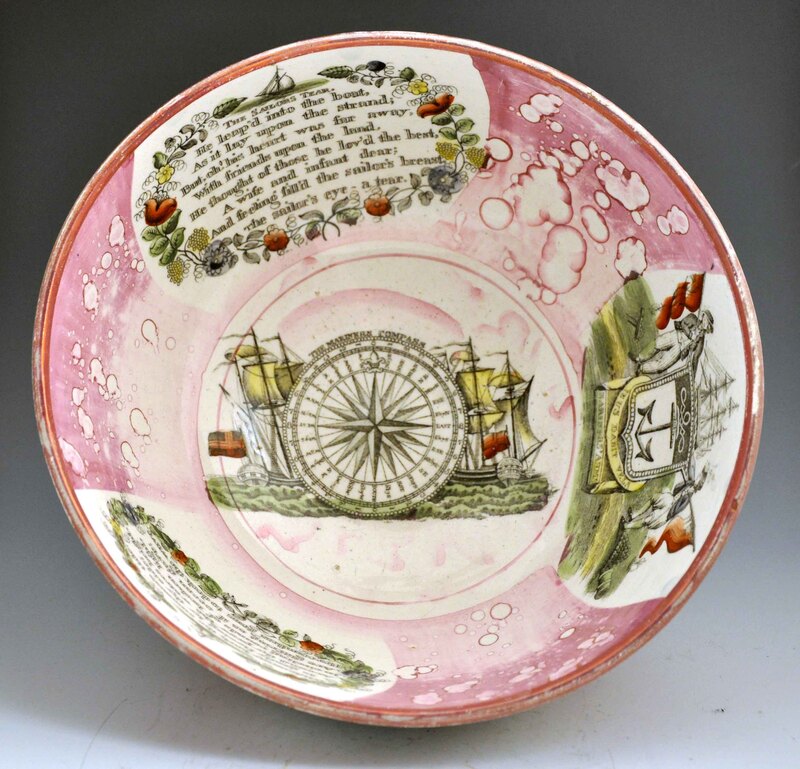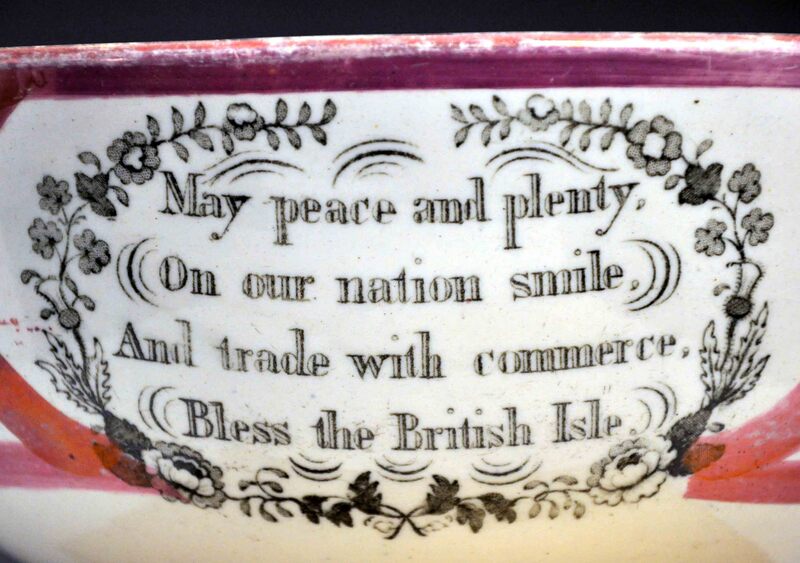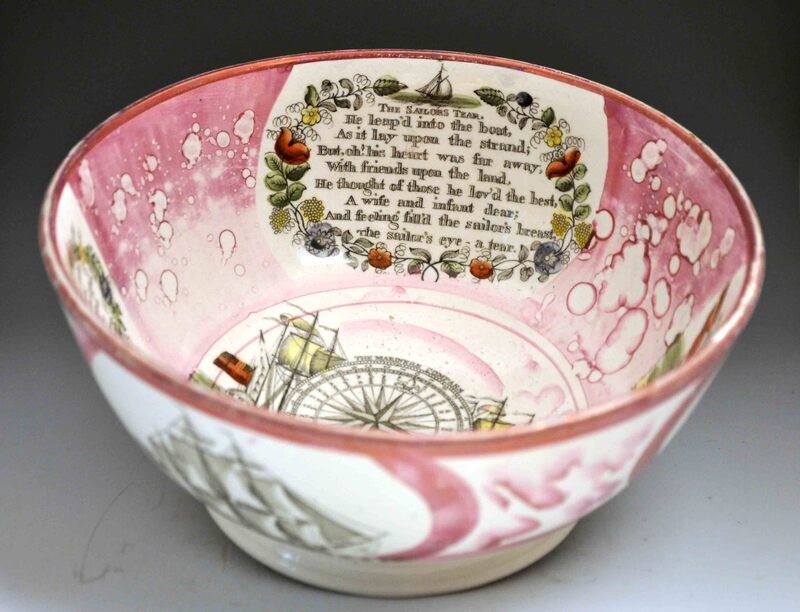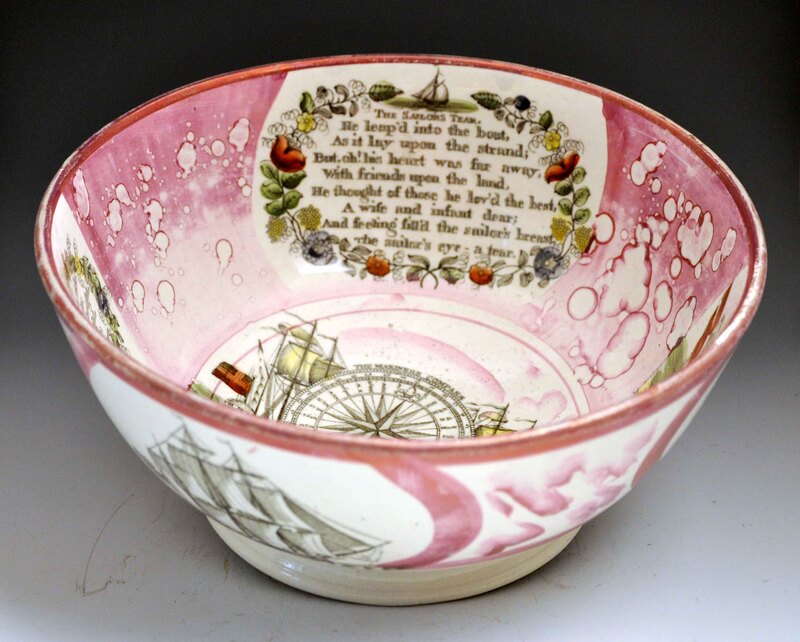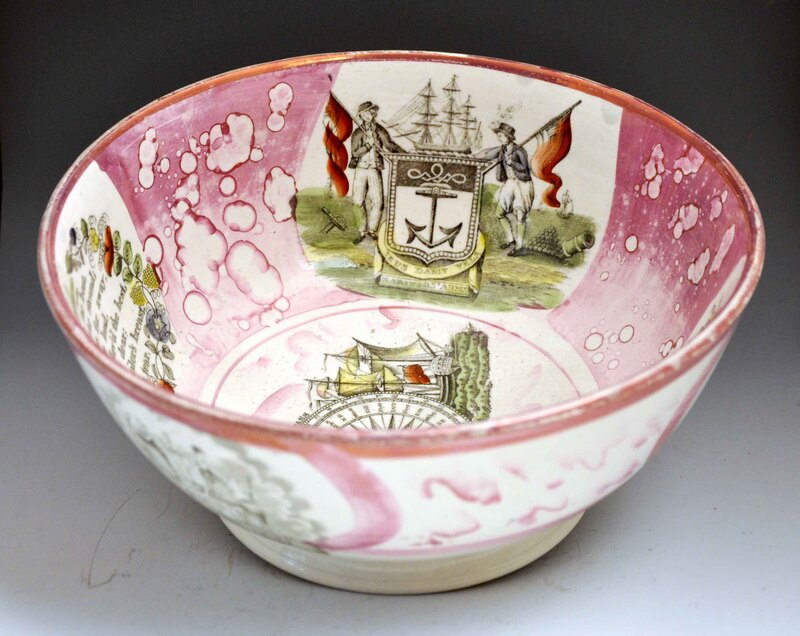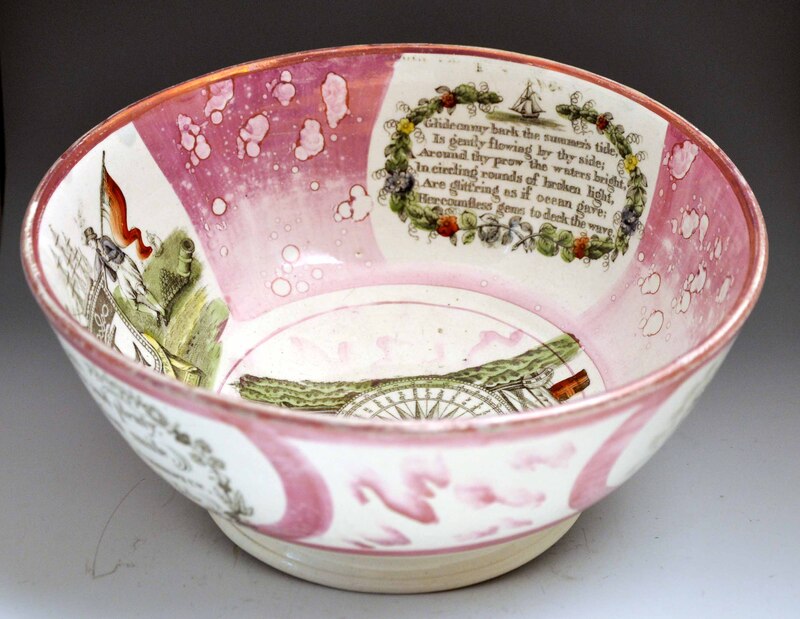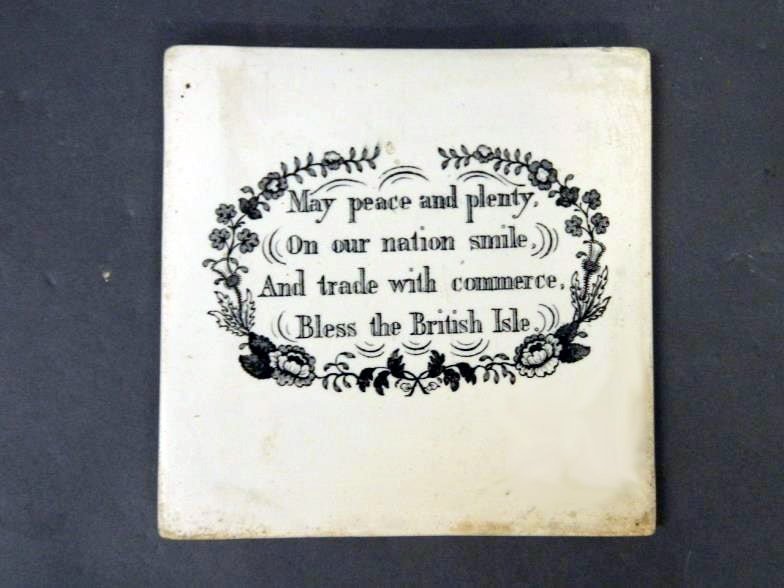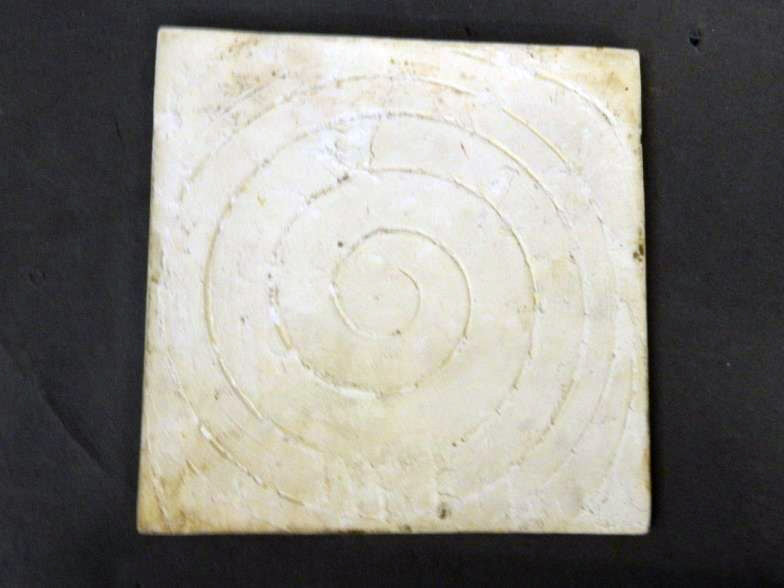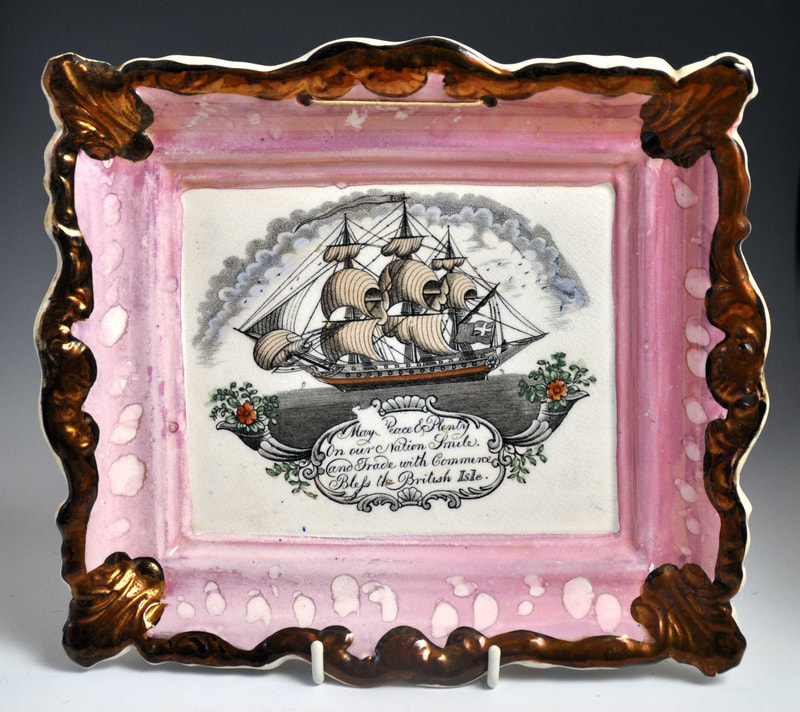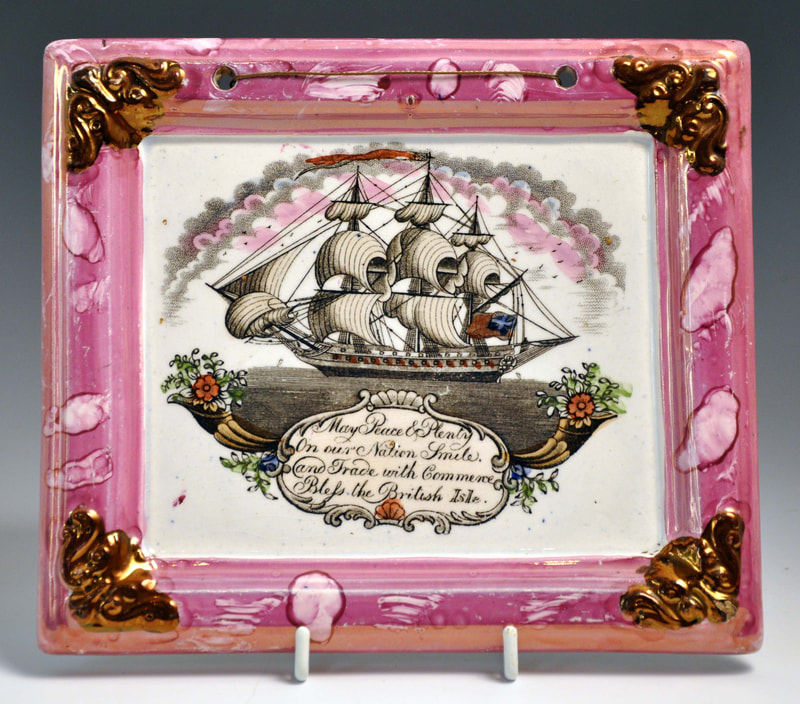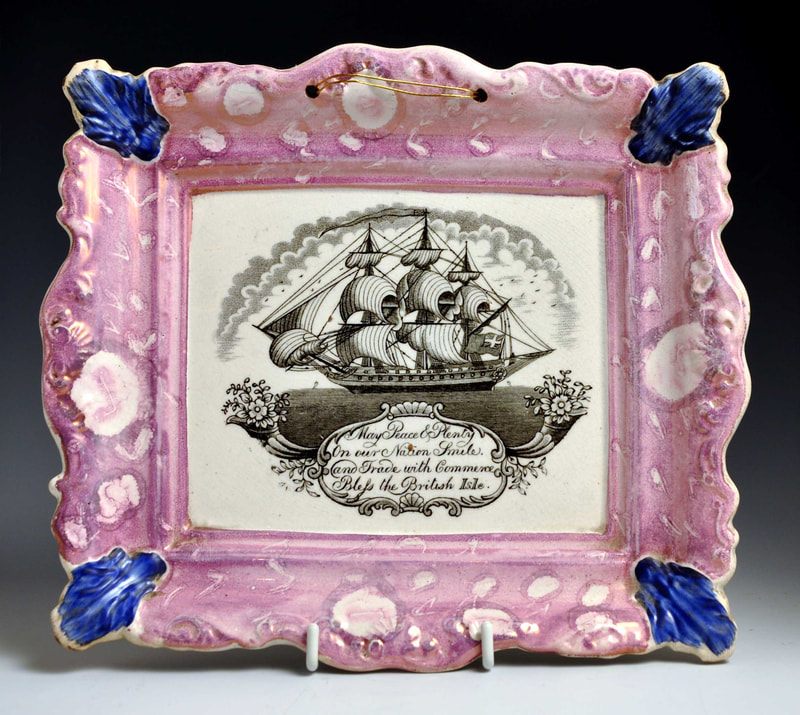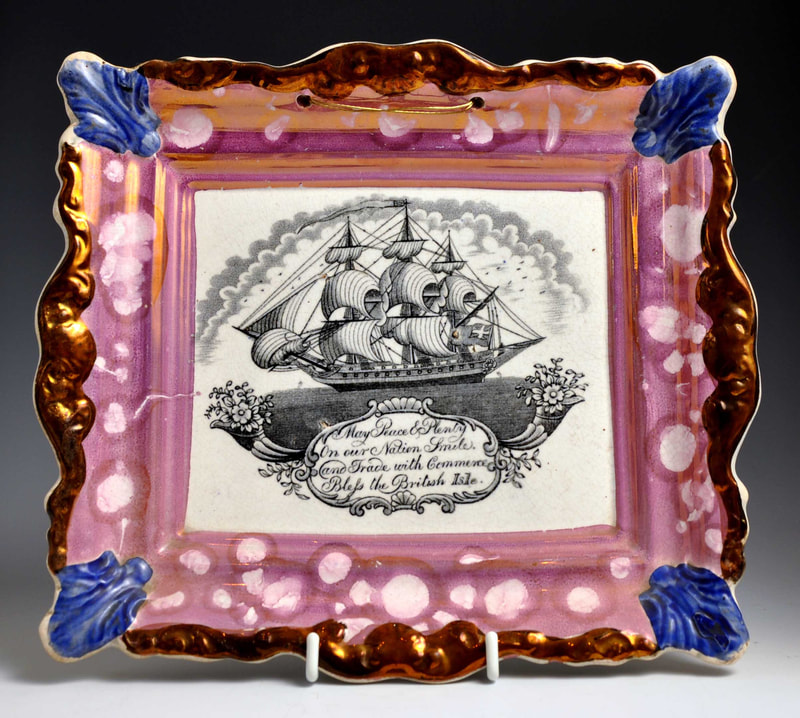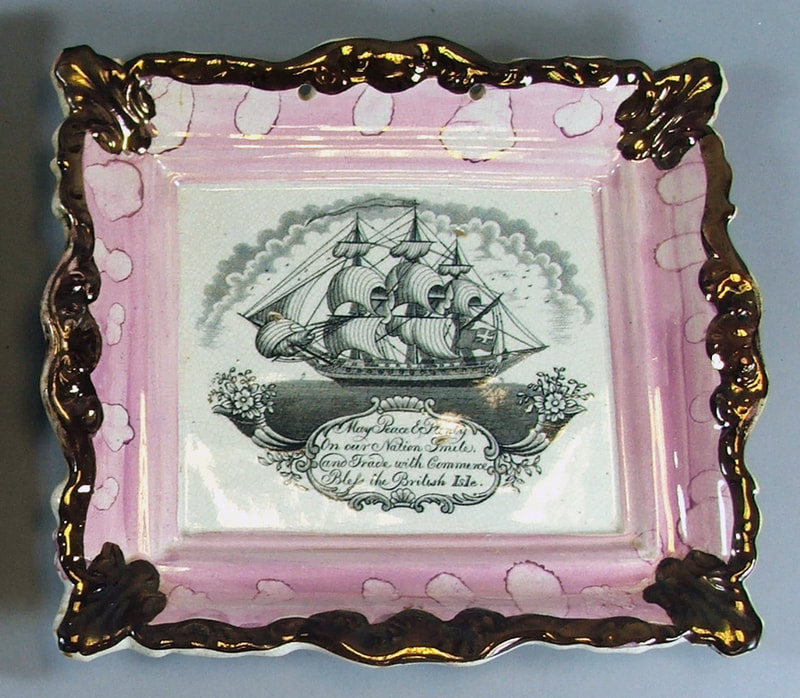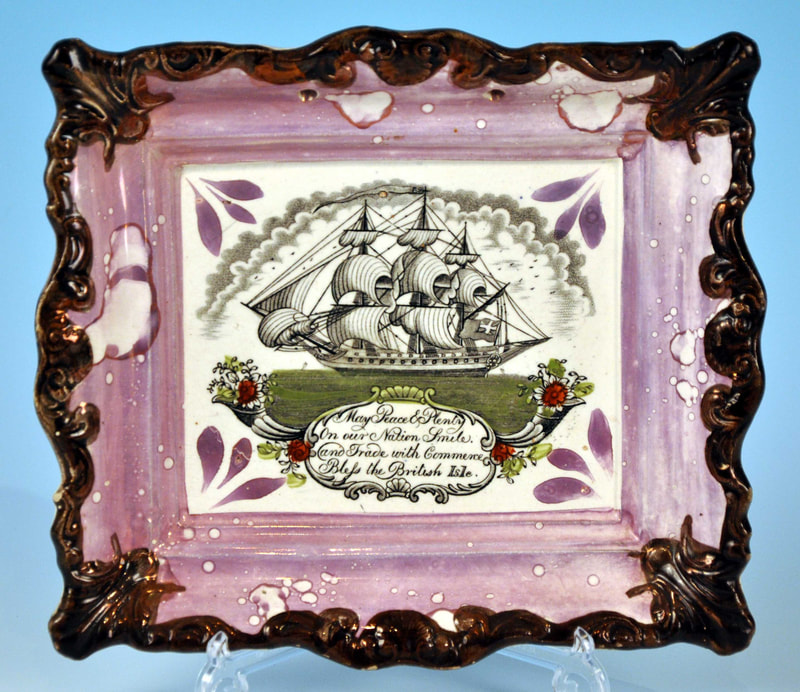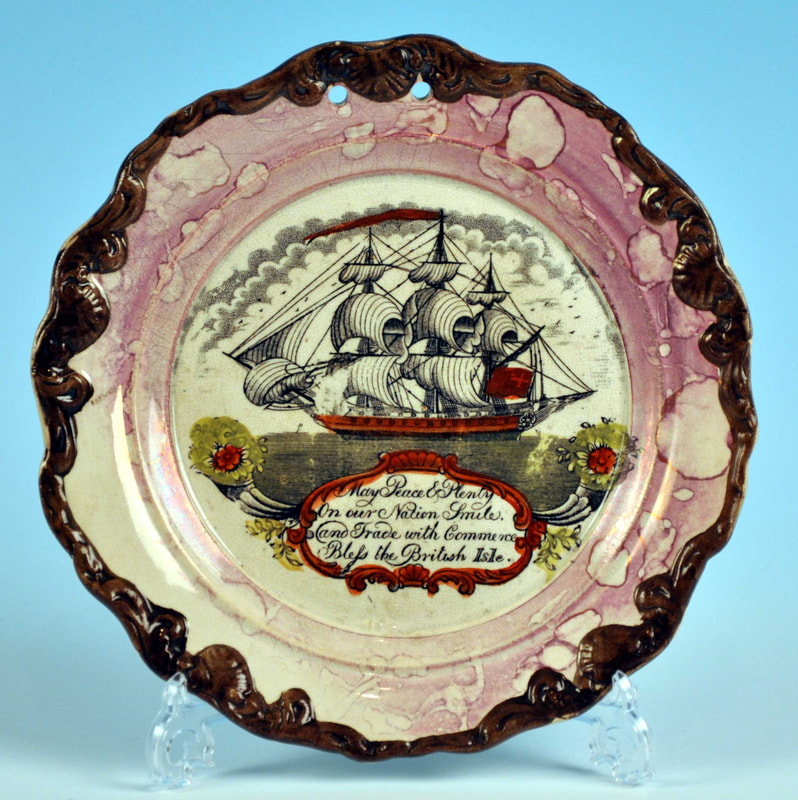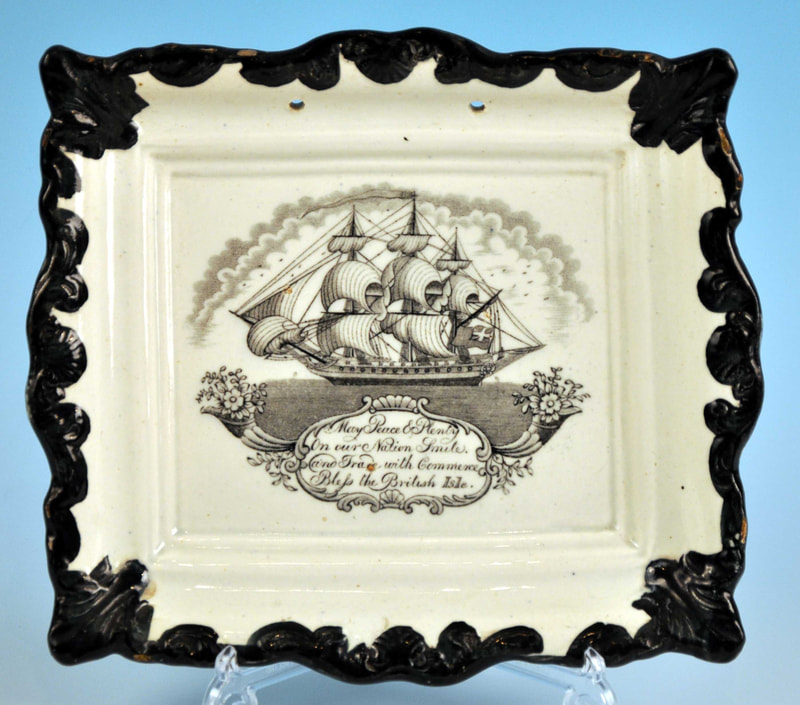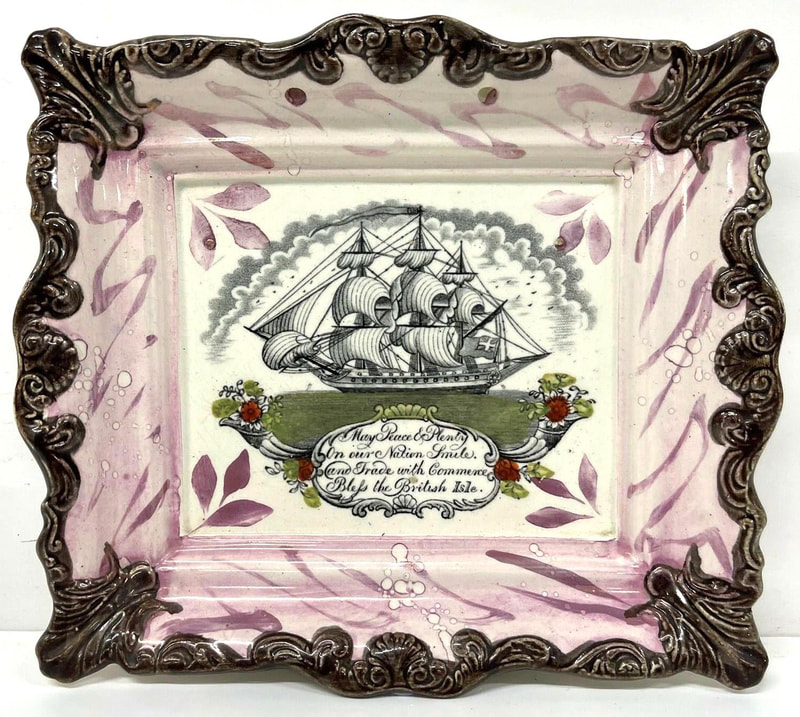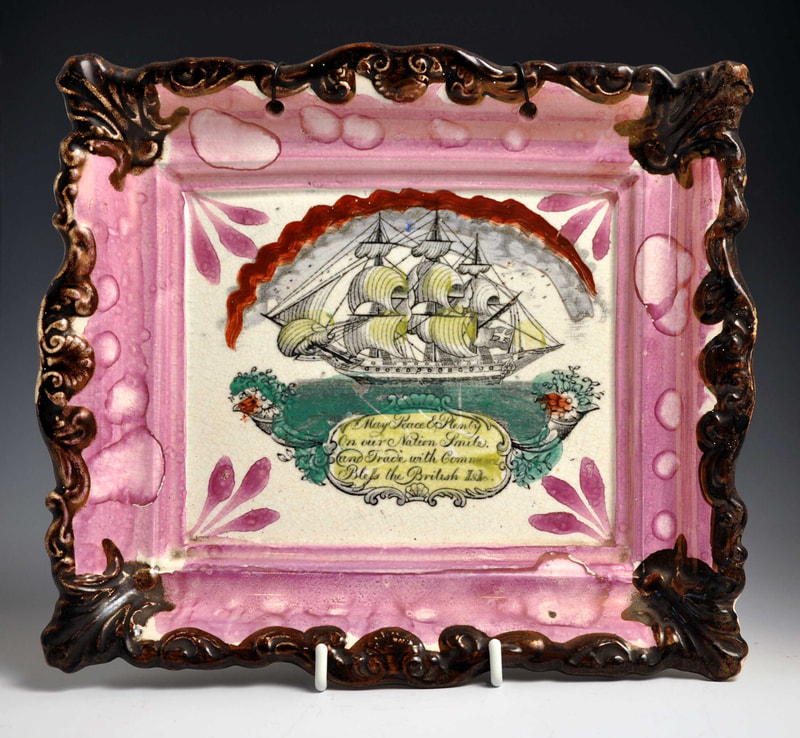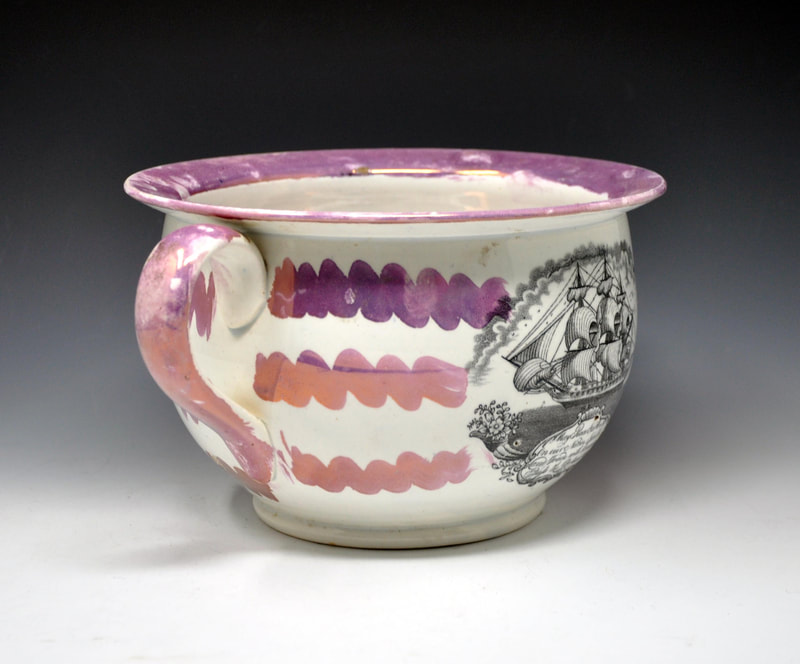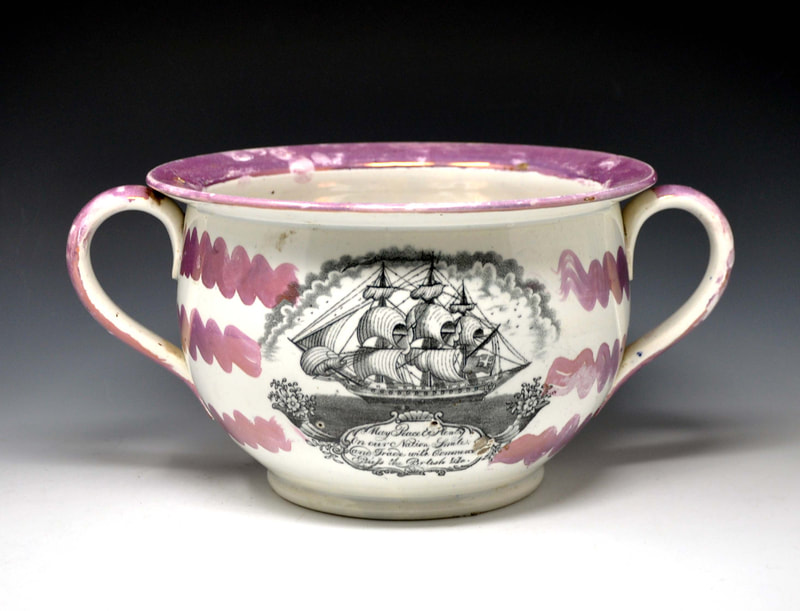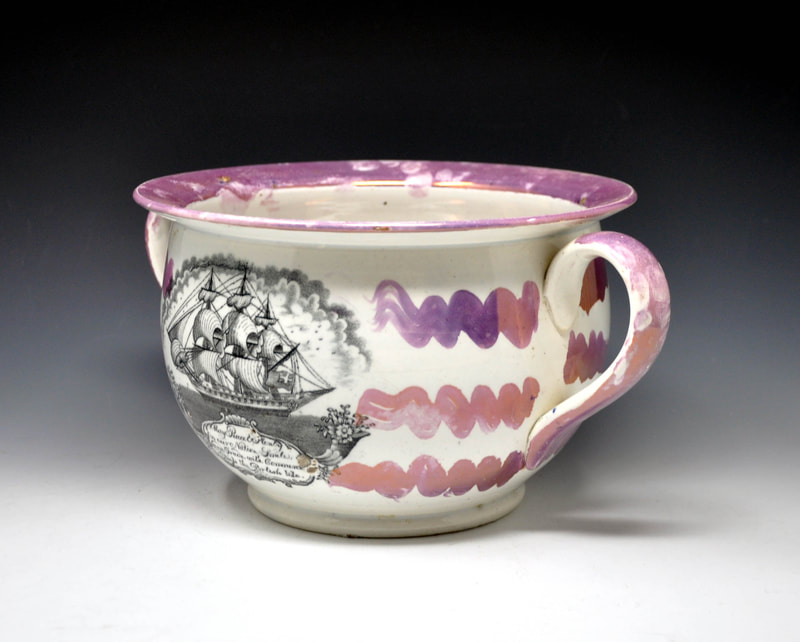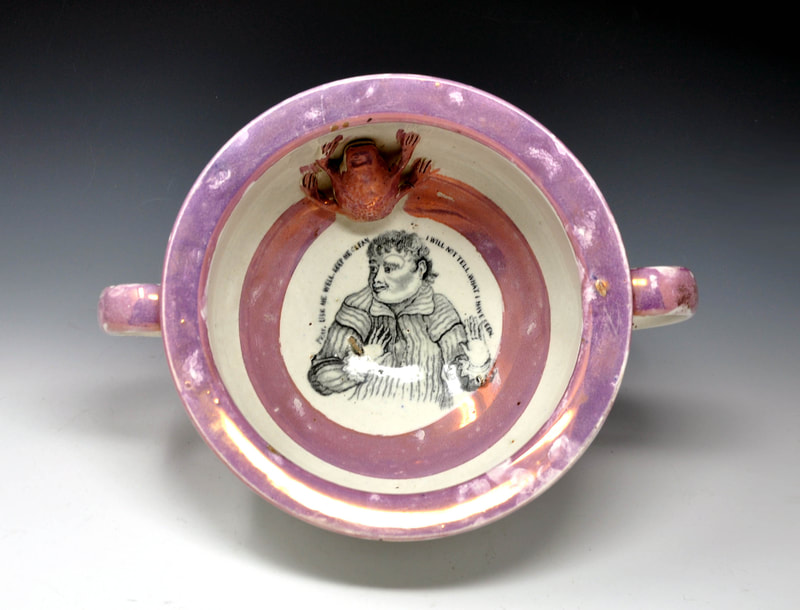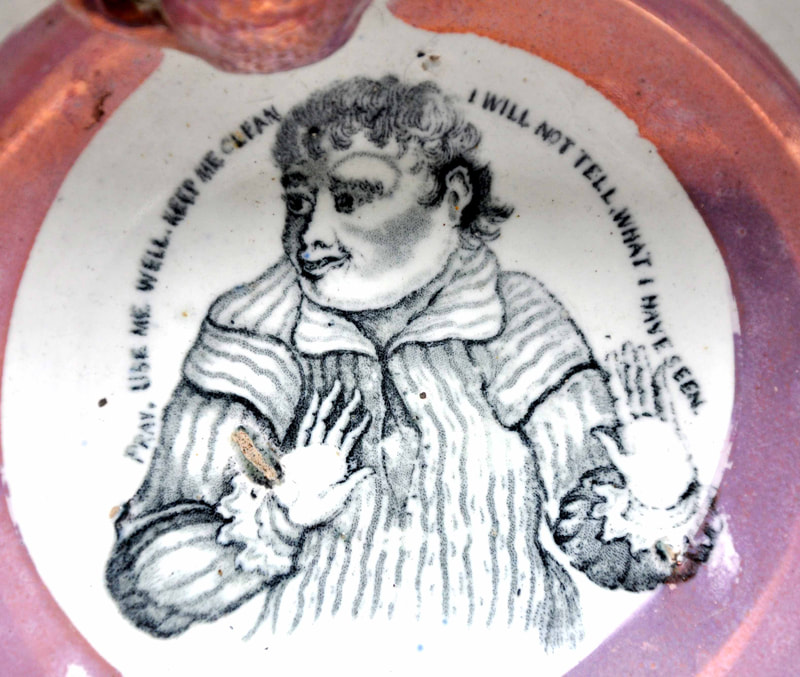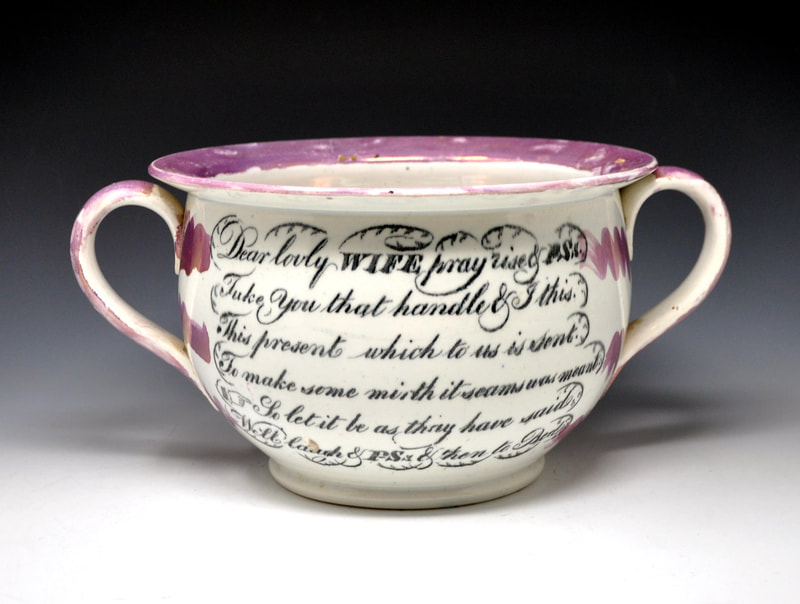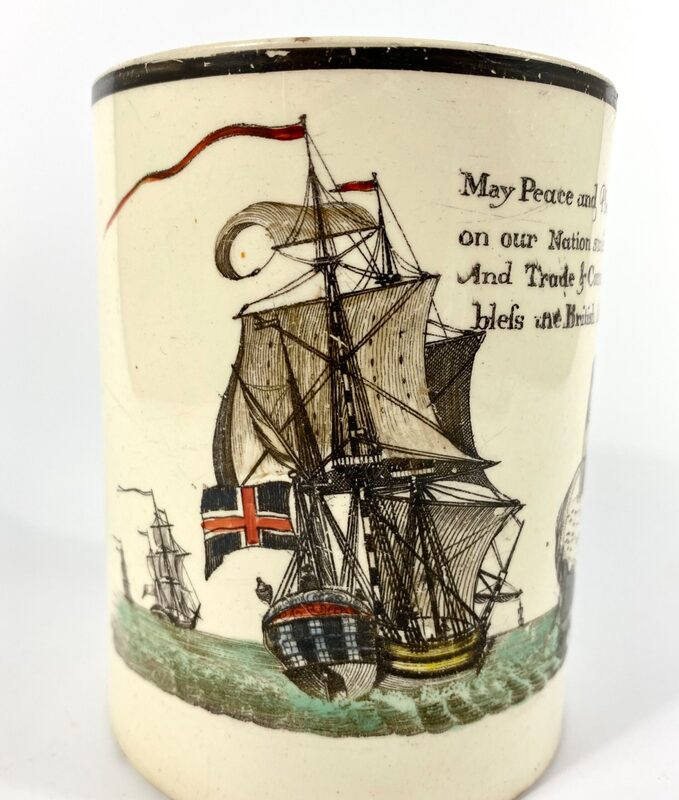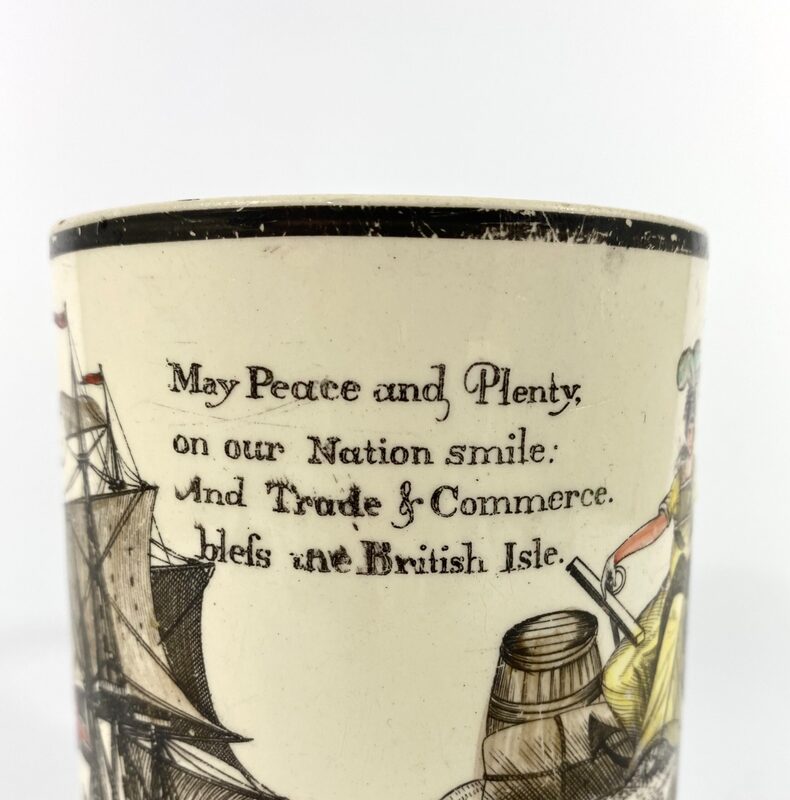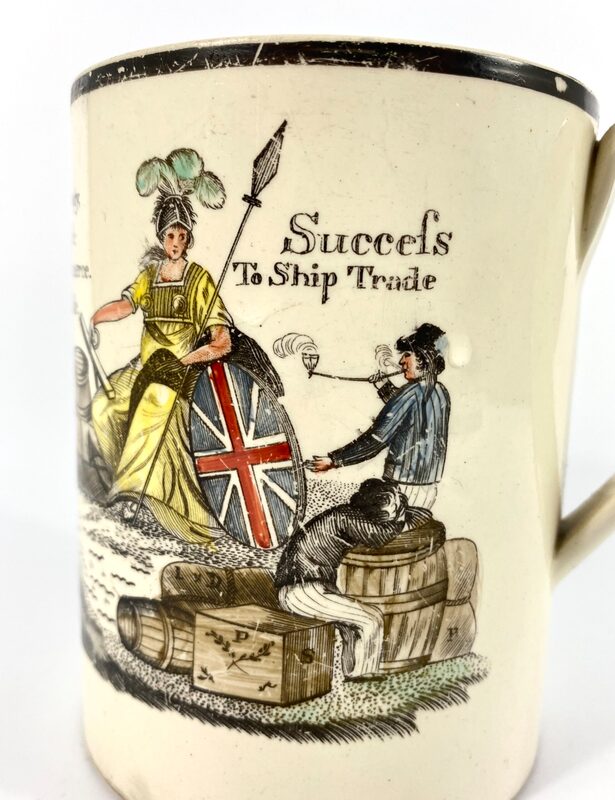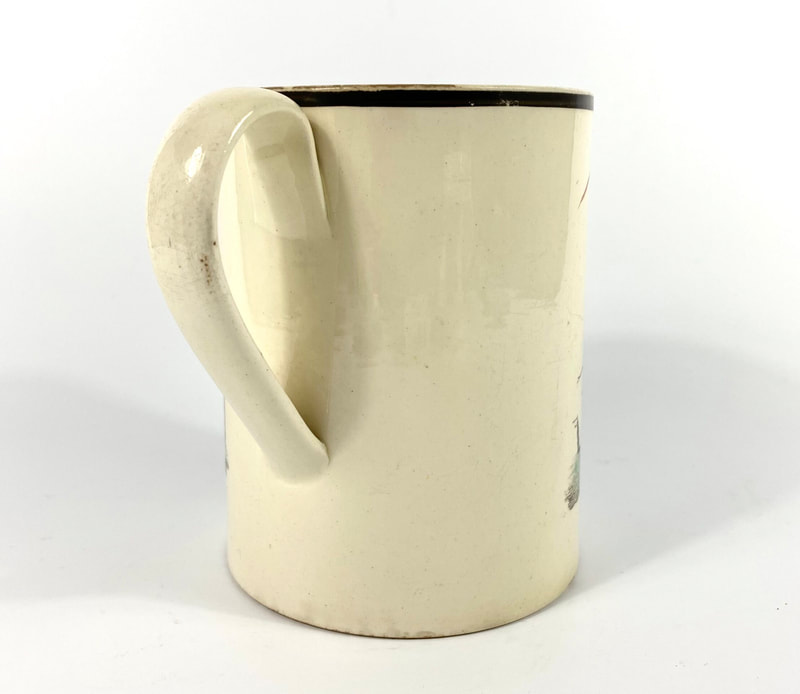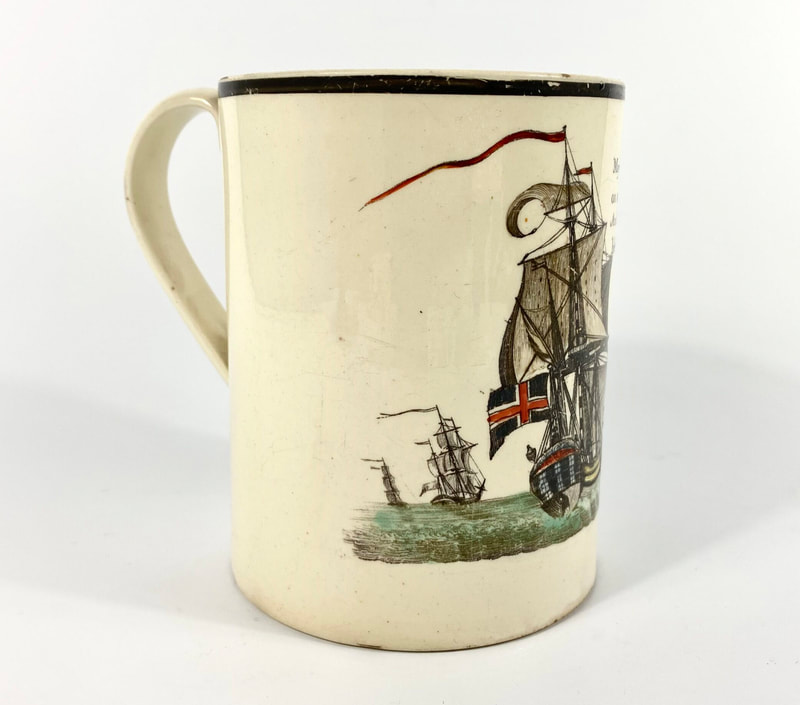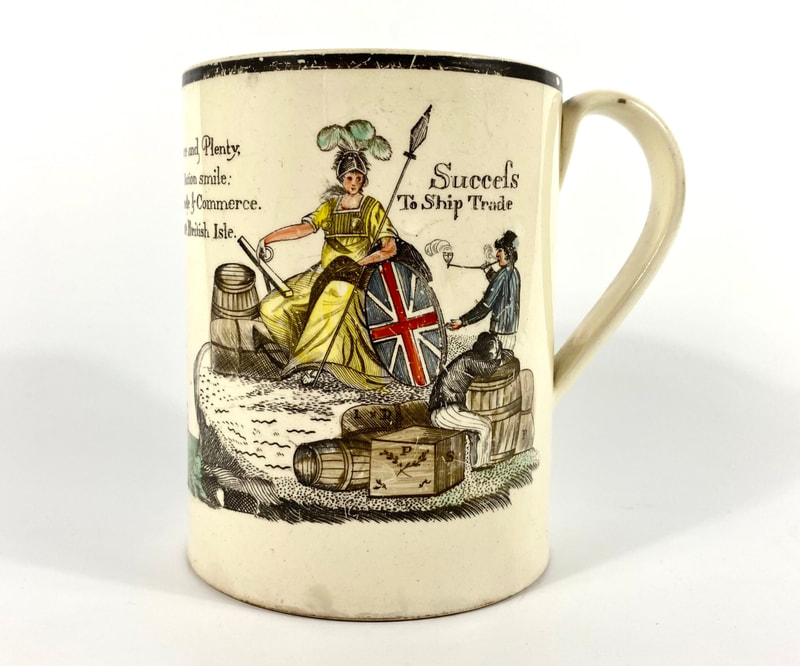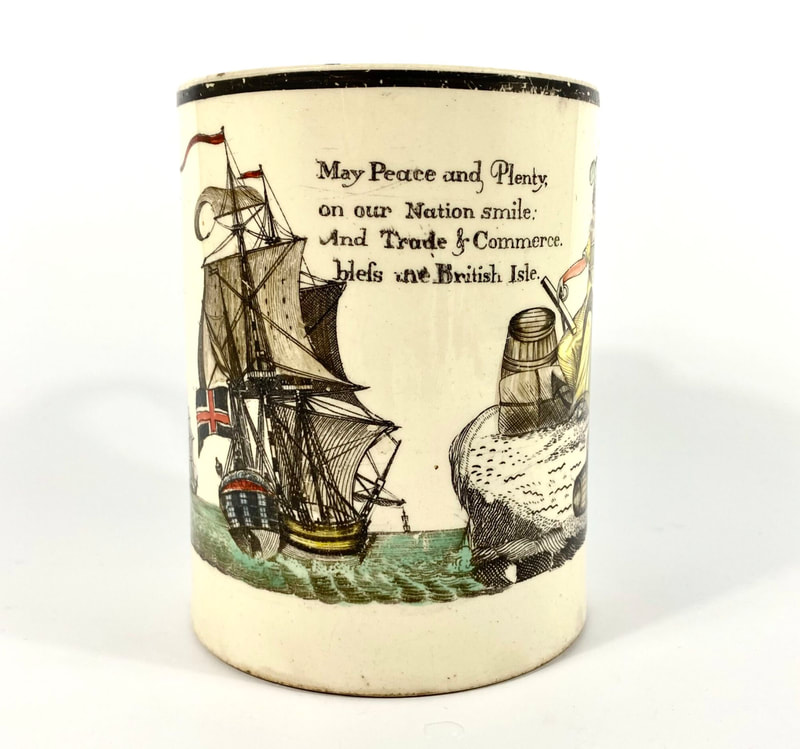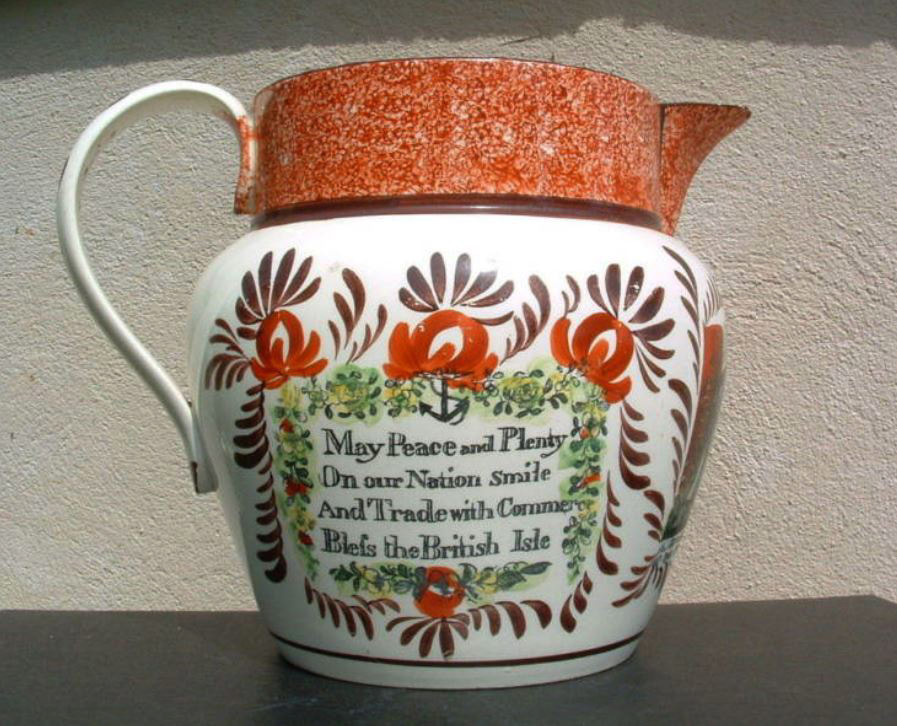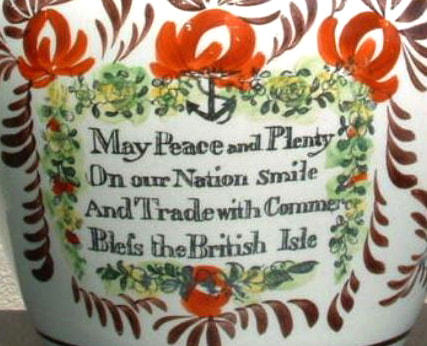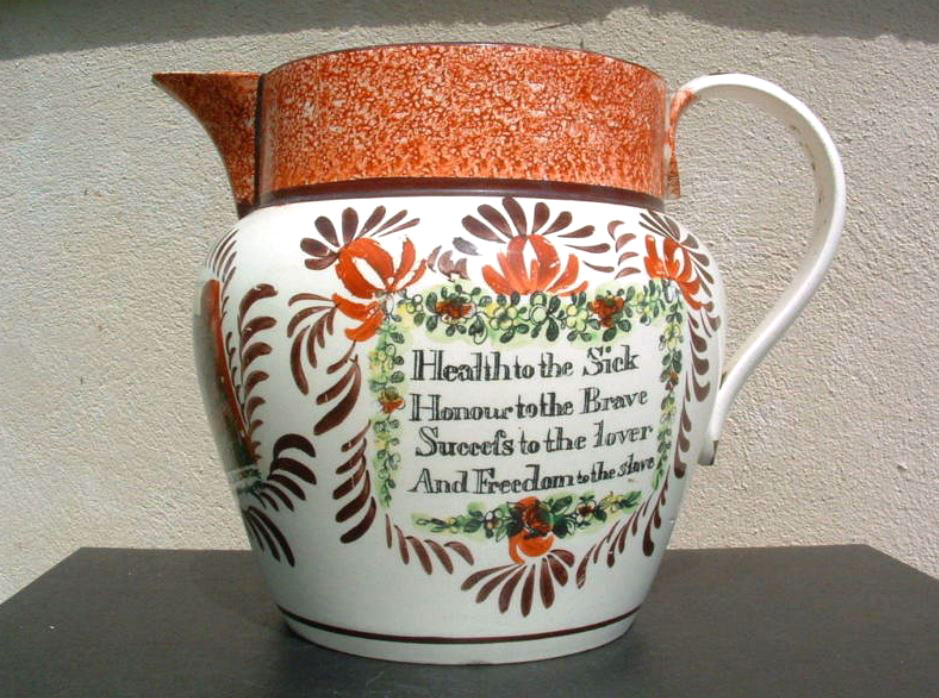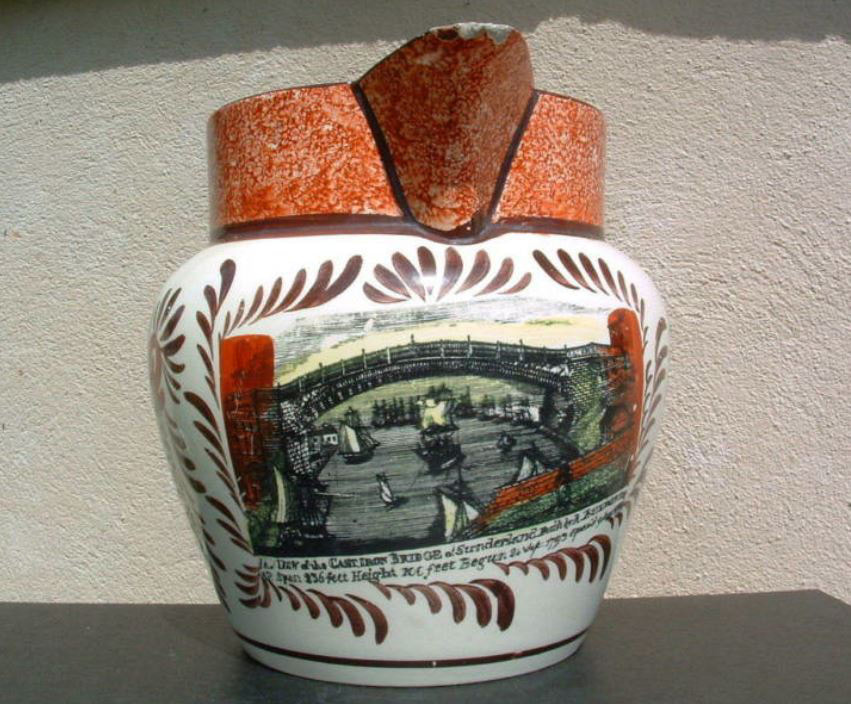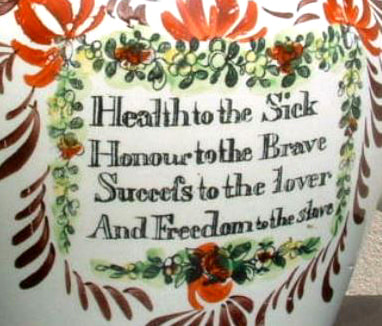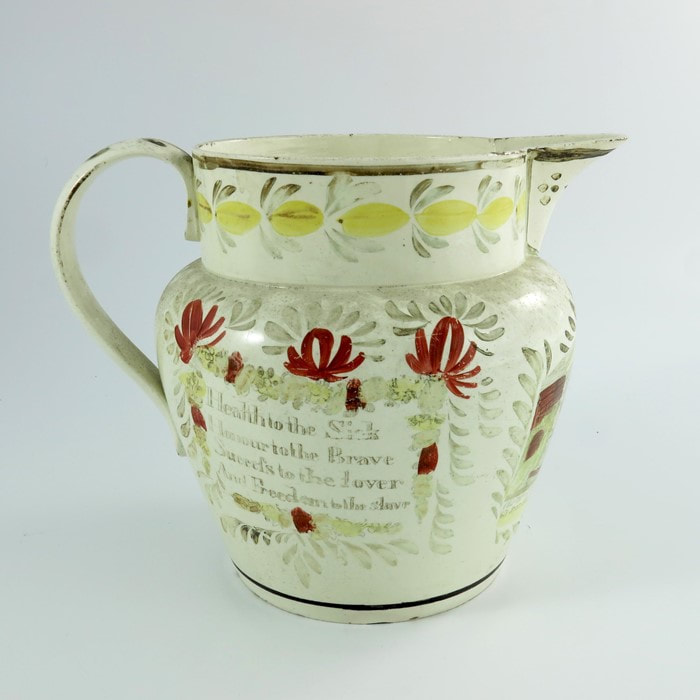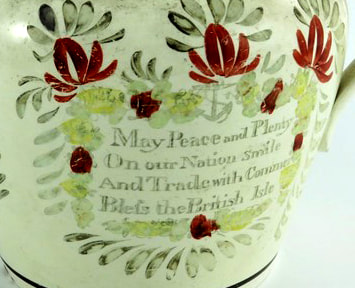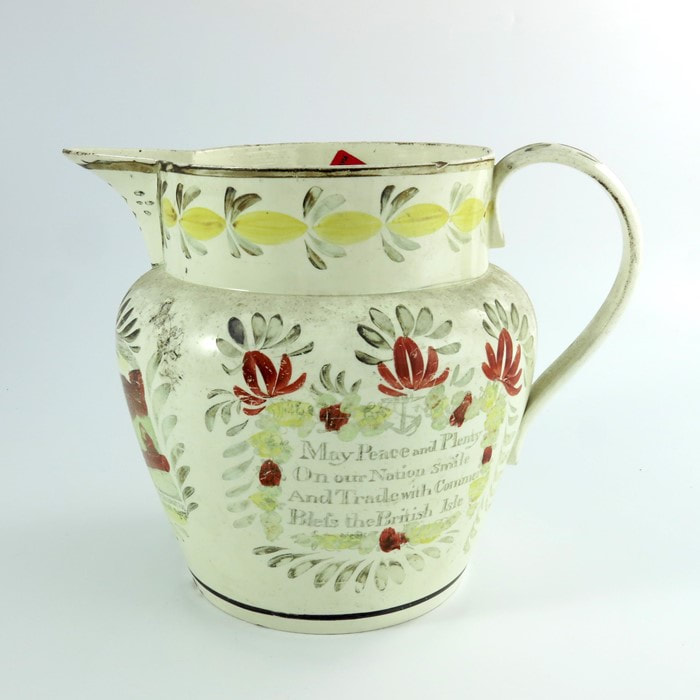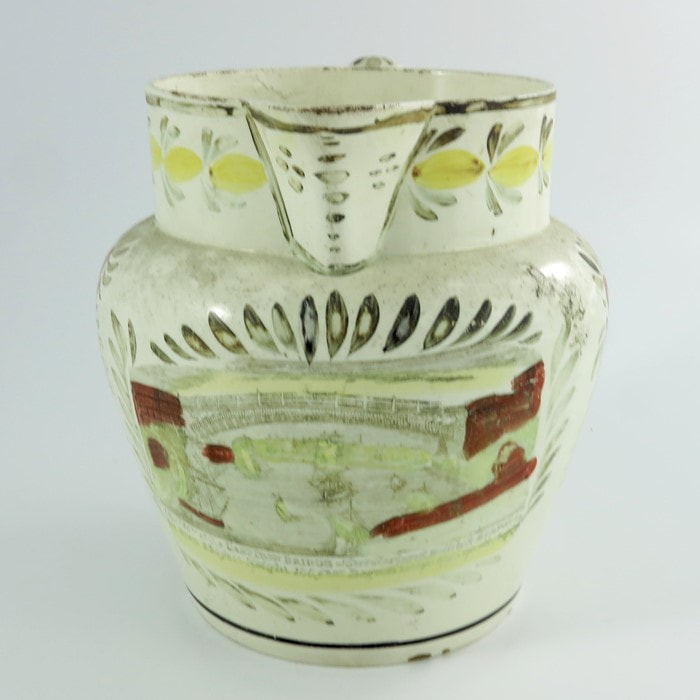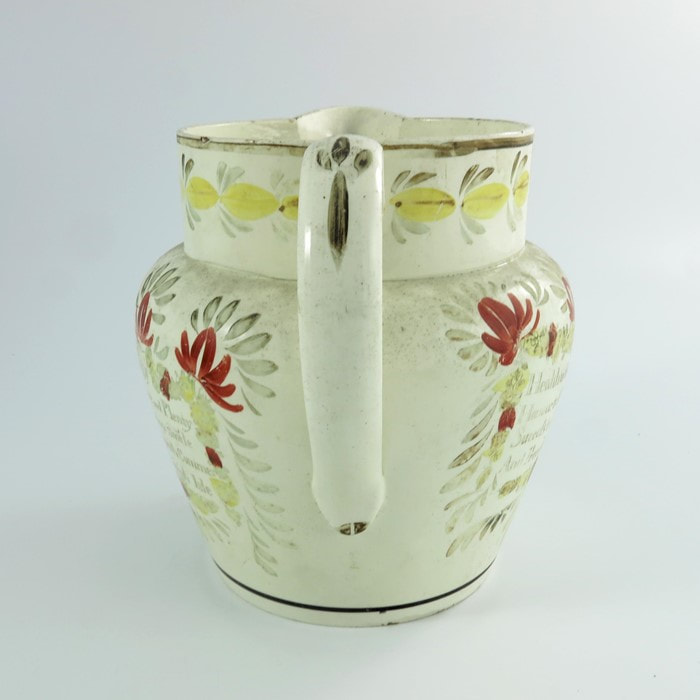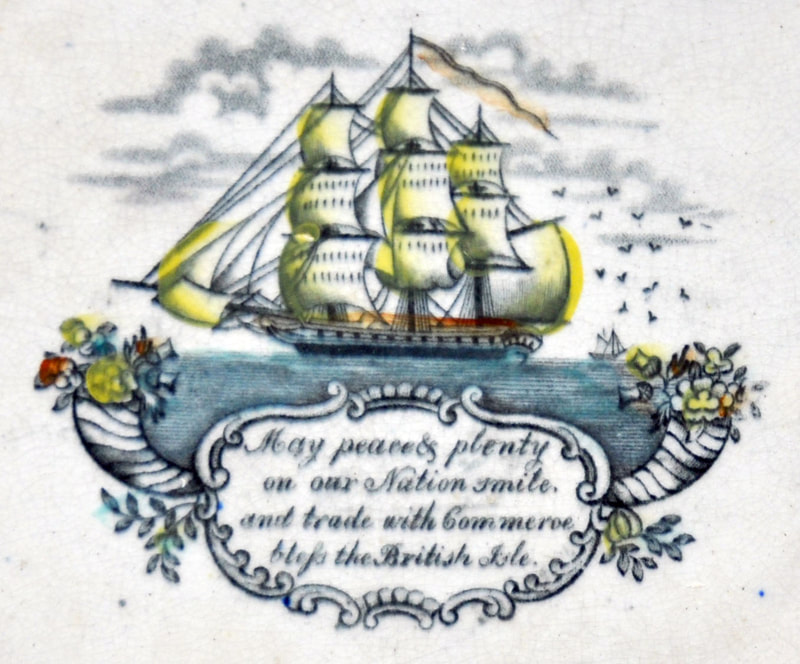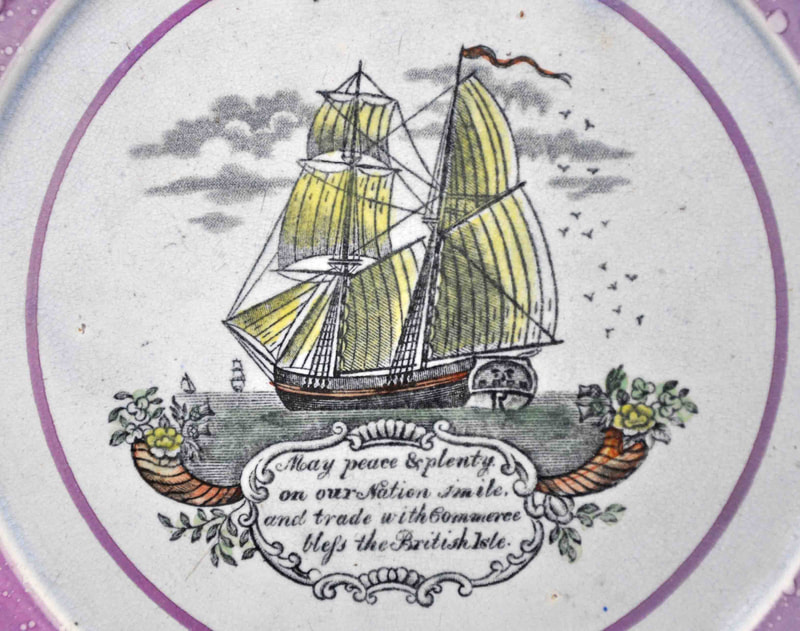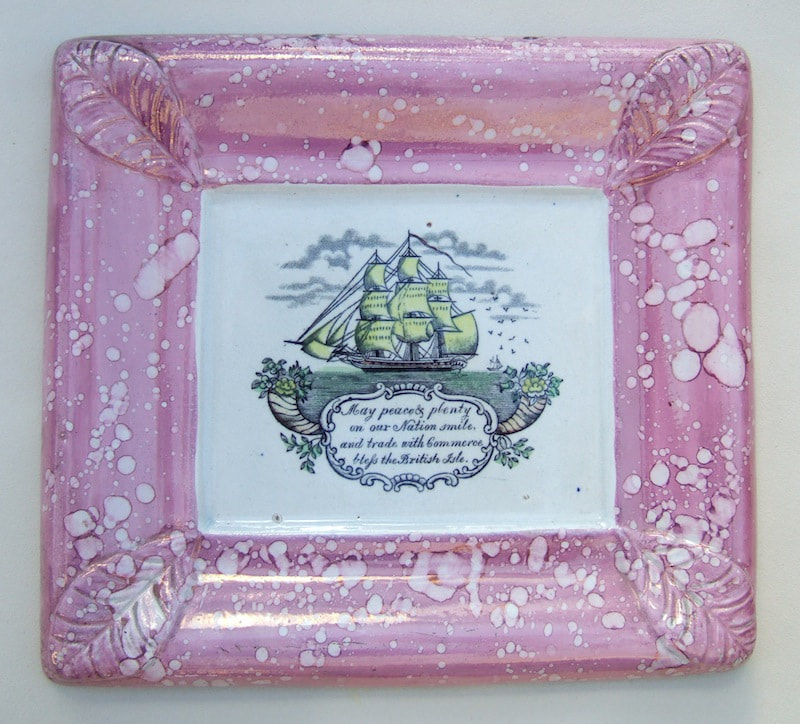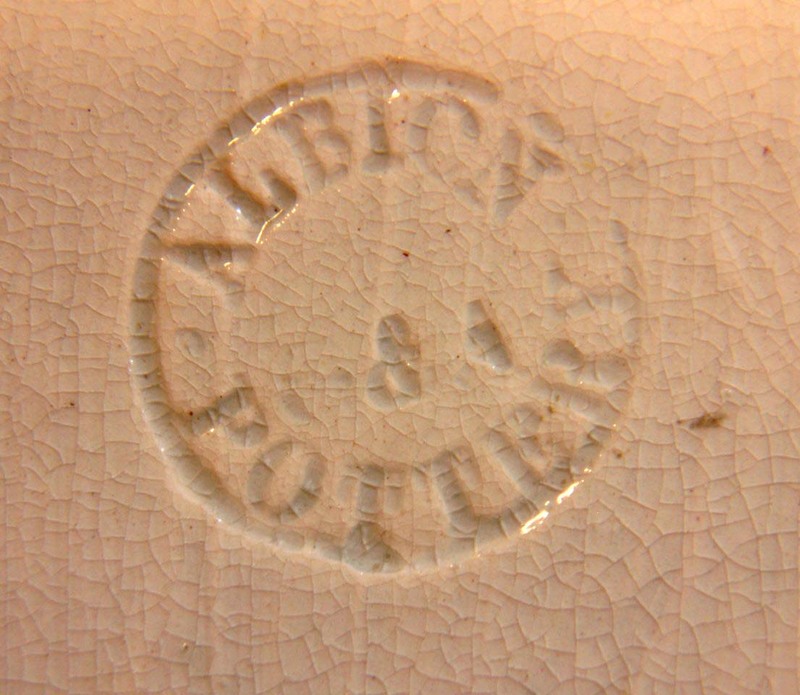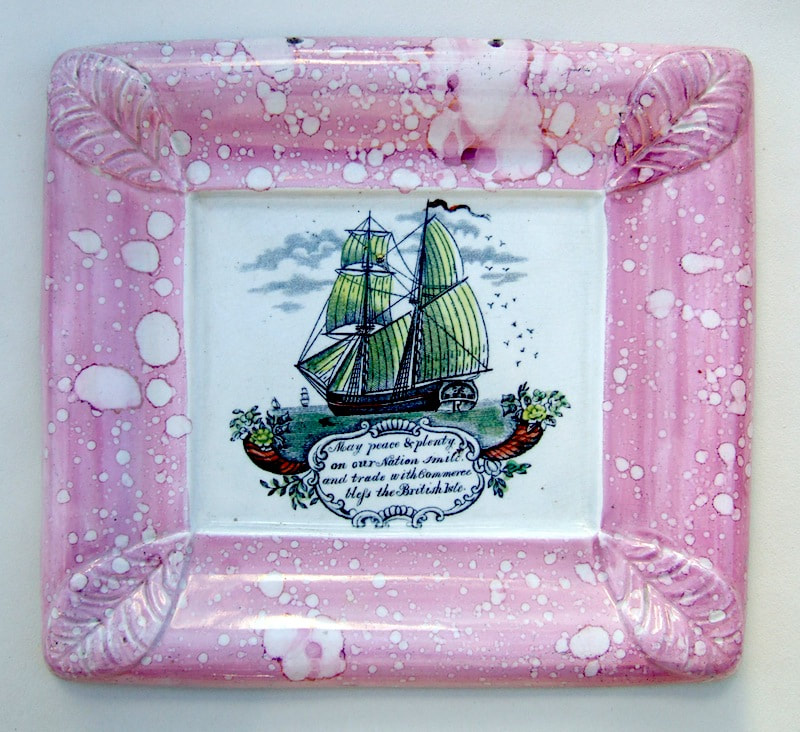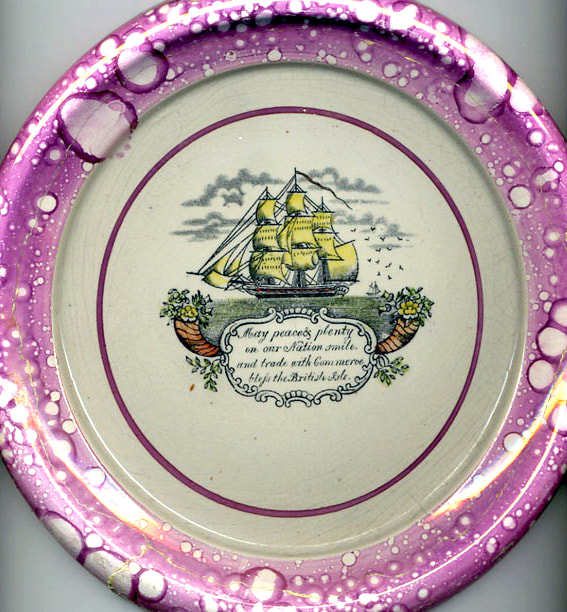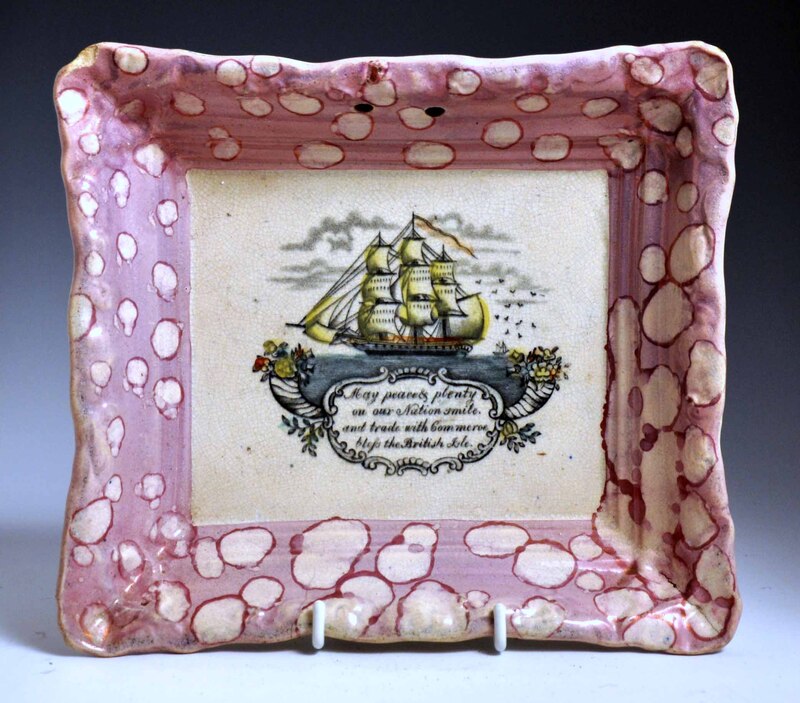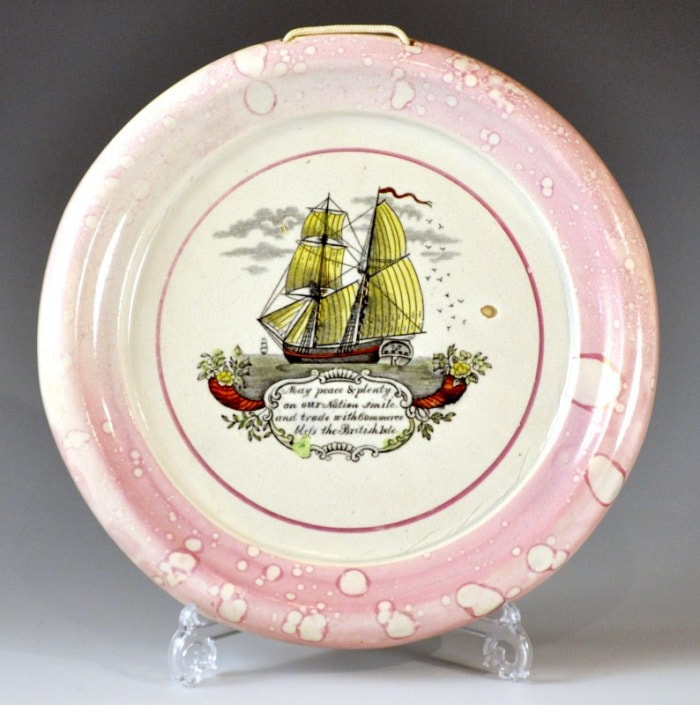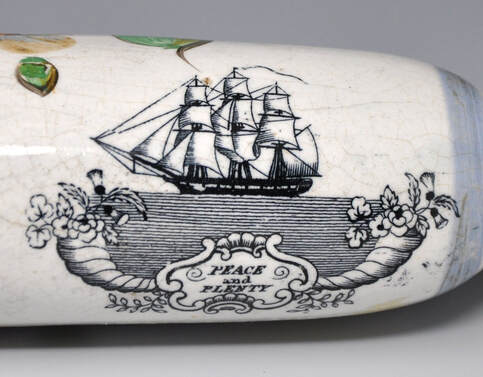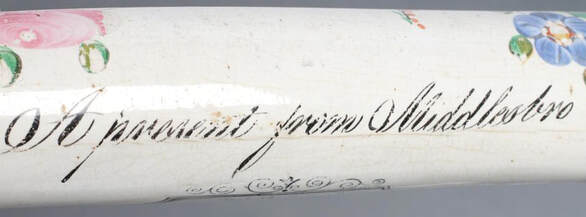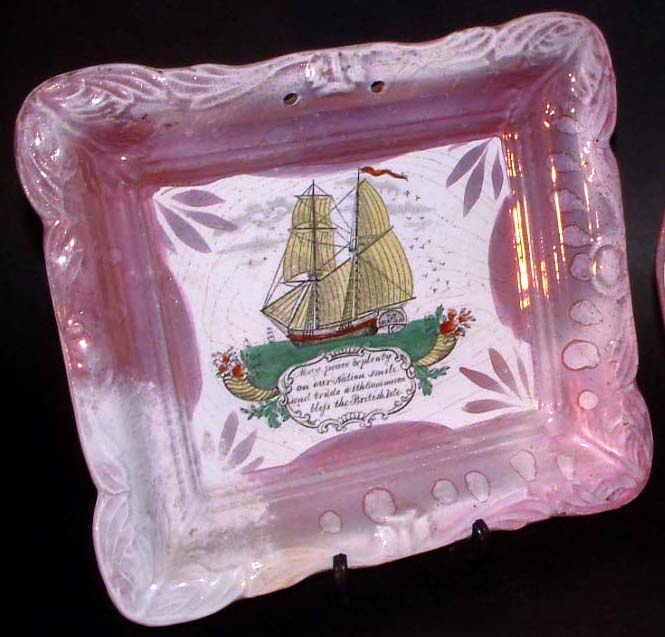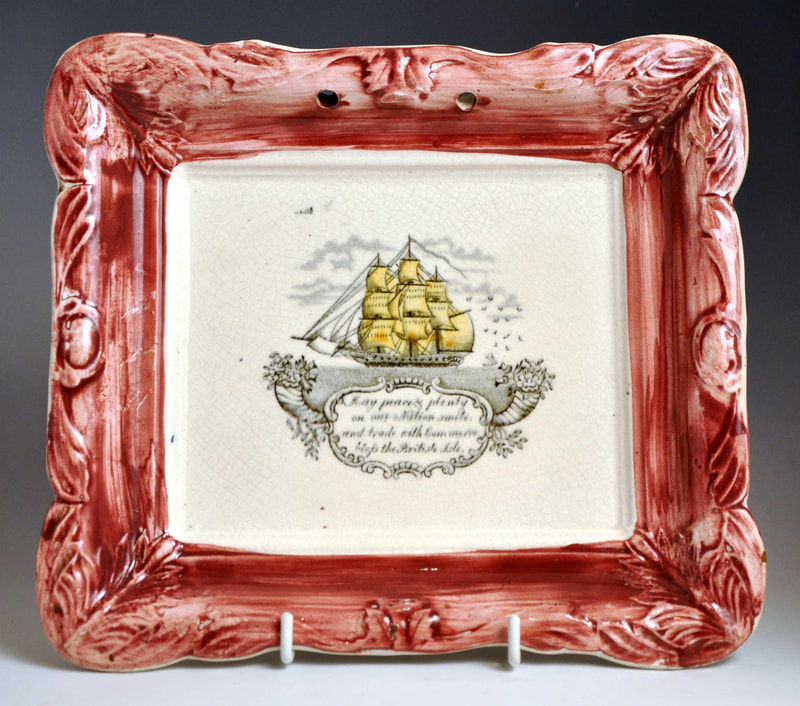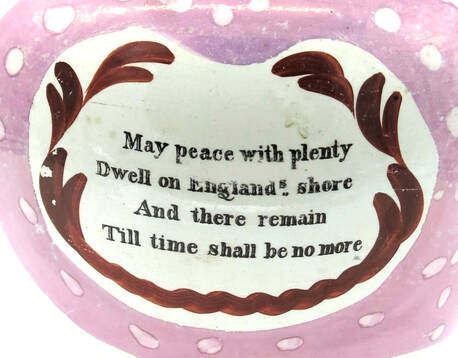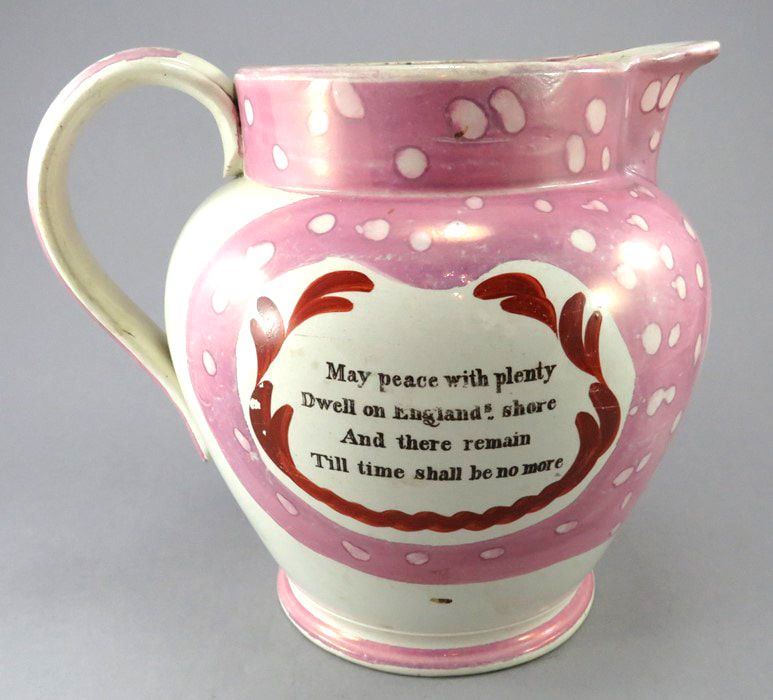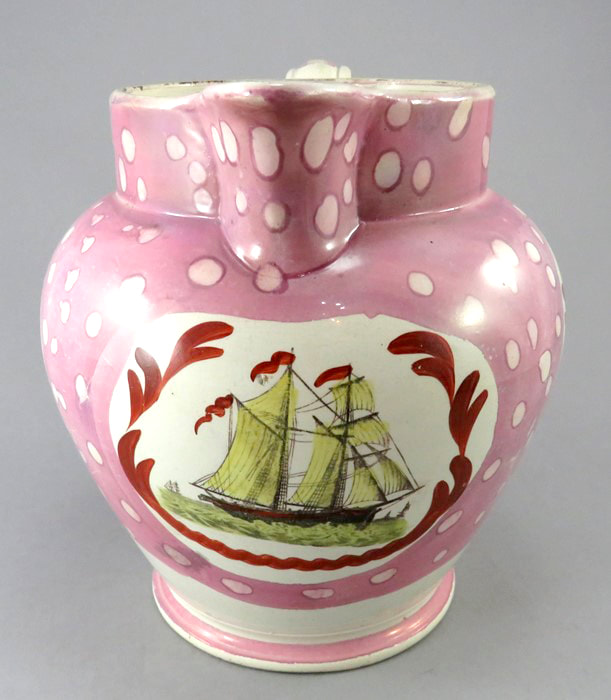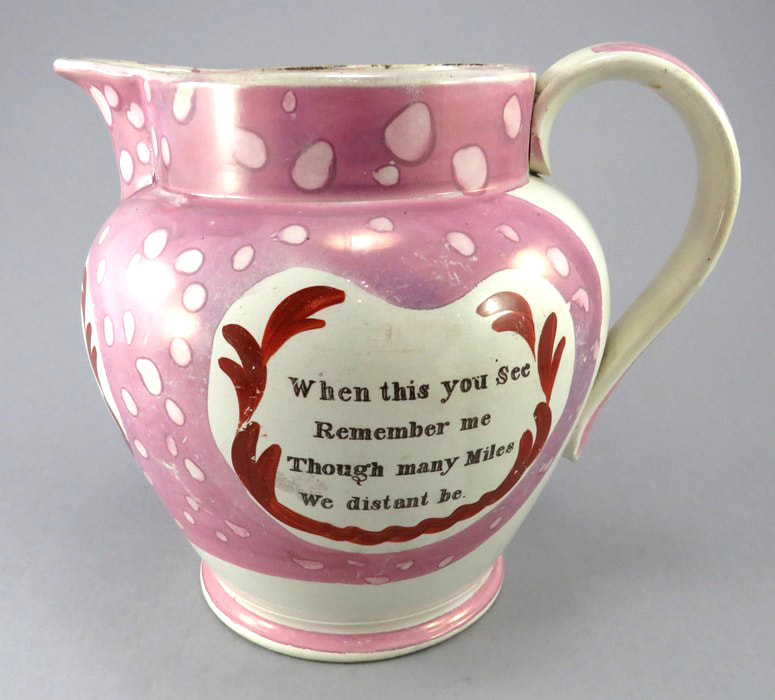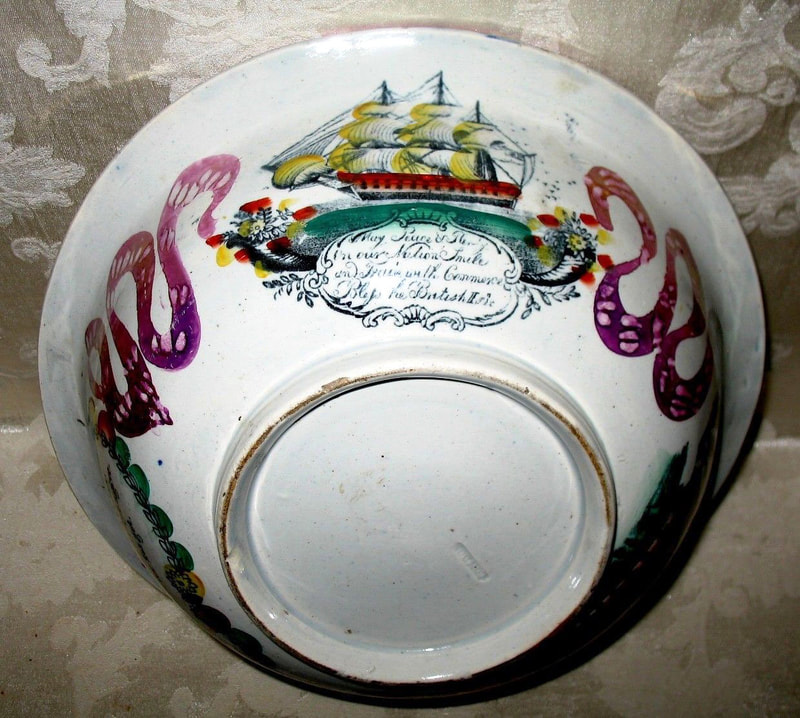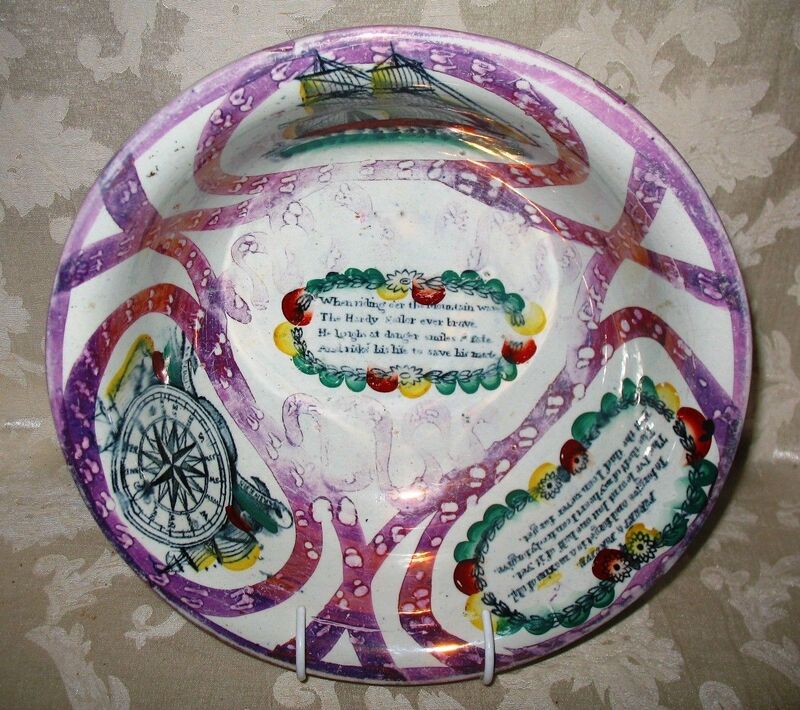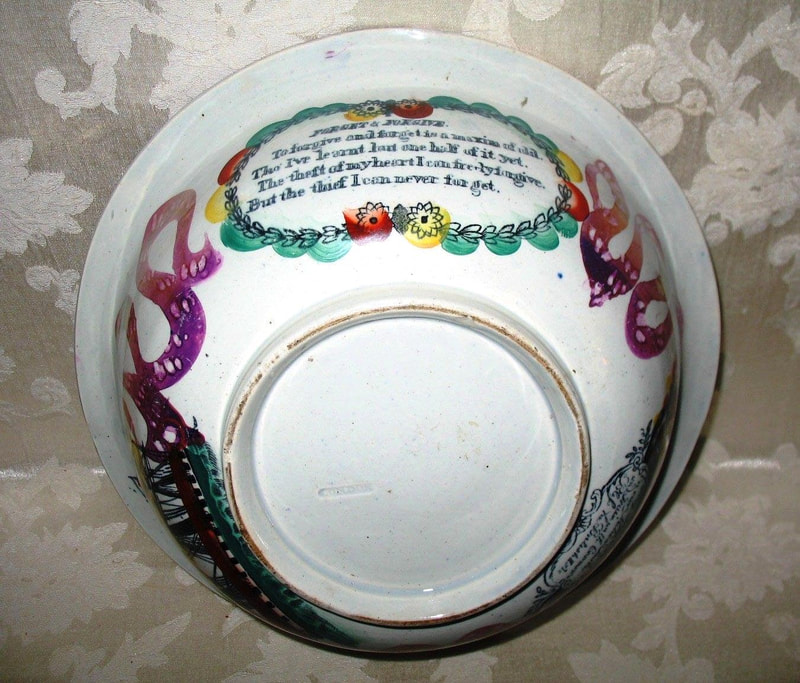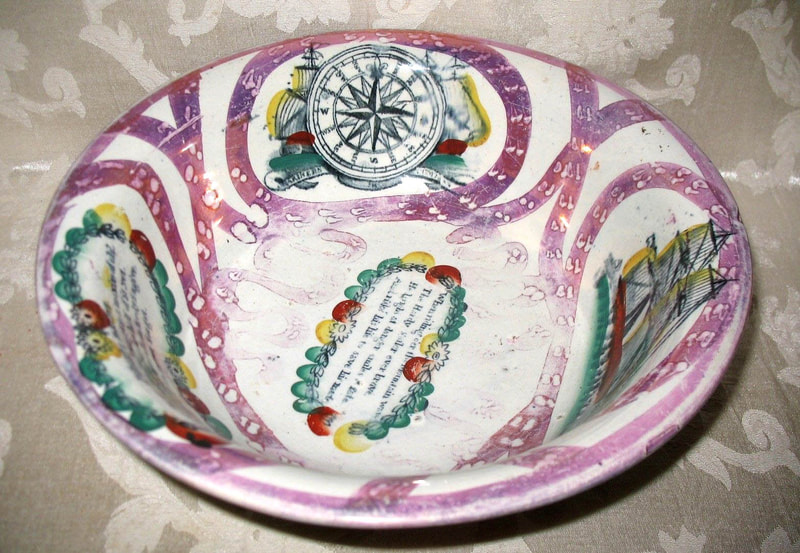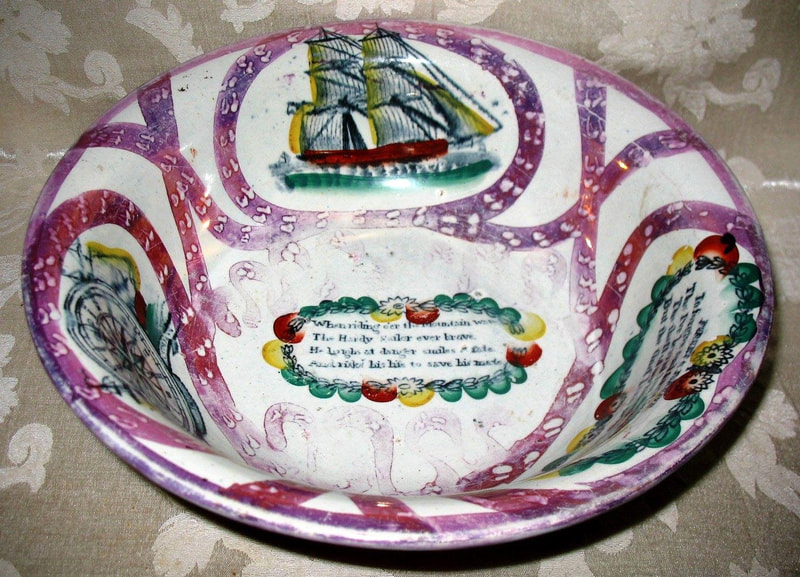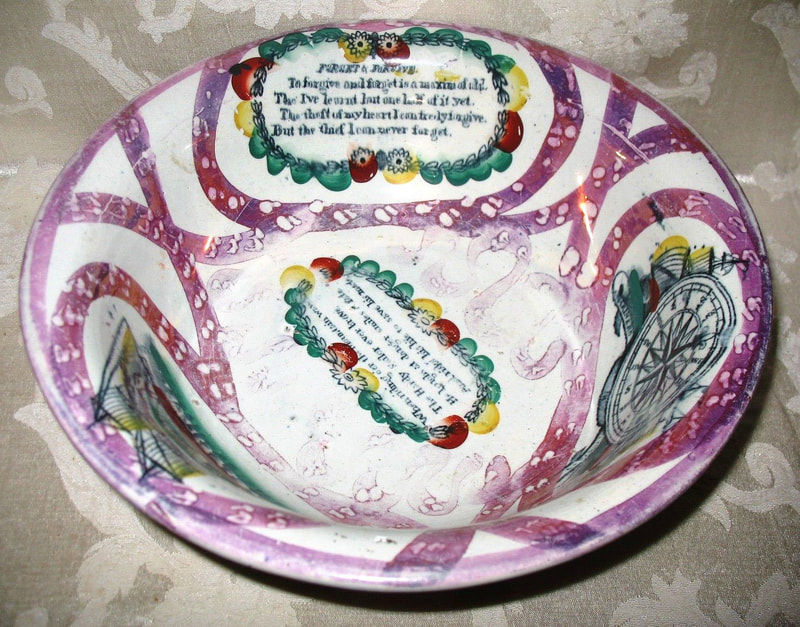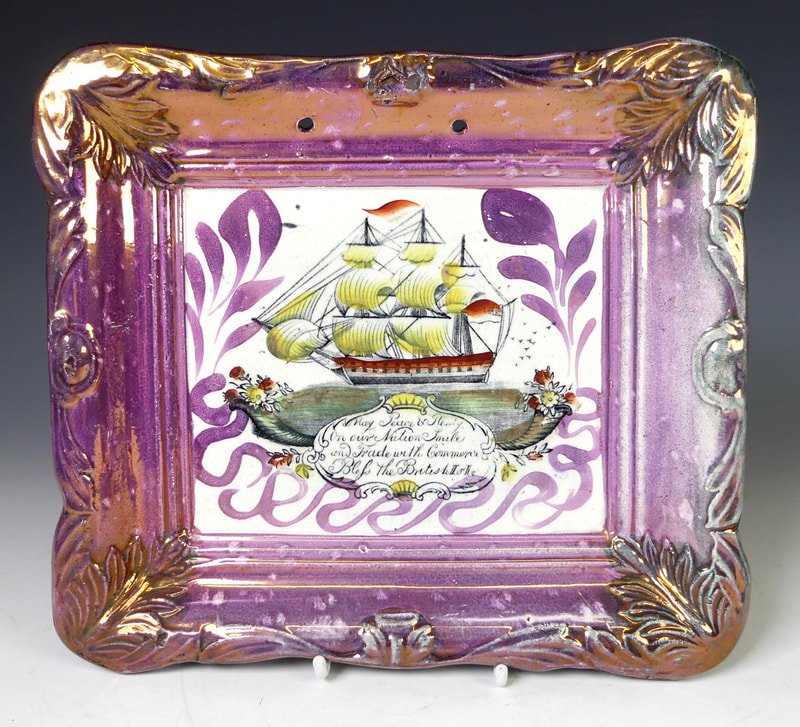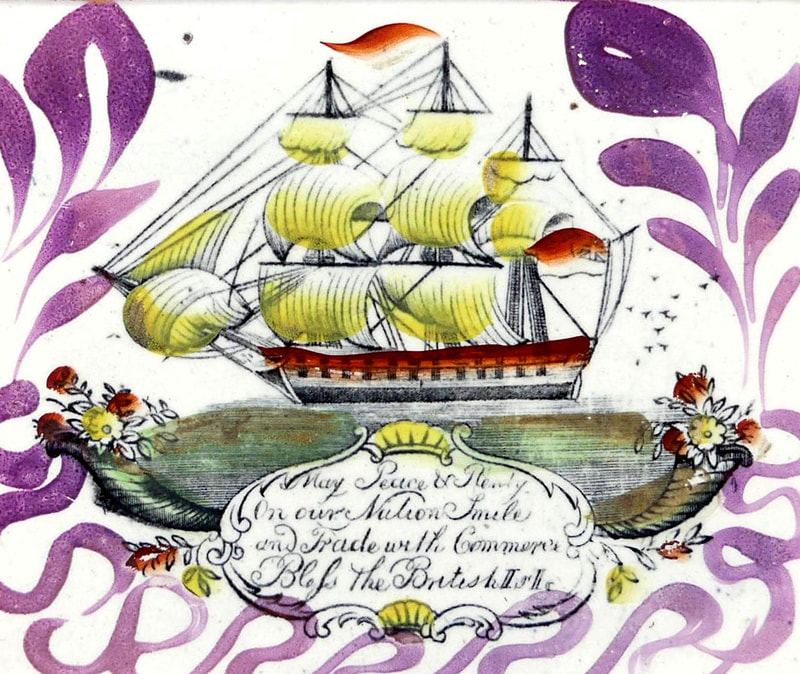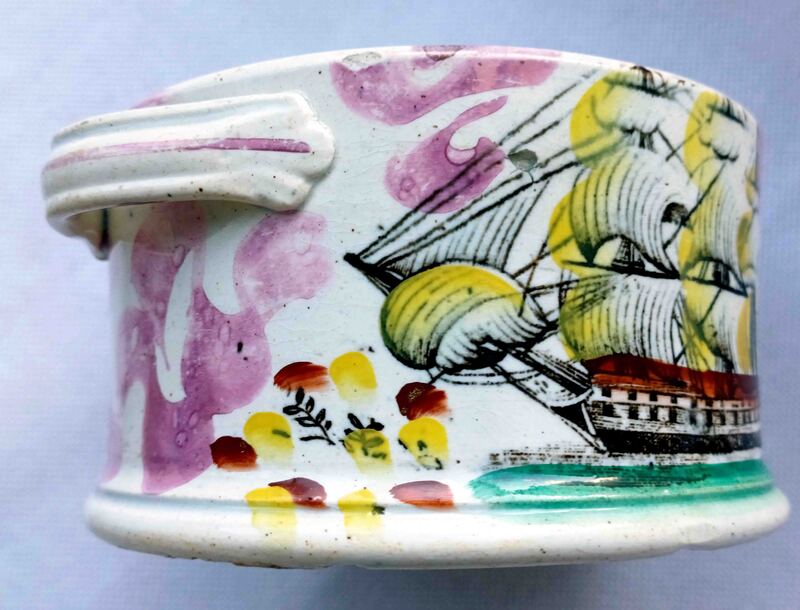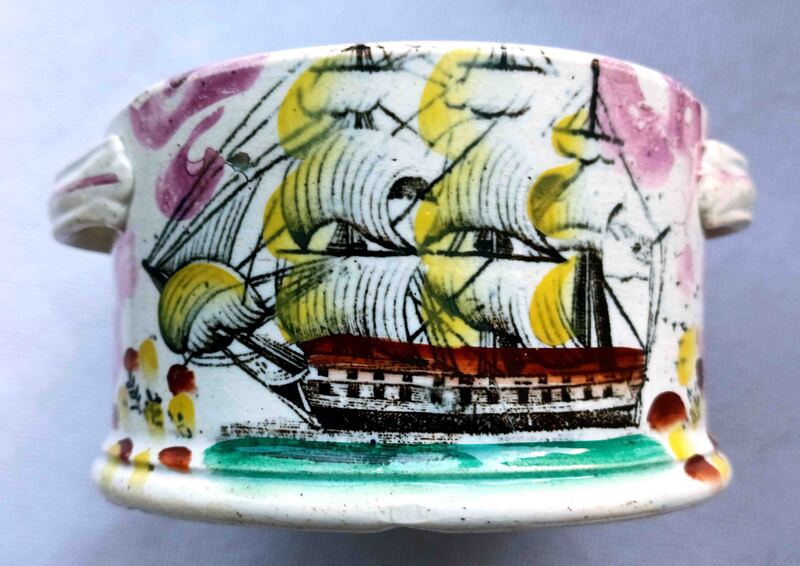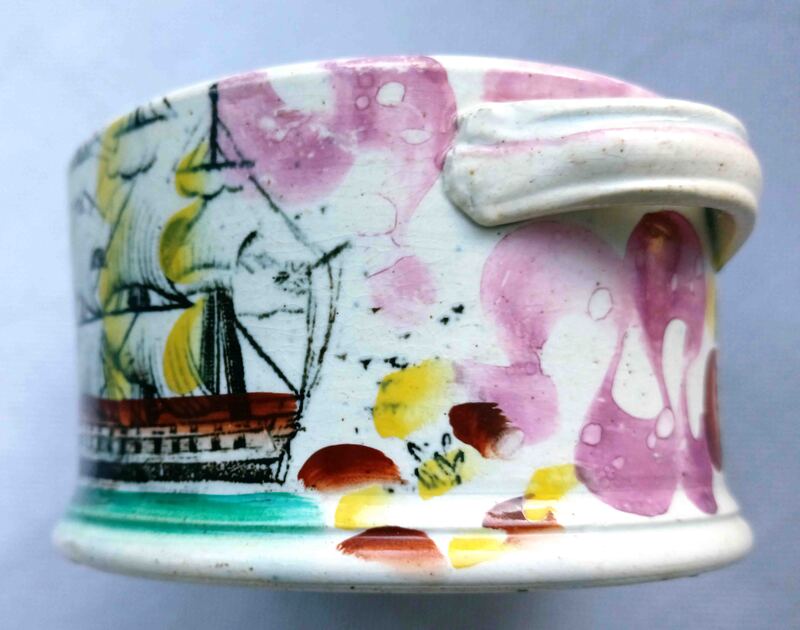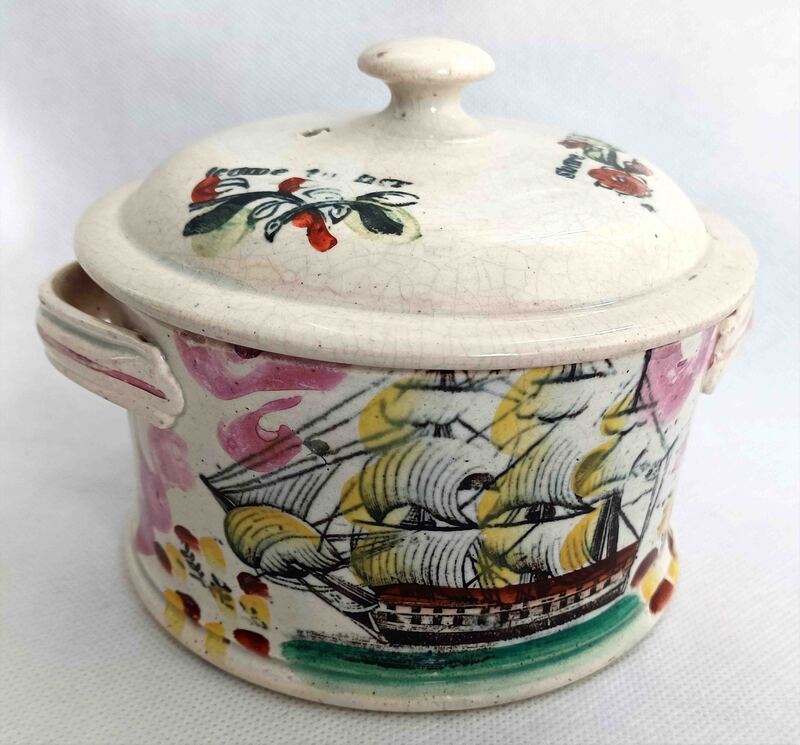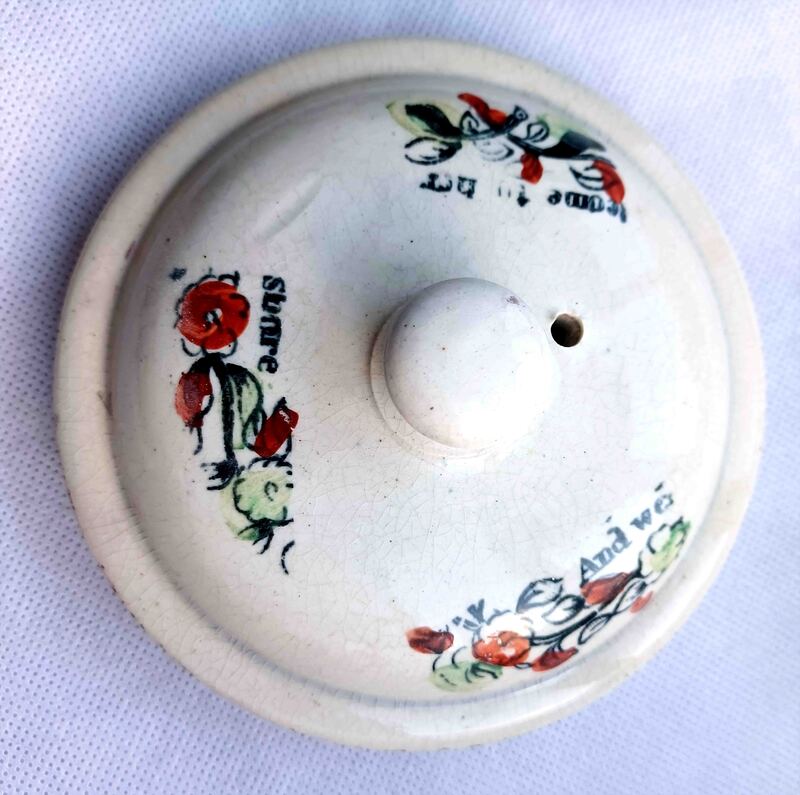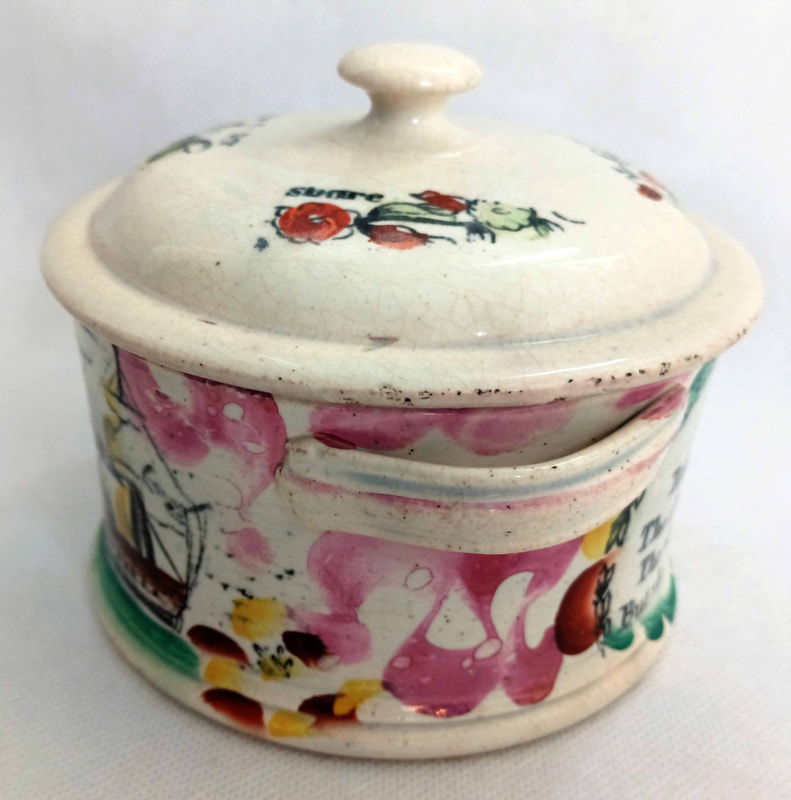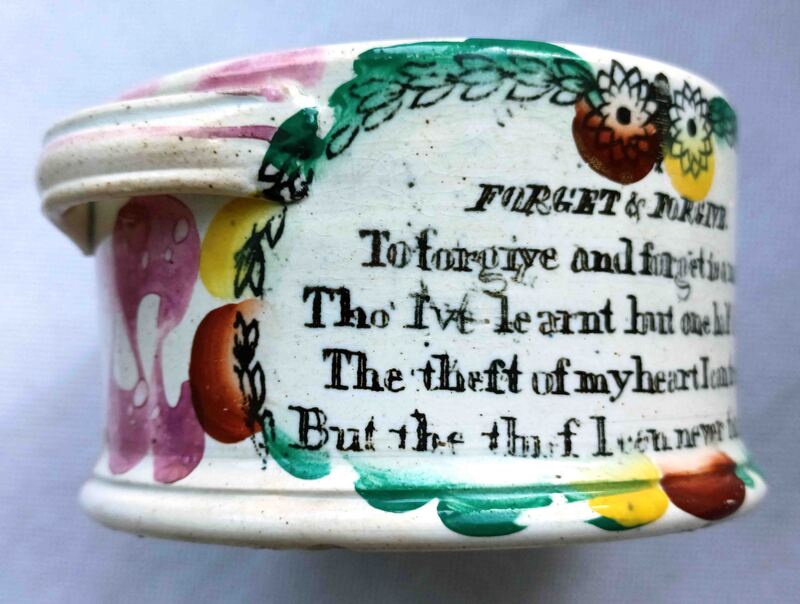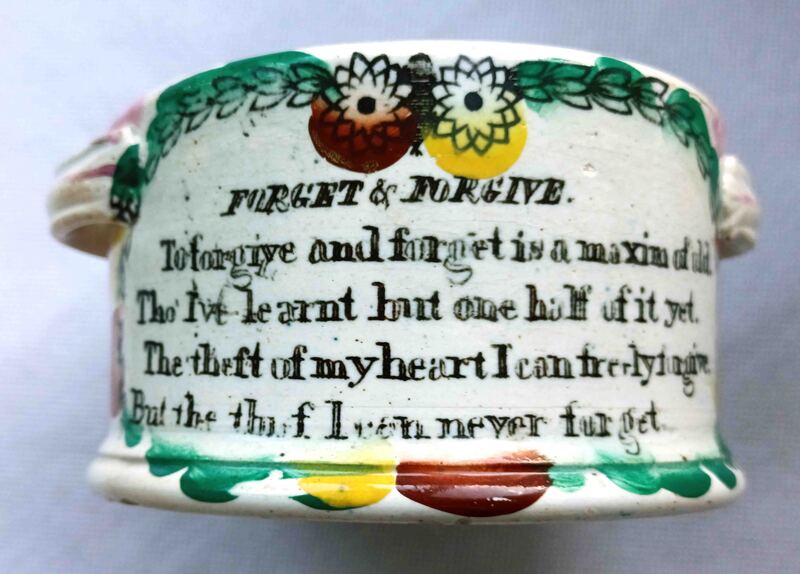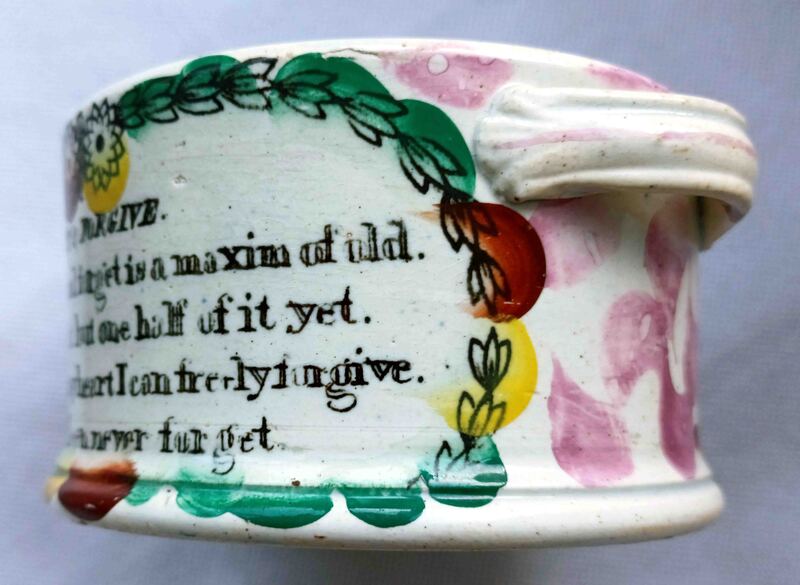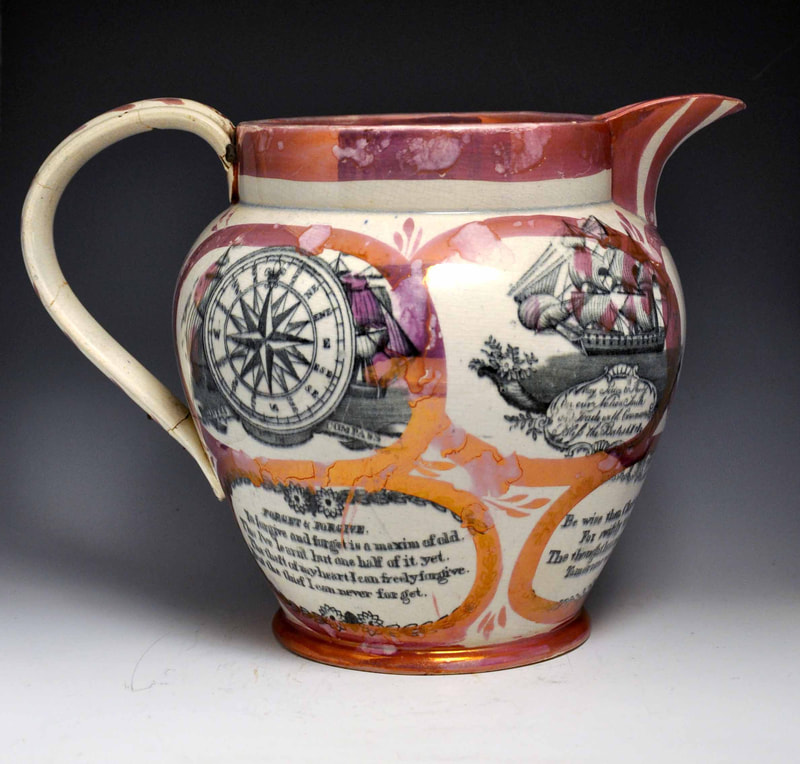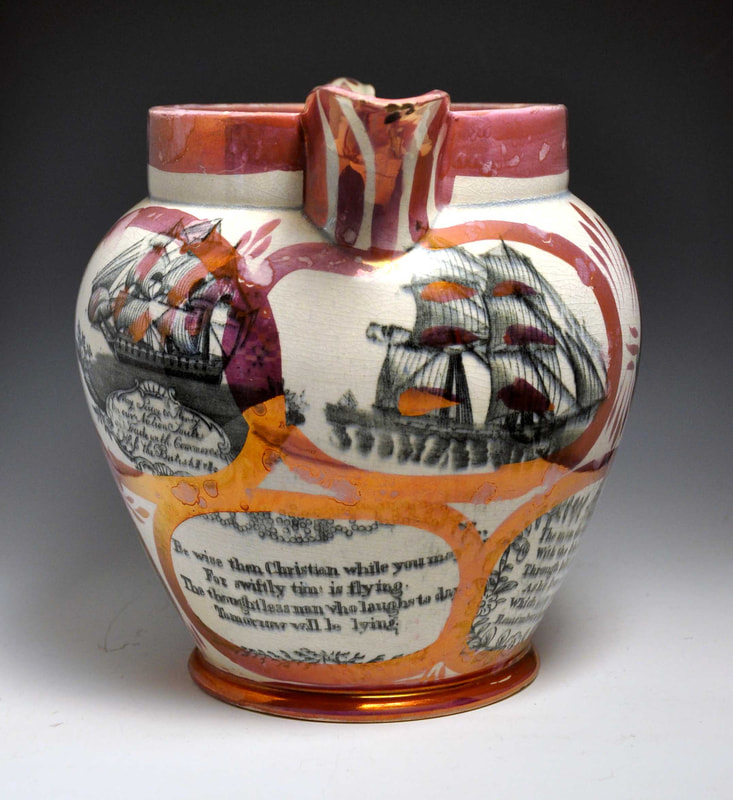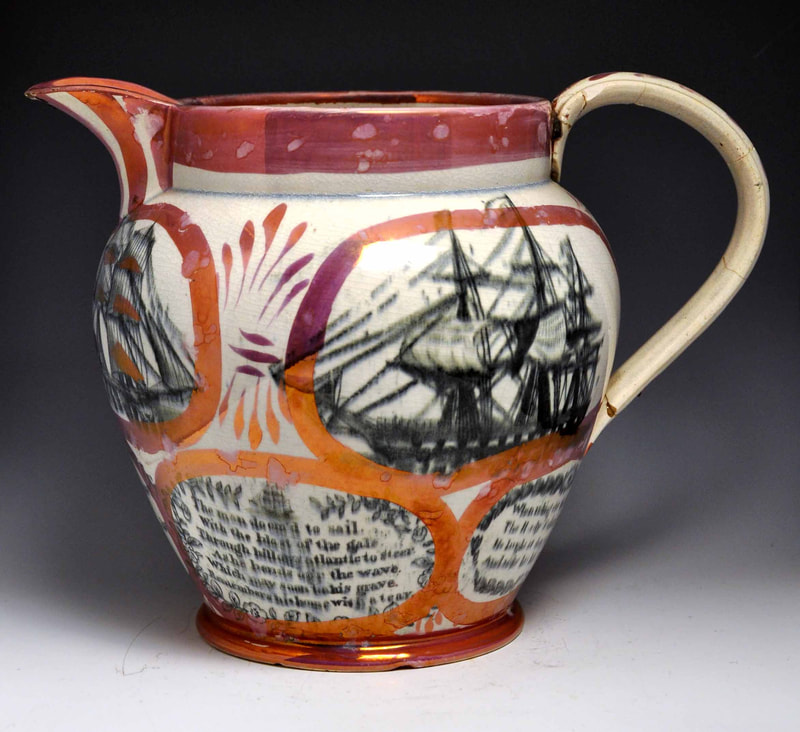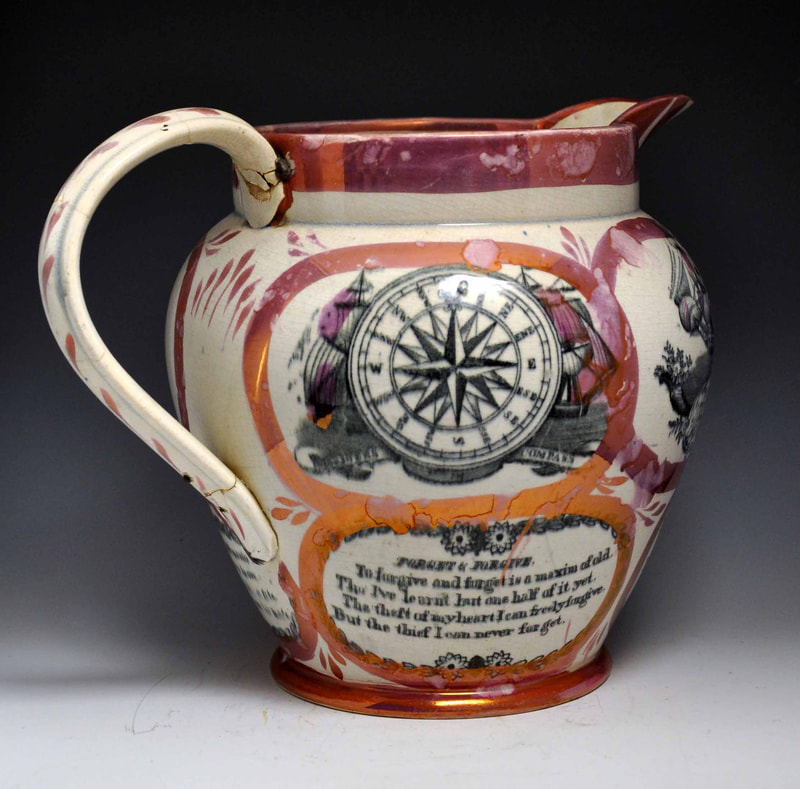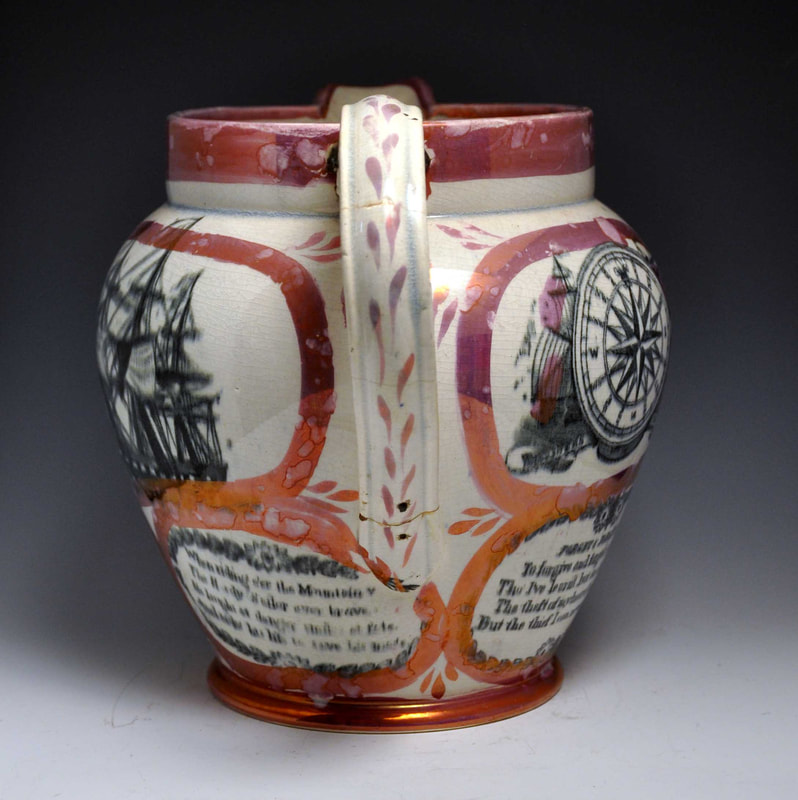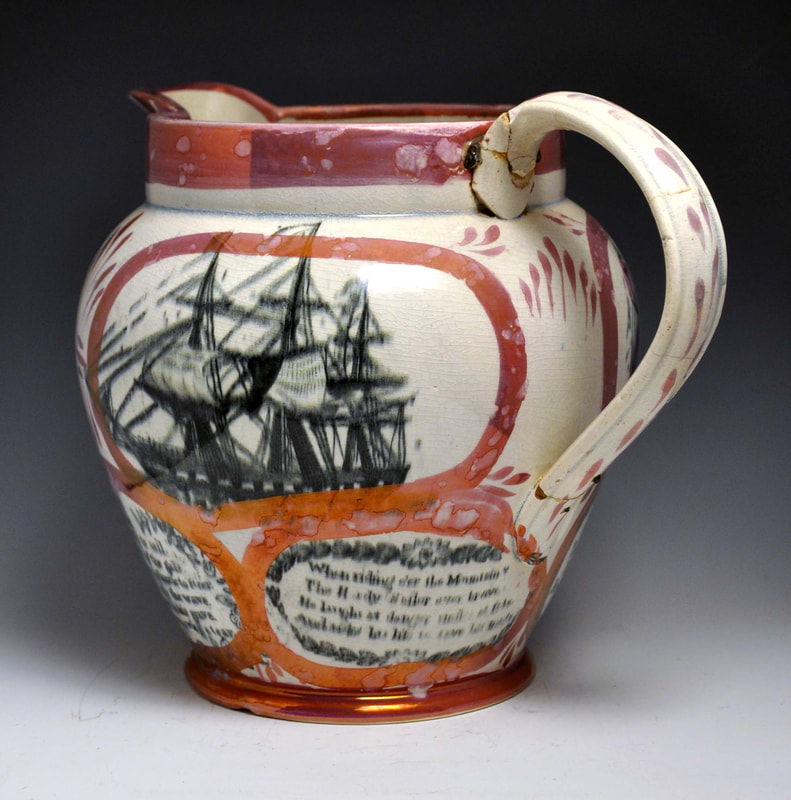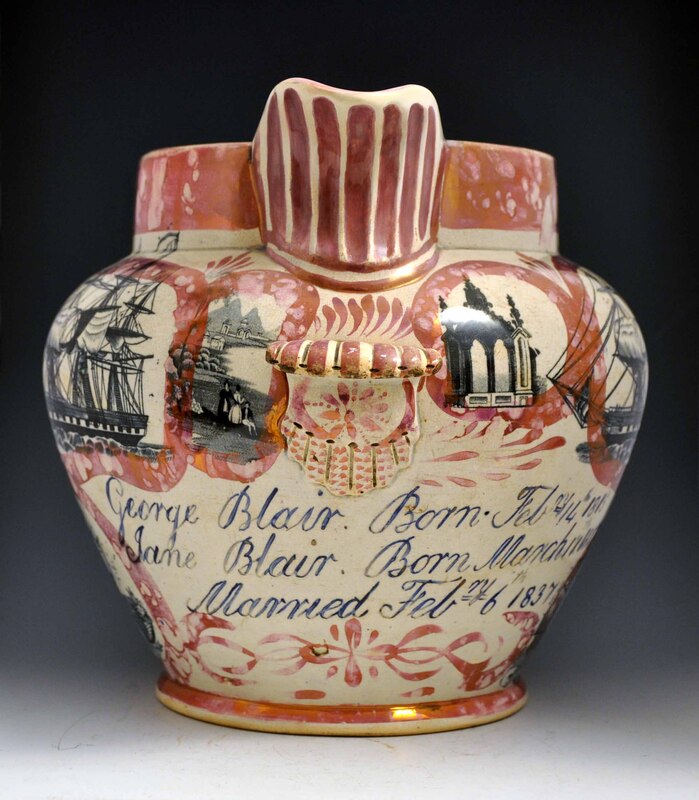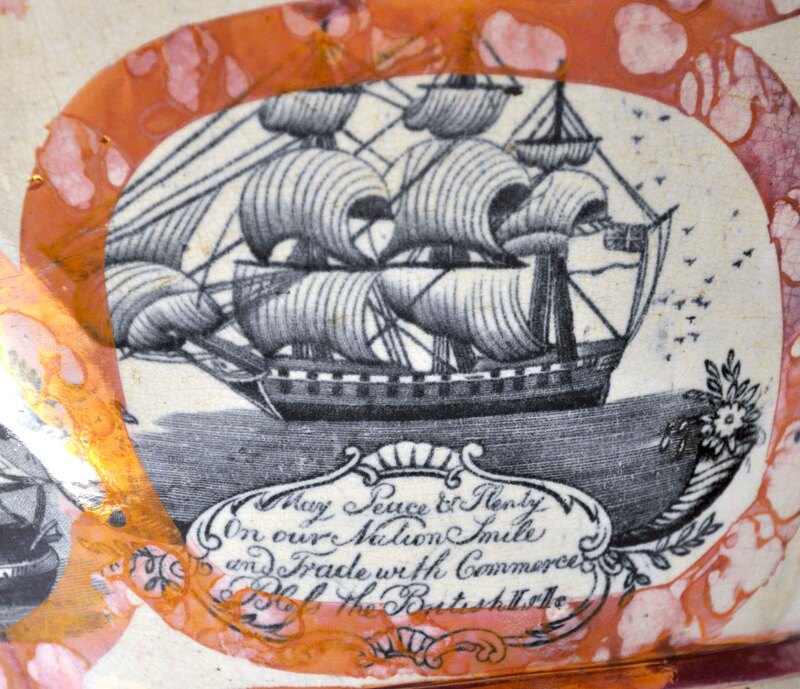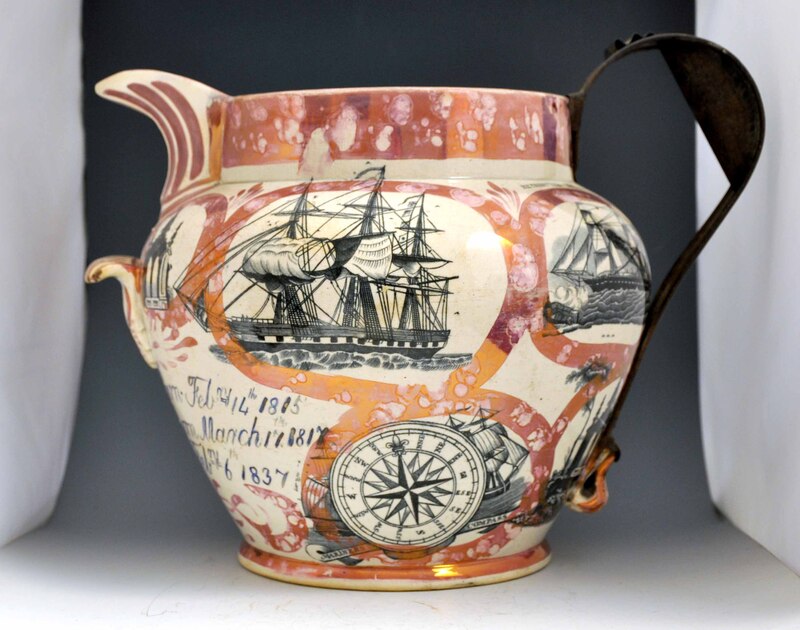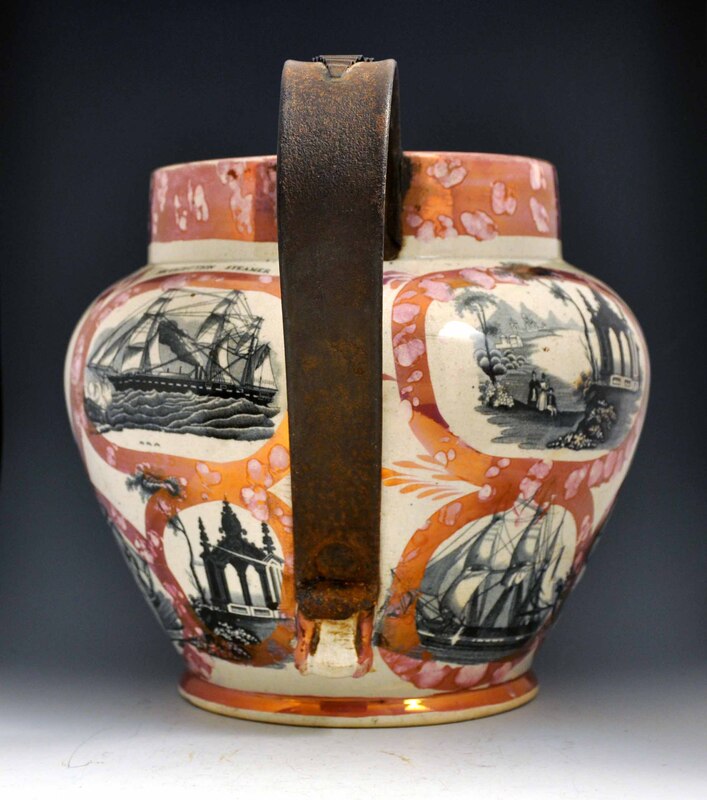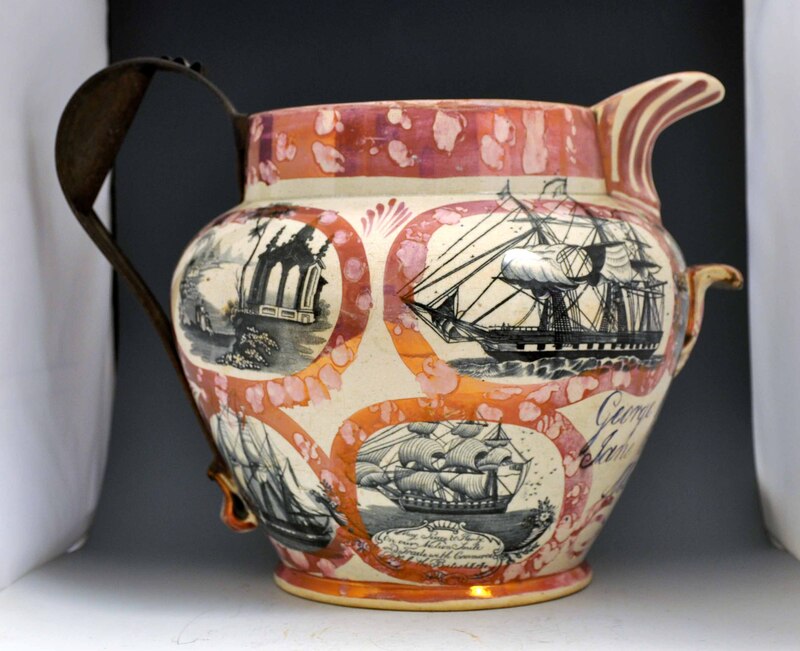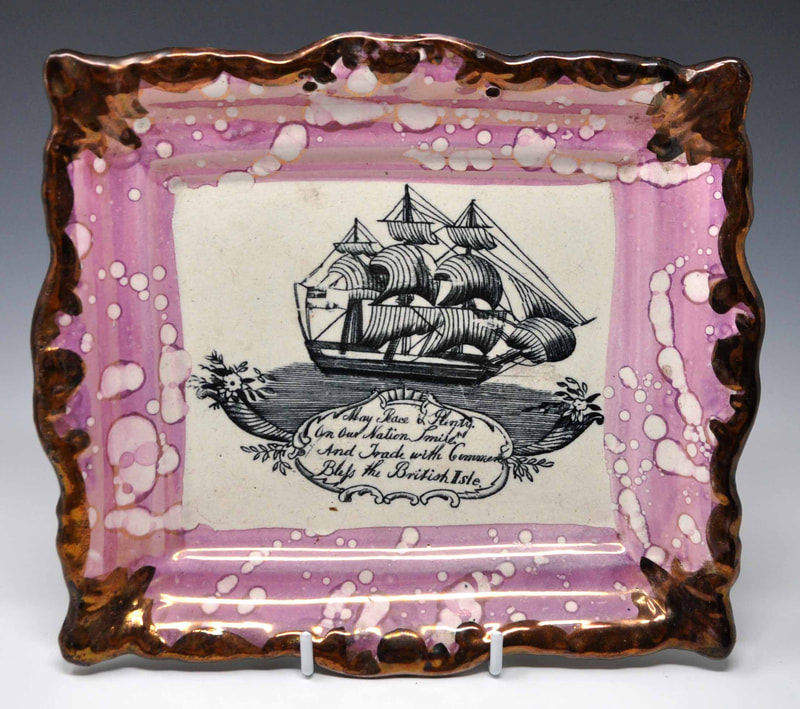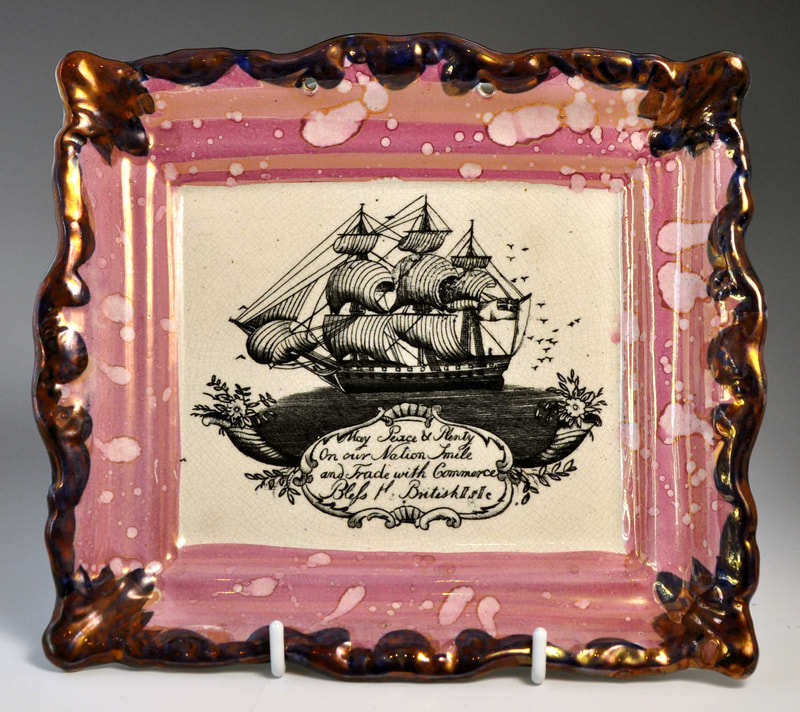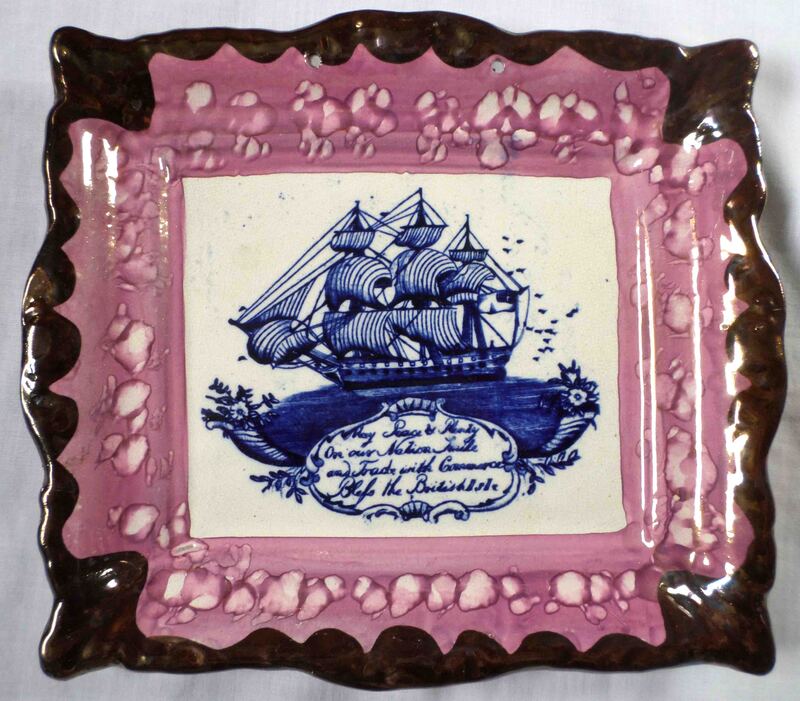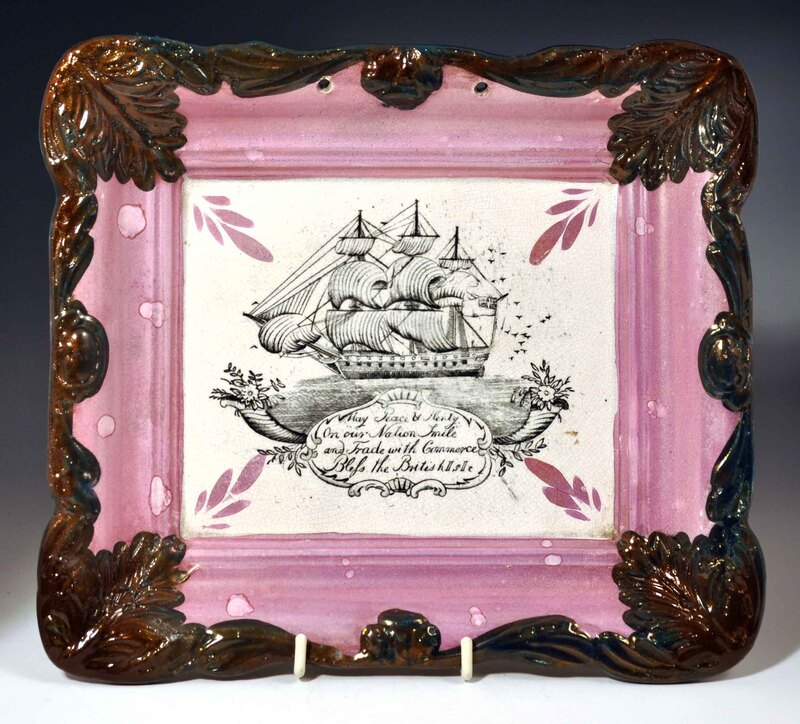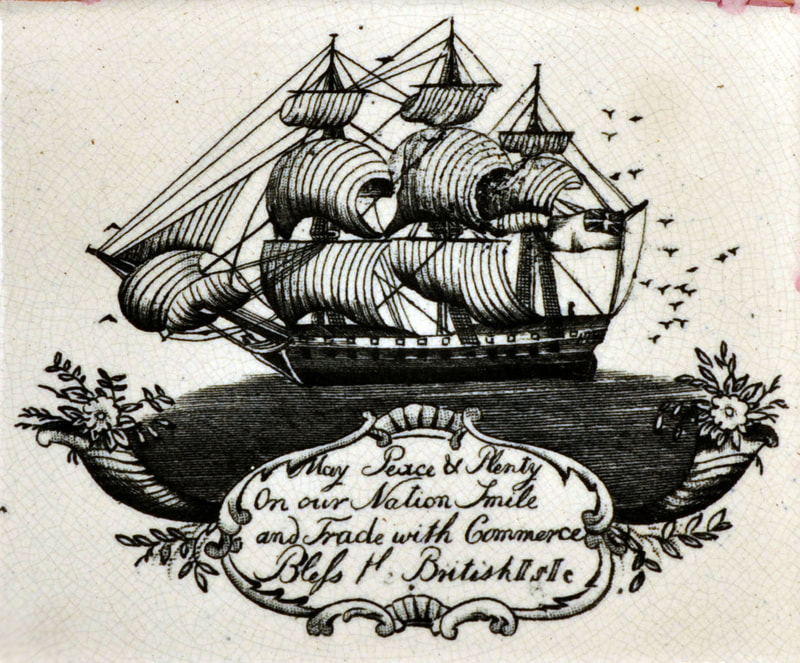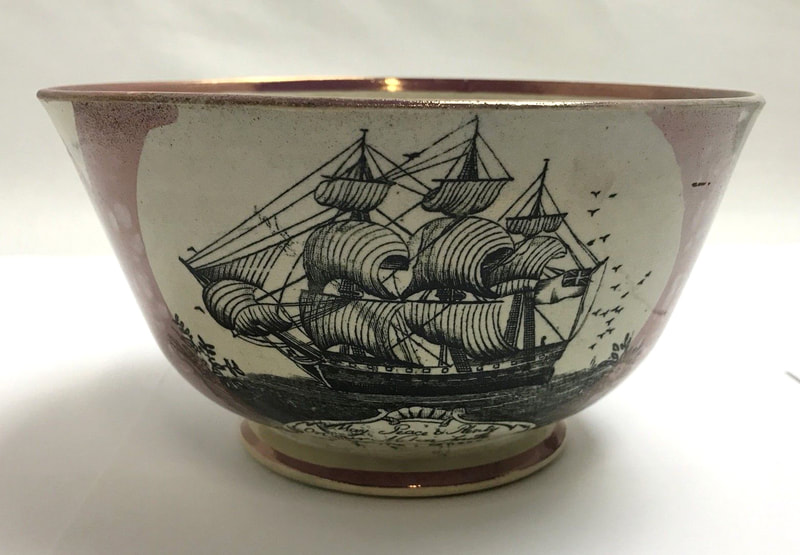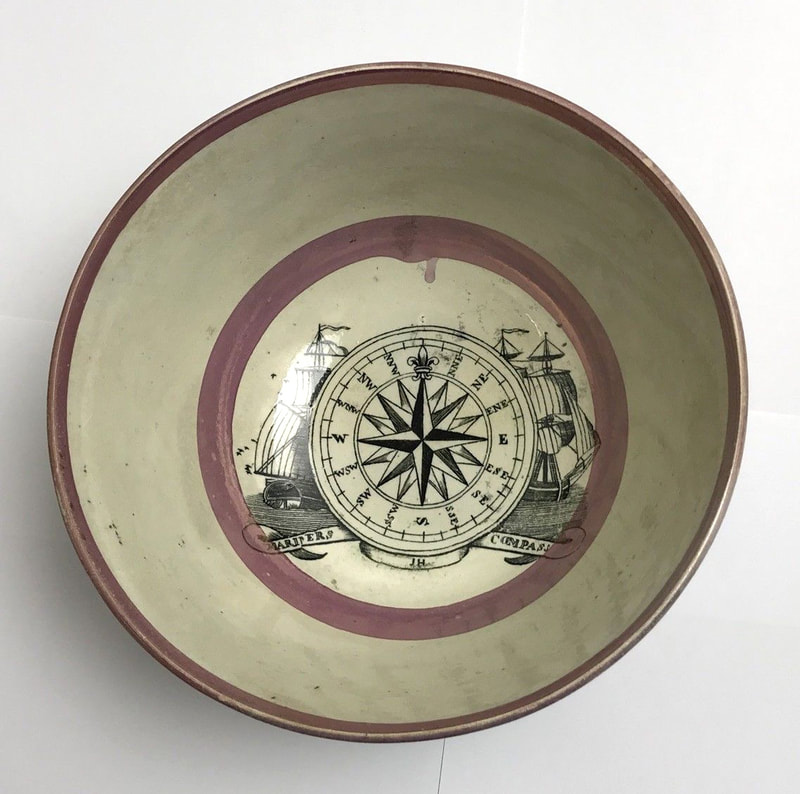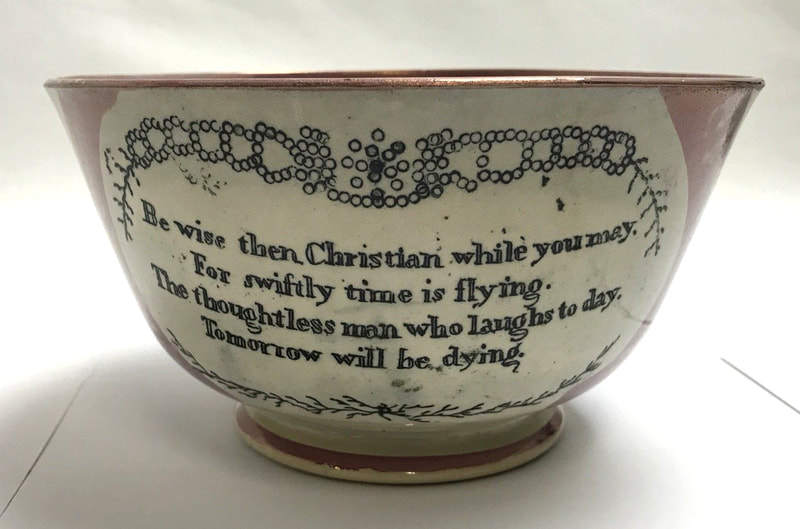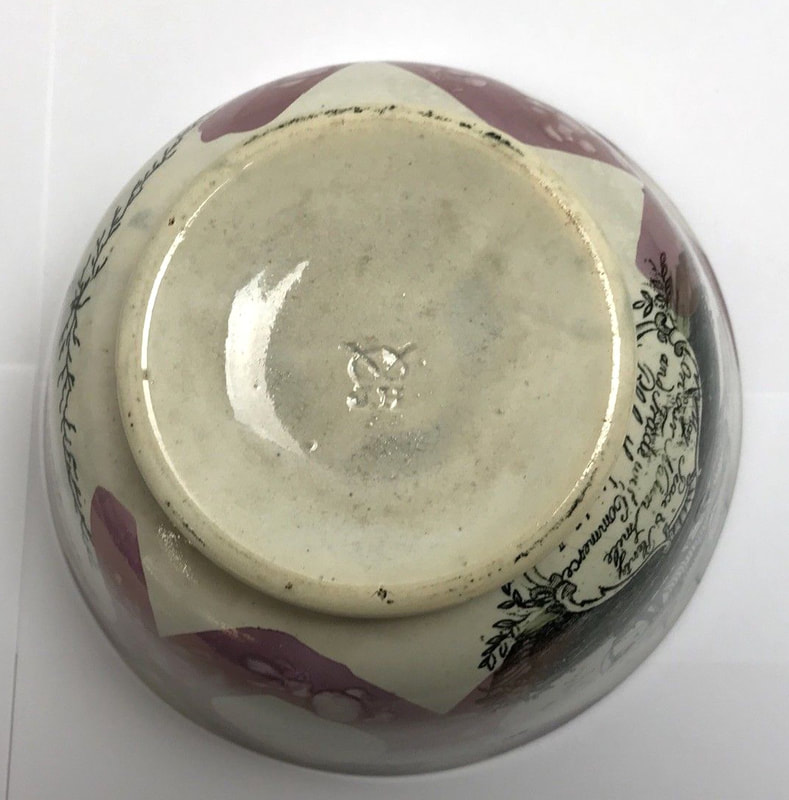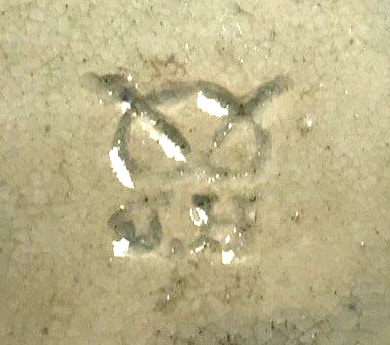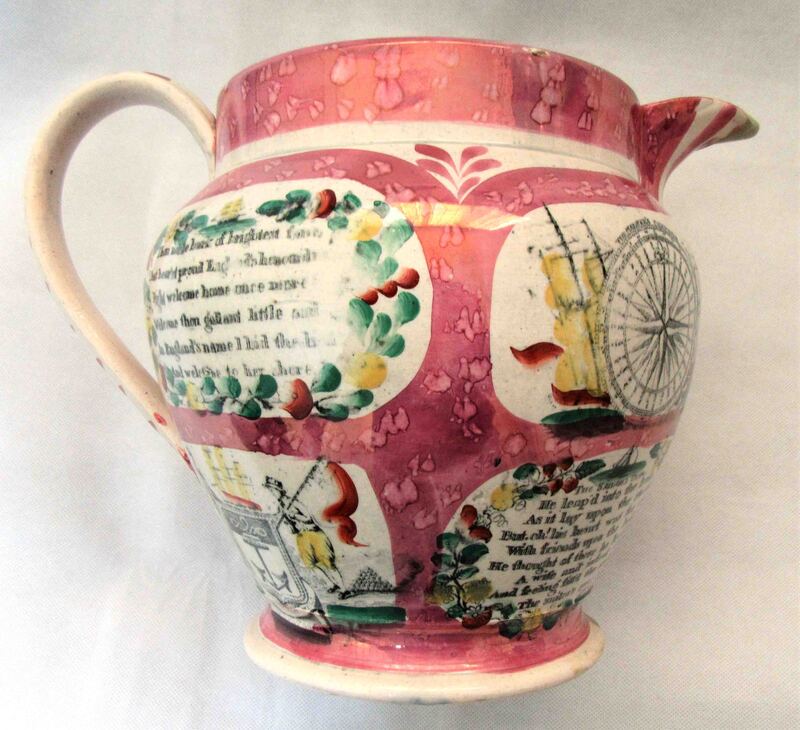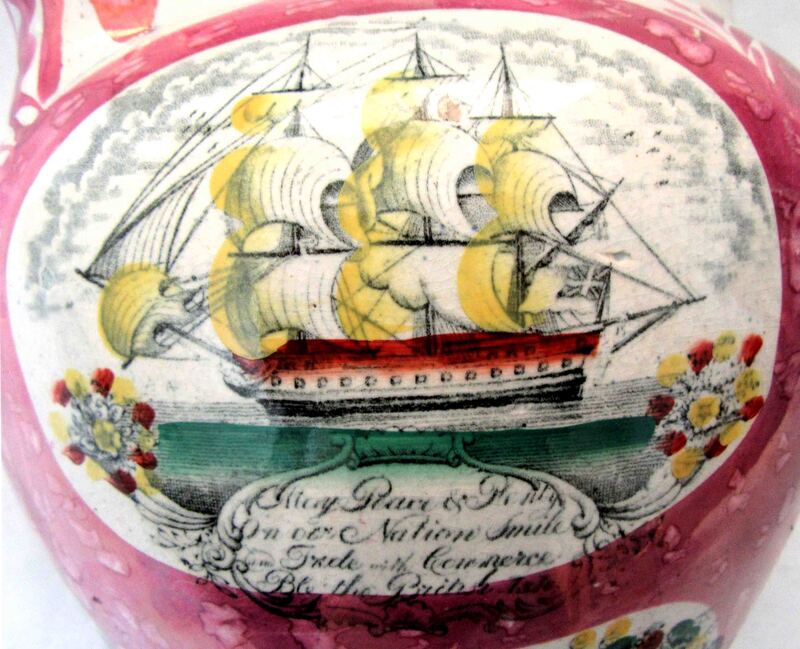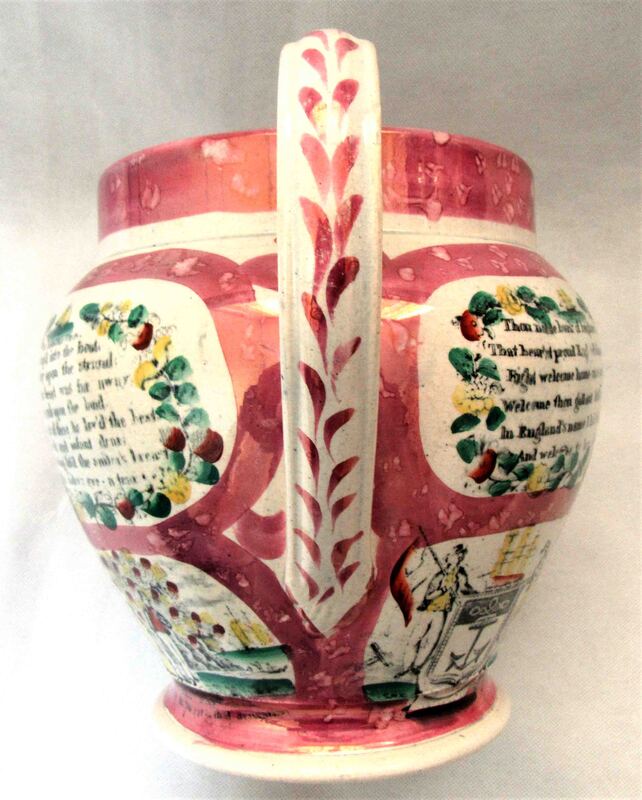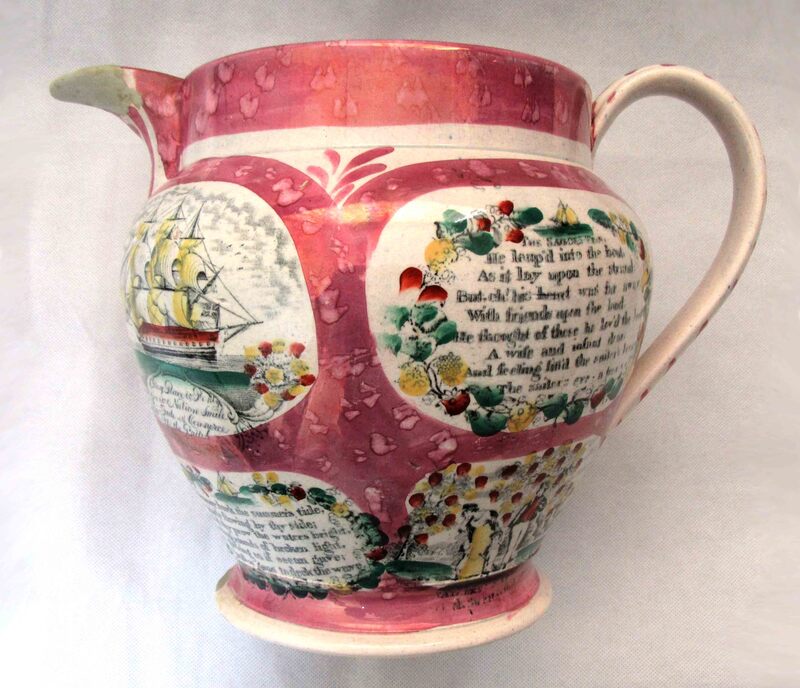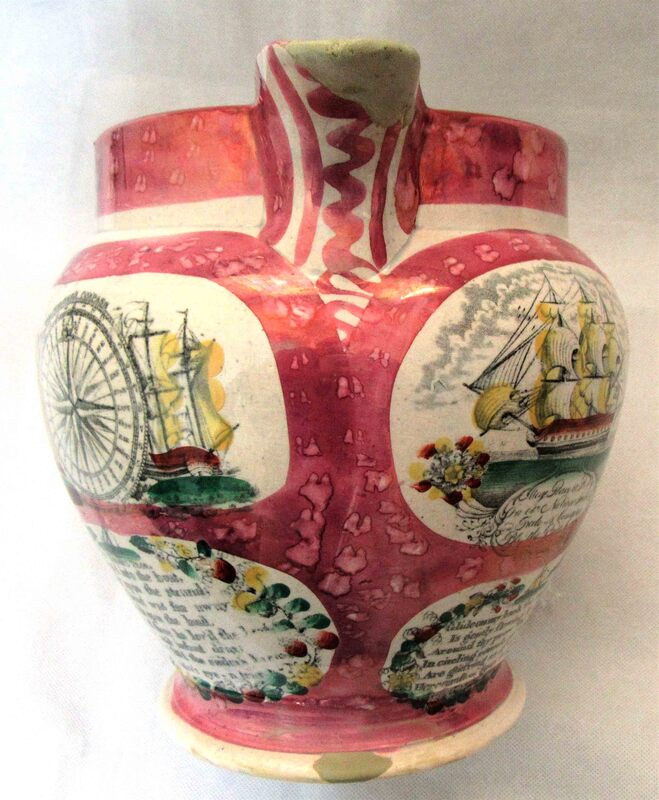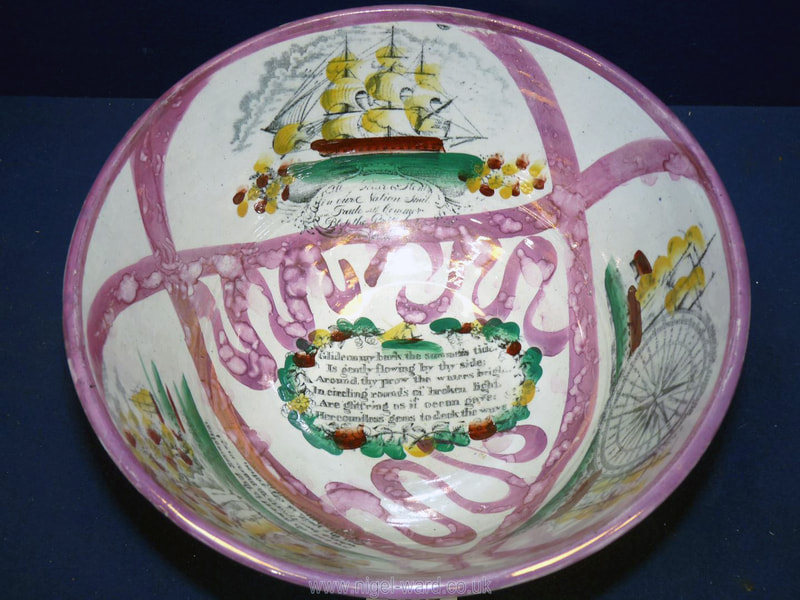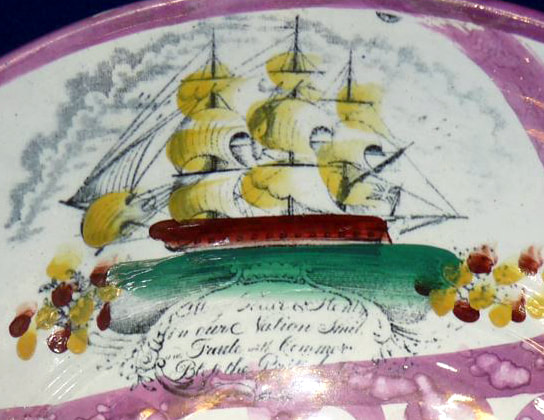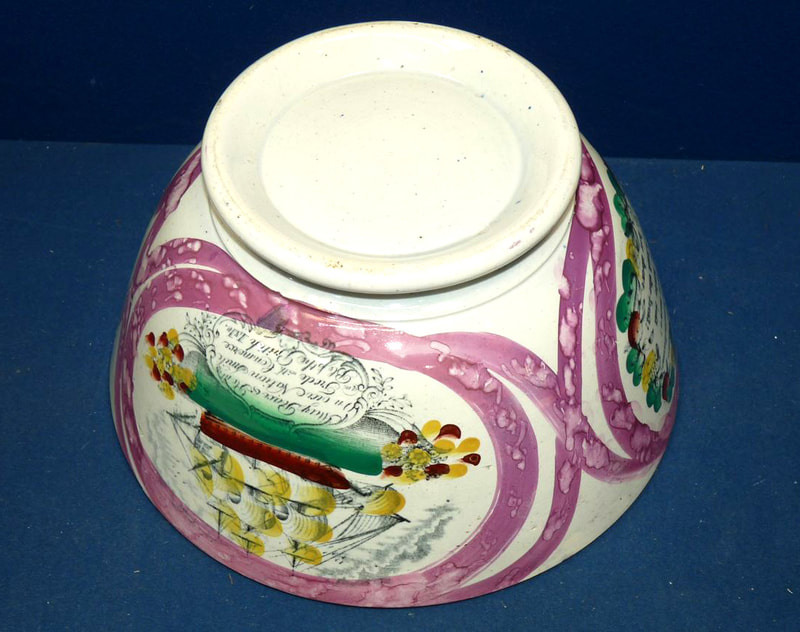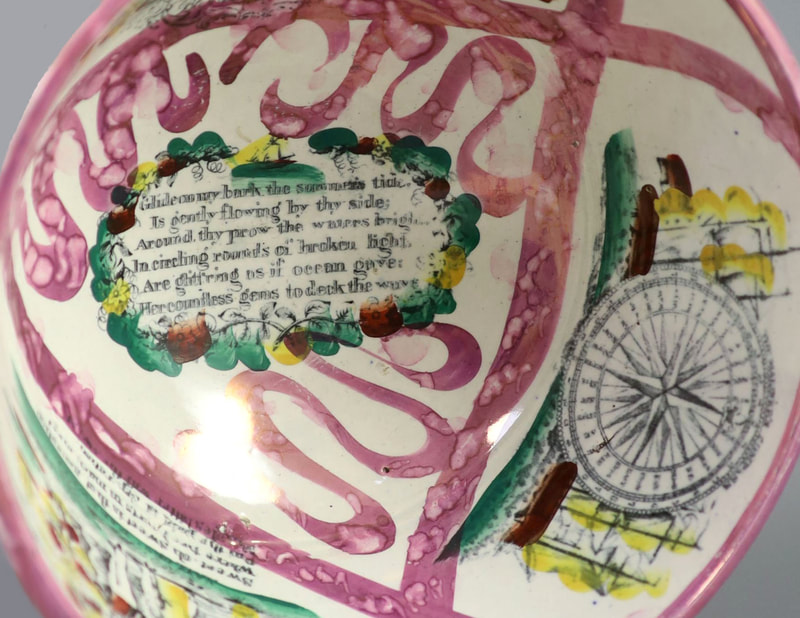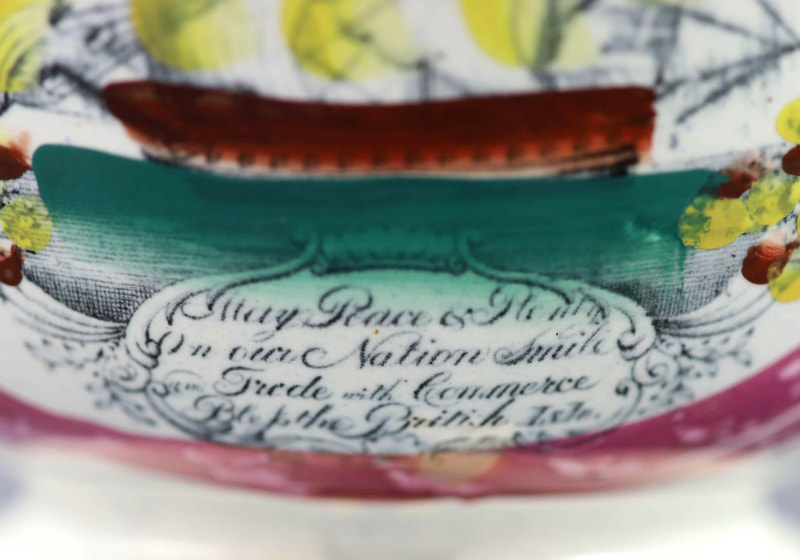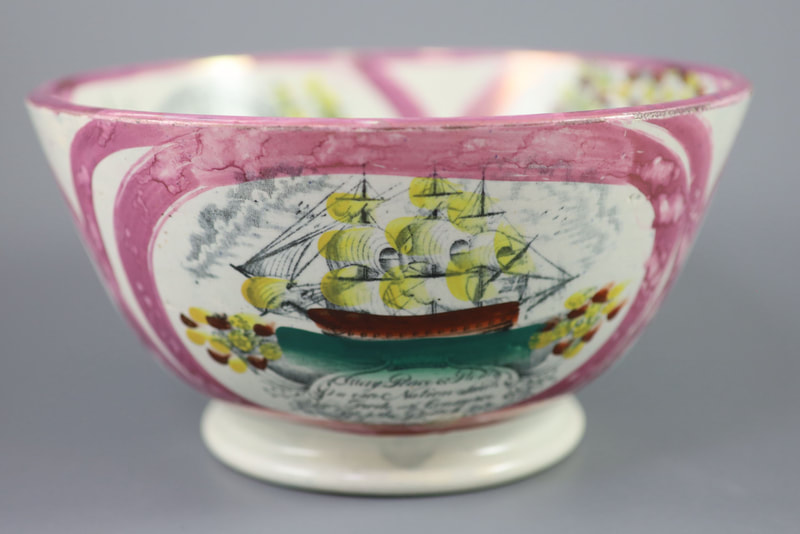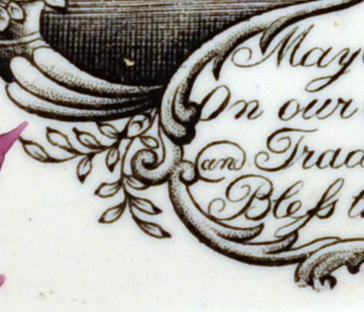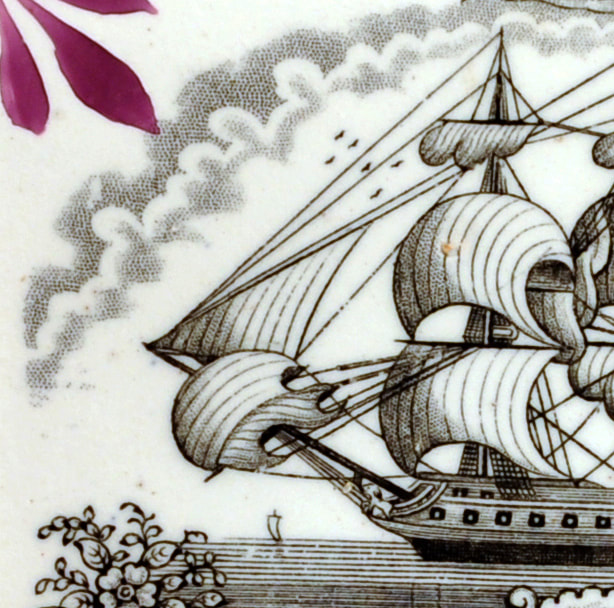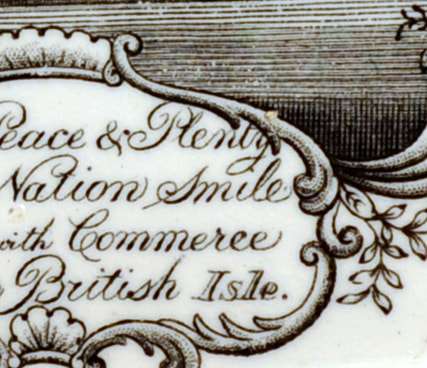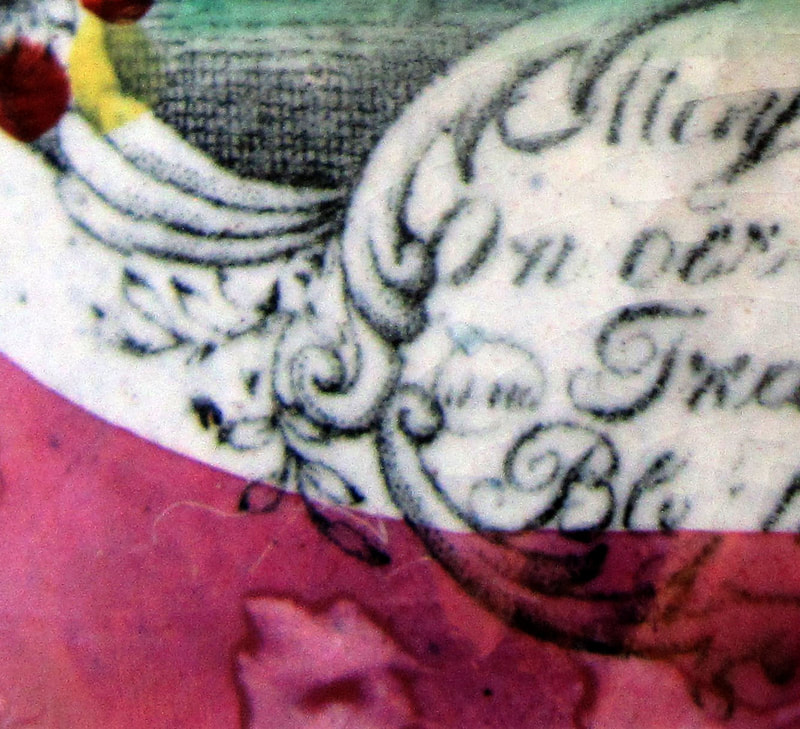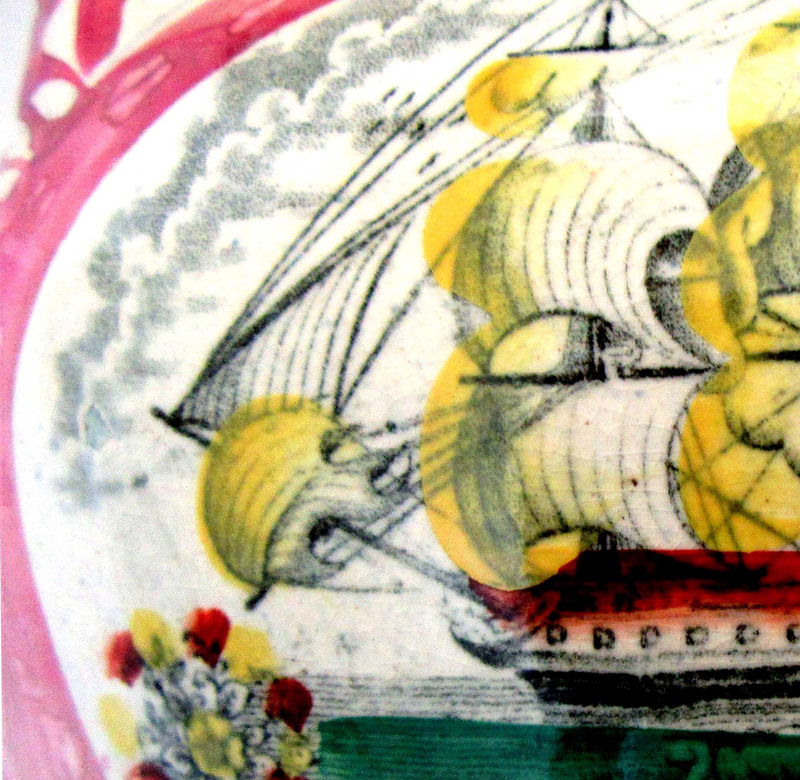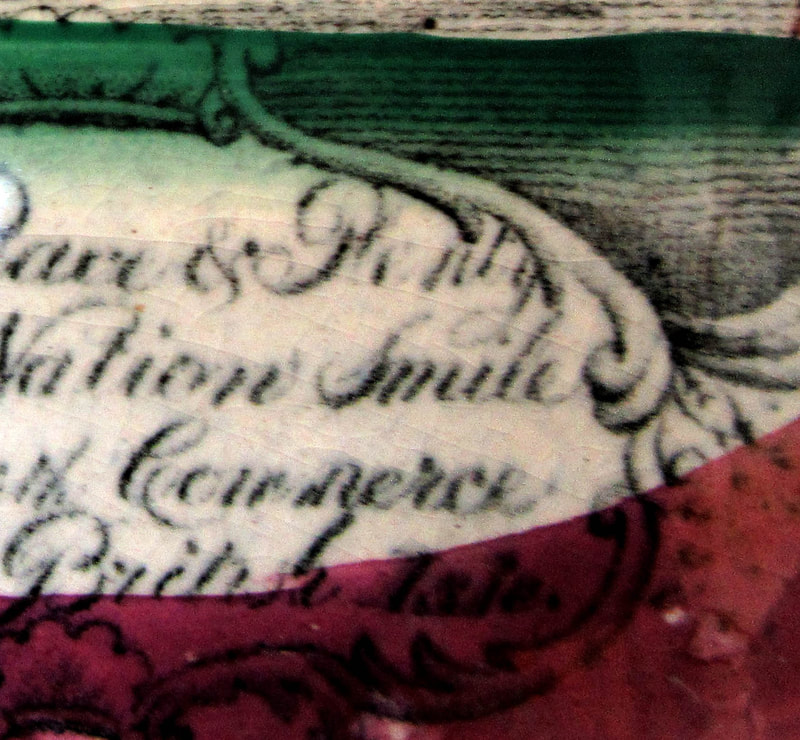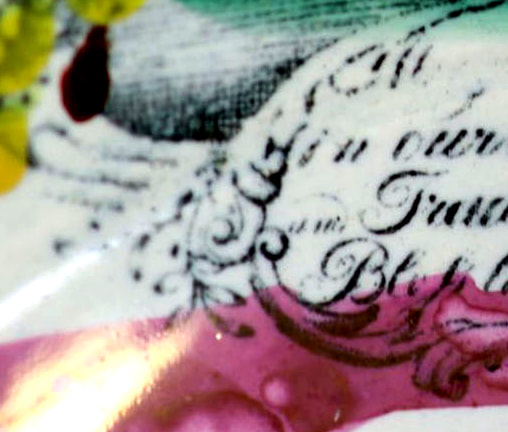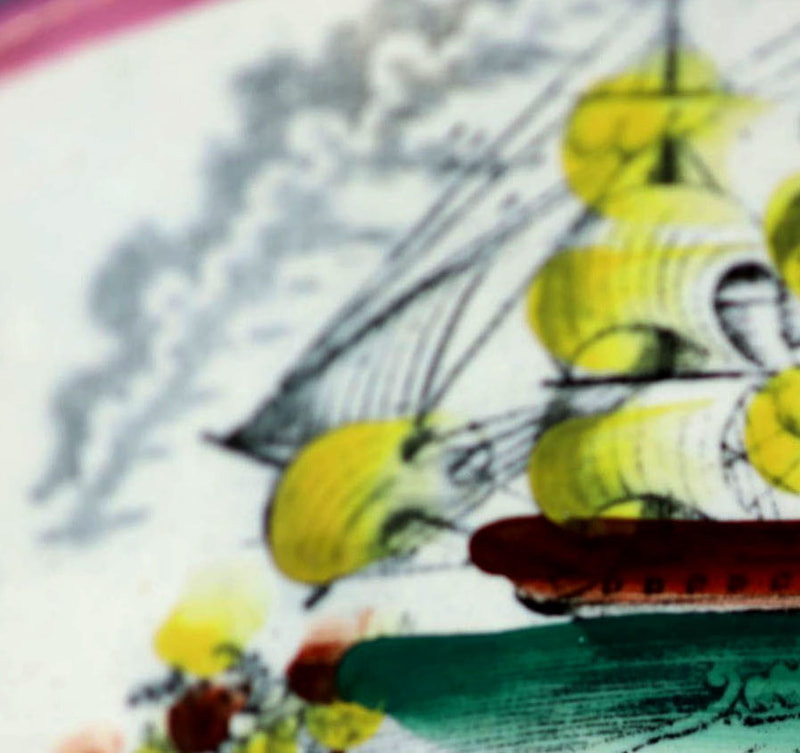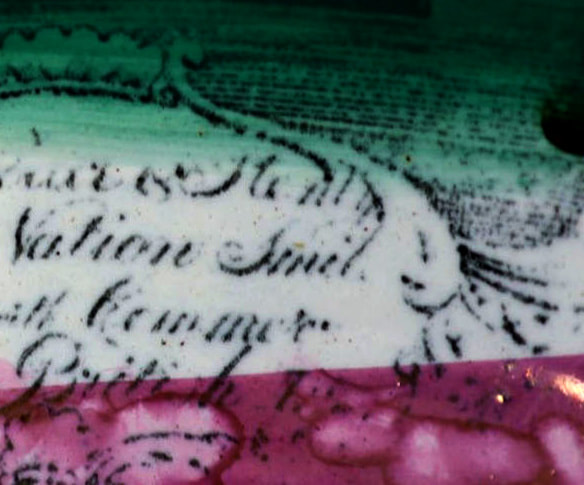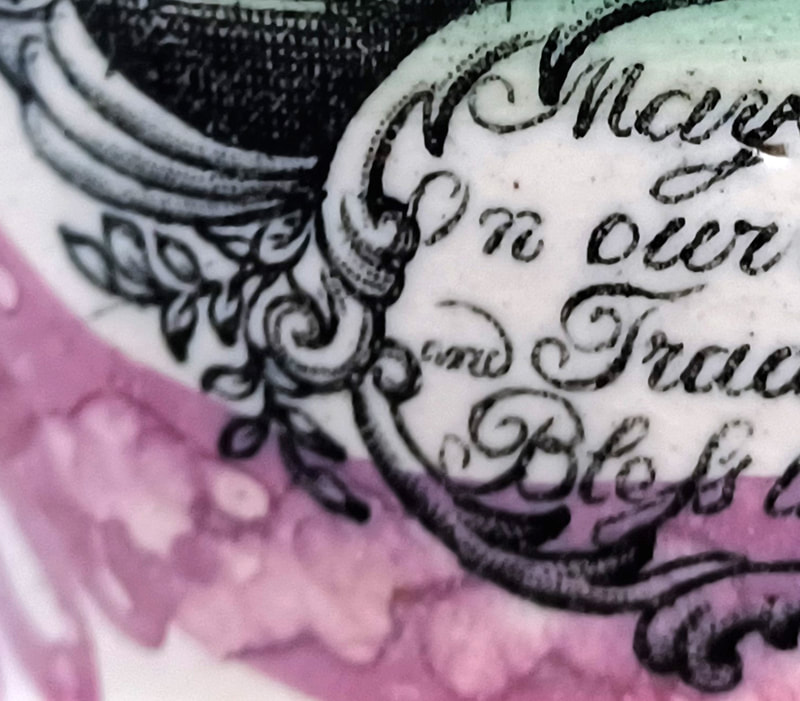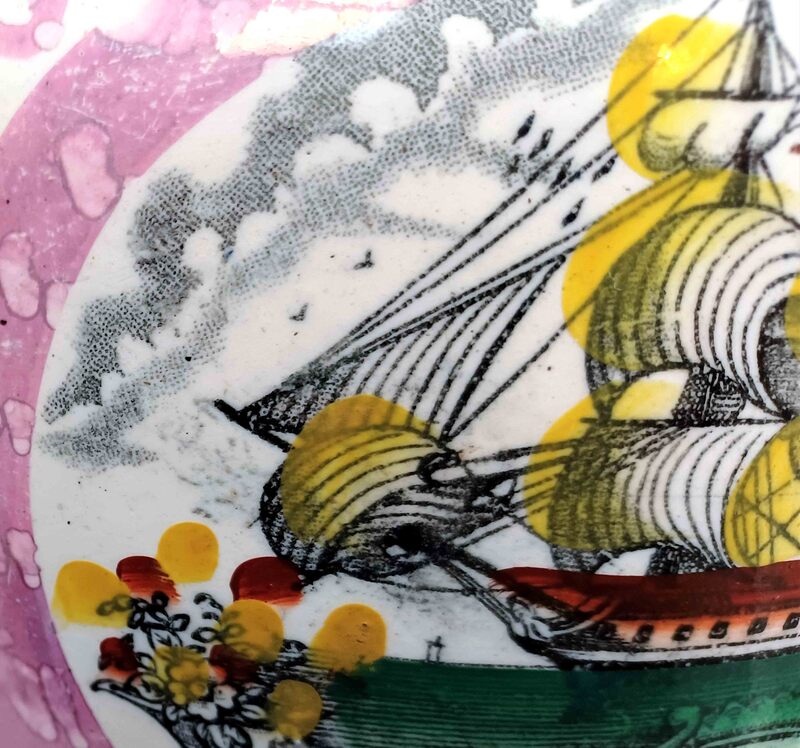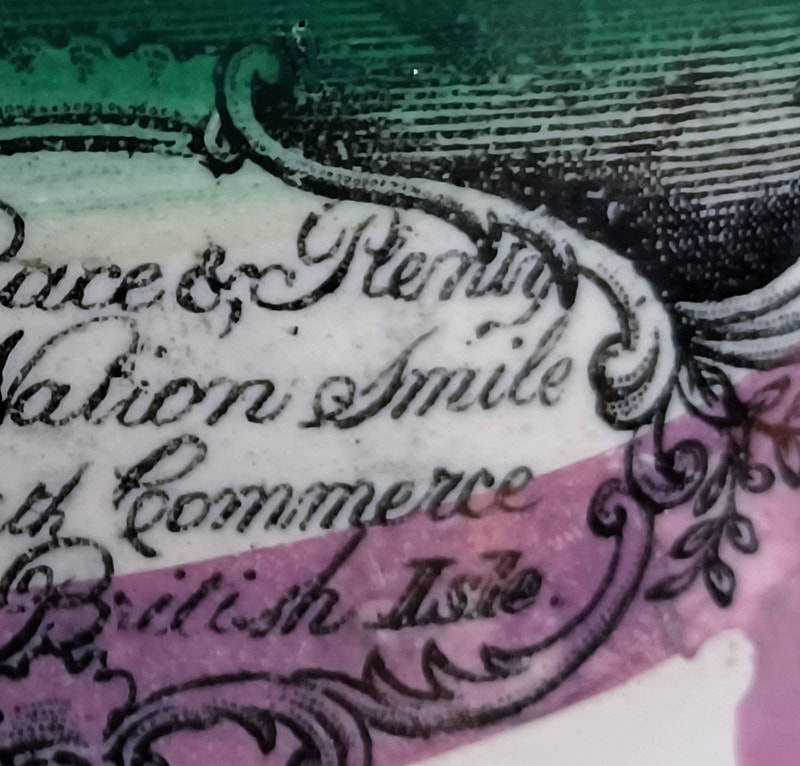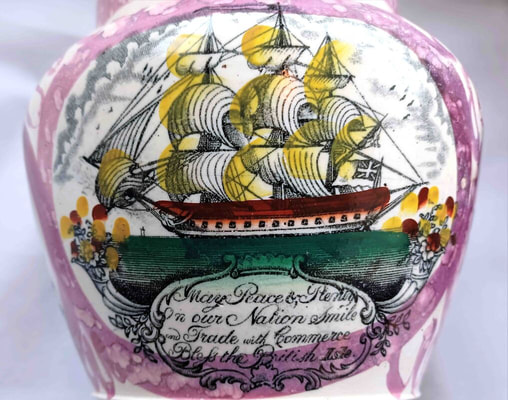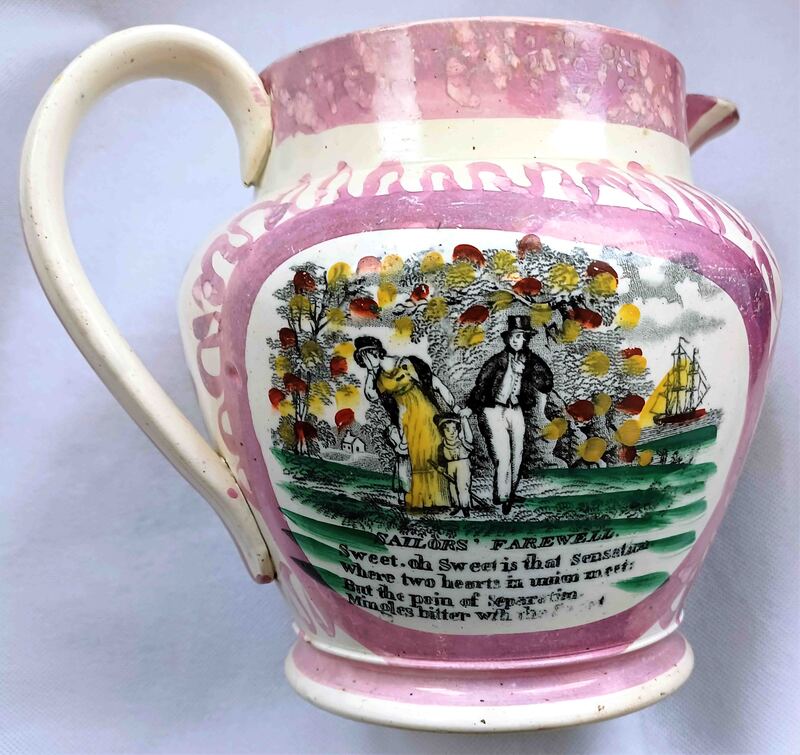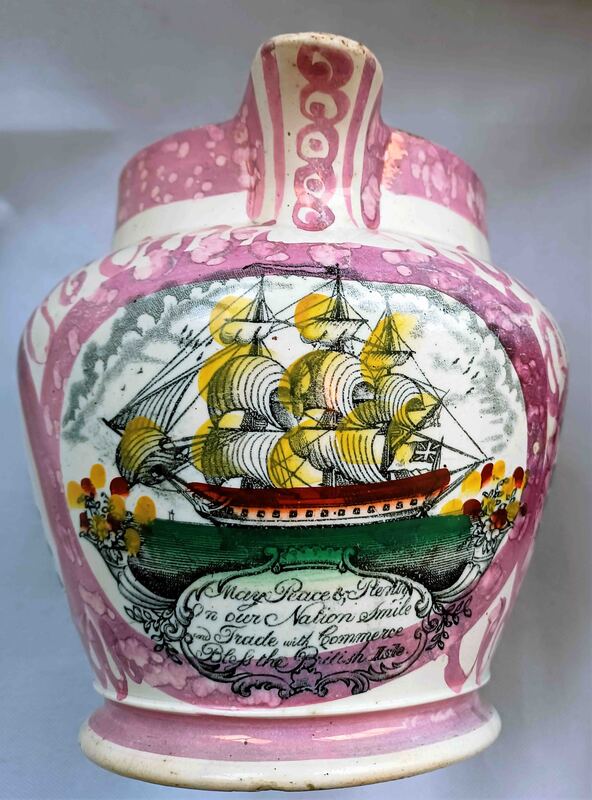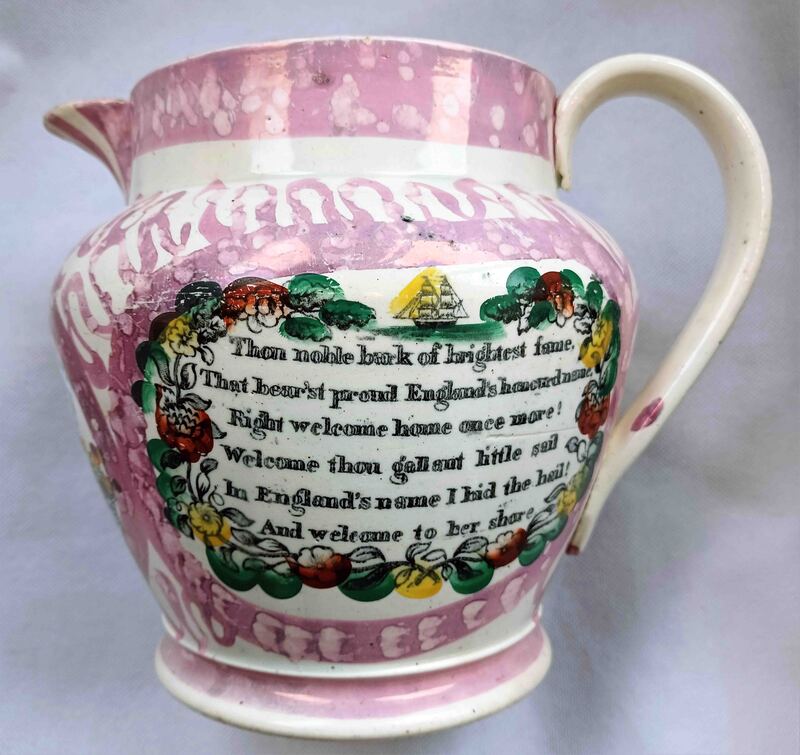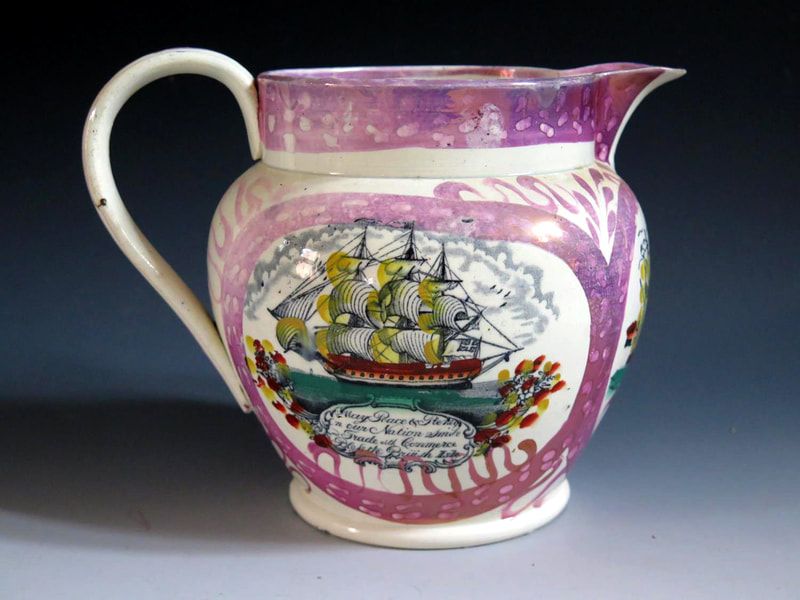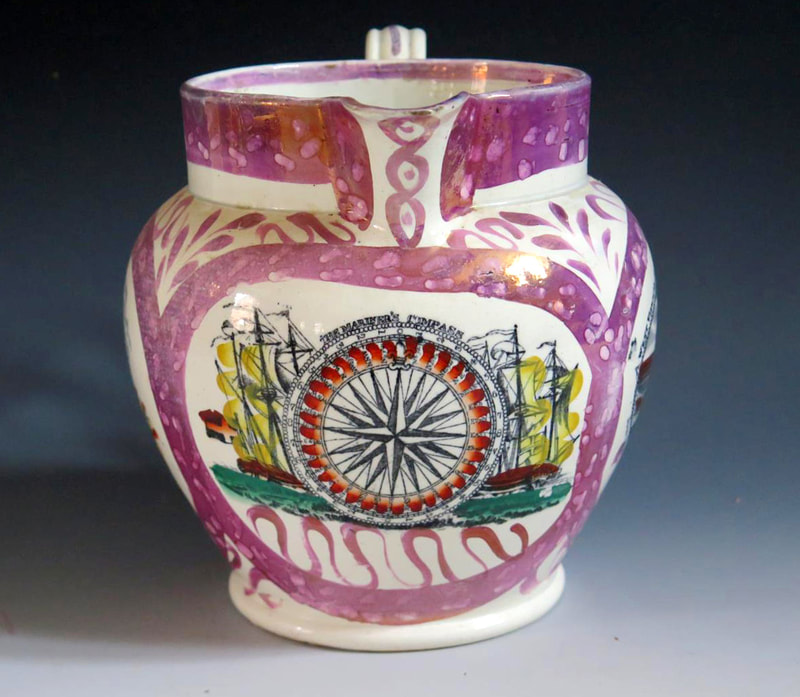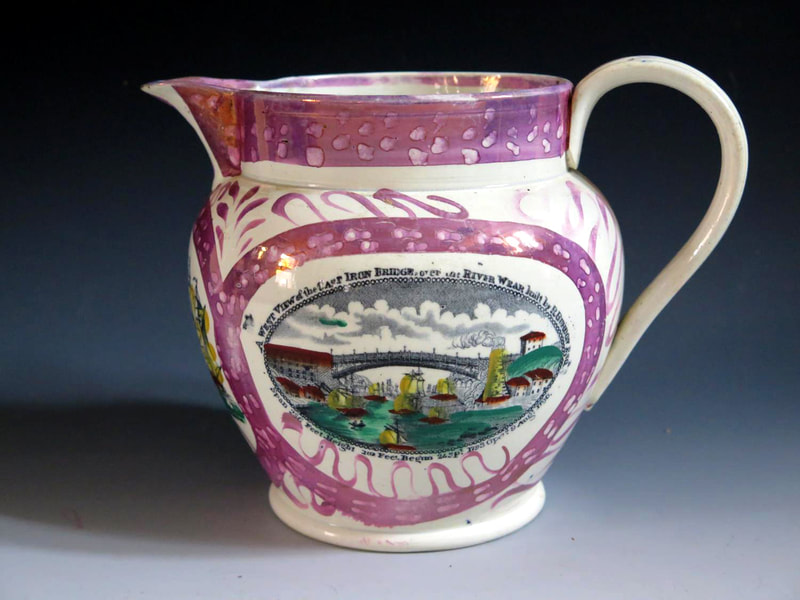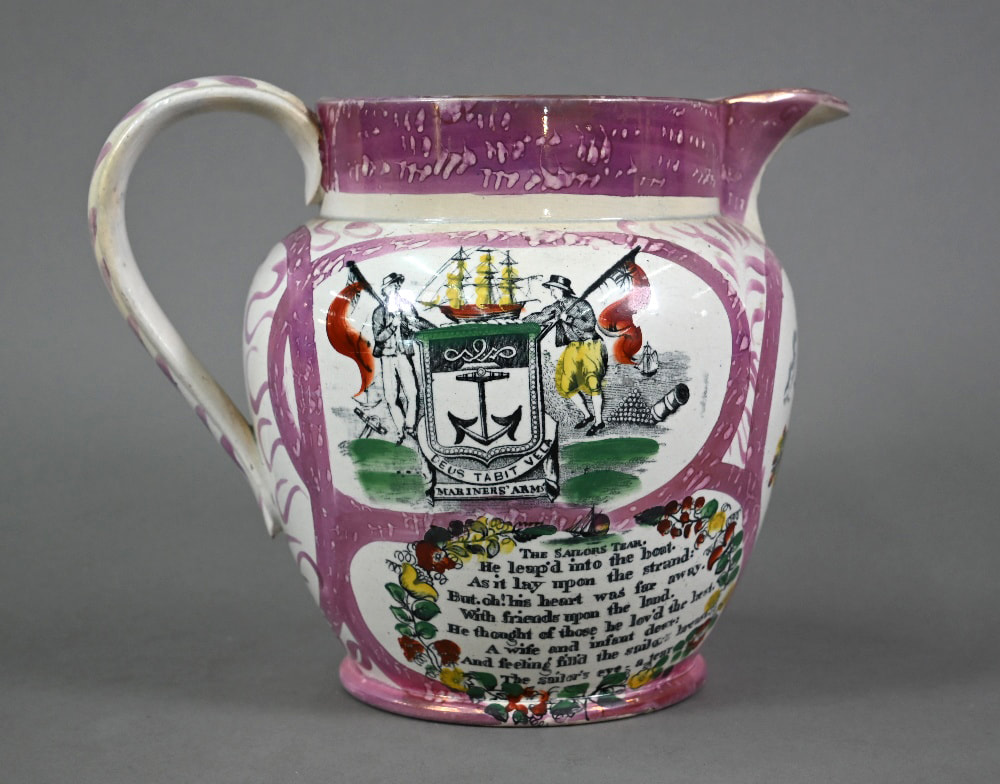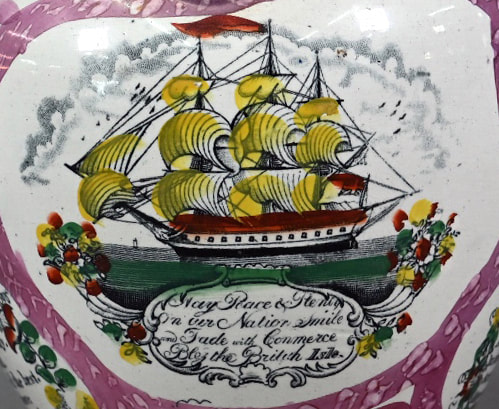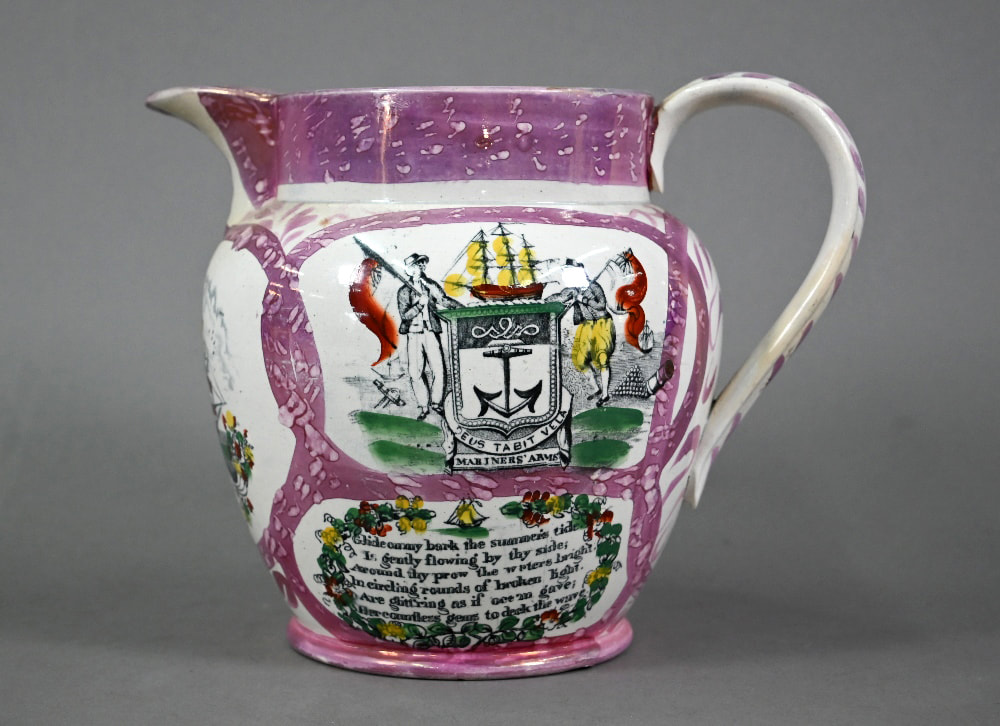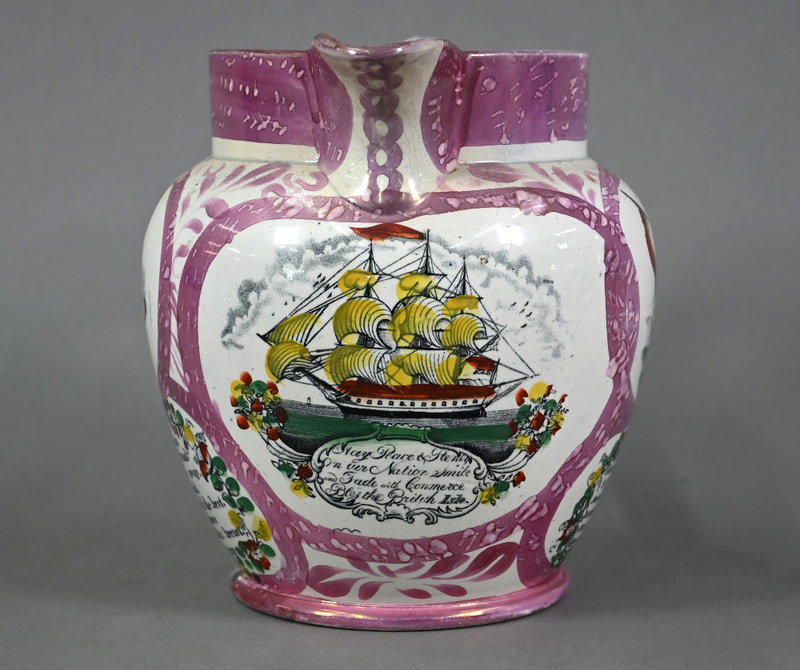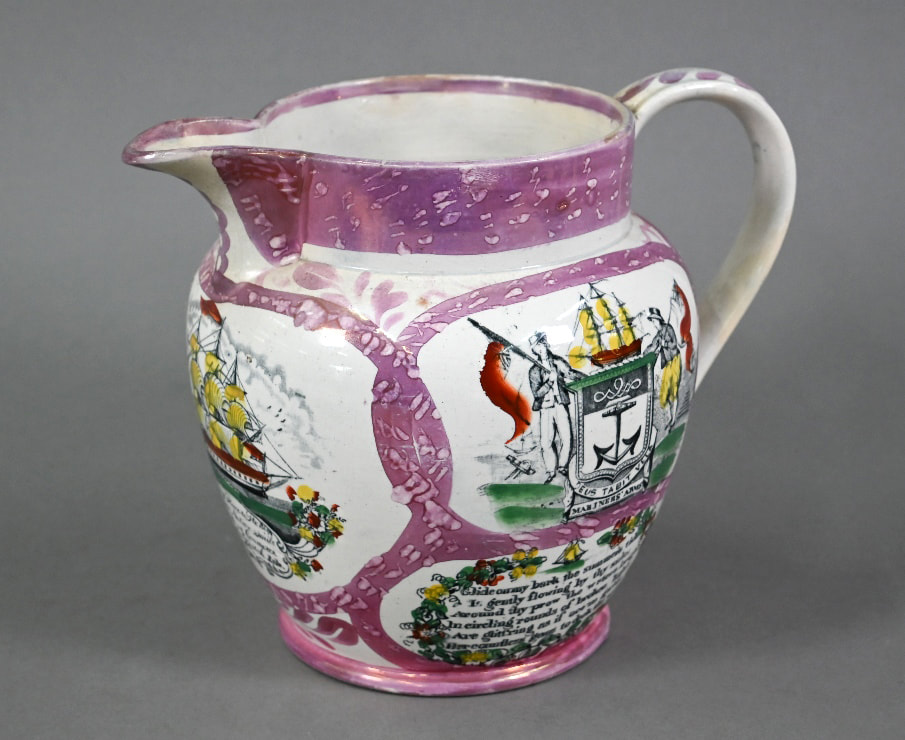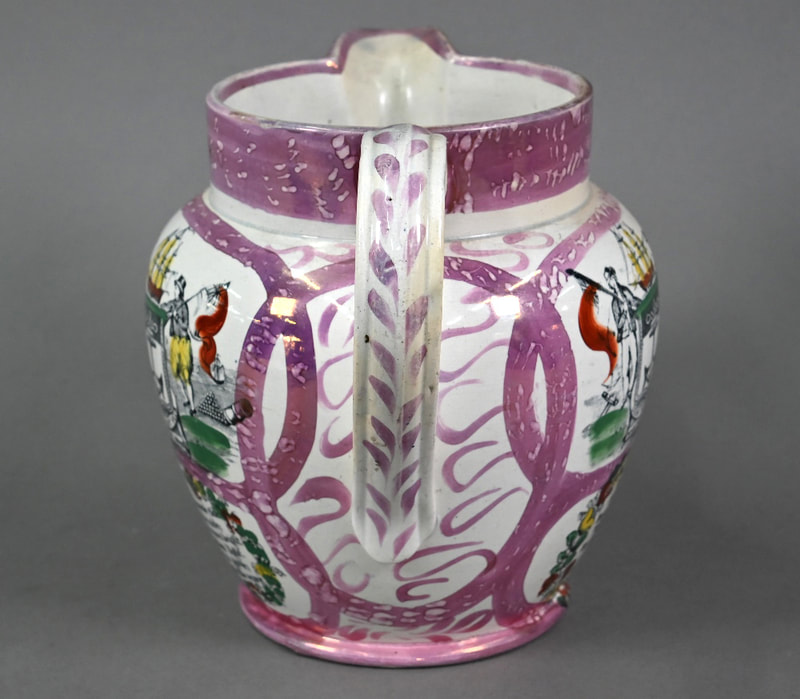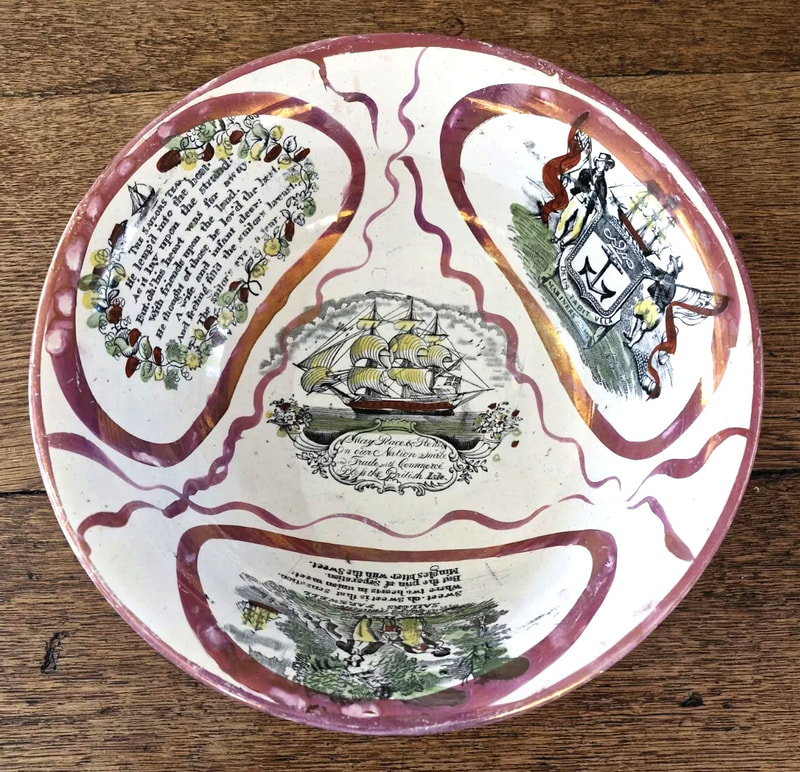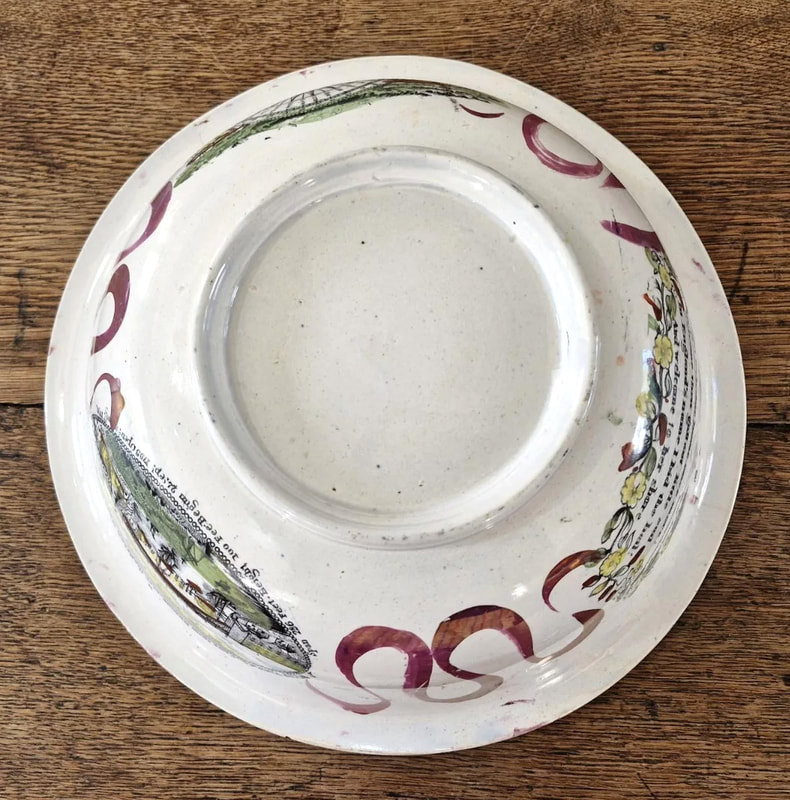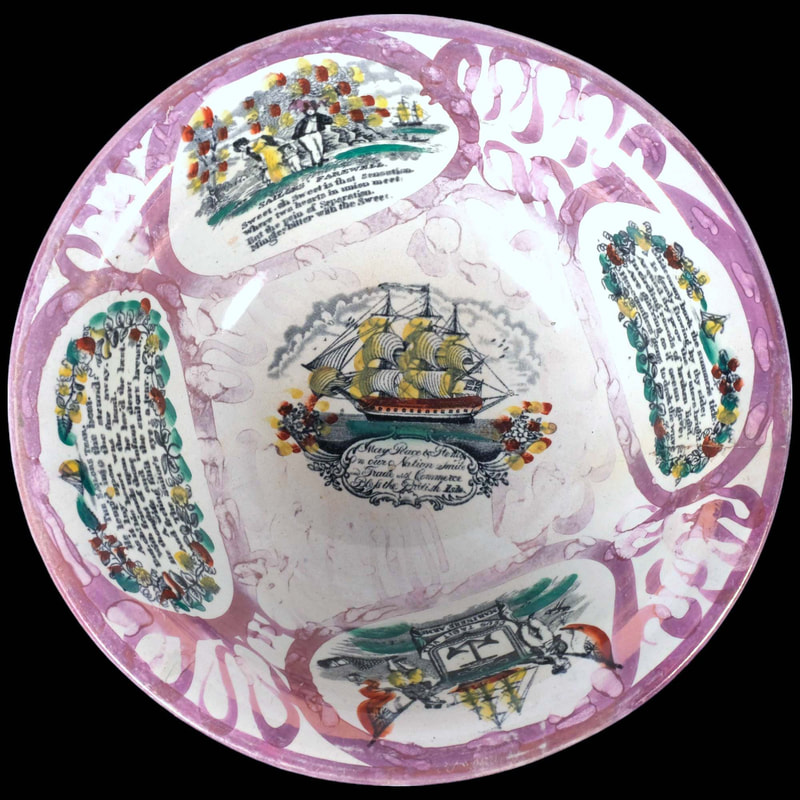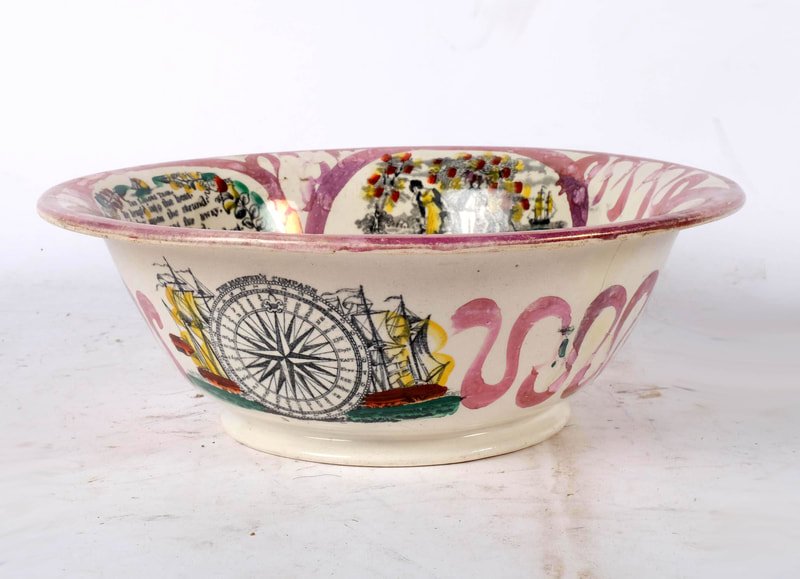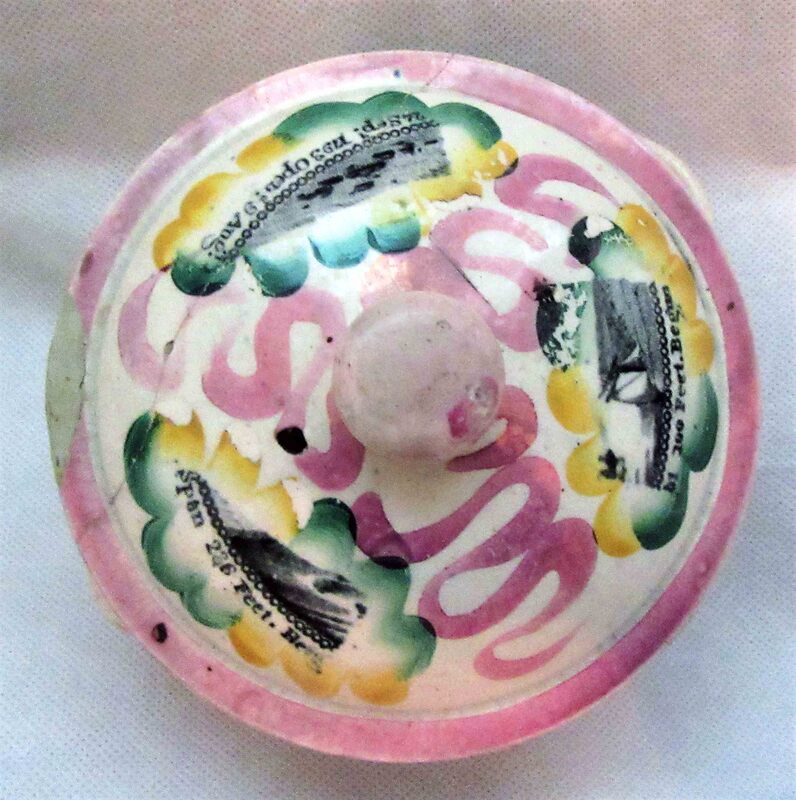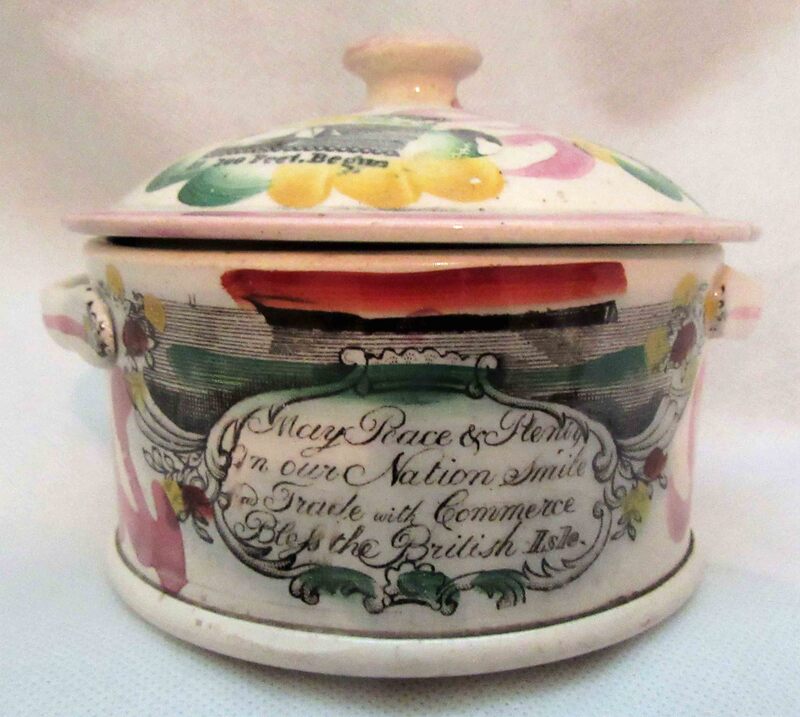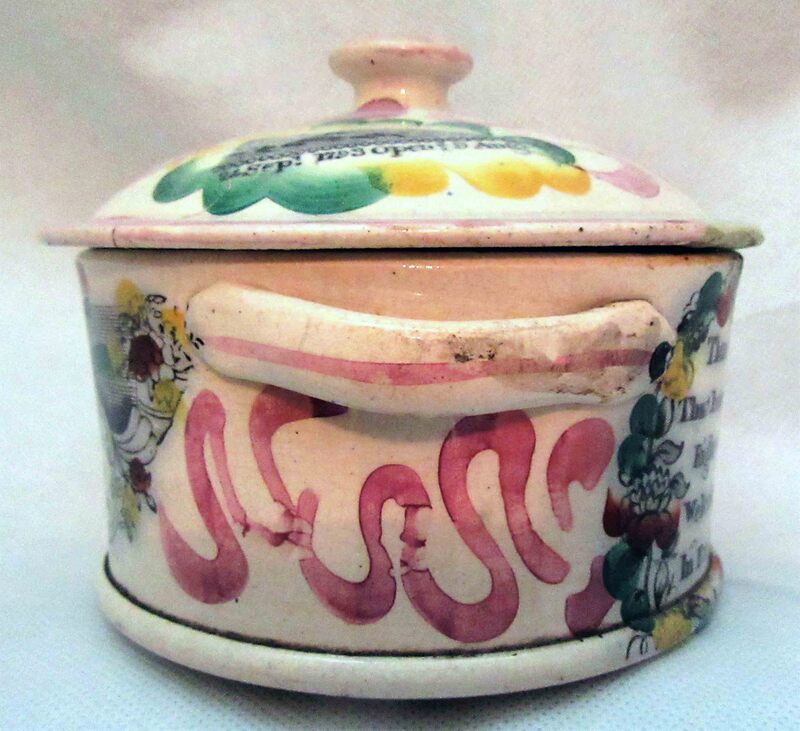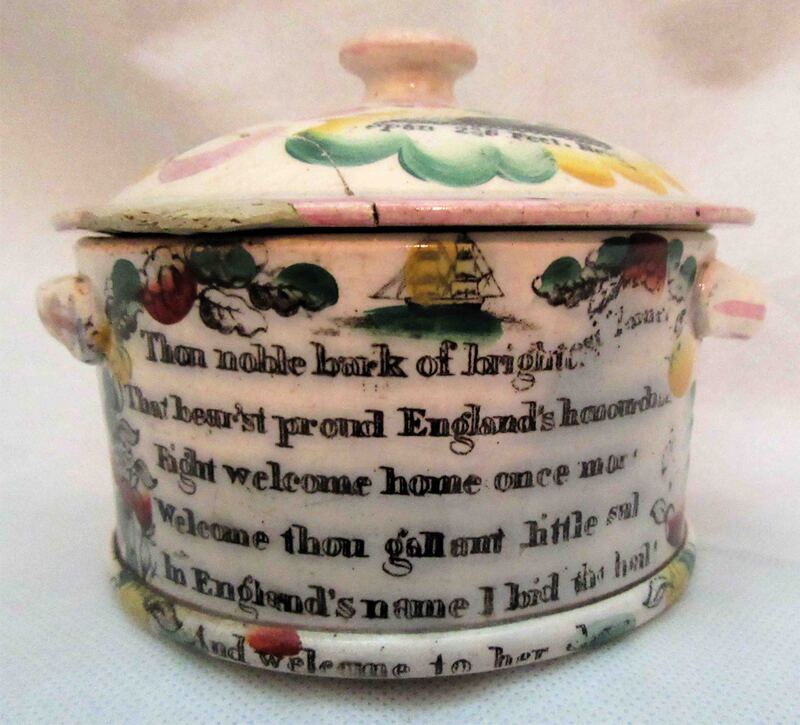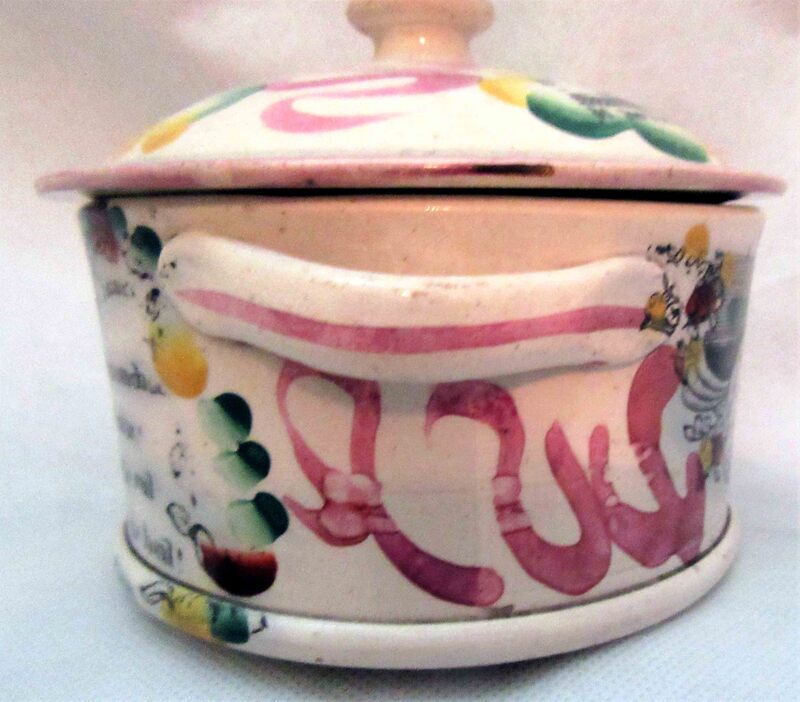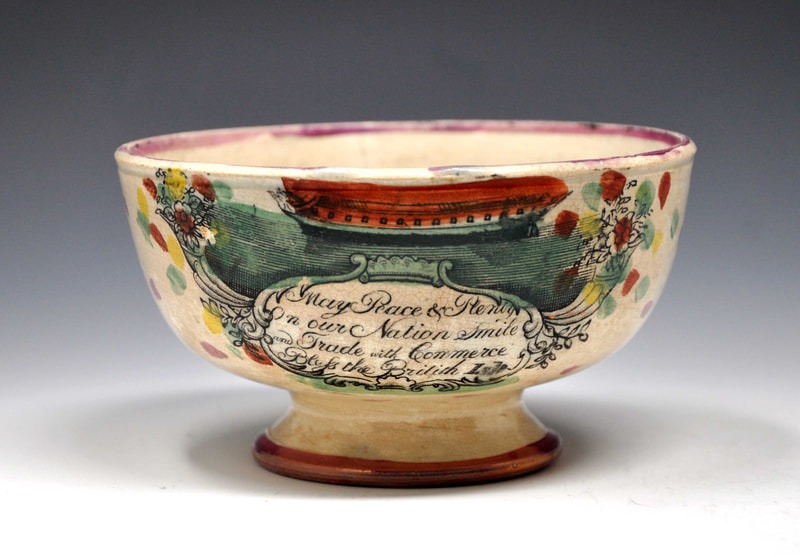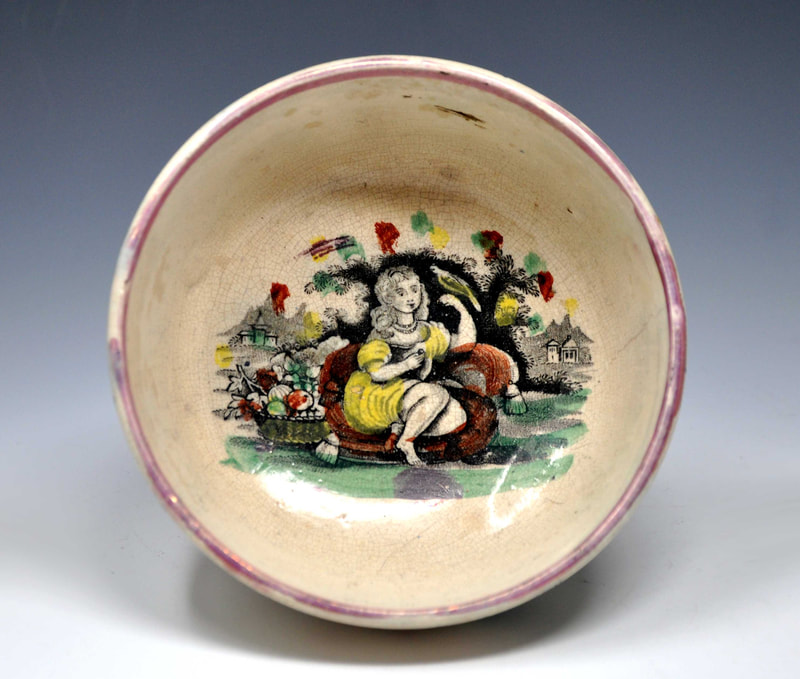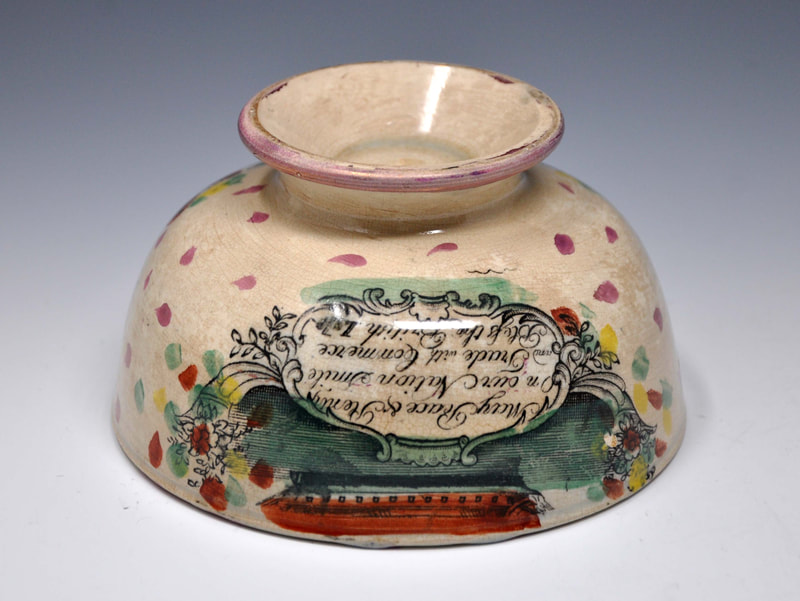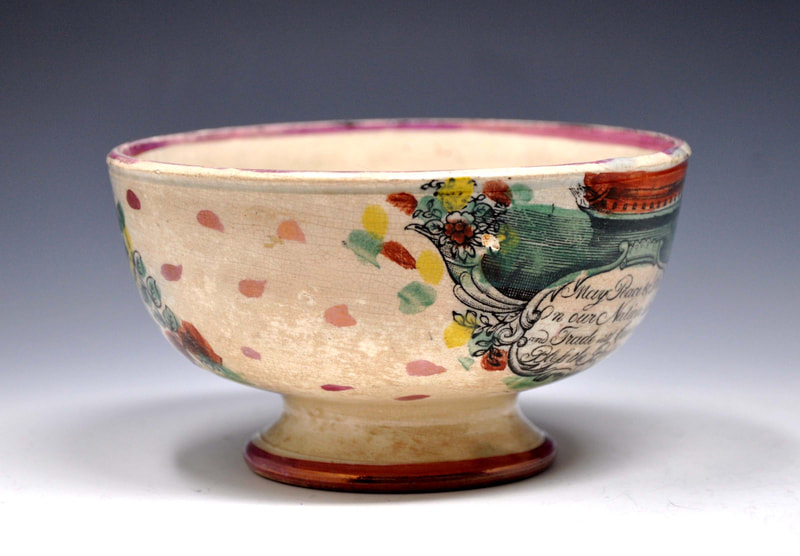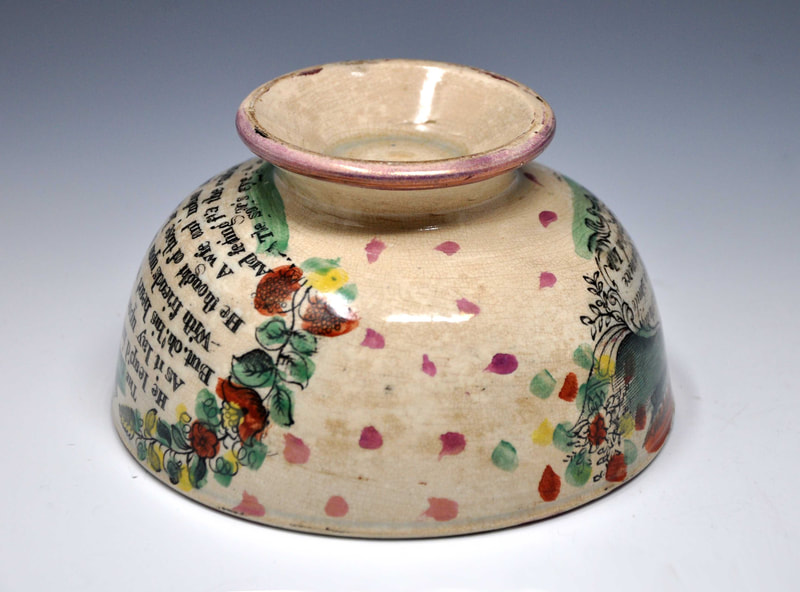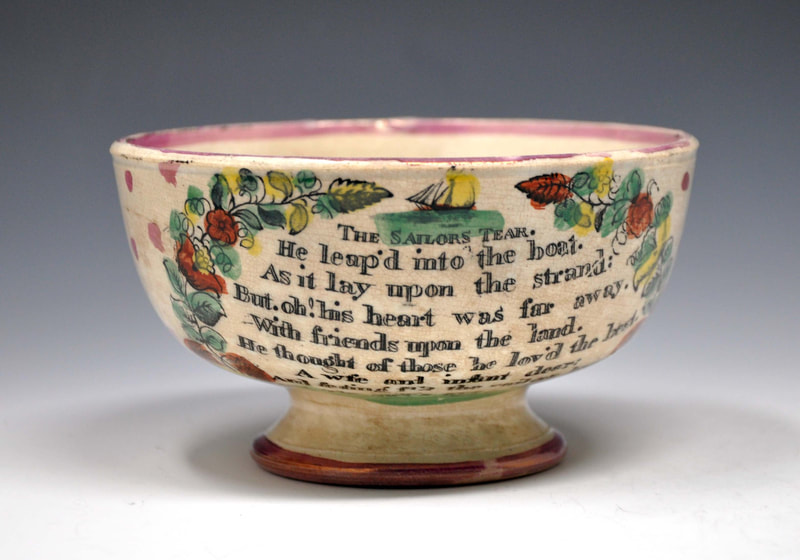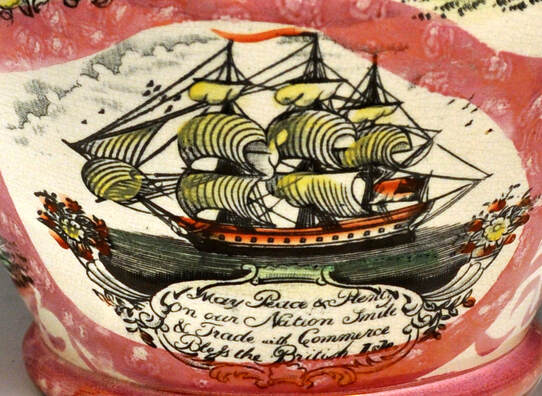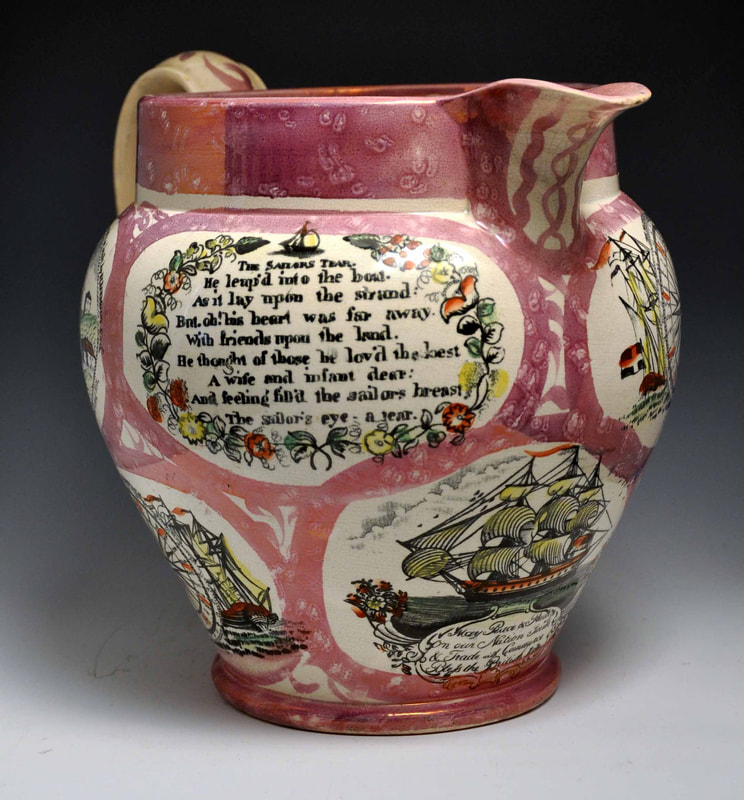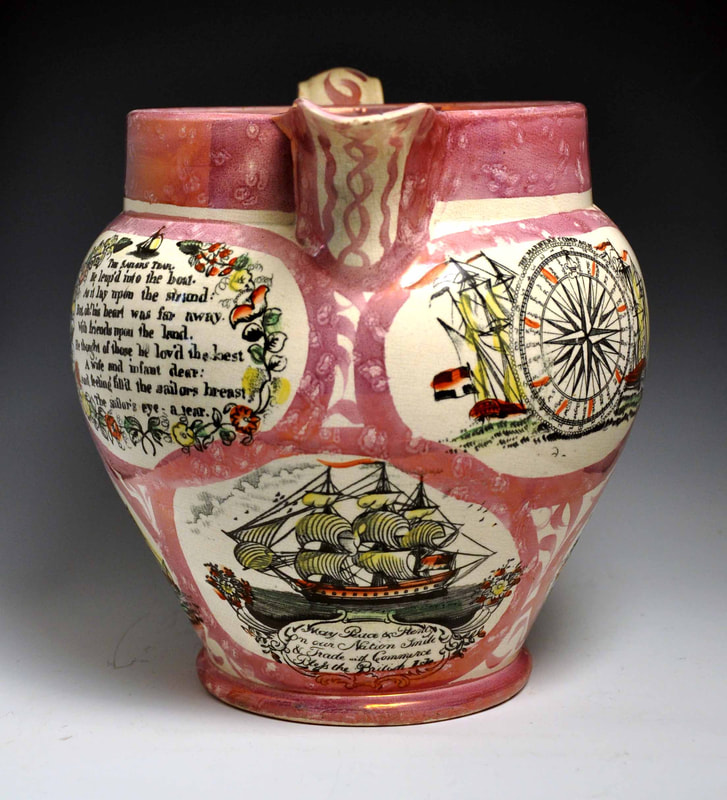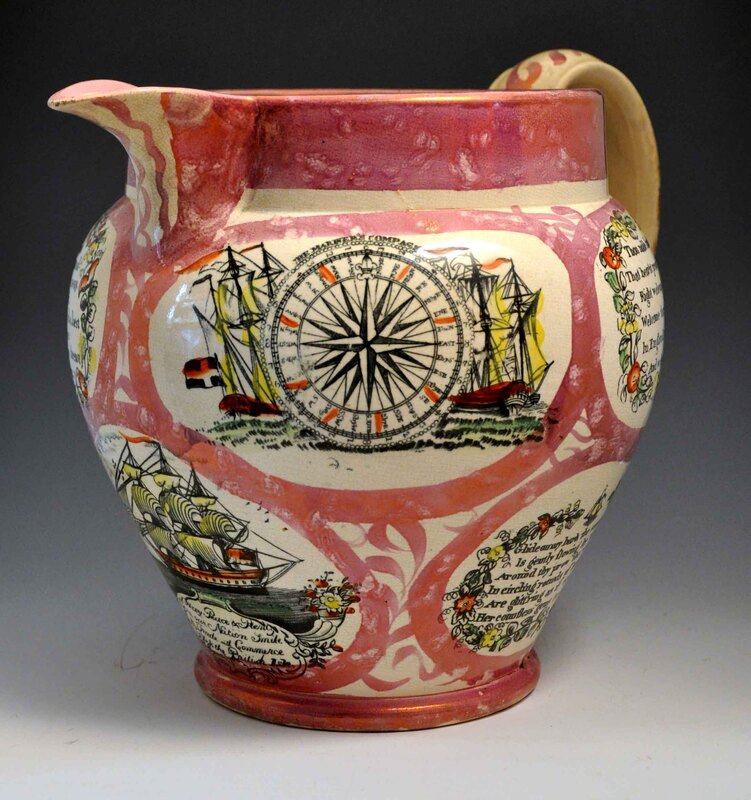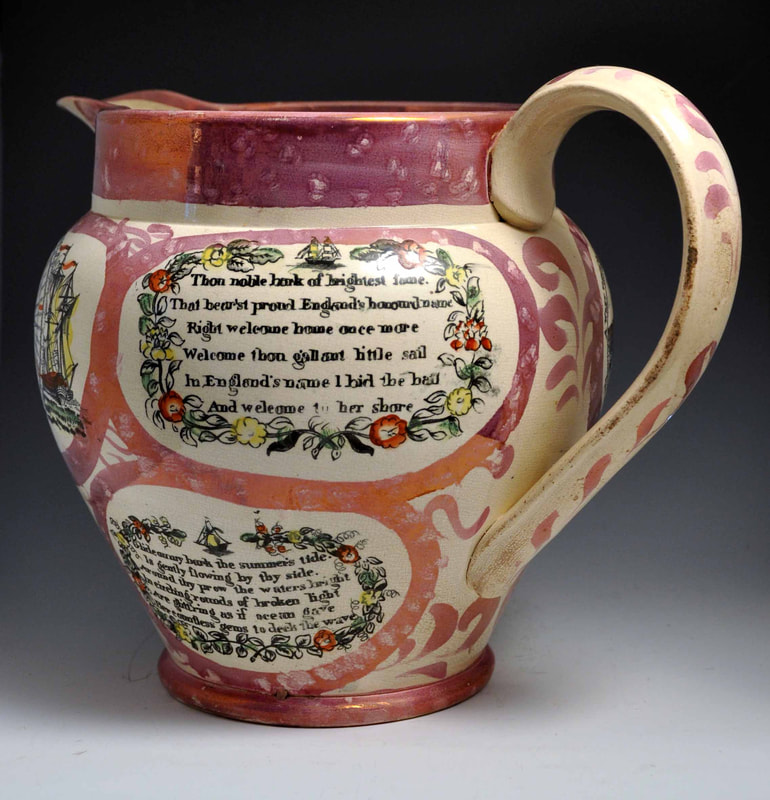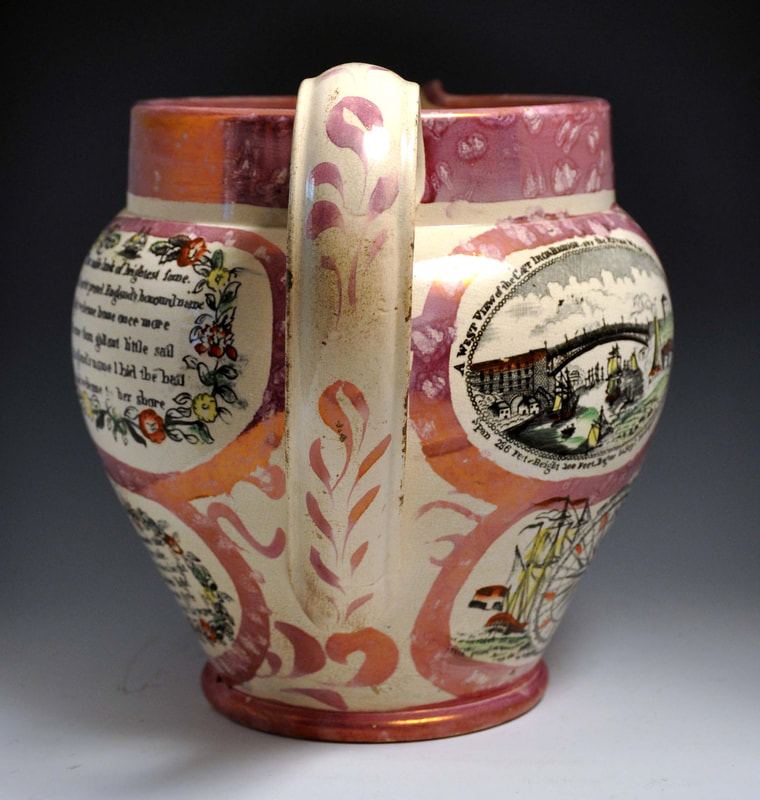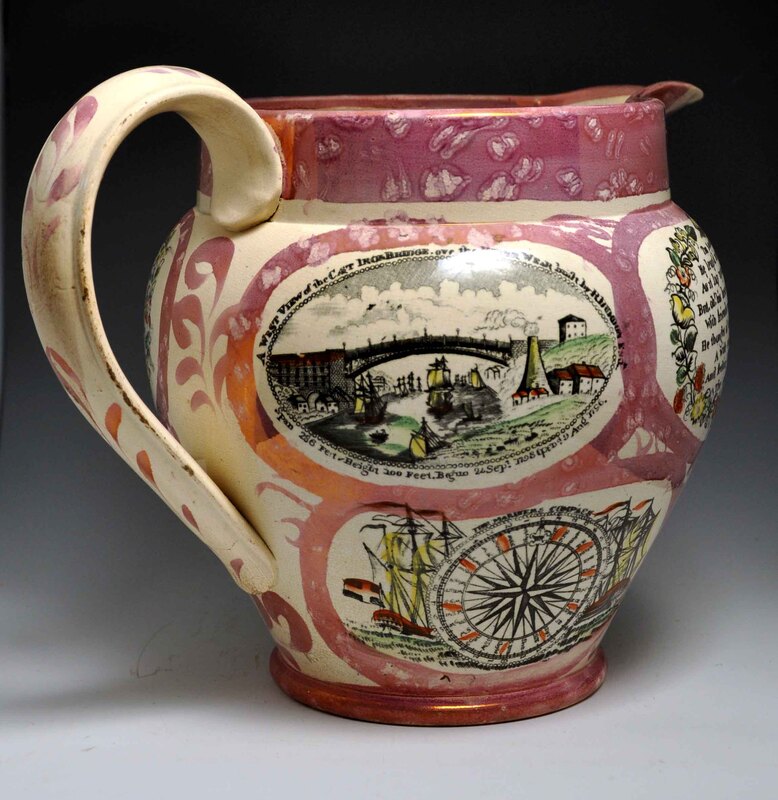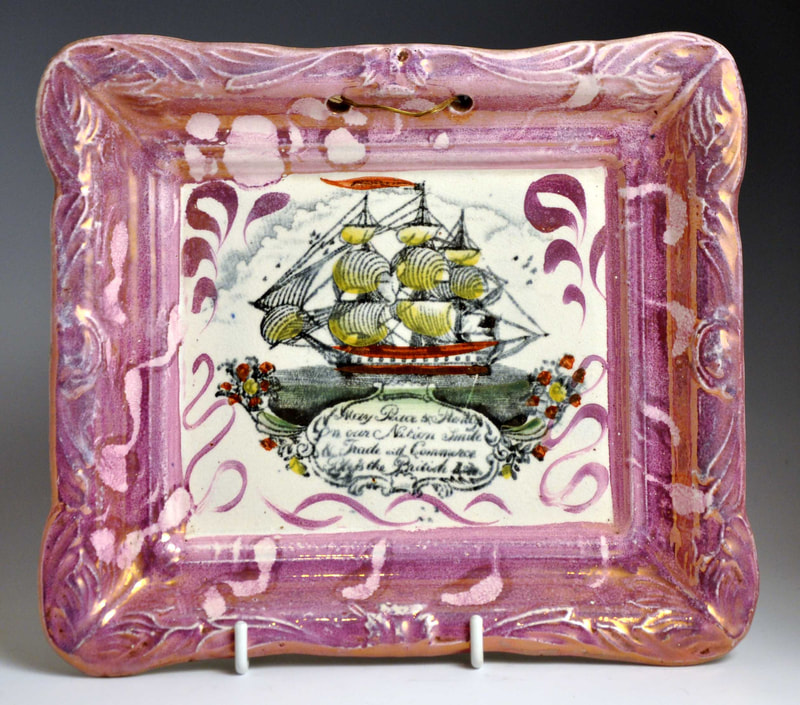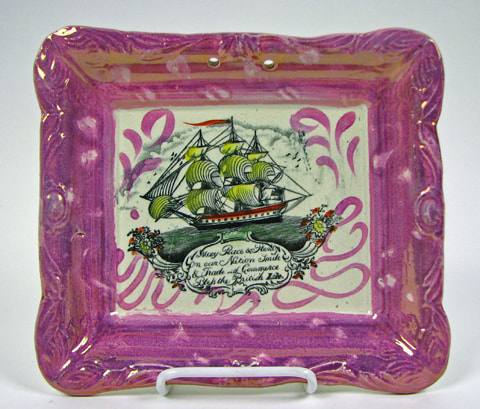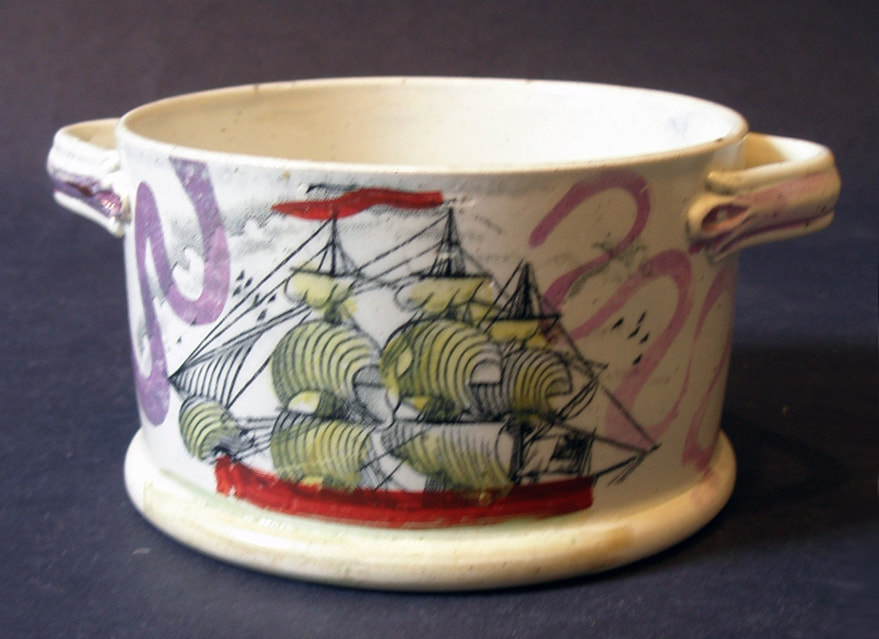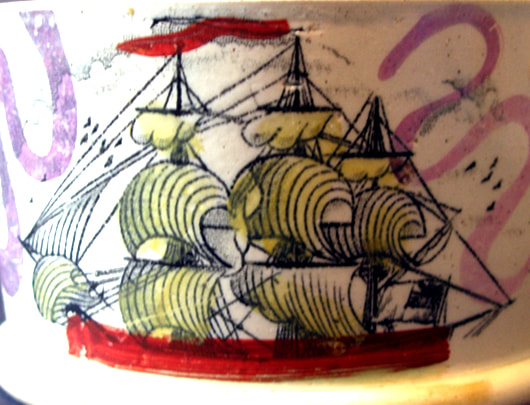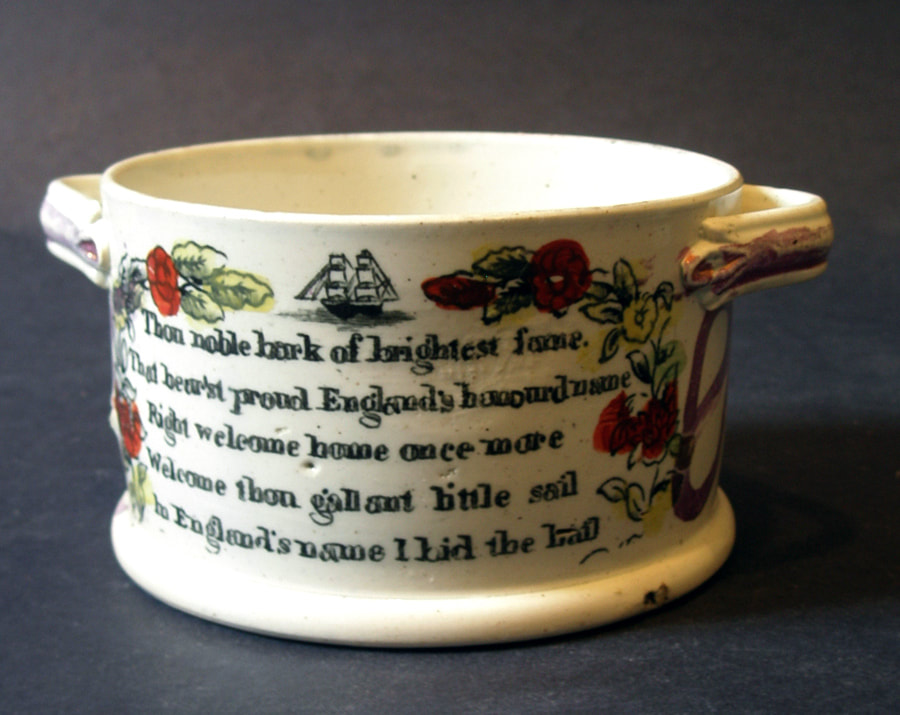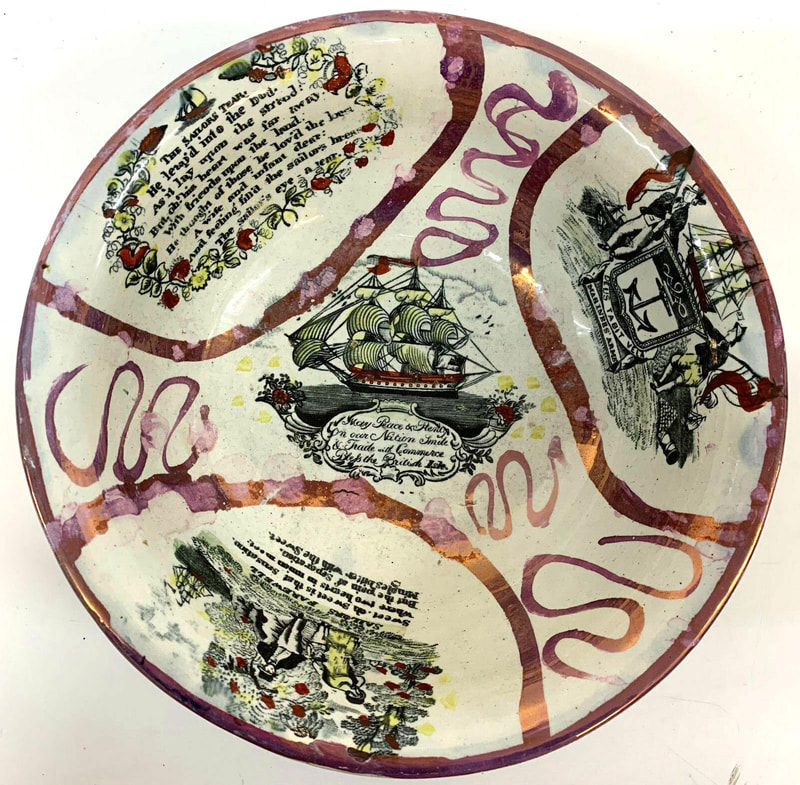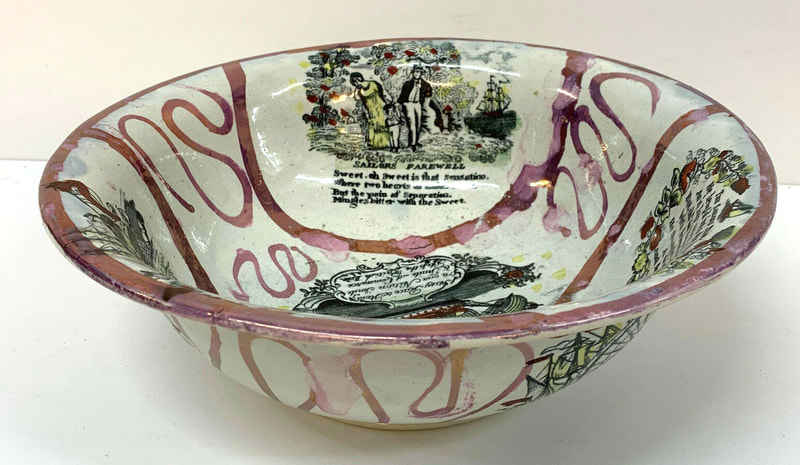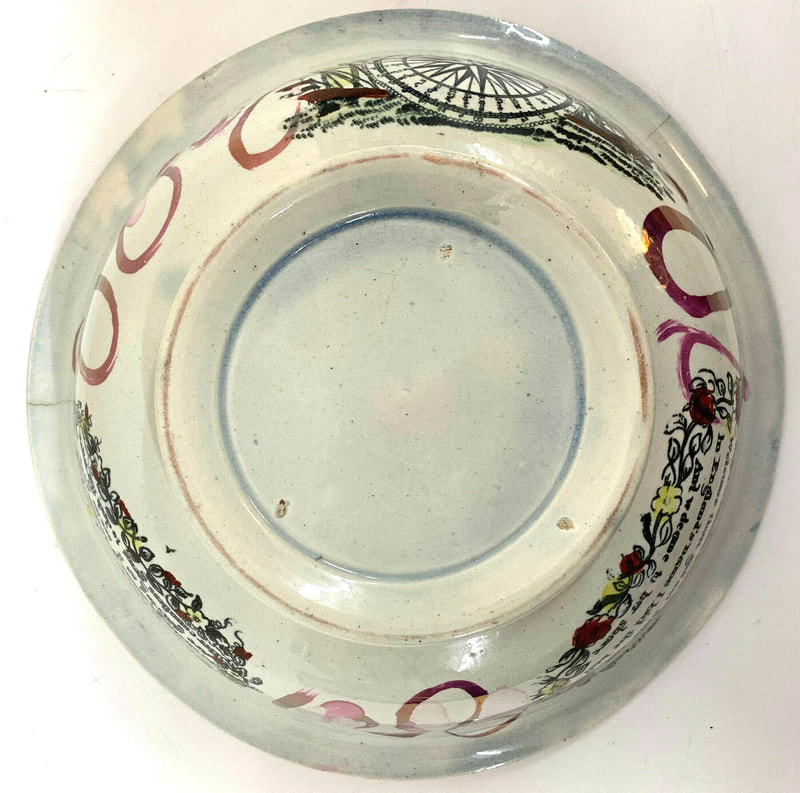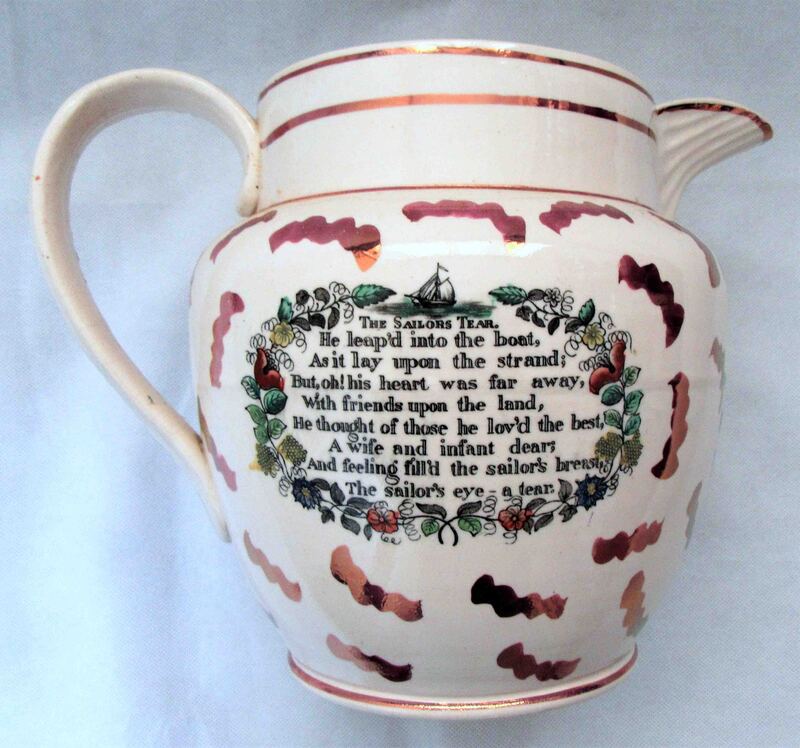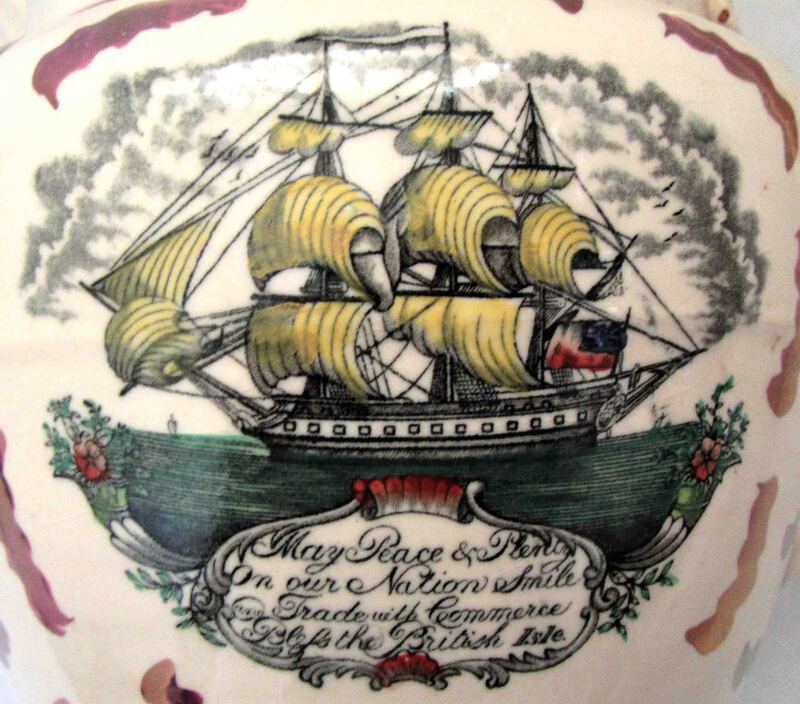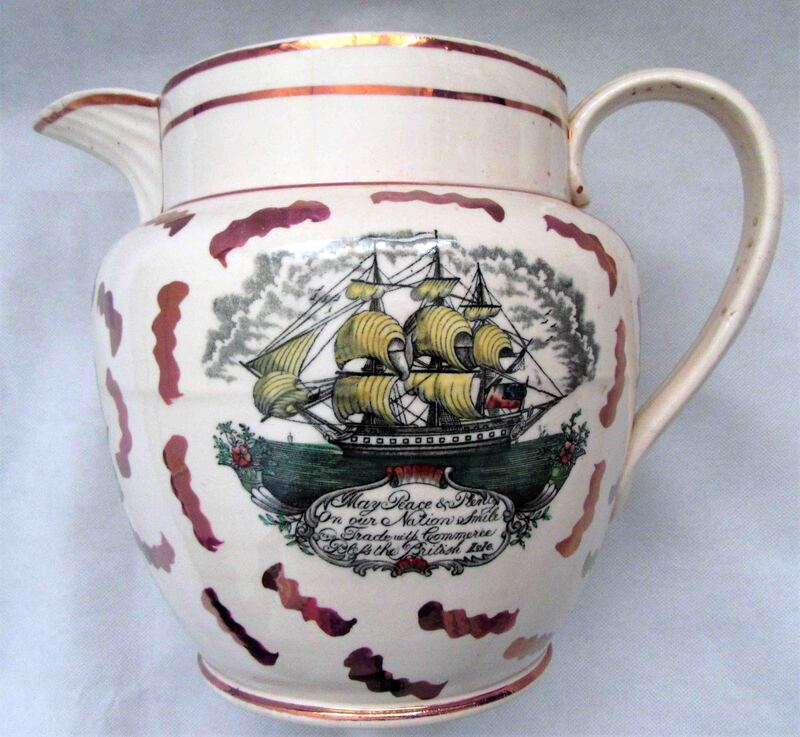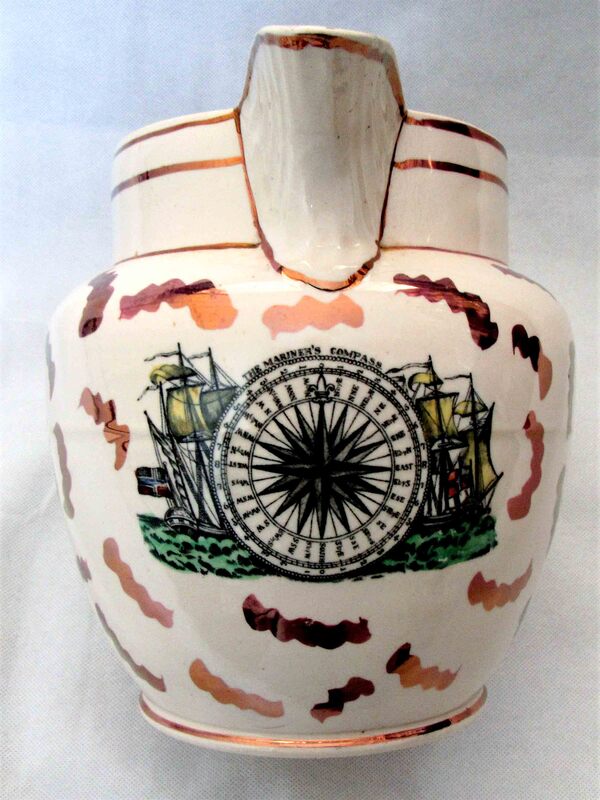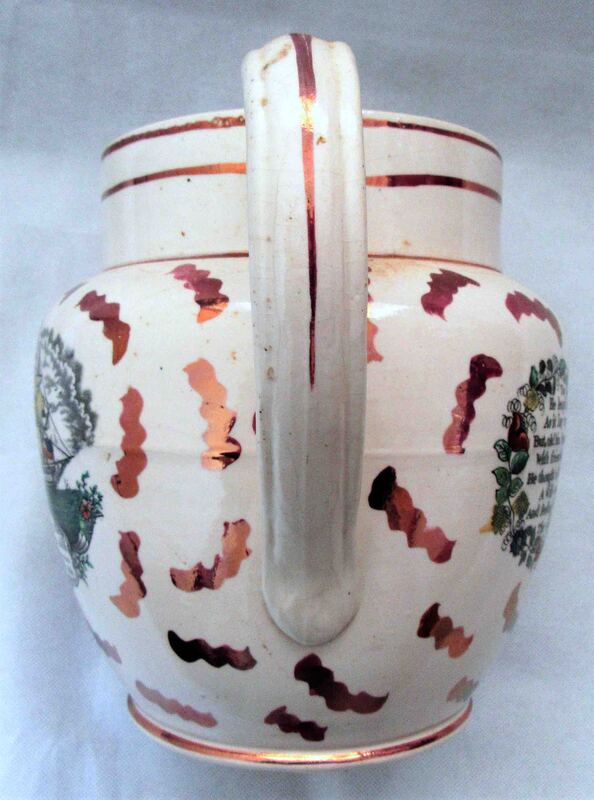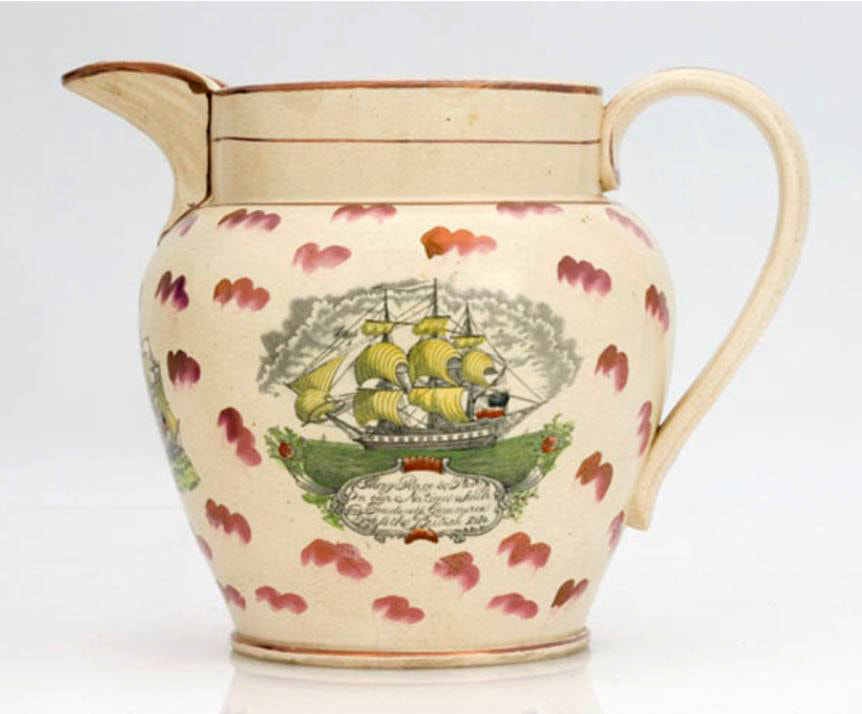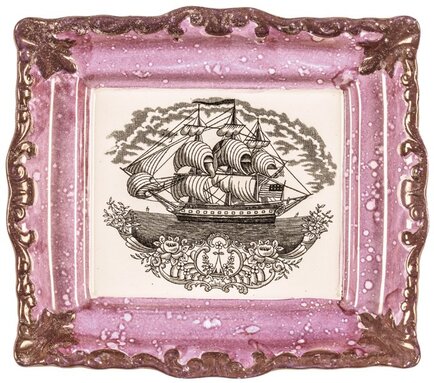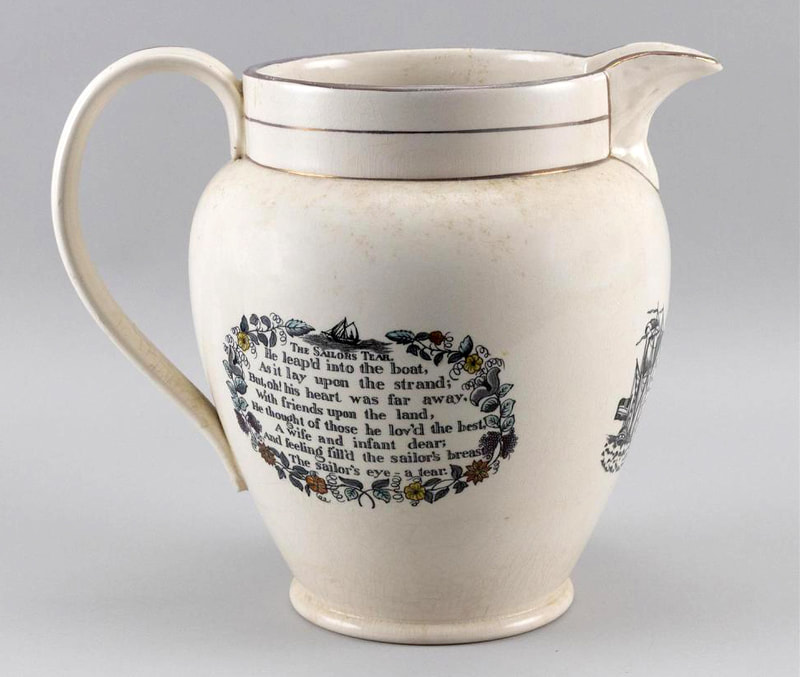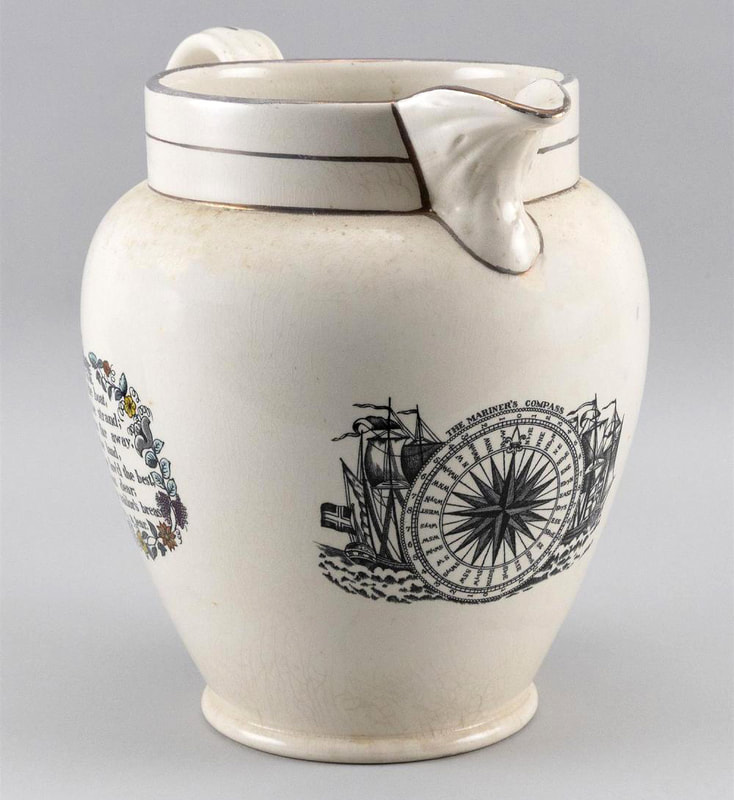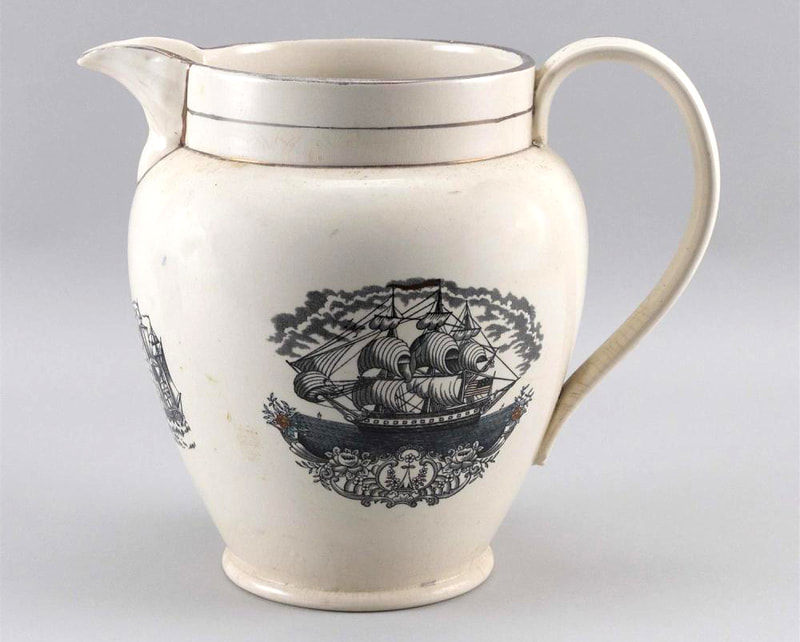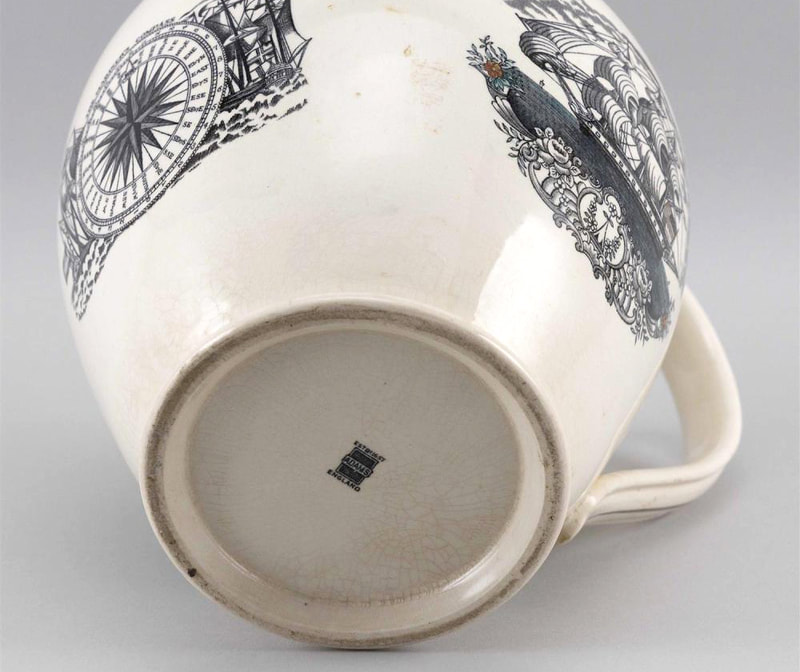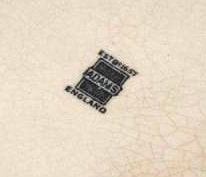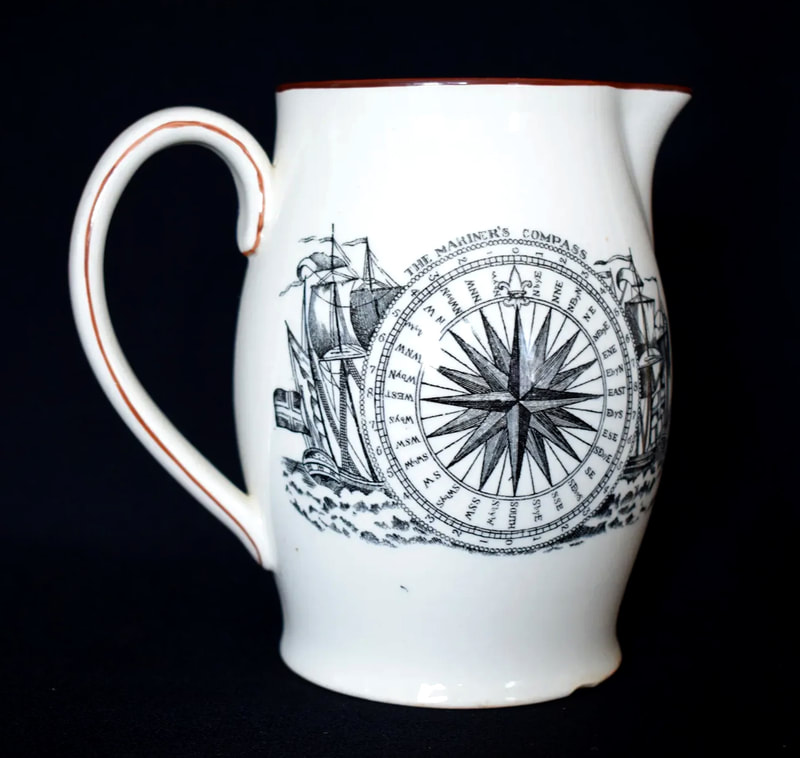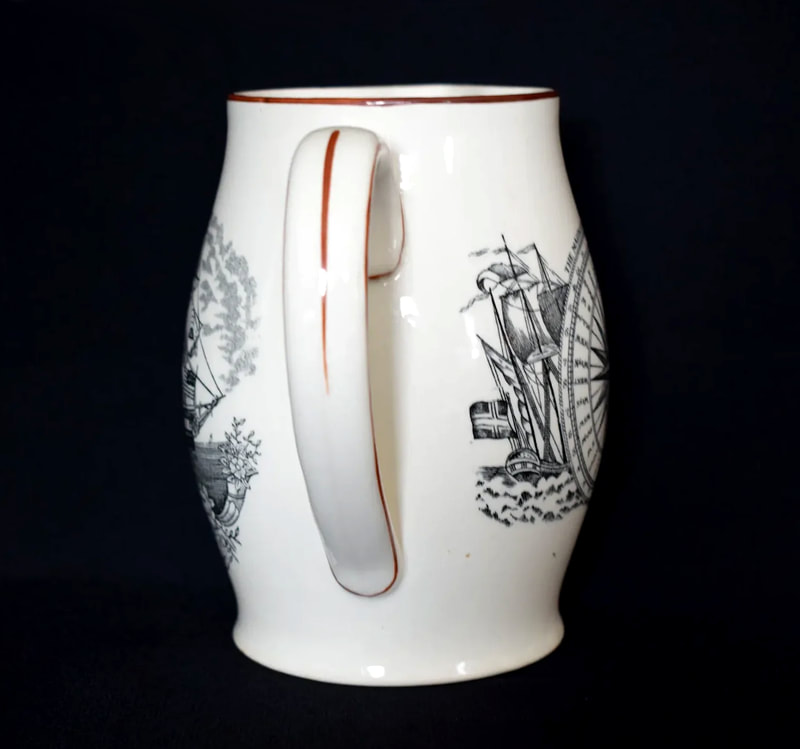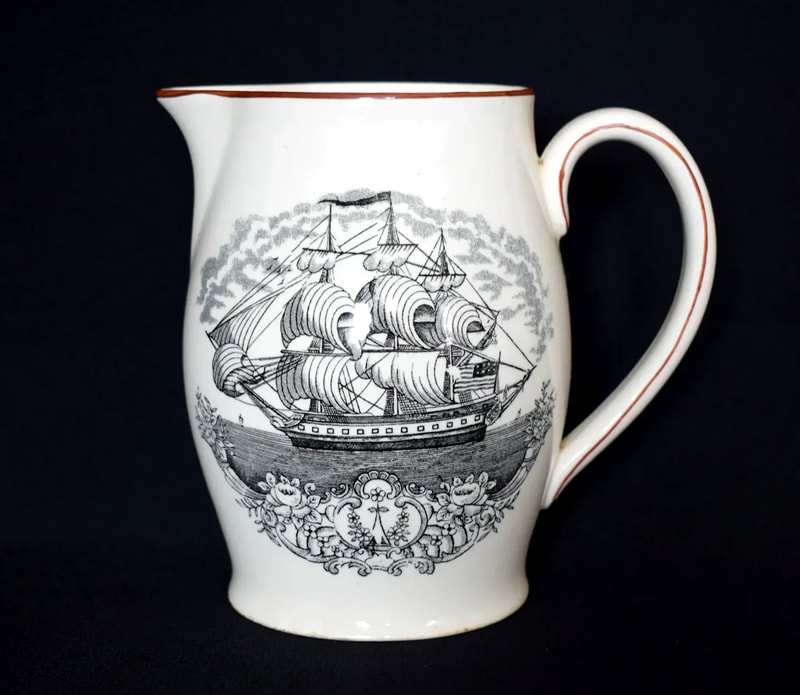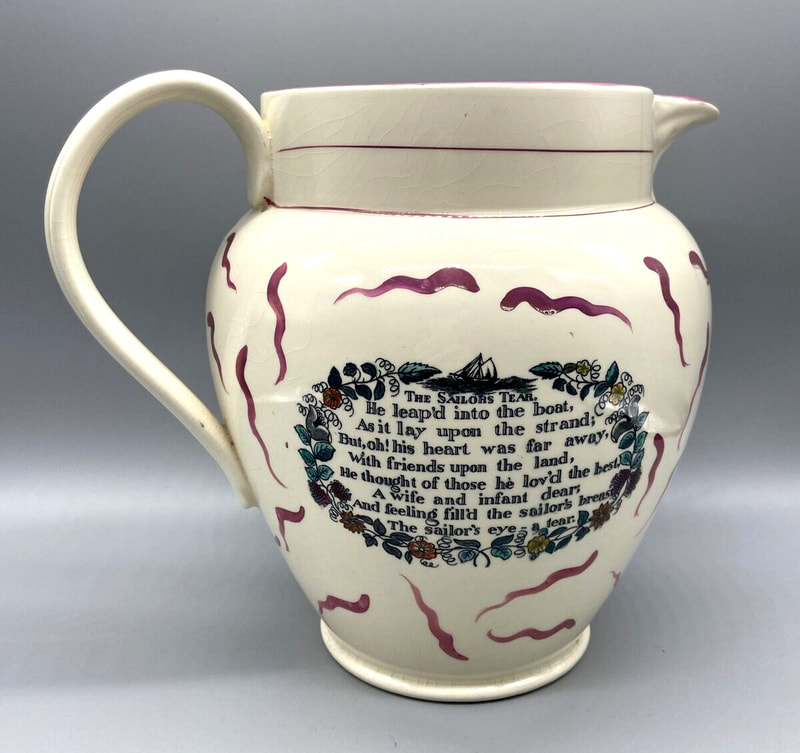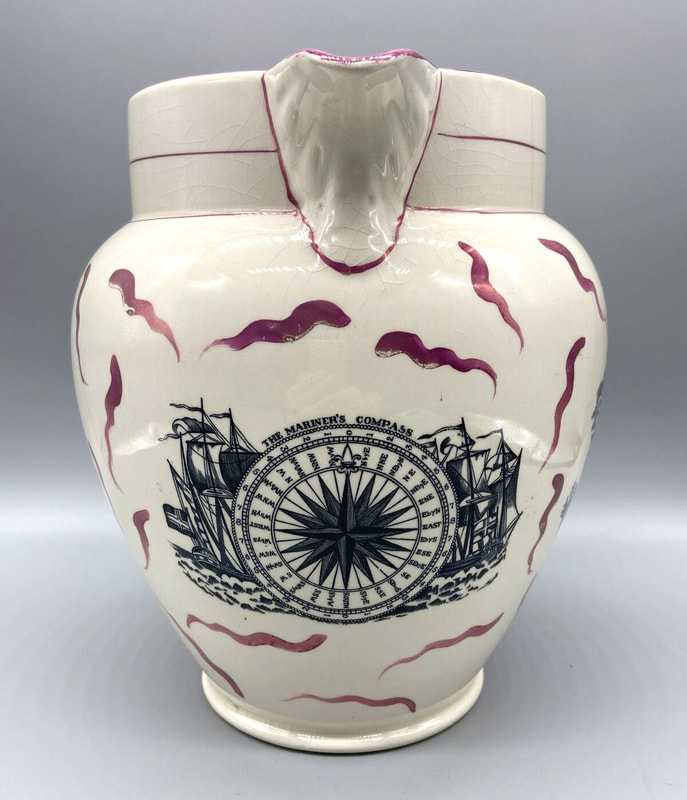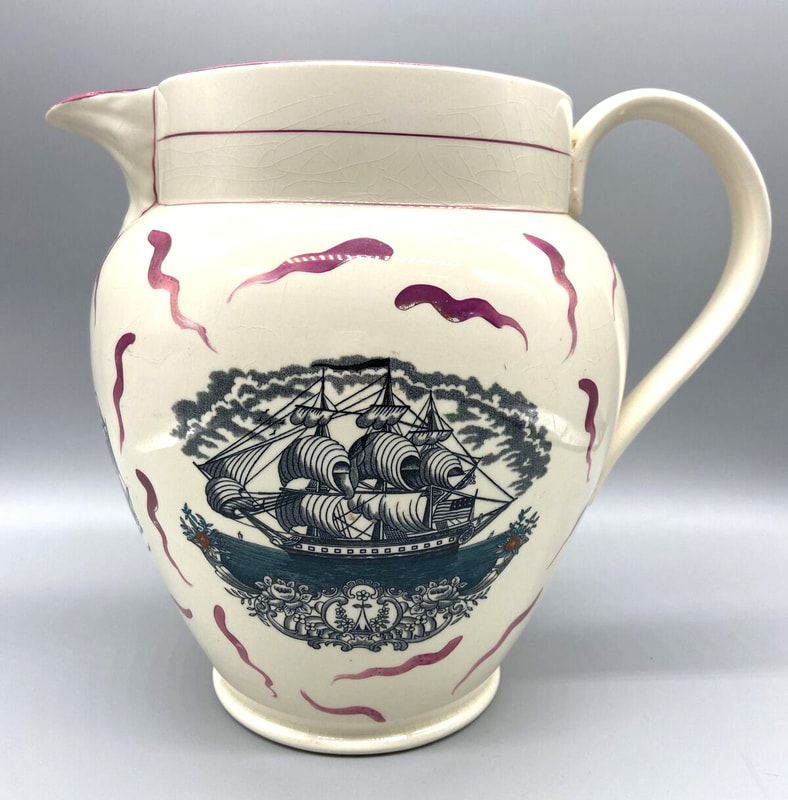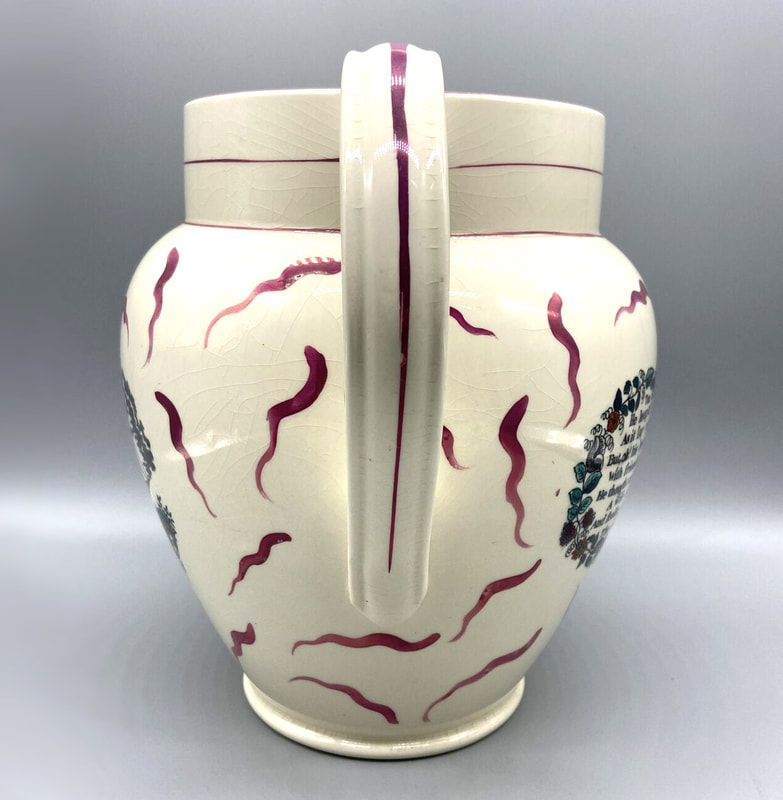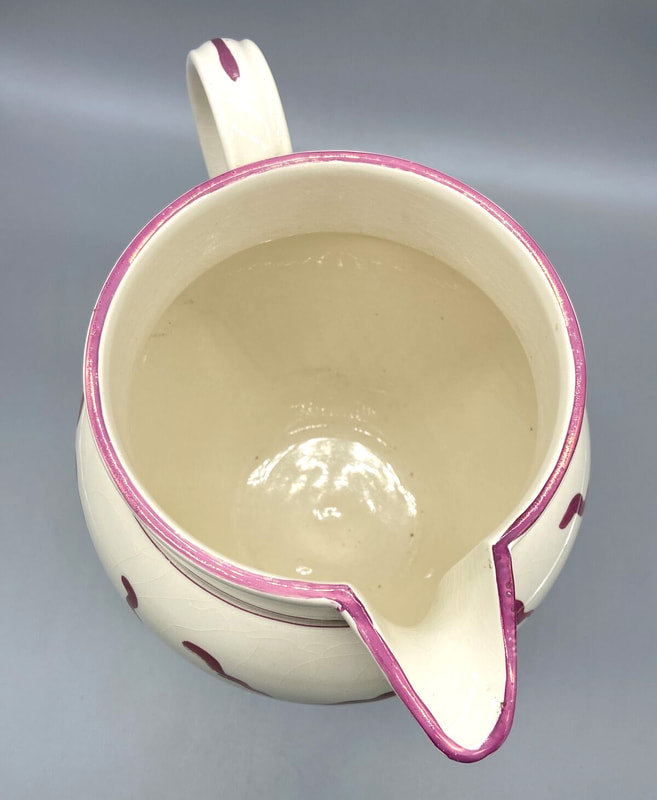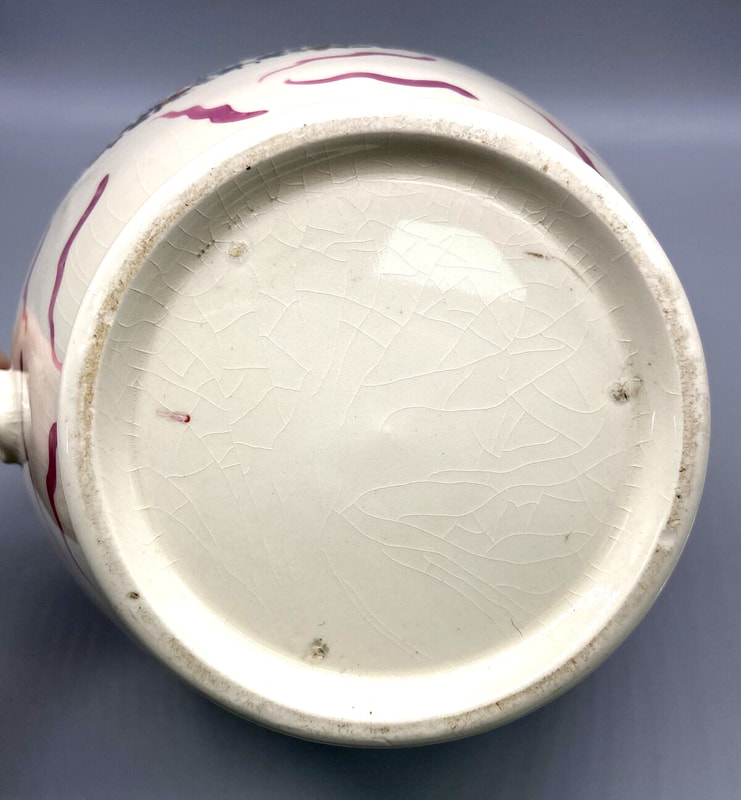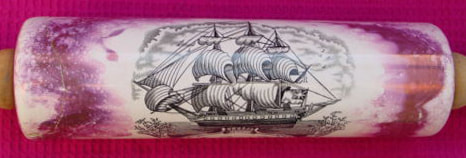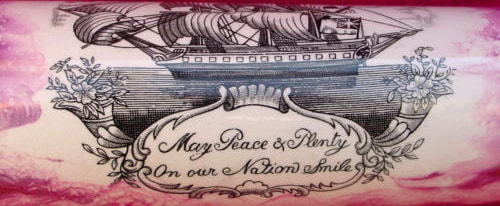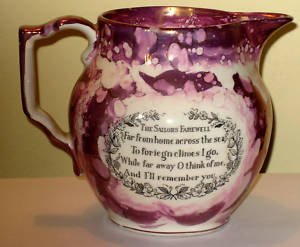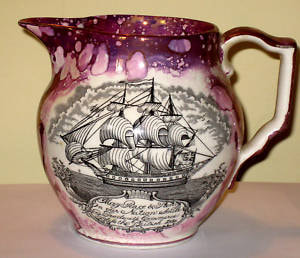May Peace and Plenty – Sunderland
May Peace and Plenty
On Our Nation Smile
And Trade with Commerce
Bless the British Isle
On Our Nation Smile
And Trade with Commerce
Bless the British Isle
Andrew Sanders, Low Ford Pottery
This is, perhaps, the oldest version of this transfer, with a printed mark for Andrew Sanders, Low Ford. The transfer is signed 'WC' for Walter Cockburn (see next section below) Baker gives the dates for Sanders & Co at Low Ford as 1794–97. See here for a bridge transfer with the printed mark Olde Sanders Low Ford Pottery.
Dawson & Co, Low Ford Pottery
|
A monochrome rendering of the transfer on a smaller than average, 10cm tall, Dawson creamware mug (compare it with the example below with coloured over-enamels). This transfer c1800 is perhaps the precursor for many of the items on this page. The subject was popular and continued to be reproduced throughout the 19th century, and into the 20th century by Staffordshire potteries (see below).
The transfer is signed on the right 'WC' for Walter Cockburn, who engraved for both Dawson and Phillips & Co at the Sunderland Pottery. |
An ovoid jug from the Sunderland Museum & Winter Gardens, Tyne & Wear Archives & Museums collection, with the Battle of the Nile transfer. The Battle of the Nile was fought in 1798.
This early version of the transfer has printed marks for 'Dawson & Co Low Ford'. The transfer is paired with bridge 4 on the first jug and bridge 10 on the second.
A jug with slightly different enamelling over the transfer, and a nice crisp imprint.
Below, a typical large, creamware mug with enamels over the transfer, and Dawson frog 2. More typically, these mugs are found without frogs.
Below, the trimmed transfer on a mug with hand-painted flowers and a date inscription for 1815.
Attributed to Dawson & Co, Low Ford Pottery
A monumental punch bowl, 49cm diameter and 23cm high. It has very similar sprigs of flowers to the mug above.
Attributed to Dawson & Co, Low Ford Pottery
A mug with a frog attributed to Dawson.
Phillips & Co, Sunderland Pottery
A Phillips & Co creamware mug with Britannia and the verse, and beneath it another without coloured enamels over the transfer.
The jug below is from the Sunderland Museum & Winter Gardens, Tyne & Wear Archives & Museums collection, and has a Phillips & Co printed mark under the bridge transfer.
Dixon, Austin & Co, Sunderland Pottery
The transfer appears on a jug with a hand-painted inscription dated 1824. The bridge transfer has the printed mark 'Dixon & Co. Sunderland'. The Dixon, Austin & Co partnership ran from 1818 to 1839. Beneath the jug, a tobacco jar with a trimmed version of the transfer.
Below, a small jug from the 1830s with coloured enamels. The transfer has again been trimmed to fit.
Dixon, Phillips & Co – ship
The Garrison pottery used two impressed marks on these plaques. The 'Dixon, Phillips & Co' surrounding anchor mark appears to have been used on items from pre-1850. The 'Dixon Co' mark was used from about 1850 onwards. The plaque with coloroured over-enamels is likely c1860.
Three jugs with inscriptions from the 1850s. Read more about the two styles of inscription here.
A small jug with a hand-painted anchor under the spout.
A wash ewer with the transfer. There should be a bowl to match, but I haven't recorded one yet. Beneath it, a frog mug with a typical 'Dixon' frog, and a slop bowl with the transfer in the centre.
A bowl with Crimean transfers c1855. Typically the transfers on the outside of the bowl are not decorated with enamels.
The enamels and lustre decoration on this jug suggest a later date, c1860.
Dixon, Phillips & Co – verse
Above a plaque with the later Dixon Co mark from the 1850s. The eel pot or butter dish and jug below are likely earlier and have a crisper imprint of the transfer.
A slop bowl with a distinctive tree-like decoration in pink lustre and the later Dixon Co mark from the 1850s.
The yellow enamels over the transfers on the inside of the bowl perhaps suggest a later date, c1860.
A rare tile with the verse. I haven't recorded tiles with any other Dixon transfers.
Newbottle High Pottery
The Newbottle attribution for this transfer is convoluted, and relates to pottery items donated by descendants of the owners to the Victoria and Albert Museum. Read more here.
For many years I believed that the copper plate moved to Moore's because of the similarity of these brown-bordered plaques (below) to those made by the Wear Pottery in the 1860s. However, recent discovery of a Sunderland Bridge plaque signed by a Newbottle potter, shows these items were more likely made at Newbottle High Pottery.
This is the item, other than plaques, on which I've seen this Newbottle version of the transfer. The transfer of the man in the centre is also a copy of those found in Garrison Pottery chamber pots.
May Peace and Plenty – Tyneside
Unidentified pottery
A creamware mug, c1815, from an unidentified North East pottery, perhaps Tyneside.
Unidentified Tyne pottery
The decoration on this jug is similar to that used by Robert Maling. However, I haven't managed to trace these transfers on other items from that pottery. The verse has an anchor above it. The jug below, with the same transfers, appears to have misfired.
Galloway and Atkinson, Albion Pottery, Newcastle
The short lived partnership of Galloway and Atkinson c1864 at the Albion Pottery (on the Maling's old Ouseburn Bridge site) produced two variations on the subject, which appear on circular and rectangular plaques.
Attributed to Middlesbrough Pottery
I've included a brief diversion South into Yorkshire because of the similarity of the 'Middlesbrough' transfer to the G&A version above.
This transfer is attributed to Middlesbrough on account of a similar rolling pin inscribed 'A present from Middlesbro' (see below).
Attributed to John Carr & Sons, North Shields or Ball's Deptford Pottery
The plaques below have the Albion Pottery transfers. The plaque form below is associated with North Shields. However, it is possible that the Carr plaque mould and the G&A copper plate ended up at Ball's Deptford Pottery, where lustre items continued to be made into the 20th century.
Attributed to Carr and Patton, North Shields
A variation of the verse attributed to North Shields.
Attributed to Thomas Fell, St Peter's Pottery
This bowl is attributed to Fell on the basis of the untitled ship transfer, which is found on items with the crown impress known to have been used by Thomas Fell. The bowl has an impressed LONDON mark, used by various Tyneside potteries. The wavy lustre decoration is very similar to that used by John Carr, so more work needs to be done on this attribution. Also, note that the Mariner's Compass has the initials 'JH' underneath, likely for a potter called John Hobson (see below). With so many Tyneside potteries producing similar wares, it may never be possible to fully iron out these attributions.
Again, received wisdom is that the plaques below were made by John Carr & Sons. The lustre decoration and enamelling is identical to that found on Carr-attributed items below. It could be that the pot painter worked for both potteries, or that the transfer plate moved between potteries at some point, or perhaps more likely, that the 'Carr' transfers below should also be attributed to Thomas Fell.
The distinguishing feature of the 'Fell' version of the May Peace and Plenty transfer, is that there are many seagulls to the right of the ship. The lidded pot below has very similar decoration to the items above. Ian Holmes has questioned whether the lid started life on this pot, or whether they are a later marriage. It has the last line of the Thou noble Bark transfer cut up into three pieces. If it is right, it would give us another verse to add to this 'Fell group'.
A large jug with the 'Fell' version of the transfer. It again has the Mariner's Compass transfer with a greyed out 'JH' beneath the compass.
A similar monumental jug with an old blacksmith's repair to the handle.
Unidentified pottery – John Hobson
This version also has many seagulls to the right of the ship, appears sometimes in blue on plaques, or in mirror image with no seagulls. It is similar to the Fell version (left below) although clearly comes from a different transfer plate. Note the 'd' in the word 'and'.
The transfer appeals on bowls with the impressed mark 'J.H' underneath a Staffordshire knot (the North East potters sometimes appropriated this Staffordshire mark). There is a printed mark, JH under the mariner's compass transfer.
Attributed to John Carr & Sons, North Shields – plate 1 (Dixon, Phillips & Co transfer)
This is the Garrison – Dixon, Phillips & Co – transfer above. The transfer plate was apparently acquired by John Carr (along with others) after the pottery closed in 1865. There are 5 seagulls to the right of the ship. Note also the word 'and' on the second line with the lower case 'd' arching over the whole of the word.
The imprint on the bowl below is faint, but appears to be from the same plate as the jug above. The enamel decoration (clobbering) is and wavy lustre decoration are very similar to the Fell-attributed items above.
Details below showed how imprints from the copper transfer plate changed over time. The first row of details are from an 1840s' plaque, impressed Dixon, Phillips & Co. The second row, from the large jug above, and the third from the bowl (I have turned up the contrast on the images to aid comparison). The fourth row shows an imprint from the copper plate after it had been substantially reengraved. Things to note... as mentioned above, the 'd' in 'and' loops around the word in the earlier imprints (see left details). By the time the plate is reengraved, this detail is lost. Also, the 'y' in 'Plenty' has a looped tail in the earlier imprints (see right details). when the bowl was printed (third row), the lower half of the loop had worn away. So when the plate was reengraved, the loop was lost. The middle details show how the seagulls to the left of the ship, and the small sail on the horizon, changed over time. It is possible that rather than re-engraving the Garrison copper plate, they transfer printed the worn plate onto another piece of copper, and the engraver used the printed trace to cut out a new plate. That might, for instance, account for the differences in the cloud formations in the centre details.
Attributed to John Carr & Sons, North Shields – plate 1 (after re-engraving)
Below, imprints from the copper plate after substantial re-engraving. See above for details.
Below, a similar, larger jug with two rows of transfers. Interestingly, this version of the May Peace and Plenty transfer appears with the Mariners' Arms with the misspelt motto 'Deus Tabit Vela' (instead of 'Deus Dabit Vela' – God will give sail). The misspelt Mariners' Arms also appears in conjunction with the plate 2 version below.
Two unmarked washbowls with the re-engraved transfer. The wavy lustre decoration to the outside of the bowls is very similar to the Fell-attributed washbowl above.
An eel pot or butter dish with the lower half of the transfer. See another below with the upper half with the ship.
A small pedestal bowl again with the lower half of the transfer.
Attributed to John Carr & Sons, North Shields – plate 2
This version of the transfer has an ampersand in the third line of the verse. It has 5 gulls to the right (NB there is a speckle in the glaze that looks like a 6th gull in the image above!).
This plaque form is attributed to North Shields, and has the ampersand version of the transfer. The lustre decoration is very similar to that found on the Fell transfer above.
An eel pot or butter dish with the top half of the transfer.
An unmarked bowl with similar lustre decoration to the pot above. Note again, the bowl has the misspelt motto under the Mariners' Arms.
May Peace and Plenty – Staffordshire reproductions
Adams Pottery, Staffordshire – version 1
These Adams items, although around 100 years old and antiques in their own right, are technically reproductions. The yellow enamelling over the sails is reminiscent of late Dixon wares from the 1860s. Dixon did on occasion use similar lustre decoration and made jugs with fluted collars. However, although the May Peace and Plenty transfer is close to the Dixon version, there are only four seagulls to the right on this version. The jug has a ridge running around it, suggesting that it was moulded, rather than turned on a wheel. A second jug shown beneath it with similar decoration.
Adams Pottery, Staffordshire – version 2
On this Adams' version, the ship is flying an American flag. My best guess is that these items were made between 1914 and 1930. See more examples here.
The second jug below has lustre squiggles, very similar in quality to the 'version 1' jug above. Both jugs below are unmarked.
Gray's Pottery
The items below were likely from the 1950s. You can read more about Gray's Pottery here. The rolling pin has just the first two lines of the verse.
